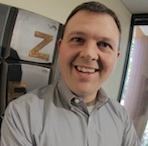If you’re a media professional who would like to contribute a guest blog, just drop me an email with your pitch idea at authorhamlett@cs.com and await further instruction on how to submit. Note: We do not accept spam queries. If it’s apparent you’re not familiar with the site or its target readership, your query will be deleted.
Looking for a specific topic or author? Simply type in your search term in Edit/Find On This Page. For Chrome users, go to the upper right corner of the screen, click the three horizontal bars and go to Find. You can also visit the topics/authors index tab, locate the month in which the blog appeared, then return to this page and put the month/year into your search.
SEPTEMBER 2015
“How To Increase Employee Engagement on ‘Dirty Jobs’”
From the Desk of Dana Barker Davies
 Keeping employees positively engaged and motivated as time goes by is a challenge in itself, but it’s even harder for members of staff who are doing all the elbow-grease work. At the best of times a promotion, an increase in salary and a slight shift in the duties is enough to help an employee’s productivity go back to the desired level. However, due to the nature of their work, people at thankless jobs hardly benefit from the opportunity to get a promotion, increase in the salary or shift in their duties.
Keeping employees positively engaged and motivated as time goes by is a challenge in itself, but it’s even harder for members of staff who are doing all the elbow-grease work. At the best of times a promotion, an increase in salary and a slight shift in the duties is enough to help an employee’s productivity go back to the desired level. However, due to the nature of their work, people at thankless jobs hardly benefit from the opportunity to get a promotion, increase in the salary or shift in their duties.
Keeping staff motivated and positively engaged on the most thankless and undesirable jobs requires more understanding of the three main challenges they come across.
#1 – There is stigma attached to what they do.
No one likes to brag about their “exciting” day at the cemetery or what they had to deal with when they cleaned someone’s home. Such people also don’t receive enough support from their family and friends, because no one really wants to hear about it either.
Solution: As a part of the training program of every employee, you should include coping strategies so employees learn how to cope with society’s negative reactions to their job.
#2 – Staff doesn’t feel they are doing anything meaningful.
Being a doctor, or an educator is rewarding and not just because the job is praised by society, but because you see the direct results of what you do; i.e., when you manage to help someone grasp the study material, or when you save someone’s life. The lack of such reward can put pressure on employees who don’t have the same positive outcome.
Solution: Working as a marketing executive for a carpet cleaning company, I often see the direct result of an employee burnout. People in cleaning jobs who deal with the mess other people made struggle to find any meaning or advantages of their job. No matter the position of your employees, encourage them that what they do means a lot to someone and is an essential part of making our society run like a well-oiled machine.
#3 – Lack of gratitude.
Extra emotional burden is put on employees who work at thankless jobs. On many occasions they also experience abuse for what they do – like debt collectors and parking inspectors. Although they are needed, no one really wants to see them lurking near their home or car, right?
Solution: Organise get-together activities for your employees who work at thankless jobs. It is a good way to provide people with the opportunity to discuss their problems and the situations they find themselves in. It doesn’t matter if you organise it in a formal or informal environment, as long as you just provide the opportunity for them to share their experiences and individual coping techniques. The best thing is they can learn from each other. When employees see their peers have also been harassed, or resented they won’t take it as personally and will share ideas how to cope with resentment.
Dana Barker Davies is an occupational psychology graduate and an associate at Paul’s Carpet Cleaning (http://www.paulscarpetcleaningsydney.com.au) – a Sydney-based company with more than 30 members of staff. As a psychology graduate, Dana also does her best to support Paul’s thorough and hard-working carpet cleaners, who are on the field doing all the elbow-grease work. Finding the positives in even the most negative of jobs is a challenge but one she has started to master.
*****
“Were You Born To Do Something Great?”
From the Desk of Marlon Smith
 What if you were born to do something GREAT
What if you were born to do something GREAT
Is it possible? Are you the one
Throughout our lives, we celebrate individuals who have made a positive difference in the world. I’m talking about Dr. Martin Luther King Jr., Gandhi, Mother Teresa, Nelson Mandela, John F. Kennedy and the list goes on
So what’s the difference between them and you
Were these amazing leaders born with something greater than you and me? Were they born into families who were rich? Were they lucky? The answer is, “No.” From my perspective, there is one primary difference between those who shine their light bright making a positive difference and those who never live up to their full potential. And that is… BELIEF
Realize this: You were born on purpose. You have specific gifts and talents that make you one of a kind. There is no one else like you who has your exact personality or characteristics. So NOW is the time to “step up” and make the most of your life
If someone comes to you and says, “I will grant your #1 wish for making the world better. What is your choice?” How will you answer? Take a few moments to reflect upon this question. You can even write your answer to really connect with it
So what’s your answer? Say it out loud. Go ahead and say it out loud because there’s power in the spoken word. How important is this to you? I ask this because the two most-important times in a person’s life are:
1) When he or she is born; and
2) When he or she realizes what his or her purpose is in making a positive
difference.
Whatever your #1 wish is, I believe you are being called to make a difference in that specific area. You are to be part of the solution. So what are you going to do
When more of us “step up” today to shine our light bright, we transform the world. And regardless of whether or not we are celebrated like the great leaders of the past, we will know in our hearts that we made a positive difference.
Three Insights for Strengthening Your Belief
- What You Focus on Becomes Your Reality
Write your vision for making a positive difference. Post it where you can see it every single day (i.e., Make a poster board with pictures and quotes exciting you about your vision).
- C + B = A… Conceive + Believe = Achieve
What you conceive in your mind and you believe in your heart, you will achieve. Take action and connect with others who will join you in making a positive difference because there is power in synergy.
- Success is Not a Destination But a Journey
Keep a Daily Success Journal where you write your answer to this question: “What did I do today to make a positive difference?”
Remember, there is greatness within you so make the most of your life.
As a published author, keynote inspirational speaker and leadership consultant, Marlon Smith has been blessed with opportunities to facilitate programs in 45 states and 16 countries. In addition to contributing for 16 consecutive years to the Tony Robbins’ Global Youth Leadership Summit for 16 consecutive years, he has shared the speaker platform with Les Brown and was a semi-finalist for Oprah’s BIG GIVE program. www.MarlonSmith.com, www.SpeakerAuthorBlueprint.com, www.VoicesMovement.com.
*****
“Reduce The Complexity When Franchising Your Business”
From the Desk of Brian Keen
 When looking to set up a franchise, many business owners believe they will be looking at a six-figure sum. Accordingly, this leads them to believe they will not have the funds needed to fit-out the business and the staff needed for support, marketing and sales.
When looking to set up a franchise, many business owners believe they will be looking at a six-figure sum. Accordingly, this leads them to believe they will not have the funds needed to fit-out the business and the staff needed for support, marketing and sales.
But this is not necessarily the case.
The key is to keep it simple. Not only are complex documents expensive to create, they are often too complicated to follow and are rarely used anyway.
When creating a franchised business, there are three main tasks you need to complete:
- Create a franchise business structure.
This involves deciding how your franchise will be structured, which part of your business you will franchise, how you will undertake your marketing, what fees you will charge your franchisees and how you will recruit franchisees to ensure their success and yours.
- Create operations and procedures manuals.
Your operations and procedures manuals will outline how the franchise is to be run on a day to day basis and how you expect your franchisees to deliver your product or service.
- Prepare the legal documents.
This step is one of the most important when it comes to setting up a franchise and cannot be avoided. Your legal documents will outline specific agreements between yourself as franchisor and your franchisees.
While there are some fantastic franchise consultants and lawyers available to write these documents for you, who really knows your business and the way you want it to run better than you?
An emerging trend is for new franchisors choosing to steer clear of traditional consulting methods, which often involve spending hours on end across a desk from a consultant while s/he writes the documents for you. There is no need at this stage for your franchise to have encyclopedic-sized manuals that are both expensive to create and hard to follow.
I strongly believe all franchise documents need to be kept simple, to the point, and reflect your individual business structure. No one will use them if they become too complex or long-winded!
It’s essential for a business owner looking to franchise to be heavily involved in the writing of these manuals and procedures as only they fully understand how their business works and how they want their franchise to work in the future.
So before you engage traditional consultants, look closely at using a step-by-step process that potential franchisors can follow to set up their franchise system. And the best part is, it involves doing what you have to, and nothing more. Such a process can work well by keeping it simple, steering away from lengthy consultation with franchise experts and keeping operating manuals and procedures comparatively brief.
Brian Keen founded How to Franchise Simply (http://www.howtofranchisesimply.com.au), helping people DIY franchise their business simply, successfully saving $10,000s. He authored “Should I Franchise My Business” and has 30+ years in franchising as a franchisee, consultant, broker and franchisor, consulting worldwide from Australia. He also founded Micro Loan Foundation Australia (http://www.microloanfoundationaustralia.org.au, which helps women in Africa lift themselves from poverty by starting their own businesses.
*****
The Science of Social Media – Better Engagement/Better Measurement
From the Desk of Sam Reader
 The dawn of social media spearheaded a technological revolution which changed the way everyone in the world communicates, and businesses have struggled to keep up. We live in a world of information overload and attention deficiency, where customers are exposed to thousands of messages every day.
The dawn of social media spearheaded a technological revolution which changed the way everyone in the world communicates, and businesses have struggled to keep up. We live in a world of information overload and attention deficiency, where customers are exposed to thousands of messages every day.
The simple science of social media is that people will only engage with your content if they care. And if they don’t care, they won’t share.
How are you going to break through the noise?
Why will your customers listen to what you have to say?
What value can you add to your customer’s lives?
This is where a creative agency can really help. Design is processed 60,000 times faster than copy (Hubspot, 2014) and social platforms provide brands with a plethora of opportunities to be creative and visually engaging. Grasp it with both hands.
But first, create a strategy.
1) Create a Content Strategy
A rough guideline for your content should be:
- 60% Curated Information
Content from across the Internet that is current and relevant that you can recycle and put in front of your customers
- 30% Owned
Content your business creates that’s unique – blogs, videos, tutorials, behind-the-scene imagery or industry insights from your team that you can call your “Own”.
- 10% Sales – Selling your company
Only 1 in 10 posts should be focused on explicitly excelling the benefits of your products or services. This might raise eyebrows with your Financial Directors, but what we’re trying to do here is seamlessly enter the conversation, earn trust and grow awareness of your value.
If you’re interesting, they’ll research who you are and engage with you to learn more about what you offer.
2) What’s The Point?
Now you know the variety of your content, think about what your business objectives are. Ensure you maintain focus on your primary objective as this will allow you to measure effectively each month/quarter.
- Applause – Increase likes and followers across your platforms
This is usually a vanity metric, but can be useful for credibility. People follow crowds and if you have an authentic community with good engagement, it will give testimony to the quality of your brand.
- Conversation – Encourage engagement amongst your customers
What conversations are your customers discussing? If you’re a pension services provider and there is new legislation coming out that will affect business owners, maybe you can add valuable advice to the discussion.
- Amplification – Reach more of your customers
Only 3% of organic posts will reach your audience on Facebook. Boost key messages with advertising to reach new audiences quickly. A small budget can bring significant results
Facebook https://www.facebook.com/business
Twitter https://ads.twitter.com/
Google Adwords https://www.google.co.uk/adwords/
- Conversion – Generate more leads and customers through your social media
Direct your community to relevant web pages on your site and layer these pages with Google analytics and create goals to measure success. Introduce data capture points to convert web traffic and integrate email automation to help keep leads warm.
Digital Marketing Strategist Sam Reader holds a Bachelor of Honours Degree in Marketing Management and has five years business experience developing digital strategy for UK SME’s marketing on a national and international scale. www.edgecreativesolutions.com.
**********
AUGUST 2015
“Giving Back Made Easy”
From the Desk of Lee Romano Sequeira
 What if you woke up one morning and discovered that every community theater, museum, and library in your city closed down because of lack of funding? What if your grandmother stopped getting nutritious meals delivered to her home because no one had the resources to pay the drivers? What if crowded animal shelters could no longer afford to be “no-kill” facilities?
What if you woke up one morning and discovered that every community theater, museum, and library in your city closed down because of lack of funding? What if your grandmother stopped getting nutritious meals delivered to her home because no one had the resources to pay the drivers? What if crowded animal shelters could no longer afford to be “no-kill” facilities?
What if the person responsible for the closure of all of these venues across the country was…YOU? Did you know that many of the above mentioned organizations thrive on support from donations? Yet as our wallets seem to shrink, and many of us are concerned about keeping our homes and putting food on the table for our families, the last thing on our minds is giving away our money. Maybe as an employee you’re stressed about your work hours being reduced or, even worse, becoming unemployed. If you’re a business owner, perhaps you’ve had to become more selective insofar as which charities can count on getting a gift of cash.
“Tis better to give than to receive” but at what point does this mindset become a well ingrained habit? Personally, I think there should be classes in schools across the country to educate young children about giving. While many parents already do a great job of teaching their offspring about the importance of compassion, empathy and having a sense of community, further education with classmates would not only be a fine bonus but a lesson to last a lifetime.
Giving to causes you love not only makes you feel better, but somehow the world looks a bit brighter too. Ever notice how the more you give of the “good stuff” like time, money, assistance and caring, the more you get in return? I think these laws of the universe really do work!
You may be thinking, there are so many causes you’d love to give to, but you’re not sure where to begin, and you want to make sure your hard-earned money is going where it should be going. Here are 4 easy tips:
- Every time you get a FIVE dollar bill as change, tuck it away in a box or drawer; you’ll never really miss the cash, and those bills will add up pretty quickly!
- Visit charitynavigator.org, America’s largest independent charity evaluator, which provides free ratings of the financial health, accountability and transparency of thousands of charities across the globe. This way, you’ll know exactly how much of every dollar you donate is going to help the actual cause (not just to pay for promotional materials).
- Remember even a small donation goes a long way, so don’t feel you always need to give $25, $50 or $100. If you’re on a tight budget, give five dollars, as every five dollar donation adds up and really does help the cause(s) you support.
- Save and document all of your receipts, as many of your donations (or at least a portion of them) are tax-deductible. It’s wise to consult with your accountant with these matters, of course.
Give a dollar, a five, or let them add up and give what you can. I know you’ll get it back in wondrous ways.
Lee Romano Sequeira founded Peg’s Presents (www.PegsPresents.org) a Philadelphia-based foundation which brings gifts (and smiles!) to children in need through Dignity Housing. She runs a rhinestone promotional apparel business (www.Sparkle-Plenty.com) with her husband Andrew, and she is currently working on a humorous memoir.
*****
“How Your Name Is Your Most Important Brand”
From the Desk of Rainier Fuclan
 Companies develop brand identities to attract their target markets, communicate with consistency and win business. But brand building isn’t limited to the Starbucks, Nikes and Coca-Colas of the world. Everyone has a personal brand that reflects who they are.
Companies develop brand identities to attract their target markets, communicate with consistency and win business. But brand building isn’t limited to the Starbucks, Nikes and Coca-Colas of the world. Everyone has a personal brand that reflects who they are.
When asked about you, what would colleagues say? The answers provide an insight into how others perceive you — qualities good and bad, experience, knowledge and your personality.Those are people who know you and formed an impression over time.
But for those who don’t know you, your social media presence offers a clue into the type of individual you are. What impression do your online activities give? Do your posts reflect the real you? That becomes your personal brand.
Regardless of your industry, the most important brand you’ll manage is your own. Here are some tips to help you do it well:
5 Steps to a Stellar Personal Brand
- Set a Goal
Start with a goal for your personal brand. Think about your image, and consider how you want others to perceive you. If they don’t match, your goal is to reconcile the two. Building your personal brand means becoming the person you want others to think you are. Try asking what you want to be known for.
- Establish Your Expertise
Next, is to have a clear understanding of what you do best. Instead of trying to be everything to everybody, define your specific role. For example, you can be a real estate agent or you can be a real estate agent who helps older adults downsize and find a place to retire. What are you proud of? How are you different? Defining your expertise helps display it for others.
- Deliver Value
Find ways to use your expertise to provide value to your audience. Social media offers many avenues: you can write, curate and publish content; start a blog or guest-blog for others; contribute to industry forums or post updates on various networks. Engage with others through comments, likes and shares, and you’ll enhance your brand.
- Send a Consistent Message
Is your message focused or inconsistent? People don’t want one version of you on LinkedIn, only to discover someone different on Twitter. Make sure your brand is consistent, whether it’s your resume, a comment or your blog.
- Pay Attention
Everything can matter to your brand. When people interact with or read about you, they evaluate the experience from their own viewpoint. You need to deliver on their expectations. Stay true to your personal brand and what you want it to portray.
Build and Protect Your Name as Your Brand
Developing the brand you want for yourself takes time and effort, but once you’re there, treat your personal brand as a valuable asset. Protect and nurture it. Focus on bringing value to others. Aim high. And be the person you want others to think you are.
Rainier Fuclan is a writer and digital marketer working at Bisk Education on behalf of New England College Online – www.newenglandcollegeonline.com. His interests include marketing, education, business and technology. You can connect with him on Twitter @RainierFuclan
*****
“Challenging The Disconnect Between What Science Shows And Business Does”
From the Desk of Linda Ray
 The world is in the midst of a ‘neuro revolution’ driven by new technologies and new disciplines in science which are uncovering fresh insights about human nature and what drives behaviour. Modern technology is supporting scientists to look at the brain in action, and we are gaining a better understanding of how our emotions, motivations, decision-making, and memory processes operate in the brain.
The world is in the midst of a ‘neuro revolution’ driven by new technologies and new disciplines in science which are uncovering fresh insights about human nature and what drives behaviour. Modern technology is supporting scientists to look at the brain in action, and we are gaining a better understanding of how our emotions, motivations, decision-making, and memory processes operate in the brain.
We know traditional ways of working just don’t cut it in the current global business environment. If this weren’t the case we wouldn’t see evidence of a leadership, engagement and culture crisis. Yet many businesses still make decisions, communicate internally and externally, employ, recruit and manage using the same outdated structures that were designed for the industrial age. The challenge is, how do you break down a framework that has been in place for decades? Why do we resist change and continue to do what we have always done, even though we know it isn’t working and isn’t getting the results we need to remain competitive and innovative.
From the emerging evidence, it is clear there is a disconnect between what science is telling us and what business does. In a complex and ever changing world we need to find new ways of working in our businesses, ways that leverage this new knowledge we are gaining about our neurobiology.
Armed with the knowledge we are gaining about our neurobiology, how do we build brain-friendly organisations and teams?
The key is in replacing ‘old ways’ with ‘new ways’ that keep people in a reward state rather than a threat state.
There are five key interdependent domains in our STEAR model that businesses need to consider in thinking about replacing old ways with new ways.
Strategy –– Do all people in the business know the purpose of the business and are they aligned to the organisational ‘WHY’? Rethink your strategic planning sessions to focus on the ‘WHY’ rather than ‘WHAT and ‘HOW’. New ways include intention planning, goal pursuit, design thinking.
Talent – Have you got the right people doing the right things? Rethink your recruitment, performance management and learning and development approaches. New ways include intention planning, portfolio structures, blended learning, cohort coaching.
Engagement – Are people in a consistent high state of engagement? Rethink your engagement survey processes. New ways include pulse surveys, genius hours, radical transparency, nap lounges, distraction management planning, flexible working hours.
Agility – How resilient and change agile are your people? Rethink how you manage change and build resilience. New ways include dual language change messages, innovation registers, focus on leads and lags, resilience initiatives.
Roadmap – Do your people know what they have to do every day to support your why? Rethink how you approach goal setting and alignment to strategy. New ways include goal pursuit, new SMART, intention plan check-ins.
The importance of these new findings is not to be underestimated. This neuro revolution has the potential to change the fibre of business.
Linda Ray is recognized internationally as a thought leader in the neuroleadership field. Her interest in neuroscience inspired Linda to develop Australia’s only nationally accredited Diploma of Neuroscience of Leadership which is delivered to students across the globe. She is a regular contributor to Brainwaves for Leaders blog and her website is www.neuresourcegroup.com.au.
*****
“5 Ways to Simplify Scheduling During a Busy Season”
From the Desk of Brett Duncan
 The summer has a way of throwing everyone’s schedule on its head. If you own or manage a retail outlet, those scheduling challenges are multiplied exponentially as you try to schedule staff for your business while still accommodating for all the summer challenges your employees are facing, just like you.
The summer has a way of throwing everyone’s schedule on its head. If you own or manage a retail outlet, those scheduling challenges are multiplied exponentially as you try to schedule staff for your business while still accommodating for all the summer challenges your employees are facing, just like you.
More challenging, it seems, can be the way your employees ask for the time off. Vacation requests are one thing, usually given well in advance. But too often that last-minute, note-on-the-door request may be quick and simple for your staff member but it can cripple your business.
The good news is a little planning and using some simple tools can help you navigate these choppy waters much easier as you work your way through Summer (or any season).
- Document a process, and share it often.
If you don’t have a written policy on how to request time off, create one now. It’s hard for your people to follow a process that hasn’t actually been defined. Make it short and simple. Share with your team the thinking and motivation behind the policy. The more they know, the more likely they will follow it. - Encourage taking time off.
This may seem counter-intuitive, but encouraging your staff to take time off helps with your scheduling. Encourage taking earned time off. It keeps it top of mind, which makes it more likely they will request it in a timely manner. - Address it early.
Before summertime, or Christmas, when scheduling issues are at their highest, meet with your team and be even more deliberate about speaking about scheduling. Remind them of your policy, and to schedule their time off now for those hectic seasons. - Use online tools.
Scheduling your staff and all that entails is much like herding cats. These days, online employee scheduling software has become a must-have for any business, regardless of your size. By using cloud-based programs, every interaction can be updated real-time, and keep you from getting emails, texts and phone calls crossed up and lost in the mix. There are many different types of programs to try, and some allow for a free trial upfront before you have to commit to pay. - Stick to your guns.
Where many managers go wrong is in simply not upholding their own policies. If someone doesn’t follow your published policy, reject the request. This is tough, because we all like to be friendly and accommodating. But if you’ve followed steps 1-4 in this post, then there’s no way your employee can say he didn’t know what the process was.
Are you as deliberate about your schedule planning as you’d like to be? Incorporate these tips and see how the process gets easier for you and your business.
Brett Duncan oversees marketing for www.WhatTimeDoIWork.com, a cloud-based online employee scheduling software that makes maintaining work schedules simple and quick.
*****
“Building a Culture of Health at Start-Up”
From the Desk of Jill Gambaro
 It’s all hands on deck, with everyone on your staff wearing multiple hats, in a mad rush to build your prototype. These are the heady days of a start-up, where it’s not unusual to put in 12-hour days or six-day weeks. The stress is extraordinary but if you’re an entrepreneur you’re built for this kind of action. It’s only when you secure that coveted A round of funding that you sit back and look at the company you’ve created and the culture that’s been built along with it.
It’s all hands on deck, with everyone on your staff wearing multiple hats, in a mad rush to build your prototype. These are the heady days of a start-up, where it’s not unusual to put in 12-hour days or six-day weeks. The stress is extraordinary but if you’re an entrepreneur you’re built for this kind of action. It’s only when you secure that coveted A round of funding that you sit back and look at the company you’ve created and the culture that’s been built along with it.
While the early days of a start-up can be very rewarding, we all know that kind of pace and stress cannot continue without serious consequences. Once you and your fellow founders actually become a corporate entity, your legal team will advise you to establish some human resources policies. Workers’ compensation is often thrown in as part of your initial insurance package. Many companies send in their check and don’t give it another thought. Why should a company care about workers’ compensation during their start-up phase? Healthy corporate culture has to be built from the ground up.
Injury prevention is the only benefit. Let’s go back to those early days, when the prototype isn’t working and you’re about to miss your deadline. How do you motivate your team to power through? How do you find solutions when everyone’s fresh out of ideas as well as cash? Exercise is a great source of creative inspiration. Opening the lungs frees the mind and establishing this habit among your personnel can pay off big dividends down the line.
Research has shown that the debilitating kind of stress on the job stems from the worker not controlling how to accomplish a task and what tools to use. When a safety program is implemented in any company, work redesign is the thorniest issue. It often means tearing down the whole company to reorganize it. Head that problem off at the pass by designing each position with stress reduction in mind. Providing plenty of variety, in terms of both tasks and body positioning, is also a sure way to avoid any repetitive strain injuries such as carpal tunnel syndrome, the number one occupational illness in the country.
Productivity research says that the best way to get the most out of your crew is to provide them with continuous learning opportunities. This describes the prototype phase of any business, and building ways to continue that initial excitement into a best practices model adds conducive value to your balance sheet as well via intellectual capital. A healthy corporate culture isn’t just about nutritious snacks in the lunchroom and a smoking cessation contest. By implementing stress-managing techniques into the very fabric of your company, you train your employees to be more creative, more productive and more valuable.
Jill Gambaro is the author of “The Truth About Carpal Tunnel Syndrome.” A former board member of the Los Angeles Repetitive Strain Injury Support Group and the Cumulative Trauma Disorders Resource Network, Jill has lived with multiple repetitive strain injuries known as a “double crush” for over 15 years. She writes articles and blogs, gives presentations and podcasts, and appears on radio and television advocating for greater productivity through healthy work. For information visit: www.truthaboutcarpaltunnel.com
**********
JUNE/JULY 2015
“Information Technology Considerations for Your Business Plan”
From the Desk of Rich Silva
 If you’re considering taking the leap of faith from your corporate job to start your own business, or have just started up, congratulations and welcome to the club. When you do your research online for guidance on developing your business plan, many websites and blogs correctly suggest you factor in costs for your Technology footprint and they may even go as far as suggest that you consider Internet and website expenses. However, that’s where the free-flow of information stops. Here are some questions you should be asking yourself, moves you should be considering, and when you should be taking action to be sure you are ready for the big day (Day “T”).
If you’re considering taking the leap of faith from your corporate job to start your own business, or have just started up, congratulations and welcome to the club. When you do your research online for guidance on developing your business plan, many websites and blogs correctly suggest you factor in costs for your Technology footprint and they may even go as far as suggest that you consider Internet and website expenses. However, that’s where the free-flow of information stops. Here are some questions you should be asking yourself, moves you should be considering, and when you should be taking action to be sure you are ready for the big day (Day “T”).
Day T-60
- Evaluating and Ordering Internet Service for the Office
- Do the Internet Service Providers in your area have presence in the building?
- Get to know the building or property manager. Ask them for some insight as this will save you from any unexpected delays in the installation.
- Determining Your Voice Communications Needs
- Do you want a phone system, and will you have the space for it?
- Do you want the flexibility of a cloud based phone system so you can bring up your office phone anywhere as long as you are on the Internet?
- Will you just use regular telephones?
- Will you just use your mobile phones? If so, how is the signal in the office?
- Data Storage Plan
- Will you share data on a cloud based disk drive that you subscribe to?
- Will you prefer to keep your data in-house? Will you share that data on a computer in the office?
- Do you anticipate being out and about, often needing access to the data?
- Do the Internet Service Providers in your area have presence in the building?
Day T-45
- Data Backup and Recovery Plan
- It’s likely you’ll have computers in the office. What will you do to back this data up and what is your recovery plan?
- Will you subscribe to an off-site data backup vendor?
- What is your level of tolerance for down-time should a computer crash? Many don’t realize it could take days to recover their off-site data and better alternatives exist.
- Discussing Your IT Plan With a Local IT Consultant
A well-versed IT consultant with proven experience in integrating data and voice communications for other local businesses in the area is who you should seek. Ask your new found pal – the building manager – for some suggestions. Don’t make the mistake of confusing an IT consultant with a break-fix computer repair technician or Craigslist advertisers claiming cheap, fast computer repairs. Some IT consultants will charge for the consultation, some will not or offer to waive the consultation if you elect to use them for project work or managed services. This is an important step in your business plan and will help you have a two-way dialog on IT needs for your business as opposed to the sometimes confusing and downright bad advice you find on website forums and blogs.
Rich Silva is founder of Pain Point IT Solutions. Rich’s career in information technology spans over 20 years as both an IT manager in the financial sector and now as an entrepreneur. Rich offers advice and consultation in data network, computer systems integration, and integration of IT considerations into business plan strategies for small and medium sized businesses. His website is http://www.painpointitsolutions.com
*****
“Protect Your Creation – Intellectual Property Tips”
From the Desk of Cathryn Warburton
 Your business started off as an idea in your head. You took that idea, created a business that provides for your family and provides valuable products and services. One day you find out someone has copied your business, its name and products, with devastating effects because you did not protect it.
Your business started off as an idea in your head. You took that idea, created a business that provides for your family and provides valuable products and services. One day you find out someone has copied your business, its name and products, with devastating effects because you did not protect it.
Unfortunately this scenario happens on a regular basis. Having a business or company name registered does not give you ultimate rights to that name. If someone else has the same or similar name registered as a trademark, they may be able to stop you using yours.The law views that if your competitor registers a trademark identical to your registered business name, they have the stronger right to it.
Registering a trademark is not expensive, especially when compared to the tens of thousands in legal bills over a disputed name at a later date.
- Keep it under wraps. With the popularity of social media and our desire to share everything from what we had for breakfast to what is going on in our businesses, try to keep your invention or new design a secret. People are watching.
Revealing your inventions and new designs to people outside of your business, before getting advice on patent or design registration, may be premature. It could mean you are not able to obtain patent or design protection because someone else beats you to it – you did give them the idea!
- Who has the right? Staff and contractors are valuable assets to any growing business, helping create content and growing ideas but it is vital to have written agreements in place to confirm who owns the intellectual property produced. Many employs think that because they created the content etc in your employ, it is theirs to use as they wish. Many intellectual property ownership disputes arise because these types of contracts do not clearly state who owns the intellectual property created during the course of the business relationship.
This can be prevented by dotting your Is and crossing your Ts at the start of contract because if you do not, you can find yourself in court and spending hundreds of thousands of dollars to resolve the conflict.
- Get it in writing. All business arrangements should be in writing…even if you are in business with friends or family. I have seen the most bitter of disputes around intellectual property develop between family members or friends.
The agreement does not have to be complicated. Write out what you believe you have agreed to regarding intellectual property ownership, particularly if the business is sold or goes bankrupt, or one of you leaves the business. Then everyone signs the agreement…and you are all protected.
With a career spanning two decades and three continents, Cathryn Warburton works with clients to protect their rights and help them uncover the intellectual property in their business. Cathryn, together with her husband Mark started Acacia Law in 2003 www.acacialaw.com.
*****
“How To Stop Your Business From Starving”
From the Desk of Robert Coorey
 No one in business ever wants to go hungry. So how do you find a mouth-watering market for a business? The key is to find a starving crowd, hungry for what is on offer. Many go into business without testing to see if the product and service on offer are actually in demand.
No one in business ever wants to go hungry. So how do you find a mouth-watering market for a business? The key is to find a starving crowd, hungry for what is on offer. Many go into business without testing to see if the product and service on offer are actually in demand.
Before you start marketing your product, look for the starving crowds. They are crucial to online success. After all, there’s no point making dinner if nobody’s hungry! So how do you find a starving crowd and lead these crowds to come feast at the business banquet?
When I first started learning how to identify starving crowds, I needed to find a test business to apply what I’d learnt. One call to my father and I’d found my guinea pig. He gave me full control over his business’ website and whatever it took to make the site convert.
My dad’s business buys and sells excess stock—what better example of serving a starving crowd—and my first step was to put myself in the shoes of his potential customers. I identified all the problems someone may face when he has excess stock he can’t sell. I then wrote down all the questions someone looking to sell excess stock might want to ask my dad’s business.
The next stage was to create a list of phrases potential customers would type into a search engine if they were looking to sell excess stock. I came up with a list of 127. I put the phrases into the Google keyword tool and identified twenty that had the highest volume and the lowest competition. I then checked out Google Trends to make sure there was still solid demand. And there was a consistent demand over a long period of time.
Armed with the 20 keywords, I performed some basic search engine optimisation for the site. It was soon ranking highly for these key search terms. Along with a homepage refresh and a two-minute animated video, this process generated over 1,000 solid leads into the business. Not a cent was spent on advertising. I just used some basic keyword identification tools and a little bit of time.
This means that the starving crowds are out there, but you’re going to have to understand what they’re hungry for. So remember, if you don’t send out the invitations, they’re not going to come to dinner.
Author and marketer Robert Coorey was recently listed in Startup Australia as one of Australia’s Top 50 Entrepreneurs. His super-responsive global online community of serious business owners – www.feedastarvingcrowd.com – almost broke the world record for most number of people in a webinar, filled up dozens of live events, and launched three best-selling books. He holds an MBA from Macquarie Graduate School of Management and a Bachelor of Computer Science from Macquarie University.
*****
“It’s True! Mentoring Pays!”
From the Desk of Susan Bender Phelps
 Mentors earn more and rise faster than those who don’t. In fact, you can earn up to $25,000 more per year when you mentor.
Mentors earn more and rise faster than those who don’t. In fact, you can earn up to $25,000 more per year when you mentor.
Most people think that mentees get all the benefits; I have research and true stories to prove that being a mentor pays.
First – The Research!
Two years ago, a company called Catalyst, interviewed 850 MBAs and learned that those who were mentoring earned up to $25,000 a year more than their colleagues who didn’t. Music to my ears! I’ve also learned that it’s true, even if you don’t have an MBA. When I told this to my friend Bela, principal of Bela Friedman PR, she said, “I’m mentoring. I want to get in that!” Before I could take breath, she added, “Wait a minute, I’m earning that and more!”
Four years ago, Bela began mentoring a young woman who was just starting her career. They belonged to the same professional association. Bela helped her be more assertive with her boss, a hard guy to get along with. Two years later, when she chose to move on, Bela fed her job leads and supported her through the interview process. She got a great job and just bought her first home! When one of her old firm’s clients asked if the new firm would take him on, they charged more than he could afford. She referred him to Bela, whose been working with him ever since; and he’s referred two more clients.
When you mentor someone in your own organization, the benefits accrue because:
- Your initial passion for your work gets re-ignited and you become more visible to leadership for stepping up.
- You walk your talk and become a role model. Both of you cause breakthroughs.
When I worked with Sandia National Laboratories for five years, 75 percent of both mentees and mentors earned promotions within three years of entering the program.
How Can Your Organization Get Those Results?
- Have a strong program coordinator to direct the matching process, handle administration and communication, and ensure being selected to participate is an honor.
- Provide training. Mentorship doesn’t come naturally. Training allows both mentors and protégés to learn critical listening and actionable feedback skills so they can be effective from the start.
- Set up a structure.This could include a specific number of times your mentoring partners meet each month and periodic check-ins.
- Identify goals.Your organization should have a clearly defined business goal for the program. Mentoring partners should also have their own goals. The goals should be measurable and specific.
- Sponsorship: Mentors need to use their influence to advocate for their mentees, recommend them for plum projects when they’re ready, and introduce them to industry contacts to broaden their network and access to valuable resources.
These are the basics of an effective mentoring program that will pay off in improved employee engagement, job satisfaction, retention of your best and brightest, and on the bottom line with higher profitability and productivity.
Susan Bender Phelps is an author, speaker and lead trainer at Odyssey Mentoring & Leadership (www.OdysseyMentoring.com) with 30+ years of experience in mentorship training and program design. She has trained hundreds in the art of effective mentoring and leadership. Follow her on Twitter at https://twitter.com/OdysseyMentor or Facebook at https://www.facebook.com/OdysseyMentoring.
**********
MAY 2015
“Top 10 Rules for Working with a Spouse”
From the Desk of Lee Romano Sequeira
 1. Let’s get the MOST important rule out of the way first. In the morning, COFFEE is numero uno (in our world anyway). Make sure someone has planned ahead and put the beans in the coffeemaker, so you can both enjoy a fresh pot of those magical and delicious little beans at the touch of a button.
1. Let’s get the MOST important rule out of the way first. In the morning, COFFEE is numero uno (in our world anyway). Make sure someone has planned ahead and put the beans in the coffeemaker, so you can both enjoy a fresh pot of those magical and delicious little beans at the touch of a button.
P.S. Don’t skimp on coffee – buy the good stuff (organic fair trade coffee beans)
- Schedule your meetings early in the day (with that piping hot coffee, as mentioned in Rule #1) . Days always slip away too quickly as they get busier (phones, emails) as the day rolls on.
- Create your Master Plan. You should both be on the same page with what is absolutely crucial to have done by the end of the day. Keep each other accountable!
- Host a talent show! Well, not literally. Since you are spouses, not twins, you should each have your own set of skills and ‘who does what best’ – divide and conquer your own A to Z business task list with all of those magnificent talents of yours.
- If your business involves selling or bringing in new customers, make a contest out of it. Try for the most new leads for a night at your favorite restaurant or maybe a nice massage, or really great bottle of wine. Be creative!
- TAKE 10 and give yourselves a break! You should each take a 10 minute break (separately) in the morning and another in the afternoon to catch up on reading the news, play a bit on Facebook (you know, birthdays are not official until you wish them on their FB page) or just go to your own Zen space and breathe.
- Get out! Literally. Make certain you give each other your own space. If you’re lucky enough to have commercial space outside of your home (we are fortunate to have such a space) one of you should go there at least two or three days a week. If you’re both working from home offices, find a quiet local coffee shop or diner to tote your laptop or tablet to every so often. Absence makes the heart….well, absence will have you not wanting to play Punch & Judy (get my drift?)
- Never lose your sense of humor! Yes, a few of your partner’s “work quirks” you may not have even known about will surface, and they may drive you crazy from time to time. For example, I often say, “You have HOW many POST-IT notes on your desk?” or “Did you know you have 2999 UNREAD messages in your inbox? YIKES!” Try to laugh at the little things – and sometimes you just have to laugh at the big things also. As they say,Don’t’ Sweat the Small Stuff.
- Dance your worries away! Stressful week? Head out to the local Salsa club together, or just turn up the volume of your favorite music in your home. Go ahead, blast your tunes, just do it after hours, so your customers don’t call and think they dialed up a disco!
- Night time rules for “pillow talk”. Remember that business is business, not the scope of your entire marriage, so try to leave all (ok, at least 95%) of the business chit chat out of the bedroom please.
Lee blings messages to life in sparkling rhinestones with her husband and/business partner Andrew. They share a home in Philadelphia with their two terriers Elton & Sophie. Lee is currently writing a humorous memoir to be published in 2016. Give them a look at www.Sparkle-Plenty.com
*****
“Surviving the Age of Total Data Dependency”
From the Desk of Rich Silva
 This is where we are in our business, social, and personal lives now. Many of you may have seen the social experiments out there where they take someone’s mobile device and data away from them for a few minutes and we all watch and laugh as the person struggles to survive without it for a few minutes. Take it away for a few days and, well I don’t think anyone is brave enough to have tried that one yet!
This is where we are in our business, social, and personal lives now. Many of you may have seen the social experiments out there where they take someone’s mobile device and data away from them for a few minutes and we all watch and laugh as the person struggles to survive without it for a few minutes. Take it away for a few days and, well I don’t think anyone is brave enough to have tried that one yet!
Businesses and individuals who chose in the 1990’s to protect their data, went out and bought high-capacity tape drives that require special computer drivers and specific manufacturers software thinking that as long as they have the data backed up, they’re cool. The ease or speed of recovering that data was neither a consideration nor concern because not enough horror stories had come to the forefront. Even if it did, most of us didn’t have the Internet to read about these things.
Fast forward 25 years later and data recovery technology has evolved to ease the panic and chaos if data is lost. However, people have stuck to the mentality that as long as they have their data backed-up (whether locally, or off-site in the cloud), their business continuity plan and disaster recovery plan are intact, when in fact all they really have is a data backup plan.
If we are in the age of total data dependency, shouldn’t the thought process and viewpoint on recovery strategies coupled with the fear of data not being available have evolved over the past few decades? The answer is obviously yes, but many of you who are reading this now have a good data backup plan (and that’s good), but no written plan on how to recover, how to verify data is indeed being backed up, and how long the data you need will take to recover.
Now is a good time to think about how to verify that data is actually available when needed and to work out a written strategy on how you will recover that data when it becomes necessary.
Rich Silva is founder of Pain Point IT Solutions. Rich’s career in information technology spans over 20 years as both an IT manager in the financial sector and now as an entrepreneur. He offers advice and consultation in data network, computer systems integration, and integration of IT considerations into business plan strategies for small and medium sized businesses. His website is www.painpointitsolutions.com.
*****
“The 7 Deadly Sins of Bad Networking”
From the Desk of Rosalind Cardinal
 As a business owner I attend a number of networking events regularly. Such events are ripe with opportunities to connect with like-minded professionals and find your next joint-venture partner or business mentor—or simply a fellow colleague with whom you can meet over coffee now and then to discuss great ideas.
As a business owner I attend a number of networking events regularly. Such events are ripe with opportunities to connect with like-minded professionals and find your next joint-venture partner or business mentor—or simply a fellow colleague with whom you can meet over coffee now and then to discuss great ideas.
Unfortunately, many professionals enter these events with disregard to standard etiquette, leading to a slew of sinful behavior where it pertains to proper networking. Here are the sins I’ve most observed:
1 – The annoying sales person. Are you approaching every event as an opportunity to sell something to someone? I remember many times chatting with a colleague or new contact at an event only to have a nearby eavesdropping sales rep butt in with “I can help you with that!” Approach each event as an opportunity to meet new people. Remember: People buy from those they trust and from people they’ve built relationships with.
2 – It’s all about me! Are you talking non-stop about yourself and your achievements? If so, know this: it annoys people. If someone asks, have a short “elevator speech” prepared and then ask about them. More relationships are built by asking about other people than by going on about yourself.
3 – Guest speaker cringe. I spoke at an event recently where I was briefed by the convener to inform, not sell. That is my usual style anyway so I was happy to oblige. The speaker who followed me ignored the brief. In his 20-minute time slot we heard 30-minutes’ worth of self-promotion. No one appreciates an individual who doesn’t play by the rules or respect an event’s facilitators.
4 – The taker. Are you making connections only because of what they can do for you? Then dropping them like hot potatoes once you get what you need? Networking connections are like any relationship. Give and you will get back. Look for what you can do for others, not what they can do for you. Help connect people with resources you know they’re looking for. Introduce contacts who you feel might be able to do good work together.
5 – The time hog. Are you only talking to one person at networking events? Recognize that networking is about meeting other new people and sharing your time. If you get stuck with a time hog, it’s OK to excuse yourself and talk to someone else. If you suspect they are a time hog out of shyness, take them on the rounds with you and introduce them to other people.
6 – The insincere connector. Do you fail to follow up with new connections? If you swap business cards and agree to “meet for a coffee soon”, follow through. If you don’t intend to follow up, then don’t say you will. Even if you haven’t agreed to connect at another time, it’s nice to send an email saying that you enjoyed meeting them.
7 – I’m here for the cocktails. Do you beeline for the finger foods and booze? And then promptly show yourself out after handing out a business card or two? A networking event is not about a free feed. The drinks and canapés are there on the side, the main event is the actual networking.
Rosalind Cardinal, aka ‘The Leadership Alchemist’, is the Principal Consultant of Shaping Change, a consulting practice in the field of Organisational Development and Human Resources. She has coached clients at Executive and Senior Levels in government agencies, private enterprises, and the community sector and is a sought-after speaker and expert at conferences and events. Visit her website at http://www.shapingchange.com.au to learn new strategies and game-changing ideas toward becoming a better leader and to download Ros’ free e-book on leadership.
*****
“Five Lessons about Finance from the Most Successful Businessmen”
From the Desk of James D. Burbank
 How do successful businessmen manage their finances? Since they aren’t generally available to the average person on the street for advice, we tracked them down for you instead. Here are five lessons we learned from them.
How do successful businessmen manage their finances? Since they aren’t generally available to the average person on the street for advice, we tracked them down for you instead. Here are five lessons we learned from them.
Haste Makes Waste
Hasty greed is one the worst characteristics of human nature, so you’ll need to conquer it before it conquers you. Greed makes investors hastily cash in on profits too soon when they could have earned two to three times more by thinking long-term. Good things come to those who wait and successful businessmen know that jumping the gun too soon at the first sign of profit won’t get them very far
Be Brave
Success depends on taking risks. Refusing to take risks leads to stagnation in the long run. Mark Zuckerberg said when he addressed the audience at the Y Combinator Startup School that the only strategy guaranteed to fail is one that involves no risk-taking. Our world is always dynamically changing. The only way your company can stay on board is to take a gamble once in a while.
“You Are Already Naked!”
Steve Jobs gave this powerful piece of advice during his speech at Stanford University after his cancer diagnosis in October 2003 (http://www.forbes.com/sites/timmaurer/2013/02/22/steve-jobs-financial-planning-advice-you-are-already-naked/). He said that the awareness of his coming death gave him the ability to live his life the way he wanted to. He then realized that people’s fear of bankruptcy leads them to follow the crowd and not take risks, which is detrimental in the long run for both their businesses and personal lives.
Cut Your Losses and Move On
Timothy Sykes, one of the most influential stock brokers in recent years, in his article “9 Tips To Transform Your Finances & Career” (http://www.timothysykes.com/2014/08/9-tips-transform-finances-career/) emphasized how important it is to stay strong after suffering a financial loss. Successful traders use the knowledge they gained from their losses and move on while many other people choose to wallow in self-pity or try to regain some of their funds by doubling or tripling their investments, which ultimately leads to even bigger losses.
Be Patient
Bill Gates, the wealthiest man in the US, certainly knows how best to deal with finances. One of his most famous quotes is: “Patience is a key element of success…” It says a lot about how he managed to climb the business ladder. Every investment will pay off in the end, some through financial gain and others through teaching valuable lessons.
During the last few years of various hardships that came as a consequence of the 2008 Financial Crisis, people decided to take matters into their own hands and start their own small business ventures. The increase in penny stock trading is a good example of how easy it is to find your place under the sun, especially with very helpful advice you can find online. Cubicles and 30 minute lunch breaks are now things of the past and the future belongs only to the brave.
James D. Burbank is Editor in Chief at Bizzmark Blog and has worked for years in traditional as well as online marketing. He has worked in Central Asia, Europe and Australasia for years, helping US-based companies exhibit at trade shows in those parts of the world, among other things.
*****
“Mastering Web Design to Convert Traffic to Sales”
From the Desk of Ben Bradshaw
 Firstly, what do you think entails good web design? Is it an aesthetically pleasing home page? Interactive features such as instant chat or perhaps it’s a seamless check-out process? Truth be told, it is all and none of these things. This is because good web design is a site that turns traffic into conversions.
Firstly, what do you think entails good web design? Is it an aesthetically pleasing home page? Interactive features such as instant chat or perhaps it’s a seamless check-out process? Truth be told, it is all and none of these things. This is because good web design is a site that turns traffic into conversions.
To master web design, it’s important you don’t lose sight of your website’s purpose. Your website should be designed to convert visiting traffic into sales, whether that takes the form of purchasing a product through your site or phoning a number to book in a service. Can you confidently say your website is working at its optimum level? If you answered no to this question, you aren’t alone. There is overwhelming evidence that small to medium-sized businesses (SMEs) across Australia and abroad, are simply not converting the leads they get into the sales that they should be. I have a few tips here which can act as a guide to anyone looking to turn more of their traffic into conversions.
Responsive Design Is A Must
Having responsive design features means your business isn’t missing out on those customers who choose to search your site while using a mobile device. There has been extensive research which shows that mobile devices are the most popular device for Internet search. Say someone is performing an Internet search on their daily morning commute to work. They find your website and click on the search result, but your website isn’t optimised for mobile viewing and as a result, your website takes too long to appear and the potential customer clicks back and searches for a new site (one of your competitors) to click on. Not only does this mean a missed opportunity for you, but it also increases your site’s bounce rate.
Leverage Customer Insights Through Analytics
Being able to easily analyse your website’s data will help you to not only better understand the behaviour of your customers, but it will also give you further insight on other online marketing tactics you employ, such as Search Engine Optimisation (SEO) and Google AdWords. So ensure you’re correctly tracking everything on your site. When you have the right information, you can leverage it to effectively influence your conversion rates.
Create Layered Landings Pages
We all know how important a good home page is, but being able to divert traffic to your layered landing pages adds even more value to your business. Directing your customer to the correct landing page means you’re giving the customer the detailed information they need. Because let’s face it, if someone is performing a search query, the relevant information they’re searching for won’t necessarily appear on your home page, so the more layered landings pages you have, the higher your chances of attracting customers searching for content relevant to your site.
There is no worldly reason why your website can’t convert potential leads into sales in the same way a bricks-and-mortar business can influence how particular product placement converts to sales. Let your website do the job it’s supposed to, which will mean better management on your behalf, saving you time, and thus money.
Ben Bradshaw is a social media expert, author, and founder and CEO of SponsoredLinX – Australia’s largest search marketing company.
**********
APRIL 2015
“Take the Sting Out of Stress When Moving Offices”
From the Desk of Zachary Rook
 Most business owners and employees dread the idea of having to move offices because it can be a very stressful time for all of the stakeholders involved. Relocating offices, however, does not need to be a stress-inducing experience. It is essential for all businesses to remember these four top helpful tips when moving to a new office space:
Most business owners and employees dread the idea of having to move offices because it can be a very stressful time for all of the stakeholders involved. Relocating offices, however, does not need to be a stress-inducing experience. It is essential for all businesses to remember these four top helpful tips when moving to a new office space:
- Nominate a move coordinator in the office. It is essential to nominate one person to be in control of the moving process. If there is not one person nominated, there will end up being a multiple number of people trying to organise the same thing, which can only lead to confusion and stress throughout the whole move.
- Plan. As the famous quote from Benjamin Franklin goes, “If you fail to plan, you are planning to fail.” This is incredibly relevant to moving offices. Remembering to plan absolutely everything is crucial because if there is one little thing forgotten, it could lead to devastation and total chaos. Organise the movers at least 4-6 weeks prior to your move. This ensures the moving company will have the availability and gives the movers enough time to work with the nominated moving coordinator to plan all of the logistics for the business move. It is also recommended to start packing all of the non essential items at least ten days prior to the move. One of the biggest issues businesses come across when moving offices is having no phone and Internet connection at the new office space. It is very important to organise the phone and Internet connections at least six weeks prior to the move and to continually follow them up. It is not recommended to move into a new office space until there is a dial tone!
- Brief managers and team members. There needs to be a team meeting prior to the move to brief all managers and team members on what to expect throughout the transition. Some moving companies will assist businesses in organising these meetings and will be happy to speak in the team meeting. Prior to the meeting it is vital to have given all of the employees new access keys or cards to the new office space. This will help everyone feel more comfortable about the move.
- Choose professional removalists- It is very common for moving companies to organise subcontractors to turn up to complete the office move. These subcontractors, however, may have never moved an office before, let alone a house and haven’t had any professional training required to move an office. When businesses are choosing between moving companies it is crucial to research all of the companies; have a read of Google reviews and check their website to find what experience they have with moving offices.
If all businesses are able to remember and follow these tips when transitioning from their old office space into their new one, there should be absolutely no stress at all!
Zachary Rook is the Managing Director of Your Local Movers. Your Local Movers is a professional moving company, which has been moving offices and homes throughout Australia since 2006. Find more about Your Local Movers at http://www.yourlocalmovers.com.au
*****
“And, Or, But – How to Handle Objections”
From the Desk of Julie Garland McLellan, CSP FAICD
 As a presenter you should be an expert on your topic; at least in comparison to your audience. Even so, it is easy to be thrown off course by objections or statements from the audience that undermine your carefully constructed persuasive case. Here is a good way to handle those situations with style.
As a presenter you should be an expert on your topic; at least in comparison to your audience. Even so, it is easy to be thrown off course by objections or statements from the audience that undermine your carefully constructed persuasive case. Here is a good way to handle those situations with style.
Write down each key point in your presentation. Go through the list and, for each paragraph, ask yourself ‘Yes, but?’, ‘Yes, and?’ and ‘Yes, or’. These questions will make you think about ideas that could contradict your arguments or that will extend your line of reasoning. Make sure you have additional verbal information on each point.
If your aim is to provide information then both sets of answers are suitable for use in your presentation; if your aim is to persuade the audience to accept your recommendations then you have more work to do. The ‘Yes, and’ answers are suitable for use is either case. The ‘Yes, but’ answers will need to be countered if you are to build a persuasive case. See the examples below:
- Statement – “XYZ Co. is the market leader in these widgets.”
Yes, and… Because of their market coverage they have the largest network of after sales service
Yes, but… We will not be big enough to be an important customer for XYZ Co.
‘Yes, but’ countered… XYZ Co. Are looking to increase their penetration into our industry sector and we will be a reference site for them.
- Statement – “The regulator is investigating insider trades by directors.”
Yes, and… The penalties include fines, prison sentences and banning orders.
Yes, but… ABC Co. announces director trades within 48 hours in accordance with exchange guidelines.
‘Yes, but’ countered… The key issue is the information directors had before making a trade, not the speed.
- Statement – “Our preferred candidate has extensive experience with a major competitor.”
Yes, and… She knows your industry very well.
Yes, but… We operate in a very different way to our competitor.
‘Yes, but’ countered… She has been wanting to try new ways of operating but has been unable to get support for her ideas.
‘Yes’ answers are the best for building a sense of agreement between presenter and audience. Never respond to a statement with ‘No’ or ‘But’. That immediately creates disagreement, no matter how tactfully you make your statement. If possible use the ‘And’ to build upon the statement even if it is an objection. For example, the objection “We have denied this request before” invites a ‘Yes but’ as in “Yes but now there is new information.” Consider how much better it sounds with ‘Yes and’ as in “Yes and now there is new information.”
If you absolutely can’t agree, try to either counter the ‘but’ in your response or to seek a third mutually acceptable option by using ‘Yes or’. Alternatives to ‘Yes’ are “I hear you” and “I see your point”.
Acknowledging the statements and extending more information shows respect for the audience and, ultimately, builds agreement which can be impossible to reach when refuting their statements.
Julie Garland McLellan is a boardroom professional. She serves on boards in listed and not-for-profit sectors and knows how to hold a high stakes conversation whilst directing towards an outcome. She’s also a veteran of many boardroom and sales presentations having advanced through the ranks of middle management by use of proper process and clear awareness of organisation strategy whilst avoiding the minefields (mostly) of poorly structured meetings and handling hazardous personalities. Her website is www.mclellan.com.au
*****
“How To Design a Marketable Signature System”
From the Desk of Ling Wong
 Having your unique signature system can help you confidently articulate the “what you do and how you do it” to your ideal clients. The process of designing your signature system also helps increase your confidence because you can talk about the valuable transformations you deliver, and the exact result-oriented process you use.
Having your unique signature system can help you confidently articulate the “what you do and how you do it” to your ideal clients. The process of designing your signature system also helps increase your confidence because you can talk about the valuable transformations you deliver, and the exact result-oriented process you use.
When a potential client hears that you have a “signature system,” it screams “expert” to them because they can see exactly how you can help them solve their problems and achieve their goals. With this confidence in your expertise, and knowing exactly what they are getting, they’re more willing to pay a higher fee to work with an expert.
Most people start designing their signature system by listing all the activities they take a client through, then put them into steps or categories. Although this straightforward method is easy to follow, it has some drawbacks:
- A bit navel-gazing – it’s the steps you want to take your clients through. It’s great that you are giving them what they need, but are you starting with what they want?
- If you’re at the early stage of your business and haven’t had the chance to refine your process by working with a good number of real-life ideal clients, chances are you can trim some fat and still get the same results. What you write down could be your “hypothesis” of what would work for your clients, some of which could be just your “wishful thinking” because you want to include a certain process in your work.
I often find approaching the process from another angle (which I’m going to detail here) helps my clients not only get a good grasp of the “what they do and how they do it” but also translate their process into marketable communication:
Step 1: Know Your Ideal Client
Write down 3-5 bullets for each of these: your ideal clients’ biggest pain, toughest challenges and deepest desires that your offering can help them solve or achieve.
Step 2: Lay Out Your Steps
Based on the bullets identified in step 1, pick anywhere from 3-10 that pack the biggest punch for your ideal clients – what keeps them up at night. These are the steps of your signature system.
You don’t have to necessarily call them “steps” if that feels too “linear” to you. For my clients, “3 Pillars”, “5 Principles” work well. However, I do recommend “steps” if you have more than 6 to imply a sense of order so your potential clients don’t feel overwhelmed (the confused mind says no).
Step 3: Fill In the Blanks With Your Expertise
Under each “step”, add 3-5 bullet points – in action- and result-oriented wordings – to how your process and expertise can help your clients achieve the outcome promised by the title of each step. This is the sweet spot where the “wants” of your ideal clients meet your expertise.
Congratulations! You now have a signature system to help you clearly and confidently communicate what you can do for your ideal clients, and attract those who will allow you to express your value and superpowers through your work!
Through her unique blend of Business + Marketing coaching with a Mindset + Psychic Twist, Ling helps coaches, consultants and service professionals claim their maverick entrepreneurial identity and architect their personal brand story, then translate them into offerings and marketing communication that sell through her intuitive yet rigorous iterative process born out of her Harvard Design School training. Download her free “Monetize Your Truth” Mindset + Marketing training bundle at http://business-soulwork.com/gift/
*****
“Using Lists to Draw Web Traffic and Media Attention”
From the Desk of Mickie Kennedy
 The rise of websites like Buzzfeed – which mainly feature content in easy-to-read, engaging, visually appealing lists – has made the lives of journalists a bit easier. Although some would argue that list-style isn’t ‘real’ journalism, the fact of the matter is that people want short, easy-to-read paragraphs coupled with lots of pictures.
The rise of websites like Buzzfeed – which mainly feature content in easy-to-read, engaging, visually appealing lists – has made the lives of journalists a bit easier. Although some would argue that list-style isn’t ‘real’ journalism, the fact of the matter is that people want short, easy-to-read paragraphs coupled with lots of pictures.
This can help you when you are writing a press release or blog post where you need to give reasons to either try X or visit X. It also helps bloggers and journalists who are on a time crunch, because they can copy paste that information.
For example, let’s say you are writing a press release about a festival being held downtown. Begin with the 5W content (who, what, when, where, and why) and then follow with:
Top 5 Reasons to Visit the Blueberry Festival
- Free Admission! The best things to do are free.
- The best food trucks in the Tri-County area! From enchiladas to shepherd’s pie, our food truck vendors will have your culinary needs met.
- Live Music all day and part of the night. We have all kinds of music to suit every listener with rock and roll, bluegrass, and jazz.
- Arts and Crafts galore! Take care of Christmas and birthdays early with our large (over 200) number of vendors.
- The Annual Blueberry Smash! Watch contestants of all ages try to win the annual blueberry pie eating contest. Want to win the $1000 prize , enter today at http://www.blueberryfest.com
This type of list makes a journalist’s life easy because it not only handles the critical information, like the 5W, but it also gives the press release personality without having to do a lot of research.
Better yet, list style posts accomplish the mandate that so many reporters are now given by their editors and publishers – earn clicks and shares. Readers, too, want list posts because they’re easy to digest and, maybe even best of all, they know when the post will be over. If it’s a top 5 list, then they feel comfortable that clicking and beginning to read your piece won’t result in ten wasted minutes when they probably should be working on their TPS reports!
5 Tips for Your Lists:
- If writing for an online publication, include pictures or gifs to make your submission stand out
- Use an odd number. Some studies have shown that people prefer odd numbered lists. (Though Top 10 lists are still an old favorite!)
- Try ranked lists. This is often a good conversation starter, with people arguing about what you should have listed as #1
- Timeliness is golden. Can you find a way to tie your article into current events? If so, I guarantee you that it will generate a ton more attention than you anticipated.
- Never underestimate the power of humor or contrarianism. A witty or iconoclastic list that gets people to laugh or reconsider their position on a controversial topic is going to get a lot of traction
Mickie Kennedy is founder of eReleases.com, and author of The Advanced Guide to Writing Powerful Press Releases at http://www.ereleases.com/howtowrite.html.
**********
MARCH 2015
“Can Introverts Excel at Publicity?”
From the Desk of Marcia Yudkin
 Mention someone being good at media publicity, and most people would picture a person who speaks fluently and is never at a loss for words. Say “introvert,” and the image that often arises is of a reserved person whose conversation may be full of pauses and silences. These two elements couldn’t possibly come together in the same person – an introvert being a pro at handling the media – or could they?
Mention someone being good at media publicity, and most people would picture a person who speaks fluently and is never at a loss for words. Say “introvert,” and the image that often arises is of a reserved person whose conversation may be full of pauses and silences. These two elements couldn’t possibly come together in the same person – an introvert being a pro at handling the media – or could they?
If you’re an introvert who’s an author, expert, artist, entertainer, business owner or innovator, you need not take yourself out of the running for publicity because of an unchatty, contemplative personality. On the contrary, you can absolutely ace publicity opportunities if you approach them with knowledge of where and how you can shine.
- Print vs. video. Instead of talking on camera, where appearance, tone of voice and smoothness of delivery all become factors, introverts do much better with reporters for magazines and newspapers who listen carefully for and select the facts, arguments and experiences that will enrich their article. During interviews for print, it’s fine to hesitate and take a bit of time to get your thoughts together if you need to.
- Preparation is key. You’ll wow a print reporter if you find out the topic ahead of time and have a strong point of view to express, backed up by reasons and examples. Remember that reporters are often assigned issues to cover that they know relatively little about. Play the teacher role. If you’re asked something about which you’re not prepared, don’t be afraid to say you’ll get back to the reporter on that in a few minutes. Simply put the phone down, decide what to say while you’re “off the hook” and call right back.
- Have concise anecdotes/examples/figures ready. Generalities and extended emoting (strengths of extroverts) don’t help reporters write great articles – specifics do. They want numbers, dates, instances of what you mean, little stories and cases in point. Details (a strength of introverts) win the day here.
- Inject unusual insights or unexpected points. I’ve been in the position of startling and fascinating reporters by questioning or reversing an assumption they approached their story with. For instance, if their topic was how to come up with a short, snappy business name, I might describe situations in which a longer, unadventurous name would actually be perfect. Extroverts, who go for being liked, may not dare to do this.
- Offer additional resources. If you have or know of a downloadable report, free tool or organization that bears on the interview topic, describe it to the reporter and provide the exact URL or other access information. This is a thoughtful above-and-beyond gesture that seals their impression of you as a knowledgeable source.
Introverts need not mimic extroverts in order to get and profit from media coverage. By taking advantage of your distinctive talents and strengths, you can not only pursue and achieve publicity but become the go-to person that a reporter, editor or producer appreciates and uses again and again.
Marketing consultant and introvert advocate Marcia Yudkin is the author of “6 Steps to Free Publicity”, now in its third edition, and many other books. Find out more about her marketing and publicity perspectives for introverts at http://www.yudkin.com/introverts.htm
*****
“Level the Playing Field Using Sponsored Content”
From the Desk of Roger Wu
 Traditional media provides a large company enormous reach and frequency, the two pillars of advertising success.
Traditional media provides a large company enormous reach and frequency, the two pillars of advertising success.
Unfortunately, a small business can’t compete because:
- High fixed costs: The “creative” for traditional media is prohibitively expensive, prior to the media buy. Low barrier of entry mediums like Google, Facebook, or Twitter are popular among small businesses, where the cost is the time needed to test different copy.
- High variable costs: Typically every impression, commission, and click in advertising yields a “rent” payment to the “landlord.” Since traditional advertising charges premium and minimum “rents,” small businesses prefer investing in social media or search engine optimization to reap longer-term benefits at a fraction of the cost.
- Putting all eggs in one basket: Some small businesses are still searching for product market fit or business model validation, making it risky to drive too much traffic too early on.
So how can small businesses compete? Sponsored content, also referred to as native advertising, is engaging content produced by the publisher that organically integrates the sponsor. While it can be sold per thousand impressions like display advertising, the custom story drives more brand engagement. Storytelling also allows a company’s essence to be felt and remembered, which is difficult to do through the three lines of copy in a search ad, status update or tweet. Sponsored content levels the playing field for small business with:
- Lower fixed costs: While sponsored content from well-known publishers could cost close to a million dollars, new platforms are making sponsored content available on all outlets, from blogs to industry journals, where the price is somewhat proportional to a site’s traffic. Small businesses can now see results with budgets in a similar magnitude to that of their Facebook or Google ad spend.
- Advertising ownership: Sponsored content combines the guarantee of advertising with the viral potential of social and the third party authority of media. Sponsored content’s financial downside is protected since worst case: you get what you paid for. The potential upside could be multiples more than what you’ve paid for since people are 13% more likely to share a sponsored story.
- Story diversification: The high creative media costs of traditional advertising come at the cost of experimentation and risk taking. With lower fixed costs, sponsored content allows brands to experiment with a variety of messages; brands can test what people care about, reasons for purchase, various storytellers, and engagement with story. With advanced sponsored content metrics, brands can now test a variety of stories to see which ones carry the most weight.
Small businesses can now compete against the bigger incumbents with their tiny budgets to amplify their content across the owned, earned and paid channels and target exactly the customer that they need. Recently sprouted or bootstrapped startups can use this secret weapon of sponsored content to outmaneuver and outsmart their resource rich competition.
Roger Wu is co-founder of Cooperatize, the leading sponsored content marketplace. Cooperatize lets brands and agencies purchase native targeted sponsored content on an impression basis at scale and provides advanced in-depth analytics and insights never seen before with content. Follow Cooperatize at @cooperatize or Roger @rogerwu99
*****
“The Anatomy of a Killer Facebook Ad”
From the Desk of Jasmine Batra
 Facebook enables you to use exact targeting methods to pinpoint a specific audience. These methods go beyond the demographics of age, gender, location and personal interests.
Facebook enables you to use exact targeting methods to pinpoint a specific audience. These methods go beyond the demographics of age, gender, location and personal interests.
But this raises the question: why aren’t success rates on Facebook ads as high as traditional channels? And more importantly: what can you do to create a killer Facebook campaign?
The Desktop Newsfeed is Facebook’s most popular ad type – and here are a few steps you can take to maximise its potential.
- Highlight the Business Name
The name and profile photo are always shown prominently on the ad. Make sure your logo is sharp and fits the profile image.
- It is recommended to have a Facebook page even if an ad takes people to your website.
- Create Attention Grabbing Text
Think of the title as your chance to really grab your audience. With a 25 character limit for the title, it should give people a reason to click. If you have a 70% off promotion in your store, include this!
- If you have a Facebook page for a local business with at least 50 likes, you can create Facebook offers
- You don’t have to use every bit of the 90 character limit in the body text, but give them vital information about what’s in it for them.
- Get more “likes” by incorporating the word “like” into your ad. For example, “Like to learn more about wealth management.”
- Add Social Information
Domain ads can show social context (e.g., “John Smith likes http://www.example.com”). For this to happen, Facebook must be able to match the destination URL of your ad with a Facebook page. This is known as “social proof” and boosts clicks.
- Add the URL of your website in your Facebook page’s settings.
- Utilise Images
Facebook recommends uploading an image that is 1200×627 pixels with no more than 20% text in the images.
- Consider that you have access to millions of images from the Shutterstock library at no additional cost.
- Videos have high engagement rates. Use them where you can.
- Use a Call-to-Action
Help your audience clearly understand the action you want them to take. Include a call to action in your ad whether it’s to sign up to get a free eBook or a booking for your next webinar.
- Call-to-action buttons are available on Newsfeed ads for both desktop and mobile with the choice of the following buttons: Shop Now, Learn More, Sign Up, Book Now, and Download
- Call-to-action buttons are more effective compared to the body text or image. This means that you can be more creative about the 20% text on image.
- Some of the most effective Facebook ad campaigns I have seen are those that target existing customers. These people know your brand and are more likely to engage with your ads.
Jasmine Batra is the co-founder and Director of Arrow Digital a marketing agency based in Melbourne, Australia helping companies across twelve countries make the most of their marketing spend. Jasmine has presented at over thirty conferences like SMX, CeBIT, Consumer Analytics, Financial Services Summit, Webforward to name a few and can be contacted at http://www.JasmineBatra.com.au
**********
FEBRUARY 2015
“Why Old-Fashioned Media Still Rocks”
From the Desk of Dr. Neryl East
 Remember the days – before the world became one gigantic, amateur media outlet – when people found out what was going on by watching the news? With so much focus on social media, it’s easy to forget traditional media outlets are still around. Some are doing it tough, but they’re very much alive.
Remember the days – before the world became one gigantic, amateur media outlet – when people found out what was going on by watching the news? With so much focus on social media, it’s easy to forget traditional media outlets are still around. Some are doing it tough, but they’re very much alive.
There are still many opportunities for businesses to get positive media coverage, yet this is becoming a neglected element of communication. In the social media age, it’s even more important to promote yourself through the old-fashioned media.
We’re operating in a reputation-driven economy. People don’t just need to know about you; they need to trust and believe in you. Reputation comes largely from what others say to others about you – and today, of course, making those comments is simple, instant and far-reaching.
Getting stories about your business into the mainstream media helps launch positive social media conversations. Great media coverage used to be important in its own right. Now, it’s the ripple effect through social media that gives traditional media coverage its true power.
Positioning: A positive media story positions you as an industry leader. It provides a solid wash on your canvas to give extra lustre to your other marketing efforts.
Credibility: Even though most people don’t trust journalists (and I say this with love as a former journalist), they tend to give more weight to a story that appears in the media than, say, similar information on your website or Facebook page. At some level, they know you or someone paid by you has written your marketing material, but the media story has come from an independent third party. Media coverage amplifies your message, and just the appearance of the story gives you credibility. (Of course, the story needs to be positive for that to be true.)
Leverage: Traditional and social media can be a perfect match if you know how to work them well. Let’s say you attract the media’s interest in a story about your business. (You must have a genuine story to offer the media; don’t simply expect a free ad). You can now leverage that story through your other promotional channels. You can post on social media before, during and after the story, include phrases like “as featured on Channel such-and-such” on your brochures and website, and generally tell the world the media chose you as a subject worthy of attention.
Some people avoid the media because they’re worried the encounter will turn into a negative story. There is some risk, but if you understand the game you’ll have maximum opportunity to get great coverage, with all the benefits that will bring.
So, look beyond social media – and even better, use it to amplify your other promotional efforts, including traditional media. Old media isn’t a “has-been”; it’s still alive and well, and waiting for you to get on board.
Dr Neryl East is a speaker, trainer and reputation strategist with a long career in the media, who helps businesses stand out for the right reasons in the social media age. Find out more at www.neryleast.com.
*****
“Event Safety and Risk Assessment”
From the Desk of Mike James
 Better safe than sorry they say… so whatever the subject of your event, it’s vital that those attending are given the security they need to enjoy themselves safely. Event organisers will know just how important it is to make sure people can enjoy themselves within a safe and secure environment that has all the necessary security fixtures and protocols in effect.
Better safe than sorry they say… so whatever the subject of your event, it’s vital that those attending are given the security they need to enjoy themselves safely. Event organisers will know just how important it is to make sure people can enjoy themselves within a safe and secure environment that has all the necessary security fixtures and protocols in effect.
Legal Requirements
It is a legal requirement for any event to comply with recognised safety standards, regardless of whether it’s a major outdoor festival or a charity fundraiser. Event organisers are responsible for the safety of both the attendees and the staff, while they are also subject to the Health and Safety at Work Act 1974.
Risk assessments are a great way of providing that anyone who does turn up to your event can feel safe and secure throughout the day/night. A risk assessment covers any potential hazards so that you know exactly what to do to minimise the potential for an accident. If you’re not sure what constitutes as a hazard, look out for open fires, slippery surfaces or even contaminated food.
Who is Most at Risk?
A standard risk assessment should highlight all the prospective hazards and determine which people of all your guests; staff and attendees may be harmed as a result of these hazards. It is then your job to control these risks by focusing on the existing measures you have in place. Are you meeting the designated legal requirements? Remember to keep a record of everything you’ve uncovered throughout the risk assessment so you can refer to it should anything happen.
When it comes to looking out for individuals specifically, you should be aware of the elderly, younger children and anyone with a disability during your risk assessment. Vulnerable attendees may be at a greater risk of injury and this may change the approach you take to certain hazards.
Independent Assessment
Any event that presents its own risks must be accompanied by a short independent safety assessment. Risks that fall into this bracket include: bouncy castles, barbecues, carousels, fairground rides etc. Obvious examples of hazards at events include vehicles and weaponry such as go-karts, archery equipment and paintball guns.
When the risk assessment is finished and the event begins, you need to appoint a safety officer to oversee the event and its developments. Their job would be to check that the venue meets all the safety and security requirements i.e. security fencing for large crowds, monitor the safety of the site during the event and close down the event at any point where safety or security is breached and presents a safety concern.
It’s a good idea to stay in touch with the local council during the early stages of your planning and make the most of their expert advice. The police can also help provide you with crowd control and emergency access information, while you should always have first aid available to you and straightforward access for emergency personnel in the event of a fire or health concern.
Mike James is a content editor for http://www.maltaward.co.uk, a UK based civil engineering, concrete and security barrier specialist and has worked in the industry for over 30 years.
*****
“Calming The Crisis, Or Fueling One?”
From the Desk of Philip Owens
 Every organisation should expect a critical incident which can be fanned into a crisis or simply be a blip on the success radar. At such times, organisations need to respond to what has happened. How they do this will earn them sympathy or support, or else turn the anger of those suffering, the media and the general public against them.
Every organisation should expect a critical incident which can be fanned into a crisis or simply be a blip on the success radar. At such times, organisations need to respond to what has happened. How they do this will earn them sympathy or support, or else turn the anger of those suffering, the media and the general public against them.
The truth is that a leader and organisation without an effective crisis management and communication plan will more than likely be out of business within two years of a crisis event. Knowing how to navigate crisis is a critical part of business resilience strategy.
So what can a leader do?
- Make sure they have a well developed and tested crisis plan. This is a critical business document.
- Build a culture where customer experience and care is paramount. In the ambiguity of crisis, having people in your organisation who understand the importance of helping customers and external communities is critical. Your staff demonstrating real customer care will deeply resonate well beyond any incident.
- Train your communicators, decide who speaks. Having a spokesperson that is well trained and briefed is a key element of communicating critical incidents. However, in the modern social world, don’t forget that every member of your staff is a potential communicator and brand ambassador, and they should be supported to communicate well on your behalf.
- Be there until it is done. Richard Branson comes back from holiday to be visibly on site in a crisis. He stays until no one cares any more. He demonstrates his absolute commitment by physically being there, putting all else aside. Compare this to Tony Hayward, the (now former) CEO of BP during the gulf oil spill. Rather than stay on point during the crisis, he went sailing –and in the end lost his job because of his handling of the crisis.
- Understand there are three types of potential crisis. The crisis may be because of accident (external misfortune), error (innocent but tragic mistake) or fault (negligent or criminal act). Each will lead to dramatically different responses, although the initial response will be similar. What happens after this will often decide the ongoing viability of the organisation.
How Should A Leader Communicate In Crisis?
Remember : Authenticity and transparency win. Every time.
Leaders can follow the simple recipe for the initial response:
- How the leader personally feels
- What we as a company value or hold important (hint, our customers, our people etc)
- What we know at this point (only the facts, never, ever speculate!)
- Thank those helping (staff, emergency services, etc)
- What the organisation is doing about it (current action steps or planned actions)
A crisis is a time when an organisation and its leaders get to really demonstrate their values and purpose under high pressure and scrutiny. Will you calm the crisis or fuel it to something so much bigger? How will you fare? Are you prepared?
Philip Owens (B.Sc, Grad Dip Psych) is a high performance business specialist who helps organisations build the cultures, process and practices of high performance. He has worked around the globe and is internationally sought after to help organisations step up and play their ‘Bigger Game’. www.thebiggergame.com.au
*****
“Releasing Your Project at The Perfect Time”
From the Desk of Alijah Villian
 They say timing is everything, and it is! You are ready to release your new project and it can be anything: a new ad, book, infographic, or even a website. Releasing your project at the right time will ultimately play a huge role in your project success and engagement. So, let’s talk about creating the opportunities of good timing so that you can release your next project at the perfect time.
They say timing is everything, and it is! You are ready to release your new project and it can be anything: a new ad, book, infographic, or even a website. Releasing your project at the right time will ultimately play a huge role in your project success and engagement. So, let’s talk about creating the opportunities of good timing so that you can release your next project at the perfect time.
Find The Right Season And Date For Your Project Release
Every project has a related season and date, so how do you find it? Well first you start with your project’s subject. Write down all the topics that pertain to your new project. If I had a project subject of giving and sharing, for instance, I may write down the best dates and seasons to release such as Thanksgiving and Christmas. Let’s say we pick the Christmas season. Now think about the date of when you want to actually release the project to the world. It seems that right after Thanksgiving is a smart choice because people are really in the giving spirit and they are ready for the next big holiday: Christmas.
Figuring Out The Best Time For Releasing Your Project
Time is a factor when releasing your project. The morning is not the same as releasing a project at night. To figure out the proper time, you have to look at your target audience. When are they alert and aware? When is the best time to actually engage with them? As an example, if you are targeting people in the health industry, they may wake up a lot earlier than an artist like me who works late hours.
Pay Attention To The News In Your Industry For Tips On When To Release Your Project
Part of releasing your project at the perfect time has to do with paying attention to what’s going on in your industry via news, web, radio, and even social media. If you listen to your favorite program or have a chance to catch the news on TV, pay particular attention to what the needs and conversations are, and use that as information to release your project at a time where you can group it together with that news.
So next time you release a project, time it perfectly by paying attention to the season, date, time, and what’s going on locally, nationally and internationally.
Alijah Villian is a Graphic Designer and Branding Consultant who has developed art projects that have gained more than 4 million hits worldwide. He is author of the book “20 Questions for Graphic Design Clients” and host of the online show Branding Your Mind. http://alijahvillian.com.
*****
“Un-Googling The Art Of Online Ads”
From the Desk of Ben Bradshaw
 As the saying goes, ‘never judge a book by its cover’ – the same can be said for an online advertisement. There is more to an online ad than first meets the eye. Seeking good online ad placement is increasingly a challenge thanks to Google. They are constantly ‘tinkering’ with its algorithms for search and paid ads. Suffice to say, creating effective ads requires more than words and pictures; it requires a good understanding of Google and Google AdWords to achieve good placement online.
As the saying goes, ‘never judge a book by its cover’ – the same can be said for an online advertisement. There is more to an online ad than first meets the eye. Seeking good online ad placement is increasingly a challenge thanks to Google. They are constantly ‘tinkering’ with its algorithms for search and paid ads. Suffice to say, creating effective ads requires more than words and pictures; it requires a good understanding of Google and Google AdWords to achieve good placement online.
Creating Effective Online Ads
Google’s mission is to allow users a seamless and efficient experience. Understanding this before venturing into online advertising will provide you a strong foundation for success. Here are some tips if you’re considering Google AdWords to leverage your advertising spend. There are two different strands for seeking effective ad placement: Google search results pages and remarketing. This blog focuses on Google search results pages.
Tips For Effective Online Ad Placement
You have two ways of appearing on the first page of Google search results pages. The first will come about after a costly and patient Search Engine Optimisation (SEO) campaign. SEO is an ‘organic’ way of climbing the search results ladder. I say costly due to the time and effort required to perform a successful SEO campaign with companies often engaging a professional.
The second option is Google AdWords. This allows an ad to appear on the first page of results if the search query entered by a user matches the ad’s keywords. Google AdWords ads appear as the top three results when a search query results page appears. The results under the top three AdWords ads are the top organic (SEO) rankings. You will also have a column of ads to the right of the organic search results. Google ads average traffic share by page position sees page 1 at 91.5%.
What Is Your Ad Rank?
- ‘Quality Score’ – how relevant your ads are to the search query from ‘keywords’
- Daily budget – this helps determine your Click-Through-Rate (CTR) which is how many people click on your ads determined through your keywords, which will in turn determine your Cost-Per-Click (CPC), which is what you will pay each time a user clicks on your ad
CPC x Quality Score = Ad Rank (this determines your ad placement).
Generating Website Traffic
When someone clicks on your AdWords ad, it will lead them to your website. If the mention of this sets off alarm bells then you have a problem. Your website is the equivalent of your business shop front. People make judgments within seconds entirely based on its layout and design, so it’s something you want to get right. Does your website look slick, clean and easy to navigate? Or cluttered and slow? Your AdWords ads are designed to get consumers to your site. Once they are there, your website needs to do the rest (convert)!
Ben Bradshaw is a social media expert, author, and founder and CEO of SponsoredLinX – Australia’s largest search marketing company
*********
JANUARY 2015
“Tuning Out the Naysayers”
From the Desk of Mandy Wildman
 When asked for advice, the first thing I tell aspiring solopreneurs is this: What other people think of you is none of your business. Why? Because the whole essence of solopreneurism revolves around creativity, independence and freedom. All things that typically are shunned, mocked or frowned upon in what is basically a “slave-to-the-corporate-giants” societal structure.
When asked for advice, the first thing I tell aspiring solopreneurs is this: What other people think of you is none of your business. Why? Because the whole essence of solopreneurism revolves around creativity, independence and freedom. All things that typically are shunned, mocked or frowned upon in what is basically a “slave-to-the-corporate-giants” societal structure.
Here are three reasons people will react negatively to the news you’re starting your own business: (1) They’re envious, (2) They’re fearful, or (3) They’re intentionally trying to make nothing of your dreams. We’ll take them one by one.
Negative comments are often based on Envy. Here you come, all enthusiastic, announcing that you’re breaking free. You’re saying ‘no!’ to the status quo. You’re going to be having fun, doing what you adore, every single day. No more 9-5pm for you. (As a business owner you’ll work much longer hours than that!) So your act of optimistic heroism just flies in the face of everything these naysayers have been taught, seen or believed. All that happiness and success is for other people, not them. And (in their mind) not you, either.
Another reason for negativity is Fear. This is common with parents, who care about you deeply and are concerned you’ll get into a situation they can’t help you with. Coming from a different generation and having lots of ‘life experience’ under their belt, they see the downside in everything – it’s part of a parent’s job to be protective and to do all they can to stop you from taking what they see as unnecessary risks.
You’ll hear ugly phrases such as, “financial suicide” or “throwing away everything you’ve worked for,” and if things get heated, someone is bound to trot out that tired old downer: “80% of all small businesses fail within the first two years.” While it’s a good idea to be respectful, it’s just as important to be ready for this type of conversation by gently explaining that just because you can’t staticize things like “happiness,” “satisfaction,” or “fulfillment” doesn’t mean they aren’t as important as what statisticians and financial analysts may deem to be ‘successful.’ If they argue you’re wasting your education and/or experience you can let them know that your education and experience are part of what prepared you for this adventure. If they pester you about squandering your security, offer them this Helen Keller quote: “Security is mostly a superstition. Avoiding danger is no safer in the long run than outright experience. Life is either a daring adventure or nothing.”
The courage you show when you follow your dreams despite what society dictates challenges a fearful person’s comfort zone and that makes them uncomfortable. I personally believe comfort zones were meant to be re-defined regularly. It’s more fun that way. And if you’re reading this, I think you believe that, too.
The third source of negativity comes from that very small percentage of people who are committed to being destructive and vindictive and making dust of your dreams. I call them The Doom Squad. They spend their lives dedicated to providing victims with their vicious put-downs masquerading as ‘helpful advice.’ Clearly they don’t deserve your time or attention, so just shut them down and walk away. It’s that simple.
It’s up to you to determine which of the three types of people you’re dealing with and handle them accordingly. Ultimately, you have to decide how important their opinions are to you. It comes down to this: Are you alive? Check. Are you challenging yourself? Check. Are you feeling happy and excited for the future? Check. Good, then carry on.
(Excerpted from Office for One: The Sole Proprietor’s Survival Guide. Available on Amazon)
Mandy Wildman is known as ‘the slightly psychic success coach’ because her spirit guides offer assistance during mentoring sessions. Mandy’s worked with soul-centered solopreneurs for more than 15 years. She lives with her family in the mountains of Western North Carolina and can be contacted via her website at http://www.MandyWildman.com.
*****
“Hidden Energy Users, How Much Is It Costing Your Business?”
From the Desk of Graeme Ambrose
 Many organisations have silent, hidden energy guzzling appliances that could be costing a small business a small fortune to run. Let’s look at three.
Many organisations have silent, hidden energy guzzling appliances that could be costing a small business a small fortune to run. Let’s look at three.
Hot Water Heating
A lot of organisations will have an under bench or cupboard mounted electric hot water service which may get used once a day to wash up a plate or a cup. They will often boost twice a day and can cost over $1,100 per year to run. In one small cabinet making firm we audited, the hot water service accounted for 18% of their energy use. It was used once per day to wash a plate up.
These can easily be replaced with an instantaneous electric hot water unit which only uses energy when the tap is on. Payback times can be less than one year.
Refrigeration
Often, we see “Old Faithful”, the 25 year old refrigerator in the lunch room. It hasn’t missed a beat in 25 years and still works well. Wrong! When we do carbon accounting we will assume that a domestic fridge will lose 3% of its refrigerant every year which means that after 25 years it will have less than 46% of its refrigerant left. These units will typically cost around $1,100 per year to run. A new fridge often gives a payback of less than one year.
Heating
In any organisation we find employees that feel the cold in winter. They will typically have a small fan heater under their desk. One of these fan heaters, on for eight hours per day, will use more daily energy than the average domestic house. In one organisation we found thirteen of them costing nearly $500 per year, each to run.
If we look at the examples above and assume that energy prices will rise by ten percent per year (include one fan heater), these three items alone will cost over $43,000 over ten years to run.
These are just some examples of the hidden loads we find in an organisation. You would be really surprised what we find when we really start looking.
Graeme Ambrose is the principle Sustainability Consultant and Energy Auditor for Ecodecisions and is an EcoExpert Advanced Partner (Energy Auditing) with Schneider Electric.
*****
“Emerging E-Commerce Trends For 2015”
From the Desk of Jason Kane
 With the e-commerce space heating up like never before, we can expect to see a commensurate increase in competition in every sector. Keep an eye on the following e-commerce developments to ensure that your own outfit doesn’t get left behind.
With the e-commerce space heating up like never before, we can expect to see a commensurate increase in competition in every sector. Keep an eye on the following e-commerce developments to ensure that your own outfit doesn’t get left behind.
Paid Social Promotion Expanding
Nowadays, the dominance of pay-per-click (PPC) is giving way to the creeping influence of paid social promotion. From Facebook’s Sponsored Stories to Twitter’s Promoted Tweets to LinkedIn’s Sponsored Updates, there are many ways for small and midsize businesses (SMBs) with a bit of extra cash to promote themselves more aggressively via social media. Paying for social mentions is hardly a foreign concept to the big boys on the e-commerce front. To get the best Return on Investment (ROI), be sure to segment consumer niches and analyze the results.
Wallet Programs on the Rise
While PayPal has been around for years, there’s not been a true one-size-fits-all solution to online commerce that doesn’t involve a debit card. Platforms like Google Wallet and Apple Pay will break into the mainstream this year like never before. Small business vendors need to take steps to ensure that they’re compliant with these platforms. That way, they won’t lose a sale by “merely” offering options such as Visa, Mastercard and PayPal when it comes to quick e-commerce transactions.
The Merger of Offline and Online
While PayPal has been around for years, there’s not been a true one-size-fits-all solution to online commerce that doesn’t involve a debit card. Platforms like Google Wallet and Apple Pay will break into the mainstream this year like never before. Small business vendors need to take steps to ensure that they’re compliant with these platforms. That way, they won’t lose a sale by “merely” offering options such as Visa, Mastercard and PayPal when it comes to quick e-commerce transactions.
Round-the-World Transactions Surge
Up until this year, the Chinese market wasn’t really accessible by North American vendors in a realistic way. Thanks to the burgeoning middle class in countries like China or Vietnam, online sales are definitely headed east. While surmounting the language barrier is a job in and of itself, it’s worth the effort. If you want to compete with Alibaba sales, you’ll need to look at Pacific Rim consumers. Fortunately, translation software and live translators are cheap and quite effective for e-commerce SMBs.
Rebound Sales Increasingly Critical
Finally, there’s the little matter of shopping cart efficiency. A ton of online merchants from the little players to Amazon biff this one big time. If you want serious return business, you need to go above and beyond in the customer service department. Free return shipping will go a long way towards retaining business. Automated abandoned cart emails should make up the deficit. Either way, going for the sale rebound is the best way to boost your ROI in the e-commerce battleground.
Using Forecasts to Guide Strategies
Take the time to understand each strategy and leverage them to modify your e-commerce tactics for the foreseeable future. In today’s cutthroat business environment, the survival of small online merchants often hinges on flexibility, foreknowledge and prudence.
Jason Kane is a professional blogger who has worked in eCommerce for the last five years. He currently writes for www.webgistix.com and recommends them for all your online order fulfillment needs to further your success.
*****
“How Shopify Reinvented the Wholesaler”
From the Desk of Sean Allan
 The Change for Wholesalers
The Change for Wholesalers
The world of e-commerce retail and wholesale is changing. The need for a repertoire of programmers, photographers, designers are gone. Out of the box e-commerce solutions, like Shopify and BigCommerce, have opened a world of opportunity for all those looking to delve into e-commerce.
My time in Thailand has seen me witness the rise of wholesale trade in the country, the complete flood of competition and then the inevitable collapse. It was Economics 101. Margins have gradually decreased, salaries have risen, competition is rife, and most wholesalers now have a back catalog of inventory that needs flushing out
If this situation seems to ring closely with your current predicament, new e-commerce technology could be your knight in shining armor, clearing the way to new business opportunities.
As a wholesaler, we have watched the slow decline of the wholesale industry. We have been constantly maneuvering and adapting for almost 20 years before moving in to retail in a serious manner. We have used both Shopify and BigCommerce to enable our transition out of the wholesale and into the retail world so much easier.
The New Technology
E-commerce solutions have opened up multi-fold opportunities for wholesalers looking to clear stock, increase margins and move more products. These types of technology have lowered the barrier to entry to almost 0 allowing you to set up a fully functioning website, with all the bells and whistles with only a laptop and an internet connection.
The low cost charged doesn’t correspond with low quality, the designs in standard templates are truly remarkable – the days of free websites templates being flimsy and uninspiring are gone. Today, everything is slick, sleek, sophisticated and multi-platform responsive.
The functionality of these out-of-the-box solutions is increasingly robust. If you have an abundance of stock, a handful of plug-ins will allow you to open multi-faceted sales channels. With zero computer coding knowledge you can be running an e-commerce website with sales channels on eBay, Etsy, Amazon and more. If you want to cross-sell, up-sell, sell on social media, offer coupons, and discounts, it’s all raring to go out the box. If you need packing slips shipping invoices and customer reviews, it’s set for you.
Not only your functional needs but all your marketing needs are catered for. E-mail posts, product listings, and social media can be linked up, suited and booted. You can even have a corresponding Facebook store.
Customer Relationship Management is a relative breeze because there is no longer a mass of paper and excel spreadsheets. All customers have profiles where interactions are monitored including orders, messages, gift cards, package tracking, refunds and more.
The most important element is that all technical hassles have been removed, the templates are virtually unbreakable, and you no longer need to implement complicated payment gateways, your site is already hosted and purchasing domain URLs can be done in a few clicks. Virtually everything is ready from the get-go.
For those too scared to take the plunge before, this offers a real, low-cost opportunity, regardless of location. I have worked on robust e-commerce sites before, but nothing is as easy as Shopify. Wholesalers can now all get a cut of the retail pie, but be quick – you’ll need to get the slices while they’re hot!
Sean Allan is the Internet Marketing Manager for Wooden Puzzles and Games Seller wholesaler that is moving into retail. A team of ardent puzzle enthusiasts, SiamMandalay aims to inspire and educate with its classic puzzle and game collection: http://shop.siammandalay.com In his free time Sean also runs a digital marketing blog: www.theyoungmarketeers.com, helping SME’s prepare for the world of e-commerce.
*********
DECEMBER 2014
“Do You Run Out of Clients?”
From the Desk of Anthony Kirlew
 Many solopreneurs and small business owners fall into a pattern of marketing their services, getting a client, and doing the work, only to turn around and wonder where their next customer is. It’s a vicious cycle and it can be draining, especially if you are one who enjoys the work but not the process of selling.
Many solopreneurs and small business owners fall into a pattern of marketing their services, getting a client, and doing the work, only to turn around and wonder where their next customer is. It’s a vicious cycle and it can be draining, especially if you are one who enjoys the work but not the process of selling.
I’d like to make a few recommendations to help reduce or eliminate the lulls in work flow, and keep you doing what you enjoy the most, which is wowing your clients with your service.
- Have a follow up system. Perhaps you’ve heard the saying “the fortune is in the follow up.” If you have a pool of prospects that you are consistently following up with, you will find that you will be able to have a more consistent work flow. A customer relationship management (CRM) system is a great way to stay on top of this, as it will allow you to enter all of your prospects information and makes notes on each follow up call or email. I recommend Insightly as it is free to use if you are a solopreneur or have no more than 3 people who will access the system.
- Schedule a little time each day to manage the pipeline. You will need to make time – even if just a little – to do your daily prospect follow up tasks. Put this on your calendar and don’t let anything replace it. This will allow you to keep a handle on where your prospects are in the buying cycle. You don’t have to push them, just ask them how close they are to coming on board and let them know when your next availability is. As you maintain a growing pipeline, you will see it is easier to get people lined up on your work calendar with a little intention.
- Get Some Help. A great way to get more done is to increase your labor force. If you truly struggle with the marketing of your business, then that should be where you solicit help. If you love to market but struggle with delivering the product or service, find help there. Other duties you can outsource include tasks such as bookkeeping or running errands. This may sound like common sense, but often we miss what is right in front of us when we are in the day to day grind of running the business.
Too Many Clients?
So what if you end up with too many client opportunities? This gives you more options such as being selective of the clients you choose to work with, raising your prices, or referring them out to others that you trust in your business and collecting a referral fee.
In the end, your pipeline is your friend and the key to maintaining consistent work flow and running a profitable business.
Anthony Kirlew is a speaker, author, serial entrepreneur and digital marketing expert. He advises businesses ranging from the small business to the enterprise organization with the goal of helping them grow their bottom line. You can learn more about him and his services at www.AnthonyKirlew.com
*****
“Office Perks That Will Actually Bring In Returns”
From the Desk of Fred Schebesta
 We’ve all heard the stories. Sleep pods, free food, slides that run along stairs. Office perks have certainly kicked up a notch. So why do companies like Google and Facebook offer such great employee benefits? It’s simple. They know they’ll get a great return.
We’ve all heard the stories. Sleep pods, free food, slides that run along stairs. Office perks have certainly kicked up a notch. So why do companies like Google and Facebook offer such great employee benefits? It’s simple. They know they’ll get a great return.
Offering stuff for free in your business may not seem like the biggest moneymaker. But if the most successful companies in the world are doing it, then why aren’t you?
Here are some office perks worth considering:
Free food
This is one of the most common office perks. It’s also one that causes the longest line of questioning when I tell people I offer free lunch, drinks, snacks, breakfast and fresh juice for my crew at finder.com.au. “Doesn’t it cost you heaps of money?” “How is it feasible?” “Wouldn’t it make more sense for people to buy their own lunch?” Catered lunches work on a few different levels.
Before I introduced free lunches at finder.com.au I noticed some of the team were leaving the office to return with their food and keep working, or they were going without lunch at all. So it made sense and improved productivity.
Another factor is the social aspect, because we’re all eating at the same time from the same place. It can be healthier too – I reckon the crew at finder.com.au rarely get sick because they eat well, taking an average of one sick day per year per person.
Flexibility
Some of us are morning people, whereas others are night owls. Because of this, our crew can choose when they start and finish, and also have the option to work off site. This means that we have people in the office right from 7:30am and some until sometimes 9:30pm. They can also choose to work from home if they need to. This lets them create their own work/life balance and choose to work the hours when they’re most productive. Of course, flexible hours are something earned. We can work anywhere and anytime, but it’s about the outcomes that are achieved within the team rather than when or where they are done.
Work events and celebrations
Not only is our fridge fully supplied with soft drinks and juices to see our team through the week, we also supply alcoholic drinks for work events celebrations. We love to celebrate birthdays and big company wins as a team, so this is an integral part of our office culture.
Good technology
Yes, finder.com.au is an online company. But even if your company isn’t, you should value the tech you use all the same. Your team is likely to rely on technology all day. Make sure they have access to the best to help them be productive.
Treat your employees well and they’ll work hard and be motivated to stay with your company. Even if this means opening up the company expenses now and then, it will be worth it in the long-run.
Fred Schebesta is an award-winning entrepreneur, Director and Co-Founder of finder.com.au, one of Australia’s biggest comparison websites. Fred is a leader in Australia’s start-up, digital and online community and loves to share his experiences and insights to help businesses succeed.
*****
“Influential Speakers Create Influential Opportunities”
From the Desk of Chris Picone
![]() I love watching people grow and develop to become more confident about their business and speaking about it in a way that creates opportunities for themselves. For some, this can take longer than expected. What then happens is that they give up connecting face to face with people and pour efforts into online marketing that also doesn’t work for them.
I love watching people grow and develop to become more confident about their business and speaking about it in a way that creates opportunities for themselves. For some, this can take longer than expected. What then happens is that they give up connecting face to face with people and pour efforts into online marketing that also doesn’t work for them.
There are some common behaviours I’ve noticed that hold people back from being able to Speak with Influence, articulate their message and create influential opportunities. These behaviours cost them valuable time, connections and money in their business.
Here are some mistakes business people make and tips to becoming an Influential Speaker who creates Influential Opportunities for yourself and others…
- They have the wrong intention. In Speaking with Influence the intention should always be to promote others, speak positively and provide a solution for people. Ask lots of questions, get to know people on a personal level of connection, and you’ll have far more leverage in creating influential opportunities for yourself and others.
- People fear speaking directly about what they do or asking for the sale or providing constructive feedback or a referral for business because they have the wrong intention. The reality is that if you don’t speak clearly and directly about you and your business, people can’t possibly buy from you or send clients or customers to you. Be concise, be direct, choose your words carefully.
- They grew up believing “Money doesn’t grow on trees”, being told “Don’t be greedy!” or some other limit to their ability, capability and imagination for Speaking with Influence when it comes to money and sales. The reality is there is more than enough to go around; more than enough contacts, referrals, opportunities and money. We live in an abundant world, and your ability to speak with Influence about is directly related to the degree to which you believe this is true. When there is a congruence – an alignment between what you believe and how you act – that abundance will open up for you and you will increase your ability to create influential opportunities. In fact, seemingly effortlessly.
- Patience is lacking – business is about building relationships. Building relationships is about building trust. Trust takes time. When trust is high in relationships, people have a greater degree of influence. This is where the ability to speak with influence really creates leverage in influential opportunities.
- They have a poor mindset, language and physical state. Your business is a reflection of you. So if you look unkempt, sound wishy washy and seem out of control, your ability to speak with influence will definitely be reduced. You may be a Master at what you do, but your appearance and words will limit your opportunities.
So go ahead, use these tips to become more of an Influential Speaker, and just watch those opportunities appear.
Chris Picone is a Mindset Coach, Educator and Speaker and educates business owners and leaders in the art of Speaking with Influence. She was previously President of a Melbourne Chapter of Business Networking International (BNI) and has specialised in human behaviour and change for over 16 years. Go to www.chrispicone.com.au for a copy of her e-book “The 7 Secrets to Speaking with Influence”.
**********
NOVEMBER 2014
“Business Plans – Essential or Useless?”
From the Desk of Dr. Greg Chapman
 Most the business plans I see read like novels, and if they were in libraries, they would be classified as science fiction. At some time, most businesses have prepared a business plan. Often at the early stages they are filled with the optimism of the inexperienced, but once exposed to the reality of the market place, these plans regularly get forgotten on the shelf gathering dust.
Most the business plans I see read like novels, and if they were in libraries, they would be classified as science fiction. At some time, most businesses have prepared a business plan. Often at the early stages they are filled with the optimism of the inexperienced, but once exposed to the reality of the market place, these plans regularly get forgotten on the shelf gathering dust.
General Truman once said “Planning is essential but plans are useless”. Perhaps this thought was prompted by a 19th century German Field Marshall von Moltke who said “No plan survives contact with the enemy.” In battle, this is obviously true. The opposing general’s mission it to make your plan fail. In business, the opposing generals, and there are many, are your competitors.
What Truman was referring to was the planning process as being essential, rather than the plan itself. The planning process looks at what is to be achieved, the opportunities and the obstacles to success, the risks and contingencies you need to plan for. Nothing is certain, and plans need to be flexible enough to be changed as circumstances change.
For small business, the 80/20 rule definitely applies when planning, with 80% of the benefit being achievable with 20% of the effort, which is why I advocate a 1 page plan that’s easy to prepare and to keep up to date. Detailed planning often becomes a form of procrastination where many hours are spent on fluffy Mission Statements and then many more hours on plans so complex that they are never implemented.
While planning is important for decision making, there will always be some element of risk which can never be eliminated. I rather like Richard Branson’s approach: after they have done their planning, their unofficial mission statement is “Screw it, let’s do it!” There are no guarantees.
Dr Greg Chapman is the award winning author of “The Five Pillars of Guaranteed Business Success” and “Married to the Business: Honey I Love You But Our Business Sucks.”Download a free copy of his Mission Statements Made Easy tool from www.empowersolutions.com.au
*****
“How To Win Awards To Put The Spotlight On Your Business”
From the Desk of Penny Spencer
 Winning awards doesn’t just happen. You need to plan for it. Six years ago, I started putting a plan together to enter certain travel agency awards. Then, as we won those types of awards, I felt it was important to enter awards around my profile— for example, businesswomen and entrepreneurial awards. You need to be strategic about what awards will suit you at what time in your business.
Winning awards doesn’t just happen. You need to plan for it. Six years ago, I started putting a plan together to enter certain travel agency awards. Then, as we won those types of awards, I felt it was important to enter awards around my profile— for example, businesswomen and entrepreneurial awards. You need to be strategic about what awards will suit you at what time in your business.
In the beginning of my business it was about getting our profile out into the travel industry. We then started going broader and submitting to bigger business awards. It’s a rewarding process to do the submission, even though it can take time, and again, that’s where you come back to a point in your business where you’re working on it, not in it, allowing you to have the time to look at what your business really needs.
Internally – The Light Shines
The incredible thing about winning awards is that the staff gets energized by it. If you win an award, the next day when you come into the office everyone is so excited and so proud and that builds your culture.
Up Sell Your Awards
Any award you win is good for business. When you’re winning awards consecutively every year, you can’t undersell your own product because you are seen as the best so it’s important to be award-winning. When you promote your awards, it has to be relevant and current. I looked at a proposal of a company recently; their awards were for 2003, 2004, 2007. I asked about their current awards as there’s no point in telling me about an award you got six years ago. What’s happened in the last six years?
Plan It
Every year when we do our business planning, we sit down and work out what awards we will submit. My advice is to start small, whether it is a local community award or an industry award. Take baby steps and also start preparing yourself by being confident with presenting. Once you start the process, think of going to Toast Masters or get some sort of training in public speaking; you need to have the confidence to be able to stand up and present.
Engage a PR Agency
Using a PR agency can help with the award submission process. When engaging the PR agency, you need to know your objective, what you want to achieve. A year ago I felt like we needed to get our brand out in a much larger market. We are very well known within the travel industry but as far as the market, which translates into possible new clients and consumers, we aren’t well known. That was my key objective to have brand awareness in the broader market.
Penny Spencer, managing director of the multi-award winning Spencer Group of companies, is a successful entrepreneur and leader in her industry. She has also recently added “author” to her credits. Learn more at www.spencertravel.com.au.
*****
“Networking Isn’t About Having A Great Elevator Pitch”
From the Desk of Brenda Thomson
 When I started my first business, I didn’t see it as a business. I was doing a PhD in reading disabilities and teaching children with dyslexia. I networked regularly, attending conferences and workshops to develop my professional knowledge and connections. I networked with people who could help me learn and grow to better help my clients, and vice versa. As a result we regularly referred clients to one another. Most of my clients came from these networks. I didn’t have an elevator pitch… I had never even heard the term.
When I started my first business, I didn’t see it as a business. I was doing a PhD in reading disabilities and teaching children with dyslexia. I networked regularly, attending conferences and workshops to develop my professional knowledge and connections. I networked with people who could help me learn and grow to better help my clients, and vice versa. As a result we regularly referred clients to one another. Most of my clients came from these networks. I didn’t have an elevator pitch… I had never even heard the term.
Then a life-changing challenge struck. My husband lost his well-paying IT job and we started a web design franchise. The franchise training included a day of “networking” training. The main focus was “selling” our services by creating the perfect “elevator pitch”. (A 30-60 second “sales pitch” to use every time someone asks “What do you do?”) We were told to join at least three networking groups and attend at least one networking event each week. The purpose of this “networking” had nothing to do with professional development or learning new skills; it was all about sales, and I rapidly discovered that I hated it.
My first few months attending events, unsuccessfully delivering my pitch to anyone who would listen, and being “sold to” by other attendees, got me thinking: Why is this “networking” so different to my experience in my first business? And I had an “ah-ah” moment. The sales focused approach to networking so prominent in small business is all wrong. Nobody goes to a networking event to be sold to. And if everyone is there delivering their sales pitches and no one is there to buy, nobody wins.
But what if, instead of focusing on sales, we focused on extending our network of other professionals who share our target market? People with whom we can share ideas and challenges, working together to help our clients better, and also to help each other find more clients? Just as I had naturally done with my first business?
By changing my focus, I quickly developed a network of other professionals; graphic designers, printers, IT support professionals, copy-writers and photographers with whom I could work. And of course we referred business to one another. As a result, our business flourished.
Based on my experiences I started helping other small business owners in my network change their approach to networking and I soon found I had a whole new business speaking and training about networking and running networking events where elevator pitches were strictly forbidden.
So here is my formula for networking success.
- Be VERY clear on exactly who your target market is.
- “Ditch your pitch” and network to find other business owners who share this target market.
- Take the time to get to know one another and build relationships with people you meet who share your values and with whom you genuinely enjoy working.
- Focus on finding ways that you can help and support one another.
Brenda Thomson speaks and trains on business networking and runs unique invitation-only networking events, peer-to-peer mentoring and mastermind groups for small business owners. She is located in Melbourne, Australia. Website: http://smart-connect.com.au/
*****
“Do Fake Bonding Games Leave You Cold?”
From the Desk of Katrena Friel
 All organisations today realise the importance of creating team cultures in the workplace in order to realise maximum productivity and efficiency. To achieve high performing self-managing teams is the holy grail of business. As organisations move toward being more flexible and responsive to customer needs they must restructure themselves in order to be more effective.
All organisations today realise the importance of creating team cultures in the workplace in order to realise maximum productivity and efficiency. To achieve high performing self-managing teams is the holy grail of business. As organisations move toward being more flexible and responsive to customer needs they must restructure themselves in order to be more effective.
Great teams create greater synergy and better utilise the skills, knowledge and experience of everyone involved. To achieve this, managers need to understand the principles of team dynamics, how teams are motivated, how individuals work with and within teams.Often people get confused concerning the difference between a group and a team. People who come together with different agendas and pull in different directions are a group not a team. A team involves people pulling together to achieve common goals. They all have the same agenda and interest in the outcomes of the team’s efforts.
Here are the benefits of high performing teams:
- Continuous improvement
- Quick response to changing needs
- Increased stakeholder satisfaction
- Increased job satisfaction and motivation
- More creative and innovative solutions to problems
- Improved communication
- More effectiveness and efficiency
- Improved morale
- Greater involvement and participation
- Promotes ownership and commitment
Here is a Team Leader Checklist of important things you need to consider when leading your teams.
- How well do you know your stakeholders and what is important to them?
- Have you agreed on team goals?
- Have you identified team performance measures?
- Have you developed a system for monitoring progress?
- Have you defined records that need to be kept?
- Have you got well-defined team roles?
- Have you set limits and expectations?
- Have you a set time for regular meetings?
- At meetings have you got agreed ground rules? If you would like a best practice meeting ground rules list, just get in contact and I will send you one.
- How well do you focus on decision making and problem solving?
- Have you set minimum Performance Standards?
- How well do you address poor performance?
- How well do you induct new team members?
Give yourself a rating out of 10 for each one and gauge where you are as a high performing team and start working on the parts that have the biggest gap.
Katrena Friel is an award winning author, International Key Note Speaker, Corporate Trainer and Executive Coach. Learn more at http://www.katrena.com.au.
*****
“What to Know About Your Book–and Yourself–Before Starting a Publicity Campaign”
From the Desk of Corinne Liccketto
 Writing a book is hard work. Getting it in the spotlight so readers can find it – and buy it – is even harder. Unless, of course, you put some thought into the following “must know” strategies before your PR campaign officially launches.
Writing a book is hard work. Getting it in the spotlight so readers can find it – and buy it – is even harder. Unless, of course, you put some thought into the following “must know” strategies before your PR campaign officially launches.
Know your book’s audience: It is important to know your book’s audience—both the mainstream and the fringe markets. For example, a book about organizing your finances and investing should naturally appeal to personal finance media. However, it could also appeal to women’s and men’s magazines, newspaper lifestyle editors, in-flight magazines, and many others. By knowing the audiences before your campaign begins, you can ensure the appropriate media is contacted during your campaign.
Know your intentions and expectations: Sharing all of your expectations with your publicist before you sign the contract is crucial. As publicists, we need to know what your intentions are for a campaign—be it to secure national television interviews, to build a local or regional author presence or to sign a movie deal. By being honest from the beginning your publicist will let you know whether or not they can assist you in achieving your goals. You’ll also help your publicist set the campaign up to work on targeting the results you’re seeking.
Know your short term and long term goals: By knowing and communicating your short term (3-4 months) and long term (3-5 years) goals, your publicist can execute your campaign with creative and sustainable pitching ideas to not only carry you and your book through your campaign but also to help set you up for success in years to come by “branding” you. A publicity campaign could position you as an expert/author now as you plan future books and opportunities.
Know your travel schedule: If you have plans to travel during your campaign for business, pleasure, or even a family visit, let your publicist know. Any traveling you do during a publicity campaign is an opportunity for regional and local media exposure in the area you’re visiting. When your publicist can contact producers at television stations with the offer of an in-studio interview within a specific window of time, it creates a sense of urgency to confirm.
Know what makes you an interesting interviewee: The themes in your book may not be the only things you’re qualified to speak about in an interview. So, what makes you unique? Don’t hesitate to step outside of the boundaries of your book and explore your educational, family, career and lifestyle background. The more information you provide your publicist about yourself may broaden the media markets they can pitch to. We always say, “You can’t interview a book!” so when your publicist can position you as the interesting piece to an interview, your guest appeal increases.
Corinne Liccketto is Director of Business Development at Smith Publicity. Since 1997, Smith Publicity has promoted thousands of books/ebooks from every genre from New York Times bestsellers to first-time, self-published authors, and specializes in working with the media to create awareness about authors and their projects. www.smithpublicity.com.
**********
OCTOBER 2014
“A Dog’s Way To My Heart”
From the Desk of Amanda Pavia
 So how does a 24 year old female end up with her own Pet Services business and get paid to work with and help dogs?
So how does a 24 year old female end up with her own Pet Services business and get paid to work with and help dogs?
Animals have always been a part of my life, and as a young girl I had dogs, cats, birds and guinea pigs. Both my parents are animal lovers, so you could say it’s been in my genes from the beginning.
Throughout school, my career choices were always changing. I went from wanting to be a psychologist to a cook. I’d thought it to be farfetched that I could be doing what I loved and it didn’t mean going to university for 4-5 years. I was still the same person after high school. Dreaded the idea of University or TAFE. I moved home after high school and sadly for me, moving back home wasn’t an option. I attempted courses but my circumstances didn’t allow for a student lifestyle. I couldn’t support myself being a student and needed employment.
Then one day, I came across a job “Dog Handler needed at Doggy Daycare”. I applied and they gave me a chance. During the interview, I was honest and straightforward and said “If I’m working with animals, I’m happy and I know I’ll do a great job”.
I got the job and worked with dogs of all breeds in a social environment and my passion for dogs grew. Fascinated by their behaviour I studied every night after work and was determined to become a great dog handler. I got to help shy dogs come out of their shell and teach over the top dogs the best way to play with others. Not only was I helping these dogs, they were helping me; I learned how to be calm and in the moment. I felt so ME; they thought I was amazing and fun just as I am.
I became a dog groomer at 21 and had been doing some Pet Sitting for clients of the daycare. In the third year I thought to myself how great it would be to have my own pet sitting business! So I made it happen and named the business Watching Over Wilbur! Dogs would stay with me while their owners were away and upon their return, they would ask me what I did differently because their dogs were so well behaved. They’d say “You should charge for this.” That’s when I realized I should charge for behaviour consulting.
This past May (2014) I was craving to focus on my own business, I set up a grooming salon in my home and added Dog Grooming and Behaviour Consulting to my services. I have been going strong for 3 ½ years and I’m so glad that I believed in myself enough to do something I’m passionate about. I will definitely be doing this for the rest of my life, I’m so fortunate to be doing what I love.
Amanda Pavia is the owner of Watching Over Wilbur. She has been working with dogs for over 5 years and loves her own dog Chester who is a German Shepherd cross. Website: www.watchingoverwilbur.com.au, Facebook: https://www.facebook.com/WatchingOverWilbur
*****
“Breaking IntoThe Freelance Writing Market”
From the Desk of Rashida Tayabali
 I was always in paid, full-time employment until my son was born. During maternity leave, I started exploring ways in which my skills could translate into a home business. I’d always enjoyed writing so freelancing was a natural progression for me.
I was always in paid, full-time employment until my son was born. During maternity leave, I started exploring ways in which my skills could translate into a home business. I’d always enjoyed writing so freelancing was a natural progression for me.
Working from home and trying to establish a business with a child in tow presents its own set of challenges. I don’t have all the time in the world to spend on writing (as much I’d like that!). Here are eight things I learned while trying to break into the freelance writing market while juggling a baby:
- For any business to work, you need to be persistent and courageous. Hang in there when times are tough or you feel isolated. I was constantly pitching to editors before they commissioned my ideas. There are long periods of silence between pitching and acceptance. It’s a numbers game and the more ideas you pitch, the higher the chances of acceptance.
- I completed some courses at my local writers’ centre before entering the market. It gave me a boost of confidence to have access to someone already established in the business. You wouldn’t try to swim without first taking lessons; find out all about freelancing by talking to other writers.
- I learned how to deal with rejections and not let them affect me personally. I know that not all my ideas will always suit the editor.
- I’m always on the look-out for new and fresh ideas to pitch while reading or browsing on the Internet. These ideas get entered into a notebook or app to be revisited later. Have a notebook in your purse or an app like Evernote on your phone so that ideas aren’t forgotten while out and about with children.
- Time is usually scarce when you’re looking after a child and working from home. Sometimes I do my writing when cooking or in the park. I’ve got into the habit of carrying a notepad so every spare minute I get I write in it. I don’t always follow the “sit at your desk” and write rule!
- As a first-time writer, have an idea of what you might enjoy writing and focus on pitching ideas to publications in that niche. Start blogging as it helps to showcase your writing style if you don’t have clips to show yet.
- A professional presence is important when trying to make it as a writer. You need a website or blog with an About page, a proper email address dedicated to writing, a social media presence on at least two networks, and business cards for networking events.
- Maintain flexibility when working from home with a child. Don’t restrict yourself to a strict schedule which causes unnecessary stress.
Rashida Tayabali is a freelance writer and blogger specialising in writing parenting, health and lifestyle feature articles and copy for small businesses and mumpreneurs at www.rashidatayabali.com.
*****
“My Journey to Becoming a Wedding & Events Planner”
From the Desk of Courtney Lutkus
 I am the Owner and Planner for Simply Radiant Events. Almost everyday people tell me they’d love to have my job and how much fun it must be. As much as that is true, most people don’t really understand the ins and outs of what it really is like to be a wedding and events planner.
I am the Owner and Planner for Simply Radiant Events. Almost everyday people tell me they’d love to have my job and how much fun it must be. As much as that is true, most people don’t really understand the ins and outs of what it really is like to be a wedding and events planner.
My Background
Planning events is something I have wanted to do probably since I was in high school, if not earlier. I started off by planning school dances while in high school. After graduation, I got a degree in Public Relations from California State University, Fullerton and took all my extra courses in event planning and event management. I was lucky enough to start planning events in the non-profit sector when I graduated from college to get the much needed first-hand experience as an event planner.
Why I Started My Business
Even though my career didn’t start off as a wedding planner, that’s something I do today. This past year I decided to branch out and start my own event planning company. My career was all about large fundraising events for local non-profits. It wasn’t until a few years into my career that I decided I wanted to also be a wedding planner. Even though I had already been planning events, I interned with a local wedding planner to learn more specifically on planning weddings. That was my motivation to own an event planning business; I wanted the opportunity to expand the types of events I plan.
My Best Suggestions For Prospective Wedding Planners
- Volunteer or intern for at least two events to make sure it’s a good fit for you.
- Make sure you understand all types of etiquette for weddings. (It’s common for clients to ask what they should do and when).
- Know how you handle stress. The day of the event/wedding is stressful on everyone. Make sure you don’t project to the bride and groom or the guests just how stressful it can be.
- You MUST be organized! You’ll be dealing with multiple clients and vendors at a time. I have a binder for each client and have them with me at all times.
- Keep up on trends and styles and be able to execute the client’s vision. Some clients know exactly what they want and you need to be able to make that happen. Others only have a basic idea of what they want and you need to be able to sketch up an idea for them and provide examples.
- Read industry-related books, blogs, magazines and forums to make sure you’re well versed in the subject and current styles.
Wedding and event planning is a fun and rewarding career. The best feeling is knowing that you took someone’s vision and made it a reality.
Courtney Lutkus of Simply Radiant Events knows the wedding & events industry encompassing, coordinating, budgeting, design and PR. Learn about Simply Radiant Events at http://www.sreventplanning.com, www.fb.com/sreventplanning, Instagram and Twitter @sreventplanning.
*****
“Swapping Bytes for Bites”
From the Desk of Sheryl Thai
 They say every cloud has a silver lining; in my case, it’s a sugar-frosted one.
They say every cloud has a silver lining; in my case, it’s a sugar-frosted one.
Before I donned the oven gloves and opened my first cupcake bakery, I was being flown around the country as a top IT consultant with a six figure salary. It wasn’t until I was made redundant during the 2009 financial crisis that I was forced to reconsider my career path, and FAST…
Inspired by a visit to New York’s famous cupcake bakery “Magnolia Bakery” some years before, I had already started living a double-life: by day, I was a sensible IT consultant, by night, a nutty cupcake baker who corralled loved ones into becoming my personal cupcake testers (poor things).
So, with nothing but an inspired passion for baking behind me, I decided to start an online cupcake business. In a matter of weeks, “Cupcake Central” was born. Within 12 months I had so many orders that I had outgrown my kitchen and had to move to new premises. In 2010, I opened my first bricks and mortar Cupcake Central bakery in Hawthorn, and have since opened two more stores, published my first cupcake cookery book last year, and now sell over 25,000 cupcakes a week!
Despite all the hardships and self-doubt, the best part about treading my own path has been finding communities of like-minded entrepreneurial women to share my story with. Which is why in 2011, along with three other fabulous women, I co-founded an entrepreneur group called the “League of Extraordinary Women” to help women explore and navigate the harsh realities of the start-up world.
Here are a few of my top tips for finding Occupational Happiness…
- Find something that interests you.
Before I launched my business I would easily spend hours after work and on weekends refining my recipes, so loving my job made the 4am starts a lot easier! - Surround yourself with people who inspire you.
The passion that the women of the “League” have for their ventures is contagious, and I’m constantly fuelled by positivity and innovation - Don’t be afraid to let go of unsupportive habits, methods and even people.
My social circle became a lot smaller when I started my new business. Since establishing the League, my social circle has grown again with like-minded women who share similar goals and aspirations - Ask the experts for advice on how to run your business smoothly.
Well-meaning advice can sometimes be ill-informed. I almost gave up before I started when a colleague said that it could cost thousands to register my kitchen. Turned out that my kitchen needed just a minor modification to be immediately operational - Share your passion and information with people who like what you do.
Narrow-minded people think I’m crazy for publishing my cupcake recipes and sharing my tips and experiences with League members. Funnily enough, my cupcake sales have soared and I’ve learned so much more from members of the League than I could have imagined
Sheryl Thai is the founder of one of Australia’s most successful bakery chains “Cupcake Central” and the Country’s fastest growing female entrepreneur group “League of Extraordinary Women” www.leagueofextraordinarywomen.com.au
*****
“An Ancient Business in a Modern Age”
From the Desk of Isabella Kleiman
 I was born in Russia into a family of healers; my family has been practicing our own unique type of natural healing therapy for generations. It is completely different from any modern treatment or medicine, using liquid metals to assess and treat various psychological, neurological and physical conditions by reactivating damaged nerves in the central nervous system. Though I’ve also been a professional dancer and have also attempted a career in cosmetology, I always knew I’d go this way and continue my family’s natural healing treatment.
I was born in Russia into a family of healers; my family has been practicing our own unique type of natural healing therapy for generations. It is completely different from any modern treatment or medicine, using liquid metals to assess and treat various psychological, neurological and physical conditions by reactivating damaged nerves in the central nervous system. Though I’ve also been a professional dancer and have also attempted a career in cosmetology, I always knew I’d go this way and continue my family’s natural healing treatment.
When I was 18, my grandmother trained me to tap into my own healing abilities and taught me everything I needed to know to follow in her footsteps. I have since dedicated my whole life to perfecting my abilities, being driven by a desire to help those who have not been able to be treated by conventional medicine. I have travelled around the world helping to treat people from a range of conditions. I’ve helped people in North America, Asia and all over Australia.
Though my methods may seem strange compared to conventional methods – and there’s always a healthy dose of skepticism when I get contacted by prospective clients – I have never let that discourage me and have always had a very positive attitude towards both life and business. That attitude is infectious and a huge help when dealing with patients who are often suffering from depression, autism and other conditions.
It feels great to have turned my passion of helping people into a profession and to have my services in demand, especially where my business is the only one of its kind and not one people are familiar with. The clients I have met over the years have overcome so much and with my help have been able to live much happier lives and helping people like that is very important to me.
A valuable piece of advice I can provide to other business owners is to use online marketing and word of mouth to get your business out there. Excellent services and products will always lead to your clients referring their friends and family, without even being asked. This is the best kind of marketing you can ask for, especially to a sole trader with limited marketing budget. I also use Google AdWords and Search Engine Optimisation so that new people can find me online when researching new service / product providers. Over time I was also able to generate more traditional PR by being featured on television and in magazines.
My advice to anyone starting out in their own business (especially if it’s something truly different) is this: if you can offer a service that works and if you’re able to keep your customers happy, many of them will be happy to advocate for you online and to their friends. Word of mouth is critical and for a start-up (or even established) will either make or break a business, especially if you operate within a particular location.
Isabella Kleiman is the owner operator of Ancient Russian Healing, a natural healing treatment for many conditions including bipolar, depression, anxiety and many others. She is located in Melbourne, Australia. Website: http://ancientrussianhealing.com.au/
*****
“Bubbles, Bling, and a Book”
From the Desk of Maria Nicola
 With a 20-year career in the jewellery industry, my journey has been both stunning and a joy! First a bridal jewellery business for 7 years which was lovely, then a gorgeous gift shop in waterfront Manly – Sydney, Australia for 12 years. Presently I have my Bubbles & Bling business, my 10-Way Necklace range, and my book, Accessorise Me!
With a 20-year career in the jewellery industry, my journey has been both stunning and a joy! First a bridal jewellery business for 7 years which was lovely, then a gorgeous gift shop in waterfront Manly – Sydney, Australia for 12 years. Presently I have my Bubbles & Bling business, my 10-Way Necklace range, and my book, Accessorise Me!
Discovering Our Womanly Instincts
Serving countless women over the past two decades has brought to my attention that women can be really hard on themselves, and a lot simply don’t allow themselves to feel beautiful and feminine. As natural as the ‘hunting’ instinct is for a man, it is equally natural for a woman to feel special and beautiful. I have heard a lot of “Jewellery doesn’t suit me” type of statements from women, yet after guiding these women in different ways with different styles of jewellery, I have found they open up to the idea of accessorising. The sparkle in their eyes that appears as they make this transition of mindset is just…..well it really floats my boat!
Always Serving
So to go back to the beginning with my passion for all things that sparkle, coming from a space of designing and making tiaras, I didn’t realise my passion for creating jewellery went hand-in-hand with how my jewellery and my service of styling each woman and making women feel special was also my passion. I would always tweak and change my designs, suggest something different for each and every bride, simply making it part of my customer service. Meanwhile my brides loved every moment of it and so did I.
Your Authenticity
Moving forward to today in my networking and my jewellery showings, it’s exactly the same; the jewellery may be different, my clients may be at varying stages of life, but my jewellery has exactly the same effect. Except now I am a lot more aware and my delivery is more precise. I have a lot more knowledge on my side, and I deliver information with an end result in mind. That is to build and nurture a hopefully long term relationship with my clients. Now that I have my book, the opportunities have opened up and become even easier. I do speaking/styling events with a shopping opportunity to follow; this has become a natural progression for me.
Pace Yourself
Starting out in any business can be very daunting, especially in today’s fast pace. Just remind yourself, it’s a marathon not a sprint, and never close the door on an opportunity or a person because you just don’t know where it may lead you in the future. Most importantly, always come from a place of serving and not selling. In all you do, people can see your genuine care and will respond more positively to you. A support/mastermind network is priceless in keeping each other accountable.
Maria Nicola enjoys designing and sourcing stunning jewellery which she sells along with her book “Accessorise Me!” from www.marianicola.com. Bringing out the ‘sparkle’ in the countless amazing women that she meets is the always her ultimate goal.
**********
SEPTEMBER 2014
“Intuition – Your Compass for Success”
From the Desk of Sarah Yip
 I’m an entrepreneur and a psychic. I make a living reading hands and numbers around the world. My purpose is to teach people how to predict their lives and to make ethical choices. As a qualified scientist, it was never my plan to do this. After all, I used to make fun of psychics as a kid. You could say that karma got me.
I’m an entrepreneur and a psychic. I make a living reading hands and numbers around the world. My purpose is to teach people how to predict their lives and to make ethical choices. As a qualified scientist, it was never my plan to do this. After all, I used to make fun of psychics as a kid. You could say that karma got me.
I started this line of work after almost dying in the 2004 Indian Ocean Tsunami. At the time, I was on my way to a United Nations assignment. The shock of escaping the wave propelled me into personal growth work, where I realised I had a gift for reading people. For several years, I secretly juggled readings with a 9-5 job in the NGO sector, in order to appear ‘normal’.
By 2011, I was ready to pursue palmistry full-time, despite opposition from those I loved. Here’s what I know now that I didn’t know then:
Don’t Listen To Those Who Have Never Run A Business
I gave up everything to pursue readings, including my partner, home, financial security and social approval. I remember being told that all psychics go to hell. Thank goodness I had great coaches to keep me going. Surviving the jump taught me that life is too short to chase approval.
Everyone Is Psychic; Some Of Us Just Have Louder Brains
The sooner you learn to quieten your mind (through journaling or meditation), the easier it will be to access internal guidance. Your heart always knows what to do next.
It’s Cool To Stick Out
Smart businesspeople use logic AND intuition to make their decisions. The happiest, richest, most inspiring people I know keep psychics on call or talk to Spirit regularly. You need to think differently to stay in the top 1%.
You Have To Be Faithful To Yourself To Attract Fidelity In Others
Someone who follows his or her heart attracts support. Someone who ignores their calling attracts betrayal, sickness and frustration. Be a teacher, not a victim.
The Ability To Play Is A Sign Of Confidence
Someone with good self esteem is willing to look silly* for a cause. Make a point to only work with people who can laugh at themselves. *I once dressed as a giant apple to promote healthy eating in schools. Yes, really. A strawberry, too.
It’s A Privilege To Be Alive, And To Run A Business
Give thanks for the opportunity to do what you do. As a Chinese woman, I might have been aborted if I’d had different parents. If I’d read palms in Queensland before 2000 I could have been arrested. It’s such a gift to be one of the six billion people here, out of the 100 billion who’ve walked the planet. Enjoy yourself!
Sarah Yip is a professional palmreader, numerologist and blogger from Queensland, Australia. Her science and business background gives her a no-nonsense approach to spiritual work. She loves sharing the psychic fun at www.sarahyip.com and via her facebook page www.facebook.com/thenumbersqueen
*****
” A Curious Journey to Success: The Importance of Staying Flexible in Business”
From the Desk of Rune Sovndahl
 A great business idea doesn’t need to be born in the boardroom. Fantastic Services came into being on a sofa in a tiny London apartment. Just two friends, a couple of espressos, and a mobile phone. Five years later, we have a family of eight brands offering more than twenty-five unique services and over a thousand people working for us across three continents. But I’d be lying if I said that ending up in the cleaning business was what I originally had in mind!
A great business idea doesn’t need to be born in the boardroom. Fantastic Services came into being on a sofa in a tiny London apartment. Just two friends, a couple of espressos, and a mobile phone. Five years later, we have a family of eight brands offering more than twenty-five unique services and over a thousand people working for us across three continents. But I’d be lying if I said that ending up in the cleaning business was what I originally had in mind!
My background is in product development in the telecoms sector and later in online marketing for a worldwide online travel company. The domestic services industry was never part of my big plan for the future, but I quickly came to love it. In fact, that’s my first bit of advice: Never, ever have prejudice towards anything, as everything has its own secret algorithm to success.
It was my business partner, Anton, who turned me around to the idea of domestic services. He already had a cleaning business of his own, and his passion for delivering services that people could really count on was contagious. The main market for our services is London, which offers intense competition, but also incredible opportunities. It also contains a large number of… I don’t want to say “cowboy operators,” but…well, cowboy operators. My vision for Fantastic Services started as a company that people could trust. It had to provide the fastest way of handling and booking the service. First you need to get both good and bad feedback and then act on it fast and solve the problem from the ground up. It’s the only way you can survive in a business sector as competitive and fast-growing as domestic services.
Back on the sofa, I realised that my technical knowledge and marketing skills combined with Anton’s customer knowledge and practical experience could turn this into a successful and fun company putting a smile on people’s faces. The only problem was, I didn’t know a lot about the cleaning industry. So I rolled my sleeves up and got my hands dirty – literally. I believe in the hands-on approach to business. Every company owner should know every little detail about the service they’re providing. Always ask questions! Be curious! Never forget that your business lives and dies on what you give to the customer.
The experience you give to the customer should always evolve, always move towards something better. I believe that the difference between someone who’s running a decent business and the truly great entrepreneur lies in creativity and innovation, in the ability to deliver those two to the customer. I’m always looking to create new customer experiences for people in terms of service and technical innovation. So, I guess my final piece of advice would be: Always look for what can be optimised and made better and never miss an opportunity.
Which reminds me, have I told you about the new service I’m starting up…?
Rune Sovndahl is the passionate co-founder and CEO of Fantastic Services, a multi-million pound service company operating across Europe, North America and Australia. Learn more at http://www.fantasticservices.com.
*****
“Developing An App Before I Even Owned A Smart Phone”
From the Desk of Kate Schwarz
 I am very slow to adopt technology because I like to wait for the dust to settle and see what is useful and what will be quickly rendered obsolete. I did not own any mobile phone at all until 2003.
I am very slow to adopt technology because I like to wait for the dust to settle and see what is useful and what will be quickly rendered obsolete. I did not own any mobile phone at all until 2003.
At first when I heard about Apps they all sounded useless. People would show me now to make virtual cupcakes and keep the kids quiet playing shape-finder games but I was unimpressed. I don’t want my kids glued to a screen when we’re out of the house and I’d prefer a good book to making virtual cupcakes. That doesn’t sound like the typical background to an App Developer, does it? Strangely, I think it probably is.
I read an article on Tim Ferris’ blog – The Four-Hour-Workweek written by US “appreneur” Chad Mureta. The possibilities of App development intrigued me. Here’s a business which can be managed from your phone without any technological knowhow. The costs are relatively low with the average App being able to be designed and developed for $5,000 and the statistics show that App use is increasing. There are opportunities for new ideas in the App market that programmers can’t identify because they don’t have the life experience of every potential App user.
It was Christmas 2012 when I read the blog post. I was, as always, saddened by the way that present giving has evolved from the thrill of a surprise to an exchange of shopping lists. It seems like such a charade. However, I can also see that in our modern world where things are so much cheaper and easier to get, we have too much stuff. The unwanted gifts that end up in landfills are depressing. Unlike many people, though, I don’t see the answer as being to abandon gift giving altogether. I still love the connection that comes from giving a gift to someone I love or appreciate.
This was when the idea for my App came to me. Instead of offending each other by sending a list of “this is what I want for Christmas,” why not have a constantly evolving list of things that we want as we think of them throughout the year? The list can just sit there and people can give us a gift whenever they want. The surprise is maintained because you don’t know when you are getting a gift…or from whom!
The technological side of App development is still a complete mystery to me. I often ask my programmer “Can we do this?” only to find out that what I am asking is impossible. It doesn’tmatter. The product is working and users are happy. My role as developer is really to help people understand the benefits of this new way of interacting with each other.
Kate Schwarz is the developer of the Gift Club smart phone App. The iPhone version is currently available free at iTunes here https://itunes.apple.com/au/app/gift-club/id760018890?mt=8 and an Android version is now in development. Readers can learn more at www.facebook.com/GiftClubApp
*****
“Word Of Mouth Lasts Longer Than Excessive Marketing Campaigns”
From the Desk of Wilhelmina Ford
 When I started start my business in 2009, I didn’t have a marketing campaign, budget or strict target market. I started with an unwavering self-determined passion for something very close to me – my dog – and an assumption that every dog owner with a dog like mine would want to use my services. I never doubted for one second that my business would not work. All I knew was that if I could get the people I knew from the dog park, friends and past work colleagues who had dogs to see where I was coming from, they would want to use my services and tell others about how good I was; those new people would then use me, too.
When I started start my business in 2009, I didn’t have a marketing campaign, budget or strict target market. I started with an unwavering self-determined passion for something very close to me – my dog – and an assumption that every dog owner with a dog like mine would want to use my services. I never doubted for one second that my business would not work. All I knew was that if I could get the people I knew from the dog park, friends and past work colleagues who had dogs to see where I was coming from, they would want to use my services and tell others about how good I was; those new people would then use me, too.
My business today is dog boarding but back in 2009 it was dog daycare. The twist being I only accepted dogs that were social with dogs and humans, were desexed and were vaccinated. I made a place that dogs could come for the day, play and get their energy out, then go home and be tired and happy without any energy input from the owner and also help them to manage their life by managing their dog.
Selfishly, it was a way for me to continue to stay home with my own dog, Roxy, who is still beside me. She got used to me being around, after suffering a bad motorcycle accident in 2008 which left me wheelchair-bound and learning to walk again, I could not bear to leave her at home. Roxy is social, sweet and full of energy and she helped me through the tough times and I wanted to be there for her at home and make a living.
Back in 2009 I got all my business through word of mouth, via referrals. I didn’t spend a cent on marketing mainstream. The first client I ever got in 2009 still uses me today. In fact, out of the first 20 clients I got in 2009, 14 of them still use me in my new expanded premises.
Today I still rely on word of mouth as my primary source of getting new clients and have found over the years that these clients are easier to retain, they are more loyal, and they are more the type of clients with the right type of dogs (meaning they are “warm” clients). It does take patience and hard work to bring this into your business, but once systems are in place and set up they run themselves, the clients sell you, you don’t sell them.
Wilhelmina Ford owns and runs Doggy Pause Boarding {www.doggypause.com.au} and understands how to turn a passion into a profit, from organic growth and word of mouth. She has contributed to many business books and is currently in the process of setting up herself as a consultant to other boarding establishments in Australia.
*****
“Riding the Waves of Small Business”
From the Desk of Fleur Allen
 Since 2007 I’ve changed industries from art to business networking. So how did it come about? I call it riding the waves of small business and staying open to opportunities, particularly when crises arise. As the saying goes, there’s always a silver lining to every cloud or, in this case, every challenge.
Since 2007 I’ve changed industries from art to business networking. So how did it come about? I call it riding the waves of small business and staying open to opportunities, particularly when crises arise. As the saying goes, there’s always a silver lining to every cloud or, in this case, every challenge.
My first business was an online art gallery. However, after a number of years in business and observing the decline of the art industry with many long-established galleries closing, I was at a crossroads. Being an online business I had an advantage of lower costs and was more resilient but I felt what I was offering was no longer working. I was reluctant to change because I didn’t want to abandon the artists or clients I worked with. I wanted to change when I had an alternative. What that alternative was I had yet to discover.
Throughout my professional career, colleagues described me as a networker; they began calling me a master networker when I actively connected and hosted people in networking events. I’ve always had a desire to bring people together in an inclusive, welcoming environment, to uplift and to include them.
So how did the change from art to networking happen? The catalyst was a home office burglary on July 1, 2013. At the time it felt like a great challenge but now I regard it as a great blessing. Because it was the beginning of a new financial year and a significant amount of my business data was taken, I felt forced to stop and reassess my business interests and to finally answer the question ‘should I change my art business’? After many discussions with trusted colleagues, mentors and clients I realised the membership structure of my art business would be an ideal framework for a new business networking organisation. On December 31, 2013, I closed my art business and opened Out of the Box Biz on January 1, 2014.
I chose the name because it felt like it required me to think out-of-the-box to create it, to attract out-of-the-box thinkers, also to get people out-of-the-box of technology and back to face-to-face communications. I feel blessed to be at this point where I can support and assist business owners, entrepreneurs and professionals on how to build their businesses through networking and continual business education. I’m contributing to transforming the lives of the business people I connect and work with. It simply doesn’t get better than this for me. No matter where you are in your journey in business ride the waves, don’t feel you need to do so in isolation, and your own silver lining can always be discovered in every challenge.
Fleur Allen brings 25+ years of networking expertise to make new connections and create new business across a range of industries. As a knowledgeable networking trainer, she holds monthly networking meetings in Perth and plans to expand to Brisbane, Darwin, Hobart, Melbourne and Sydney. www.OutoftheBoxBiz.com.au
*****
AUGUST 2014
“Lost that Loving Feeling? 10 Tips to Help You Re-ignite Your Passion at Work”
From the Desk of Jennifer Martin
 You are burnt out, you feel like you don’t have a life, and something inside of you feels missing or broken. You spend all your life at work and as much as you hate to face the facts, you’ve lost that loving feeling. Is it time to throw in the towel?
You are burnt out, you feel like you don’t have a life, and something inside of you feels missing or broken. You spend all your life at work and as much as you hate to face the facts, you’ve lost that loving feeling. Is it time to throw in the towel?
If it’s not too late to rekindle your passion, here are some tips to help you get your mojo back.
- Fire your old boss (the part of you that forgot how to have fun) and hire yourself a supervisor who treats you like they really care. What can you do to start treating yourself with patience, kindness, consideration, and support?
- Take control of your relationship with your business. If in the past your business was like an “unhealthy” or toxic partner, then it’s time you traded up. Reestablish the role you play at work and determine what you need to do keep things healthy and interesting.
- Rediscover your “why”. Chances are you aren’t exactly the same person now as when you first started your business. Consider the WIIFM (What’s in it for me). Do you enjoy having a flexible schedule or being your own boss? Are you following your heart to do something that you love? Let the “why’s” you have now lead the way.
- Practice saying “No” and set boundaries with your time. Remember, just because you can “do it”, doesn’t mean you have to. Reach out for support when you can, and be willing to say no to anything that isn’t essential.
- Commit yourself to balance and fun. Reinvent your job around what you think is fun and delegate the rest. Schedule more fun in your life and don’t forget to take a vacation!
- Plan a reward for getting back on track. When you start making some progress it’s essential you CELEBRATE!
- Declutter and get rid of everything that isn’t a “good fit”. You’ll be surprised by how much energy a whiny client or unreliable staff member sucks out of you. Clear out the junk that doesn’t serve you and make room for more of what you want.
- Make “Balance” your middle name. If you want to show up with the best you have to offer, you have to take care of yourself on a regular basis. Take at least 30 minutes out for yourself every day and discover what would bring more balance to your life.
- Spice it up! Consider setting your schedule so it mirrors your internal body clock. If you can’t seem to get anything done from your office then try working somewhere else. Keep your work-life vibrant and interest
10. You don’t have to go it alone. Find a peer group, a mentor, or a coach to help you feel like you have a community of support moving forward.
Jennifer Martin helps Small Business owners understand how to build a thriving business while enjoying a balanced, meaningful and soul-satisfying life. She is a published author and the founder of Zest Business Consulting. http://www.ZestBusinessConsulting.com and http://www.BusinessConsultingOjai.com
*****
“What Media Monitoring Can Tell You about Your Brand”
From the Desk of Elizabeth Victor
 Media monitoring is critical for your business for a number of reasons. The most obvious reason is that media monitoring can alert you to mentions about your company, brand, employees, and keywords in social media and other news outlets. However, monitoring relevant terms can also tell you a great deal about your brand and what the consumer sentiment about your brand is. You can learn about company reviews, online social interactions or conversations, and what anyone including your competition says about you.
Media monitoring is critical for your business for a number of reasons. The most obvious reason is that media monitoring can alert you to mentions about your company, brand, employees, and keywords in social media and other news outlets. However, monitoring relevant terms can also tell you a great deal about your brand and what the consumer sentiment about your brand is. You can learn about company reviews, online social interactions or conversations, and what anyone including your competition says about you.
The Importance of Monitoring Keywords
Media monitoring should encompass a number of different keywords beyond your company name. The list of keywords that you monitor should include your brand names, product names, employees, and other relevant keywords to your industry in addition to your company name. Those relevant industry keywords will help you identify competition. Adding your competition’s keywords to your monitoring will help you identify additional keywords and areas to target in your paid and organic marketing efforts. Knowing what your competition is writing about in the media and online in social channels helps keep you one step ahead of them.
Keeping Track of Reviews and Consumer Sentiment
Media monitoring can show you what consumers are saying about their interactions with your company. Consumer reviews can tell you a great deal about your company’s customer service and point out areas of weakness as well as strengths. One of the main reasons to monitor online review sites is to be able to quickly respond to the customers who left the reviews. New media monitoring tools can actually measure sentiment without having to read through each and every post. This allows you to gain an overall idea of how consumers are judging and reviewing your products, services, and company interactions.
Social Media Monitoring for Immediate, Real Time Reaction
Monitoring social media channels is very important because consumers posting complaints or comments on social channels expect to receive a response quickly. Social media monitoring allows you to respond, engage, and interact with your consumers in real time. This will help solve problems quickly before consumers become increasingly upset if their problem is not being attended to. Immediate social media reaction on your part also helps enable brand advocates who are just communicating with your company on social media channels because they are already happy; but your return engagement with them makes them feel important and increases their level of satisfaction even higher.
Takeaways for Your Business
Once you establish media monitoring, you will begin to see how important this is for your business. It helps you keep track of what consumers are saying about you, how they feel about you, and you can stay on top of your competition as well. The next step is developing a strategy for responding, interacting, and engaging with your consumers who are vocal about their experience with your company. Even upset customers can become highly satisfied brand advocates if you show them that you are listening and that you care enough to apologize and fix their problem.
Elizabeth Victor is blogger and Brand Manager for http://www.isentia.com. She enjoys sharing social media marketing and monitoring tips. She holds a Bachelors degree in Psychology with specialization in organizational and industrial psychology from Nova Southeastern University
*****
“Grow a Company, Without It Being About YOU”
From the Desk of Kritika Ashok
 When one starts a company, they start it with the idea it will grow huge and they will be able to retire on millions. Some make it happen, some don’t- the one common theme in those who succeed is that their companies are not about them as individuals. This is not to say that one shouldn’t use their personality or themselves to grow the company, but more to say that they should build the company more on a longer-term vision and focus.
When one starts a company, they start it with the idea it will grow huge and they will be able to retire on millions. Some make it happen, some don’t- the one common theme in those who succeed is that their companies are not about them as individuals. This is not to say that one shouldn’t use their personality or themselves to grow the company, but more to say that they should build the company more on a longer-term vision and focus.
Having bought and sold a few companies, started a few others, owned some and been a part of many, there are a few lessons I think are very important:
- Business or Lifestyle:
Choose what YOU want. Do this with your eyes open. No one did this by working a few hours when they wanted. People do this through sheer focus, determination and tons of hard work.
- Product or Service:
Is it a service provider? Does the service have to be delivered by one person only? If so, can the person train others and perhaps, create a franchise?
Is the company product oriented? Is the product seasonal? Is the product trendy? Is the product that will last the test of time? Will the product adapt? Does the company have the knowledge to bring different, relevant products to market?
- Supply Chain
What part of the supply chain do you feature in? What part of the supply chain can you control and what you cannot? How do the parts you cannot control affect your business and growth? How do the parts that you can influence affect business and growth? How can you minimize dependence on either?
- Personality/ Ego
Is the company built around any one person’s identity? Does the person feel the need to be involved in every aspect of the business? Does every customer want to only with the person? Does all the publicity tend to be a by-product of the person’s publicity or is the person in the news as someone who is promoting the company?
- Focus
Can you hack it? Genuinely, can you breathe it, live it, feel it in every part of your being? Do you really want to make it happen? Back to #1- do you really want it? No harm if you don’t! You can still build a company without your personality as the core.
- Continuity Planning
Keep planning that every person in the room can be made redundant and that should anyone be unable to turn up the next day, the work can carry on. Plan for fires, plan for accidents, plan, plan, plan and the more you plan, the more you realize how insignificant you are.
The best way to judge whether you have been successful is to know if you can fire yourself without harming the growth of the company. If the answer is yes, you should be the one writing the article next!
Kritika Ashok has bought, sold and started different businesses during her career. She also has a MBA under her belt and is currently using her knowledge to grow ArtNouv (http://www.artnouv.com), a company delivering Your Art, Your Way.
*****
JULY 2014
“From High Fashion Footwear Boutique Owner to Online Marketing Nerd”
From the Desk of Emilia Rossi
 After operating a unique concept store for nearly 4 years, which was the first high-end store in Australia to introduce a take home lay-by, I witnessed firsthand the impact the global financial crisis had on the retail environment, forcing many businesses to close shop. The high overheads of a physical shopfront forced me to make the shift towards a more resilient business model eventuating in an ecommerce extension of my boutique first launching in 2008.
After operating a unique concept store for nearly 4 years, which was the first high-end store in Australia to introduce a take home lay-by, I witnessed firsthand the impact the global financial crisis had on the retail environment, forcing many businesses to close shop. The high overheads of a physical shopfront forced me to make the shift towards a more resilient business model eventuating in an ecommerce extension of my boutique first launching in 2008.
What followed was the design and development of another ecommerce store in 2010, emiliarossi.com.au. However, it wasn’t until 2012 that the business took a different direction focusing on content as its core product and ensuring our personality and charm came across in every piece of content produced.
Taking inspiration from some of the world’s top ecommerce sites, I see 2014 being all about content generation and marketing. With so few sites in Australia offering a mobile friendly experience, the opportunity to grow your following through engaging and easy to access content has never been better. Online businesses can no longer rely on just their products/service to generate sales. Revenue is increasingly being driven by targeting customers at the very top of the sales funnel, so that when their transactional need develops your business has been there all along.
To me, the advantages of operating an online business, as opposed to a traditional brick and mortar store, were immediately apparent; less upfront capital, lower running and operating costs, more control and exceptional transparency and reporting.
Obvious advantages of switching to an online business model include not having to deal with outrageous overheads such as rent, shop front insurance, shopping centre marketing levies, theft/security etc. With an online business I have zero stock shrinkage, more control of the business by tracking every single dollar spent and marketing/advertising dollar spent online. I can also make immediate changes and improvements to the business from anywhere in the world.
Three tips for making the transition to an online business include:
- Research your market; find out exactly what they’re searching for when considering your product/service online and make sure you have a page (or pages) to service this need;
- Start off with the best possible foundation; choosing the right Content Management System (the platform which helps you run your website) is essential and will save your time and money when updates need to be made;
- Track your monthly performance; you should be tracking all of your online activity from social media posts, key conversion metrics (sales, leads, revenue) and be sure you know exactly what is and isn’t working.
Launching two online businesses – one offering minimalist fashion jewellery and the other allowing people to buy or sell second-hand wedding items online – Melbourne entrepreneur Emilia Rossi also consults businesses in online marketing. You can catch her on Twitter at https://twitter.com/EmiliaRossi_.
*****
“Don’t Believe The Hype About Online Business”
From the Desk of Magda de Berg
 Running an online business is so easy anyone can do it – sitting around in your pyjamas answering a few emails – right?
Running an online business is so easy anyone can do it – sitting around in your pyjamas answering a few emails – right?
To make an online business successful, you need to realize that hype is just that – hype. Let’s explore some common misconceptions:
There’s less competition: As compared to traditional businesses, competition online is fierce and fast. You have 3 eyeball seconds to interest your customer in your offering. They can move on with the click of the mouse.
There’s no overhead: The only overhead you don’t have in online business is retail rent, that is if your business sells products. Unless you are running your business out of your home, which is a great way to start, your business will need premises eventually as well as staff and all the other business tools traditional businesses use.
There are no barriers to entry: It’s true that anyone can start a website, but making it successful does have barriers to entry. For example:
- Trust – Many consumers still don’t trust online businesses, how will you build trust in a sea of websites?
- If you build it, will they come? – It takes time for a website to list on search engine results. In the meantime, how will your customers know your online business exists?
- Difficult Suppliers – Some suppliers will refuse to sell to you when they find out you’re online.
- Price – Remember my first point about competition? Price comparison online is easy, and the switch for a $2 saving is a mouse click away.
I can work in my pyjamas: You will definitely work in your pyjamas, late at night catching up with overseas suppliers in a different time zone!
I won’t need to pay anyone: If you want to start an online business, chances are that you are awesome with computers. But what about HTML, SEO, eyeball seconds, conversions vs. visits, abandoned carts, FTP, API, product feeds? Eventually, you will need to hire an expert or two.
Don’t get me wrong, I love my online businesses and there will be points in the life of your online business when you have a clear advantage over your bricks and mortar competition. But the truth of it is that a successful online business still needs investment in time and money, commitment, passion and a drive to solve problems quickly.
The good news is that there are solutions to every business problem, so if you have a passion for online business then I say go for it! Just make sure you enter the sector with your eyes wide open, plenty of investment dollars and a willingness to see past the hype.
Magda de Berg, a successful online business entrepreneur based in Australia, is the founder and owner of www.toyuniverse.com.au, www.mypetuniverse.com.au and www.funbrands.com.au She is passionate about promoting success and professionalism in online business.
*****
“Who Owns That Image?”
From the Desk of Michael Wong
(Excerpted from Media Magnetism: How to Attract the Favorable Publicity You Want and Deserve)
 Model and property releases have gotten more stringent now that the digital age has hit, a lesson that a lot of record companies learned the hard way. If photography is going to be part of the media strategy to promote you, your company and your brand, having signed releases on file is a good idea because it lets all of the participating parties know exactly what their rights of ownership and usage are.
Model and property releases have gotten more stringent now that the digital age has hit, a lesson that a lot of record companies learned the hard way. If photography is going to be part of the media strategy to promote you, your company and your brand, having signed releases on file is a good idea because it lets all of the participating parties know exactly what their rights of ownership and usage are.
Some releases, for instance, ask for all rights for everything and include the words “in perpetuity” to mean that those rights will last forever. Others may define a limited term in which ownership rights to the images will subsequently revert to one party or the other. If you’re new to all of this, it’s important to remember that getting your releases signed at the actual shoot is much easier than trying to chase everyone down afterwards, especially if it’s several days or weeks later.
You and your photographer need to have a clear understanding of the end use of the footage because this helps to define ownership. This is where issues can get tricky. Photographers – like other artists – get paid on usage like recording artists, illustrators, actors. The rate depends on the length of time the image is going to be used as well as what the image is going to be used for and where. Let’s say that an image of your business is going to be used for bus shelters in the United States and London for a one-year period with an option to renew for one more year. There are industry standard rates for this type of project where a fair number is achieved. Seems simple so far, right?
The next question, though, is who actually owns the image?
This is a hugely important question when hiring a photographer because there are two scenarios to consider. The first is that the photographer retains the rights to the material as an artist – just like a musician making music. The second is that the photographer gets paid more money but doesn’t retain any rights to the material. This is called ‘work-for-hire’ and the company that has hired the photographer owns the rights and can do whatever it wants with the material forever (excluding model and property releases).
In the last 10 years, the industry has been changing and artists have frequently felt taken advantage of whenever they’re asked to do work-for-hire assignments. Previously, photographers would rather lose the job than be hired under these circumstances, their feeling being that they are artists and should be paid for the usage of their finished products. Everybody, for instance, knows the Nike designer story where she got paid $35 for the ‘swoosh’ and it’s now a symbol known all over the world!
Artistic considerations aside, times – and budgets – have radically changed. Sometimes a photographer will be paid twice the daily rate and give up his rights to the images; conversely, the company buying those images will have more flexibility without limitations of usage. Some companies will pay usage on certain images because a line item is in place and money is allocated to that project. Nike, for example, paid me $500 a year for use of one of my images on their basketball website promoting street basketball while, elsewhere, an ad agency for a soft drink company has paid me thousands of dollars for usage of an image of a star athlete for a billboard for a three-year period.
Professional photographer Michael Wong’s lens has captured musicians, youth culture and athletes worldwide. In addition, his portfolio of video work includes clients such as Footlocker, Beretta, Acapulcogoldny, ATR, and Rakim. Learn more about him at http://www.michaelwongphotography.com.
**********
JUNE 2014
“Marketing Lessons From My Dog”
From the Desk of Jan Dunlap
 Although my dog knows nothing about online social media, she is a rich inspiration for me when it comes to marketing. Here are the lessons I’m learning from my dog as I spend this season promoting my humorous memoir about the two of us.
Although my dog knows nothing about online social media, she is a rich inspiration for me when it comes to marketing. Here are the lessons I’m learning from my dog as I spend this season promoting my humorous memoir about the two of us.
Persistence pays off.
Gracie gets a fresh whiff of ground squirrel in one of the numerous holes in the hillside we walk every day, and for the next three days, she smashes her big nose into that same hole when we pass it. By the fourth day, she tries another approach and begins digging furiously to find the critter she knows is somewhere down there. So far, no squirrel, but she’s produced a mound of fresh dirt to play with.
My takeaway: keep working a lead until you get what you’re after, or until your work yields other opportunities. It worked for me last week: after a month of trying to get some upcoming events press from the alumni office of my alma mater, I tried another approach – I contacted the university’s social media manager, who offered to post and share my events. I knew there was help somewhere, and I found it! And now I have another contact in my resource file for future reference.
Instead of dancing around an idea, grab it and run with it.
Gracie finds an opossum on the edge of our backyard and circles, unsure what to do with it. I try to get her away from the furry ball, but we continue to dance around it until she finally snatches it up in her mouth and tears off for the front yard. She drops it along the way, I snag her collar, and take her into the house. Gracie is unharmed, and the opossum wanders back into the woods.
My takeaway: be bold and see what develops. I always wondered if there was value in an author book tour, so I decided to put one together myself for Saved by Gracie. It forced me to reach out to new venues and contacts in places I’d never approached, expanding my network of resources and readers. And since I traveled to places where I have family, I got free housing and a chance to visit, too. More importantly, I’ve learned the details that go into a book tour, creating a template for the next time around. (And the book tour didn’t bite me, either.)
Take a break.
Gracie takes a nap after our morning jog, but by afternoon, she’s eager to go back outside and do it again.
My takeaway: recharging is just as important as working hard. Like many authors, my to-do lists are long and ever-growing. I have to make myself take breaks, but when I find myself away from my lists, my mind runs free, generating fresh ideas and perspectives. By the time I’m back at work, I’ve got new creative energy to pour into my projects.
Which leads me to conclude that whoever said “You can’t teach an old dog new tricks” clearly wasn’t an author. Or at least, not one who sold books…
Reprinted from The Water Cooler (http://wordservewatercooler.com/)
Jan Dunlap is the author of the humorous memoir “Saved by Gracie: How a Rough-and-Tumble Rescue Dog Dragged Me Back to Health, Happiness, and God”, and the laugh-out-loud Birder Murder Mystery series. The mother of five grown children, Jan delights in finding God and laughter in the everyday moments of life to share with her readers and audiences. She welcomes visitors to her website at jandunlap.com and her Facebook page at https://www.facebook.com/pages/Birder-Murder-Mama/126389054114777?ref=hl or @BirderMurder on Twitter.
**********
“Marketing Through Word of Mouth”
From the Desk of Garrett Mehrguth
 Marketing is tough. Harnessing the power of word of mouth is even harder. If you can empower your customer then you can drive more sales to your business by marketing through word of mouth. The question is how do you get your customers to start talking about you?
Marketing is tough. Harnessing the power of word of mouth is even harder. If you can empower your customer then you can drive more sales to your business by marketing through word of mouth. The question is how do you get your customers to start talking about you?
Customers=Friends
Distancing yourself from your clients is a giant no-no. Think about it, would you rather tell someone else about your friend or a random person? By focusing on relationships with your customer and demonstrating that you care about them at a level deeper than business is powerful.
A few ways to do this…
- Get their address…people love getting stuff in the mail
- Call them on their birthday
- Write them a note…you have their address right?
- Ask about their family
- Buy their animal a toy…animals can talk, too, right?
Make the Boring Extraordinary
Coffee isn’t that exciting…but it can be. Sure, we love it and it has moved into the realm of inelasticity, but it’s just a bean right? Wrong.
What about the process? Imagine if your coffee shop highlighted the process of how you attained your coffee? In case you didn’t know how coffee goes from the field to your cup, the normal process is as follows…
- Plant
- Harvest
- Process
- Dry
- Mill
- Export
- Taste
- Roast
- Grind
- Brew
But what if you could highlight one of these aspects that makes your coffee extraordinary? What if you served Cold Brewed Coffee?
The normal ritual from the coffee snobs to the “I like it black’s” is the same. You wake up. Drudge to the kitchen and make your coffee with the click of a switch and your coffee is brewed…hot.
Cold brewed coffee is as different as the name suggests.
With cold brewed coffee, you avoid the downfall of hot brewed coffee…the acid.
According to the National Heartburn Alliance, of the estimated 54 million Americans who suffer heartburn, 75% say beverages such as coffee can cause it.
By stressing the inherent remarkability of cold brewed coffee you harness the power of marketing through word of mouth. Your product or service can and is just as remarkable…you just need to delve deeper.
Next Steps
Grasping the internal remarkability of your product or service is no easy task. Below are a few things you can do to get the creative juices flowing.
- Breakdown the value chain process of your product or service. Look for differentiators.
- Think about what would happen if your product or service disappeared. Why would the world not be the same?
- List 5 reasons for why you came into business in the first place
People love being remarkable. Let them be remarkable by telling others about your product or service.
Garrett Mehrguth is the President and Founder of Directive Consulting. Directive Consulting specializes in Consulting, Developing, and Marketing for start-ups and small-to-medium size businesses. You can also find Garrett on Google+ and Twitter.
**********
“Webinars: Both a Marketing and Sales Solution”
From the Desk of Leanne Hoagland-Smith
Information is in exponential growth mode as evidenced by two economists from UC Berkeley in 2006. They discovered a 66% rate of growth in information between 2000-2003. With the explosion of smart phones and mobility, that data continues to grow along with the access to all that information.
Technology has provided a way for small business owners to entrepreneurs to C Suite executives to leverage this information explosion through webinars. These learning engagements provide opportunities to:
- Attract attention from external and internal customers
- Build long-term relationships
- Create new revenue streams by monetizing intellectual capital
Attract Attention
Marketing is all about attracting attention. Webinars through a variety of different platforms such as Go to Webinar can attract new customers, new employees and work to improve loyalty among existing clients both internal and external.
Build Long-Term Relationships
By consistently providing quality content that’s relevant to potential customers (think prospects), businesses can propel themselves ahead of competitors. A weekly webinar can be quickly integrated into the target markets’ calendars. Social media and email marketing allow for webinars to be easily communicated in price-affordable actions.
Create New Revenue Streams by Monetizing Intellectual Capital
With 98% of all small businesses in 2010 being 99 employees or less and 78% of all small business having no employees, finding new revenue streams is critical as operational costs continue to rise. Existing intellectual capital along with the ability to capture some of that new information can be monetized through webinars. Additionally, webinars can be recorded and turned into products such as CDs and other electronic files.
Technology also works with outsourcing solutions such as Eventbrite.com that provide the registration and collect payments allowing, busy sales people to work on developing content that is relevant and of the highest quality.
The Hurdles
1. Intellectual capital must be reviewed, then translated into a presentation format such as PowerPoint. This hurdle also includes understanding what your target market is seeking from webinars.
2. Webinars require substantial marketing. Social This is where having an already high-traffic website or blog – coupled with social media and established email lists – is critical. As new readers or visitors come, there are opportunities to communicate the webinar. From my experience, 45-60 days minimum is required to market webinars and initially having a 50-75% sign-up rate is exceptional. Tracking your numbers allows you to understand how much more marketing is needed for future webinars.
3. An integrated education-based marketing approach is required. Inbound actions such as visitors to the website from organic and paid searches to social media along with outbound actions such as call-to-actions in direct mail pieces, speaking engagements or even printed marketing flyers support the marketing effort.
4. Your target market may be suspicious of paying for a webinar, especially if prior experiences have been negative. Having a strategy of maybe free then offering some fee-based webinars to dig a little deeper into the content may make sense. In some cases, webinars have been included as part of a monthly subscription price.
- To market the webinar, assemble the content, align to other current marketing initiatives and follow-up all require time. For example, I invested 20+ hours writing the marketing copy, posting to the registration site, emailing to a variety of lists, etc. for my recent launch of “60 Minutes of Good Content into 30 Minutes of Great Content ™.” This time didn’t include the time to create the 30-minute webinar PowerPoint presentation “Telling Ain’t Selling.”
Webinars can provide new channels of revenue and ultimately increase sales. To truly receive a return on your investment, however, you may wish to do additional research; schedule pilot webinars (even if they’re free), and seek feedback from attendees before you make that gigantic leap. There are many other crazy/busy entrepreneurs seeking this same solution of webinars so the competition is stiff. To stand out requires a commitment on your part and a realization that webinars are not the panacea or the magic pill to lackluster sales.
Leanne Hoagland-Smith is the Chief Results Officer for ADVANCED SYSTEMS a 15 year young executive coaching and sustainability and organizational development consulting practice. What makes Leanne’s approach unique is she looks for her clients to have crystal clear clarity because she brings strategies and ideas; processes and tools; and connections allowing her to just be valuable to her clients. She can be reached at 219.759.5601 Chicago CST or visit her blog, Increase Sales Coach.
**********
“How to Survive an Economic Down Turn”
From the Desk of Cina Coren
 A lackluster economy can be depressing for both business owners and their clients. New challenges pop up each day and it isn’t always easy for business owners to meet the needs of all their customers. But running a financial service business amidst constantly falling interest rates and stock market plummets really requires nerves of steel.
A lackluster economy can be depressing for both business owners and their clients. New challenges pop up each day and it isn’t always easy for business owners to meet the needs of all their customers. But running a financial service business amidst constantly falling interest rates and stock market plummets really requires nerves of steel.
As traders, it’s always advisable to invest your money wisely. And during a downturn, when funds are scarce, it’s especially prudent to take your time and make sure you know what you’re doing. Choosing the right broker is the first step you should take and there are definitely specific features of a brokerage house that you should investigate before opening a trading account.
Educate Yourself
Even before you embark on this comparison, you must first educate yourself about financial markets and understand how trading is effected by fundamental and technical events all over the world. Some brokers offer educational material to their account holders and this is always beneficial and informative. But for a more in-depth tutorial and for advanced trading tools and analysis, look for an independent program such as dailyforex.com that is interested mainly in educating traders in how to make strong trade decisions and for making lower risk recommendations. This sort of independent service is not linked to any specific broker nor does it place any trades.
Since e-learning has taken off like a house on fire over the last few years, finding online courses of any subject is just a matter of doing a Google search for the topic you are interested in. There is a plethora of financial programs to choose from and they range from an introductory lesson on the very basics of trading to the more advanced classes on price indicators, candlestick patterns and chart interpretation.
By the time you have completed a full series of these lessons, you should certainly feel more comfortable moving on to the next step in the process, which is to select the broker that best suits your needs. Comparing the features of several firms will give you an idea of what you should be looking for. Online review services can help you here.
Sign Up for a Demo Account
You should be able to trade in a demo account for several months before moving over to a live account. A demo is a practice account whereby you place real trades using virtual funds. During this time, you can practice and sharpen your trading abilities without running the risk of losing your money. Once you have gained enough confidence in trading, you can move over to a real account. Demos are offered by most brokers sure the one you select provides one.
It takes time to become a good trader. Education and experience is a slow process and should be considered essential to your final goal of being a profitable trader. Have patience and you will succeed.
Cina Coren is a former Wall Street broker and financial advisor. She spent many years writing for international news outlets and publications and is currently a contributing editor at dailyforex.com.
**********
MAY 2014
“Is Abundance Avoiding You?”
From the Desk of Mandy Wildman and Wayne Porter
 Recently a new entrepreneur asked us if abundance could actually be avoiding her. She told me, “I’ve tried everything, but nothing’s working!” She was pretty desperate.
Recently a new entrepreneur asked us if abundance could actually be avoiding her. She told me, “I’ve tried everything, but nothing’s working!” She was pretty desperate.
It’s easy to get caught up in being attached to specific outcomes. The danger is, when the exact expectation is not met, the ‘mental peanut gallery’ can get very noisy.
“If XYZ happens to me, I’ll be so happy!!!” becomes a recipe for disaster. Here’s how it works:
“Hmm. XYZ didn’t happen last week. Ha! I knew it wouldn’t. Things never work out the way they’re supposed to! Stupid Law of Attraction!”
There are at least FOUR ACTIVE ABUNDANCE BLOCKERS in the above paragraph.
Actually, in this case the Law of Attraction is working perfectly, busily attracting more non-serving thoughts to match the ones you’re having.
Getting the Law of Attraction to support you in everything you want do is absolutely achievable, but most people have trouble wrapping their heads around the “how” part of it. The trick is to keep aligning yourself with your passionate desires so that the success, money, clients and other wonderful outcomes can actually show up in your life. Oprah Winfrey expresses this principle beautifully in her quote, “The more you praise and celebrate your life, the more there is in life to celebrate.”
Getting to a “happy place” is essential to success. Some think that it’s the other way around, if you become successful, you will be happy, but that is not necessarily true. People are naturally drawn to positive energy and if you exude positive thoughts others will sense it. Think of that person who comes into a crowded room, the one to whom everyone is drawn like bugs to a light. That person is the one who comes into a room with head held high, smile on their face, ready to engage the first person they see. That person is engaging the laws of attraction. No one is going to be drawn to the person that doesn’t smile or engage in conversation.
So maybe the first thing to try is a smile. Smile at everyone and everything for the next seven days, just to see if it makes a difference. People will wonder, why is that person so happy? They may even approach you to ask what it is that’s making you so happy today and wham! You’ve just harnessed the law of attraction. A smile will let everyone know that you are approachable and friendly. At UC Berkley a 30-year study was done measuring the smile of their students in yearbooks. It was concluded that the students with the biggest smiles were happier, more successful adults later in life.
There are many ways to surround yourself with positive energy. Make a list of your best qualities and let them shine in the world. Meditate with a focus on the positive aspects of your life. Let love flow from you to others in the form of public service. All of these things will exude positive energy, which in turn will bring life force and abundance into your life.
Dynamic husband/wife success coaching team, Mandy Wildman and Wayne Porter, are dedicated to showing soul-centered entrepreneurs how to create their dream business and lifestyle. Find out how they can help you at http://www.MonetizeYourVision.com.
**********
“Ideas for Succeeding as a Business Person Overseas”
From the Desk of Arpaparon Keasakul
 Running a business can sometimes be difficult, so broadening your horizons and moving your company overseas can give it the life that it needs. Many business owners are realizing that moving to another country is allowing them to grow the business that they’ve always wanted for themselves. There are a few things that you might want to know when it comes to running a good business and allowing it to grow to its full potential.
Running a business can sometimes be difficult, so broadening your horizons and moving your company overseas can give it the life that it needs. Many business owners are realizing that moving to another country is allowing them to grow the business that they’ve always wanted for themselves. There are a few things that you might want to know when it comes to running a good business and allowing it to grow to its full potential.
Legally Moving
Part of moving your business to another country is that it is done in a legal and secure manner. If you attempt to move illegally, you will eventually lose your business and you will have a lot of fines to pay. If you are confused as to the process of moving overseas, a professional migration agent will be able to help you quite easily. The migration agent will be able to put the paperwork through, enabling you to move to the country of your choosing in a legal way. This puts your mind at ease because you can then focus solely on running a business.
Know Your Location
Location is absolutely everything when it comes to your brand new business. If you are off the beaten path, you might find that you cannot succeed as a company because not enough people are coming through your doors. Whether you own a simple shop or have a service business, you need to look for the more heavily populated cities in the country that you’re going to be moving to. By being in a heavily populated area, it gives your business the chance to expand because you are constantly getting new customers on a routine basis.
Know Your Business and Market
You also need to know your business in and out, allowing you to provide a good service to those looking for it. Let’s say that you’re interested in running a pest control business overseas, it helps a lot if you know all about pest control so that your customers will be satisfied. You also need to put a lot of time and effort into marketing the company in general. Marketing can be as simple as sending out your business card to people and it can be as intricate as utilizing SEO into your web content so that your company is easier to find on the Internet.
After speaking with a migration agent, it is up to you to grow a business and find the right location for it. From there, you will be able to market and provide good customer service so that people enjoy making use of your many services.
Arpaparon Keasakul is a successful business owner from Thailand who has recently enlisted the services of Hunt Migration, to assist with starting her business in Australia. She hopes to expand her business to other countries as well.
**********
“Help Others, Help Yourself: Supporting Your Competitors in Business”
From the Desk of Shane Russo
 In the business world, there’s a peculiar relationship between rivaling companies. While every industry differs, the foundation for relations between two or more companies jockeying for the same customers can vary from cordial, to outright mean. When a rival company goes through a rough patch, feeling a battery of emotions is justifiable. Whether you have been locked in a bitter struggle for business, or relations between your companies have been relatively amicable, the fact is that you are well aware of this business and its goings-on, for better or worse.
In the business world, there’s a peculiar relationship between rivaling companies. While every industry differs, the foundation for relations between two or more companies jockeying for the same customers can vary from cordial, to outright mean. When a rival company goes through a rough patch, feeling a battery of emotions is justifiable. Whether you have been locked in a bitter struggle for business, or relations between your companies have been relatively amicable, the fact is that you are well aware of this business and its goings-on, for better or worse.
Frenemies
Local business can often involve politics, but that doesn’t make it political. It’s never a good practice to openly bash an opponent’s business practices, or worse yet: their integrity, especially when customers are involved. Rivalry is the product of relationship; it’s not inherently to blame for rough patches or failures. Often times, a rivalry is the product of something good; something like friendship or compassion. So why do you need to support your competitors? Well, you don’t, for one, but you should. Supporting local businesses in your field can reflect positively on your business, and that is the end goal, now, isn’t it?
Support Your Industry
Bad-mouthing a competitor reflects poorly on all parties, and gradually chips away at the respectability of an industry. It creates an air of negativity, and makes the offending party look bitter. Clients won’t stand for that; those that need a service will go elsewhere, and those that consider the service a luxury will put it off until they feel more comfortable.
Supporting businesses in your industry accentuates the general opinion of that particular industry. If customers see that rival businesses can play nicely, they’re more likely to patronize one of the companies. It opens a friendly discussion about the benefits of the industry, opening up additional avenues for business.
Motivation
Using a competitor as motivation to improve business tactics can create an air of bitterness. But targeting certain aspects of a peer’s operations can be a positive way to stimulate business growth. A challenge is a perfect way to move a business and its employees to aim for bigger goals, instead of just poaching low-hanging fruit.
There’s something to say about two rival companies that can compete venerably on a regular basis. Look at other businesses in your industry as classmates. The ultimate goal of everyone in a class is to graduate and get a job. It is possible to operate on a different wavelength than a competitor. Establishing niches inside of the industry will help both businesses succeed in the end.
Shane Russo focuses primarily on B2B, tech, and marketing strategies. He prides himself on his wide range of interests, and his ability to start conversations with his work.
*********
APRIL 2014
“How Not To Work a Room”
From the Desk of Flo Selfman
 NETWORK: a group of people who keep in contact to exchange information. NET = WORK.
NETWORK: a group of people who keep in contact to exchange information. NET = WORK.
74% of all jobs are found through networking and 75% of all business deals come from networking, yet most people don’t know how to network. – Hank Blank, networking expert.
If you want to sabotage your chances of being successful at business and social events, just follow these easy steps!
- Arrive late.
- Hang around the bar. Eat or drink too much.
- Sit with people you know.
- Don’t have business cards or copies of your book with you; or…
- Have business cards deep inside your purse or in the car, not in your pocket or hand, and don’t bother wearing a name tag.
- Have a limp handshake.
- Talk only about yourself and your business/book.
- When asked, “What do you do?” or “What is your book about?” talk for twenty minutes before taking a breath.
- Break into an ongoing conversation.
- Spend all your time talking to someone who can’t help you or isn’t interested in you or your book/business.
- If someone offers you a breath mint, say, “No, thanks.”
- Send a follow-up note and misspell the person’s name or use an incorrect title.
Seriously, it’s so easy to just run out the door and hope for the best. But with some advance planning, working the room can bring benefits to you and the people you meet. Whether the “room” is an elevator, conference, or chamber mixer, it can be a chance to shine.
BEFORE THE EVENT: Create and rehearse your “elevator speech.” Prepare everything needed for looking and feeling your best and being prompt. That means: making a trip to your dry cleaners, shoe repair, and beauty salon or barbershop; brushing your teeth, brushing off pet hair, and taking that requisite shower. It also means having access to cash/credit card, planning your route to the event, allowing enough time to arrive early. You’ve heard the saying, “If you’re early, you’re on time, and if you’re on time, you’re late.” It makes sense. Being among the first to show up allows you to greet people one at a time, letting you “own” the event. Once it’s in full swing, it’s much harder to join conversations. Have an objective, such as: I will talk to five strangers. I will set up one lunch meeting. I will meet two prospective clients.
AT THE EVENT: Place your business cards in your right-hand pocket for easy access. Put those you collect in your left-hand pocket after jotting a note on the back. Wear your name tag on your right side; when you shake hands, the eye follows your arm up to your name tag and reinforces your name and your face. Write your first name in large letters; include your last name. Be interested in others; be interesting to others. Don’t monopolize the conversation. Don’t spend too much time with one person; arrange to meet if he or she seems like a good business prospect. Make eye contact and SMILE.
AFTER THE EVENT: You’re not done yet. Put your materials away. Set up meetings. Send “friend” requests – but don’t add people to your lists without permission. Respect people’s privacy and always send blast emails as “bcc,” never “to” or “cc.”
Now – go forth and network!
Flo Selfman creates and implements PR campaigns for personalities, theatre productions, arts festivals, books and authors. She is an in-demand copy editor for scripts and manuscripts (www.wordsalamode.com) and teaches lively grammar/punctuation review workshops. Flo has been president of IWOSC – Independent Writers of Southern California (http://www.iwosc.org) since 2003.
**********
“Image Making 101”
From the Desk of Jan Dunlap
 “It’s all about the image!” may be a timeworn piece of advice for celebrities, but in today’s social networking milieu, those words have taken on a twist for anyone who wants to stay in front of the public: visual images drive engagement of audience. Studies show, for example, that you’ll get a 37 percent increase in engagement when you include photos with a Facebook post, Pinterest usage grew more than one thousand percent in its first year, and Instagram photos score more than a billion likes per day.
“It’s all about the image!” may be a timeworn piece of advice for celebrities, but in today’s social networking milieu, those words have taken on a twist for anyone who wants to stay in front of the public: visual images drive engagement of audience. Studies show, for example, that you’ll get a 37 percent increase in engagement when you include photos with a Facebook post, Pinterest usage grew more than one thousand percent in its first year, and Instagram photos score more than a billion likes per day.
So how can you argue against using lots of photos and images in your social marketing?
Unless, like me, you’re a writer and clueless when it comes to a camera or even a simple graphic design. It’s like climbing Mt. Everest in shorts and sunglasses when you need parkas and pitons – you can only gaze in dismay and total despair of ever joining the ranks of successful mountaineers, or in this case, social marketers.
Fear not, my similarly artistically-challenged friends! I have found resources that even you can access and master to boost your social networking game to the next level. They may not rank with the work of Andy Warhol or Monet, but they’re easy and free, and they’re your tickets to spurring audience engagement.
- Microsoft Word Clip-art. Really. I find great photos right on my own software. Go to Word, hit insert , then clip-art, and start browsing for the ones that catch your eye or nail your subject. You can easily crop photos to fit your needs. Remember, it doesn’t have to be mind-blowing art, it just needs to catch your reader’s eye long enough for them to read the accompanying post. I’ve had great shares using clip-art photos and even been asked where I got the great shots from!
- PowerPoint. I routinely use this to create promotional materials and then save the images as jpegs to use online. I pick a slide layout, insert photos or other images/text, and I’m done. It’s my go-to choice for producing new Facebook banners or any tiled visuals to freshen up posts or spotlight upcoming events.
- PicMonkey. I was totally intimidated by this site until I actually tried to produce an image on it. It was a snap! And to make it even more of a no-brainer, I used photos from Word’s Clip-art collection to begin the process. If you use one of the free image sites, like everystockphoto.com or FreeDigitalPhotos.net, you can expand your image-generating capacity even more. Just be sure to check for licenses and give credit when it’s required.
There are other image-producing sites you can explore, but since I want to keep my focus on what I do best – writing – relying on these three resources has given me the visual content I want with minimal investment of time and painful effort; the unexpected bonus is that when it’s easy to create images for online networking, it’s also fun! And who can argue with that?
Jan Dunlap is the author of the Birder Murder Mysteries and Saved by Gracie: How a rough-and-tumble rescue dog dragged me back to health, happiness, and God. Though her genre of choice is humor, she takes social media networking very seriously. Visit her at jandunlap.com.
**********
“6 Lucky Guerrilla Marketing Techniques for Brand New Businesses”
From the Desk of Hailey Harper
 When you first start a brand new business, it’s likely that you’re left with mere pennies for the marketing part of your business strategy. The good news is that some of the most effective advertising in history has been produced by companies with next to no marketing budget.
When you first start a brand new business, it’s likely that you’re left with mere pennies for the marketing part of your business strategy. The good news is that some of the most effective advertising in history has been produced by companies with next to no marketing budget.
Here are some guerrilla marketing techniques that will help you use your brains rather than your business’s brawn.
Focus on Public Relations
A gesture like a smile costs you nothing to produce but it can go a long way to generating online and offline business for you. Give local and web journalists the kind of news they want to write about to see a steady influx of customers.
Create a Personality
You’re likely familiar with the myriad of amazing personalities that successful businesses have produced, but are you aware of how little some brands like Old Spice paid to make them?
Creating a brand personality is an amazing idea. Follow the Old Spice “Man You Could Smell Like” campaign’s footsteps and construct your personality by using a digital camera.
Create a Rewards or Referral System
While it can become costly to manage a full-blown referral system, it’s manageable by punch cards and word-of-mouth when you have a limited amount of customers.By providing them with a system that gives them some kind of reward, such as discounts, you can turn the average person into a loyal customer.
Be Explosive
Bright colors, contrasting colors, jumbo font and jagged edges make for an explosive picture that both in-person and internet traffic can’t ignore. The best part about it is that there are plenty of places to place your ads. Unconventional places like the face of your building, park benches and even the street corner will ensure that someone notices your business.
Utilize Social Media
Social media is free, used by millions of people around the globe and tends to be noticed by just about everyone. If you play your cards right, it can also be one of your strongest and most durable marketing strategies. Create a Facebook Page, Twitter account, Pinterest feed or any other type of social media that you think applies to your target audiences. The important part after that is to make sure you stick to it.
Create Videos and Post Them on YouTube
YouTube represents yet another way frugal businesses can make a large splash with minimal investment. If you have a clever idea or your brand personality seems to be agreeable, then producing a few videos should bring you plenty of business. The best part about this is that YouTube videos tend to rank highly in search engine results pages, which means that you may see a surge of visitors just by posting a few videos with the right keywords.
Hailey Harper is a marketing strategist and business writer from Tucson, Arizona. She specializes in strategic marketing, guerrilla marketing, and more.
**********
“Is Traditional Marketing Still Relevant in the Digital Age?”
There are many reasons why traditional marketing methods are still popular and effective. Whether one uses digital marketing or direct mail solutions, combining traditional marketing strategies with modern methods leads to broader success. Consider the numerous advantages of using both old-fashioned marketing methods and digital marketing options for your business.
The power of visual aids
Traditional marketing methods harness the power of using visual aids to draw customers. Although digital marketing can be used to spread advertisements, there is no guarantee that customers will see them. Email marketing is a common tactic, but many email ads are simply deleted or regarded as spam by consumers who are bombarded daily with ads. Direct mail marketing advertisements are more likely to be seen when people look through their mail, and then the hands-on, visual aids can cast their influence.
Raising awareness and trust
The grassroots way of connecting to your customer base in person becomes a possibility when you sponsor a small public event. This will raise awareness of your company, and it helps customers to relate to you as a caring, down-to-earth business. Passing out flyers and business cards at public events can attract more customers than email marketing tactics used alone, and you can offer promotional samples of products.
Harnessing direct mail marketing for sales
Using direct mail solutions is an easy way to build knowledge of your brand locally and throughout your state. People are statistically more likely to visit stores near their homes, and sending flyers by mail helps customers in the neighborhood to get familiar with your products and services. Coupons that extend great savings to customers can be sent in the mail, and they compel customers to visit your business in-person.
Combining the best methods
In order for a business to obtain the greatest sales success, combing both traditional and online marketing is needed. Digital marketing methods may not reach every customer, nor will traditional advertising. To gain access to the widest customer base, one must use both methods.Social media platforms are a growing influence in the world of online marketing that works in sync with traditional marketing. Traditional marketing methods will reach customers who are not online regularly, and people who do not have Internet access at home. Setting up a website is mandatory to create an online presence for customers to reach at any time.
Traditional marketing still remains a relevant route for promoting your business because of its simple advantages. There is a thin line between informing customers and annoying digital marketing campaigns, but finding a suitable balance is possible by combining both methods. Despite the major movement toward massive online marketing, smart businesses choose to use digital advertising, direct mail solutions, and other forms of traditional advertising for a strategic advantage over the competition. Remember that taking advantage of your local and online customer base leads to higher recognition and massive sales.
Archie Ward is a digital marketer who has been experimenting with traditional forms of marketing recently, including direct mail. He has found success partnering up with The SEMA Group in delivering a mix of new and old marketing strategies to his clients.
**********
“Warning: This is What Bad Press Release Writing Looks Like”
From the Desk of Mickie Kennedy
 Let’s face it; sometimes the best way to learn is by looking at examples of total failures. Luckily, if you’re learning how to write a solid press release, said examples are everywhere! Let’s look at some examples of terrible press release writing in hopes that you avoid this behavior in the future.
Let’s face it; sometimes the best way to learn is by looking at examples of total failures. Luckily, if you’re learning how to write a solid press release, said examples are everywhere! Let’s look at some examples of terrible press release writing in hopes that you avoid this behavior in the future.
Bad Subject
“Bob’s Fun Fake Skeletons would like to announce the hiring of their newest employee, Water Cooler Supervisor Ted Tedderson.”
Make sure the press release is about something that people want to read. You may be excited about having a hungry new employee in your midst, but your readers may not be as enthusiastic. Keep in mind that a press release is a news item, and it must be newsworthy! Perhaps you should save the item about Ted taking over the Water Cooler Supervisor position for when he takes over the company.
A great test for this is to consider if you would actually read the press release if you saw it in the paper or distilled in a Tweet. If you have even the slightest doubt, reconsider sending it in. Just chalk it up to a bad idea and toss it aside so you can send something better in later.
Bad Headline
“Robert’s Fun Fake Skeletons, Formerly Bob’s Fun Fake Skeletons, Releases Brand New Line of Fake Skeletons Even More Fun Than the Last Line of Fake Skeletons”
Sure, it would make an awkward but ok first draft opening sentence. Unfortunately, the majority of companies decide that an epic sentence like this would make a great headline! If your headline is even remotely this long, chop it down ASAP. A crisp, succinct headline gets your point across and makes the reader beg for more information. Plus, it forces you the really think about what you’re writing about (see: Bad Subject.)
A better example: “Robert’s Fun Fake Skeletons Releases ‘More Fun’ Line”
Overcomplicated Language
“Robert’s Fun Fake Skeletons strives to accentuate the proletariat’s custom housing needs with fortuitous extravagance.”
If you want to appear smarter, get a book collection. Save the obvious fluff for your pillows at home! Your press release needs to be in the language of your reader. The rule here is to write at a sixth grade level. Put the thesaurus away and concentrate on sentences that get your point across with no filler.
Again, consider if you would stick with the story if you saw it in the paper. If your eyes start to cross after the second sentence, your audience will bolt after the first.
Bad Opening Line
“Robert’s Fun Fake Skeletons, established 1934 by Bob L. Bobberson in Lansing, Michigan, is the leader in the competitive ‘fun fake skeleton’ market. It will release a new line at an expo.”
Why is the important information tucked away at the end? Because the writer is confusing advertising with important information, that’s why. Boosting up your company isn’t the point of the press release, the information you’re conveying is! Your opening line is the next thing the reader sees after your now killer headline, so make sure it’s chock full of necessary info.
Try this instead: “Robert’s Fun Fake Skeletons will unveil their new spring line of product at the annual Fake Skeleton Expo in July.”
What’s the worst press release you’ve ever read that actually got printed?
Mickie Kennedy is founder of eReleases, the online leader in affordable PR distribution since 1998.
**********
“Forget The Joneses: Why Keeping Up With Google Is Vital For Business”
From the Desk of Sarah Gray
 If you’ve noticed that your business hasn’t been ranking as well as it has in the past, you’re not alone. Google has implemented changes to the way it organizes and rates its content that could mess with your company. Everspark Interactive notes that, “Google just wants to be right, and they ultimately want to see the right person get to the top of any search list.” With close to 95 percent of individuals surfing the Internet not going beyond the first page, you need to keep up with Google. Not staying up to date on any Google changes could put you further down in search results for much longer than you think.
If you’ve noticed that your business hasn’t been ranking as well as it has in the past, you’re not alone. Google has implemented changes to the way it organizes and rates its content that could mess with your company. Everspark Interactive notes that, “Google just wants to be right, and they ultimately want to see the right person get to the top of any search list.” With close to 95 percent of individuals surfing the Internet not going beyond the first page, you need to keep up with Google. Not staying up to date on any Google changes could put you further down in search results for much longer than you think.
Get Rid of Duplicated Material
A recent Google change involves duplicated content sites now being downgraded. Most sites have duplicated material especially if a blog or newsletter is rehashing material from other sites, but you’ll find that few sites fail to notice this sort of glitch. Whether they have internal errors caused by a discontinuing product or service, Google would downgrade their site based on this criteria alone. Many of these sites are unable to rewrite the product descriptions because they lack the manpower to do so. By initially providing different content strategies your company’s rankings can prove successful.
Utilize New Enhanced Campaigns
Enhanced AdWords was a new campaign implemented by Google allowing users to target multiple devices. In previous years, Google had users create separate campaigns for desktop and mobile devices, and those days are long gone. You can now customize and streamline your campaign to ensure your company gets better results in a reduced amount of time. A Google feature called ‘adjustments’, allows businesses to focus on their specific demographics such as people, locations and times when creating campaigns. Using AdWord campaigns as a form of marketing is now such a necessity that various online marketing companies such as Everspark Interactive are offering this service for clients.
Use Your Content and Knowledge
As part of the many Google changes, you can increase your rankings by prioritizing your content and authority by blogging about your specific product and industry as often as possible. In order to appear worthy and relevant in Google’s eyes, you need to garner enough hits and shares. Valuable content can help a business gain a higher mobile ranking, so you need to think beyond pictures and a few choice words. Keeping up with the Google changes should be an ongoing process, and it’s crucial to your company’s success and rankings. Rendering speed, checking your listing and providing valuable content can allow you to rank the highest with Google and give you an edge on the competition.
Sarah Gray is marketing consultant who has been instrumental in helping businesses think outside of the box. She emphasizes staying up to date on all relevant market authorities to her clients. Circle her on Google+.
**********
MARCH 2014
“Why Do Research Before You Incorporate A Business Name?”
From the Desk of Debbie Nguyen
 You’ve come up with the perfect product or idea and you’re now swept up in the moment of creating a new business name. Though it’s easy to rush into this thinking you’ve got it all figured out, doing your research is needed to ensure your new business name and brand is workable and not accidentally offensive. For example, you’ve likely heard the tale about how Chevrolet had difficulties marketing their Nova in Latin American countries because the word “nova” translated into “no go.” Small factors such as this, while hilarious, can actually damage your business before you’ve even gotten started.
You’ve come up with the perfect product or idea and you’re now swept up in the moment of creating a new business name. Though it’s easy to rush into this thinking you’ve got it all figured out, doing your research is needed to ensure your new business name and brand is workable and not accidentally offensive. For example, you’ve likely heard the tale about how Chevrolet had difficulties marketing their Nova in Latin American countries because the word “nova” translated into “no go.” Small factors such as this, while hilarious, can actually damage your business before you’ve even gotten started.
Go Professional.
Even if you have a pretty good idea of where you’d like to go with your new company, enlisting the aid of a branding agency can help you avoid common pitfalls and problems down the line. Not only can they assist with research, they can help you form your brand package complete with slogans, color schemes and anything else a fledgling business might need. Working with these agencies can also help to formulate how you use your brand, as well as pointing out opportunities for getting your name out there. You can go to http://www.brandfeverinc.com/ for more information about optimal branding.
What’s Your Name?
You may think that checking your new business name isn’t already taken is the only thing you have to do. You must look into what kind of impression it will make in various marketplaces. According to an article in Inc. Magazine, there are all sorts of factors that can make your brand bomb. For example, names that are too limiting in scope, such as “Books-A-Million,” those which are somewhat unpronounceable, like “Incuby” and “Vonage,” or even those that look amusing with a passing glance; i.e., “Fairtilizer.” Given that, how can you make sure your new business name doesn’t say the wrong thing about your company? What are the steps you should be taking before you run off and incorporate?
Ensure It Translates Well
If you’re planning on taking your product or business anywhere, you’ll need to research that your particular name or slogan won’t mis-translate or accidentally cause offense. A prime example of this happened to Pepsi in the early 1960s when they attempted to market their product by directly translating “Come alive! You’re in the Pepsi generation!” Unfortunately this didn’t quite get across to the Chinese marketplace, where it was read as “Pepsi brings back your dead ancestors.”
Verify The Name Is Available
This may seem like an obvious step but there’s more to it than just doing a quick Internet search. Determine if any other businesses are using your proposed name or something similar to it. If you end up sounding like a competitor, your marketing will be for nothing. Check as well to see whether your potential business domain name is available in the extension you want. For example, while a “.co.uk” extension may be fine if you’re doing business in the UK, a “.com” allows you to become more global and expand accordingly.
If you’ve sunk a lot of time, blood, sweat, and tears into your new company or product, you’ll want to make sure that your name and branding is right on. Try using the knowledge of professionals to help form your new brand, and never be afraid to adapt and change depending on what you discover. Doing the research now can save you a lot of hassle and possibly money down the road.
Debbie Nguyen is a graphic designer who has been instrumental in the branding of many businesses, through her work for customers’ marketing, publicity and editorial needs. She stresses the importance for a cohesive package to all of her clients.
**********
“The Self-Published Author as Entrepreneur/Small Business Owner”
From the Desk of R. Travis Shortt
 Since I began working with emerging authors I have tried to get them to understand the importance of adopting a strong business mindset. While authors, by nature, are creative they must approach their endeavors as a start-up business and less like artistic expression. There is no sin in being both creative and commercial.
Since I began working with emerging authors I have tried to get them to understand the importance of adopting a strong business mindset. While authors, by nature, are creative they must approach their endeavors as a start-up business and less like artistic expression. There is no sin in being both creative and commercial.
This very statement has alienated many clients and potential clients but the fact remains that if you are going to enter the publishing arena, especially as a self-published author, you must have a savvy business approach to the entire process. Publishing is, after all, a business. As a matter of fact certain business terminology needs to be applied to the publishing endeavor.
First, don’t sweat it…SWOT it. In business terminology SWOT stands for Strengths Weaknesses Objectives Threats. If you are going to the trouble to write and publish then take the time and trouble to know your SWOTs. Examine your competition (and it is extremely stiff in the self-published field). But also pay extremely close attention to what makes you unique in your genre. Start out with a clear objective of what you want to accomplish (being realistic of course) by knowing the statistics for self-published authors’ success. If you are educated. you won’t be as likely to be disappointed.
Secondly, plan before you publish. When we talk of objectives it is not beyond the scope of comprehension to sit down and put together a business plan that outlines what you will accomplish as a publisher (the business), as a brand (you the author), and with your product (your books). And do notice that I use the plural books – as an author you had better already be talking about your second book as soon as, if not before, your first is published.
An integral part of the planning is your budget. You cannot simply write your book and use a self-publishing platform to publish it and expect it to be successful. You should budget for professional editing, artwork, publicity, and marketing. In other words be prepared to invest in yourself. Don’t be a victim of “field of dreams syndrome.” Just because you write it does not mean they will buy it.
Finally, understand that in self-publishing there is an I in TEAM and it is YOU. Thus self-publishing. As a self-published author you do for yourself everything that a publishing house would do for you. You will be in charge of your editing/proofing; your cover artwork; your publicity/promotion; your marketing; your fulfillment and distribution; responding to your readers; your conversion to various e-readers while all the time writing your second book and probably holding down a day-job to survive.
Your success as a creative writer will be much more likely if you approach the process as a commercial writer and think of the entire endeavor as a start-up business. Embrace the entrepreneurial mindset and you should be able to write your own ticket to success as an author.
R. Travis Shortt is the founder of Aspyr Communications and is a recognized expert on marketing, PR, and branding. Find out more at www.aspyrcommunications.com.
**********
“When Should You Consider Someone From Outside”
From the Desk of Archie Ward
 If seeing other businesses do well around you is frustrating because your brand is lacking the same success, you may want to consider what you can change to make things better. Even the most successful businesses need a bit of a jump-start at times. A great way to boost momentum and get things going in any business is to bring in outside help. Outside help in the form of a business consulting firm can do wonders to rebrand and rejuvenate your company. But before you go trusting anyone with your business, here are some things to consider when looking for the perfect business consultants for you.
If seeing other businesses do well around you is frustrating because your brand is lacking the same success, you may want to consider what you can change to make things better. Even the most successful businesses need a bit of a jump-start at times. A great way to boost momentum and get things going in any business is to bring in outside help. Outside help in the form of a business consulting firm can do wonders to rebrand and rejuvenate your company. But before you go trusting anyone with your business, here are some things to consider when looking for the perfect business consultants for you.
Previous Record
It’s important to consider the past experience of a business consultant. Keep in mind that just because they had success in one area, doesn’t mean they can repeat the same success with your specific market. Try and find a consultant firm that is familiar with the type of work you do and what you’re trying to accomplish with your brand. In doing so, they will already have the groundwork for knowing what works in any given industry.
Interview Potential Consultants
If you’ve been in business for any period of time, you’ve likely experienced the trials of being interviewed by plenty of potential candidates who want to hire you. Well now it’s time to turn the tables. This is your opportunity to interview the business consultants who want to work for you. Make sure your interview process is diligent and that you ask all the appropriate questions. Pay close attention to the answers a business consulting firm gives you in order to know if they are being truthful or not.
Size Of Company
It may feel reassuring to work with a business consulting firm that has a huge name behind them. However, you want to be sure you’re not a small fish in a huge pond of clients. Instead, you should find a firm that matches your size and the type of clientele you work with. In doing so, you may find that working with a smaller company that pays more attention to your desires is a better way to go for the success of your company. This will also help you avoid being swept up with the rest of the clients once you sign a contract with a big consulting firm.
Check The Terms
Speaking of contracts, be sure to double, if not triple, check yours. Your contract should outline exactly what is expected from both parties. For the firm you go with, this will help them keep you in the picture with what it is they are trying to do for your company. But for your sake, you can use any contractual obligations to assure that the firm is doing what they say they’ll do. You should also have in the contract that if the consulting firm doesn’t hold up their end of the bargain, you aren’t obligated to stay with them.
The great part about hiring outside help is that they can guide your business in really positive directions. In order to assure they do that correctly, however, you need to be precise and diligent with your hiring process. Consider the tips and ideas here when trying to find business consultants to help your company reach new heights.
Archie Ward is a business owner who has been successfully expanding his business from Thailand to Australia with assistance from the crew at Naked Business Consulting. Through strategies concerning expansion, as well as the raising of vital capital needed to go overseas, Archie has seen his company grow in the first two months of 2014.
**********
“The Vital Leadership Question I Couldn’t Answer”
From the Desk of David Dye
 Eric was a solid 17-year-old. With the scar on his cheek, the tattoos covering his thick arms, and his relaxed confidence, he exuded tough. He stood in front of the class to deliver a short speech about a topic of his choice. He took a deep breath. “Cars is tight…” He looked down, shrugged, and then slunk back to his desk.
Eric was a solid 17-year-old. With the scar on his cheek, the tattoos covering his thick arms, and his relaxed confidence, he exuded tough. He stood in front of the class to deliver a short speech about a topic of his choice. He took a deep breath. “Cars is tight…” He looked down, shrugged, and then slunk back to his desk.
I quietly asked Eric to stay after class and we moved to the next student.
After class, Eric approached my desk and asked a question that caught me by surprise: “’Sup, mister?”
What’s up?
I was barely six years older than Eric, had obviously led a very different life from his, and had been a teacher for less than two weeks.
What’s up?
What was “up” was that I had no clue.
With my empty encouragement lodged in my throat, I scrambled for something to say. Eric had a piece missing from the top of his ear. “Eric, do you mind if I ask what happened to your ear?”
“Bullet.” He pulled up his left pant leg. “Got one in my leg too.” He pointed to a scar on his shin. “Doc says they can’t take it out.” Then he grinned. “It sets off the metal detector at the courthouse.” As his story unfolded, Eric explained how he’d been involved in gangs when he was eleven years old. He’d been in several gunfights at age twelve.
I asked him what had prompted him to get back in school.
“Last year here in Denver and out in Cali, I went to eleven different funerals. Some were friends, some were family.” He paused and stared at his shoes. “After that last one, I looked up and I was like, ‘Man, this ain’t normal!’ I gotta do something…”
Teachers often claim that they learn as much or more from their students as they’re able to teach. I know it’s true. I had the privilege of teaching Eric for two years. He became a class leader, eventually gave much longer presentations, and mentored younger students. Eric taught me an invaluable leadership principle: you do not motivate people.
He was in my class for his own reasons. He had challenges, values, and concerns about which I knew nothing. Until I learned what was important to him, how to help him achieve what he valued, and how to help him get where he wanted to go, I could not lead him. As his teacher, and a leader of the class, I also had my own vision, my own values, and my own picture of a future that Eric could not yet see.
As a leader, your values and your vision are also important. You shouldn’t set them aside. However, if you want people to walk with you, you must first walk with them/ When you walk beside them and support them in their purpose, values, and dreams, while also sharing your own, only then will you see true motivation.
Thank you, Eric.
David M. Dye works with leaders who want to build teams that care and get more done with fewer headaches. His book, The Seven Things Your Team Needs to Hear You Say, provides leaders with practical tools they can use to build engaged, motivated, and innovative teams. David is a former nonprofit executive, elected official, and believes everyone can master the essentials of influence. Connect with David today via Twitter, the Trailblaze Blog, LinkedIn, Facebook, or Google+.
*********
“How Integrating PR and Social Media Can Become a Partnership of Results”
From the Desk of Janette Speyer
 Social Media Marketing has radically changed the way we look at communications worldwide. Traditionally, Public Relations coverage in a publication or a TV segment was enough to get the message in the hands of the right audience. Today a partnership between Public Relations and Social Media Marketing is essential and can potentially triple the impact of your coverage.
Social Media Marketing has radically changed the way we look at communications worldwide. Traditionally, Public Relations coverage in a publication or a TV segment was enough to get the message in the hands of the right audience. Today a partnership between Public Relations and Social Media Marketing is essential and can potentially triple the impact of your coverage.
A Partnership of Results
Blending the two disciplines has been a challenge. Oftentimes PR firms work independently and have a difficult time making the transition to social media platforms and adding them to their arsenal. Online marketing firms undervalue the power of a joint partnership and fail to use media outreach for their viral campaigns.
With such huge opportunity to enhance exposure both disciplines need to work more in tandem to maximize reach. Here are a few suggestions on how to effectively combine PR and Social Media in your campaigns:
• Outsource: Social Media Marketing is a specialized skill set that requires experience, expertise and extensive knowledge of the new media. If you don’t have a qualified staff, don’t attempt to take on the task of managing your whole Social Media program with an intern. Although Internet savvy, they are still “green” in terms of corporate marketing and communications. Sometimes it’s best to work closely with a social marketing company or consultant that can professionally manage and oversee the media campaign.
• Coordination: Coordinating a PR campaign with an online marketing agency will get you more coverage. I have seen plenty of cases where PR agencies send out media without informing their social media agency. When there are newsworthy items and promotions it is essential to roll out the messages together. Otherwise the efforts on your customer’s social channels lag behind. All your promotions should be consistent — one message, one voice.
• Maximize Effectiveness: Look at Social Media as an essential part of your PR program. With a combination of the two elements you have a better chance of helping your customers go viral. By coordinating your blogger and press outreach with strong social content and engagement you will get added exposure that will put your products and services “on the map.”
• The New “Press Release”: Traditional PR would send out a press release. However, while a press release is newsworthy, it isn’t instant and can take time to reach the target audience. In contrast, online press releases are instantaneous and can reach a wider audience through the social media networks of Facebook, Twitter, LinkedIn and Blogging, including the sharing that occurs as a result.
PR and Social Media Marketing are natural allies, not adversaries. In the end of the day it is what is best for the client. Today, no one media is sufficient to promote a brand and deliver its message. People react differently to each media. Some turn off from traditional advertising hype and rely more on the recommendations or comments of the general public. Used in concert, PR and Social Media is a powerful one-two marketing punch.
Janette Speyer is a Social Media, Online Marketing and Branding Strategist at Web Success Team and a partner at Hot Ice Media. She also blogs about digital marketing for The Web Success Team Blog.
**********
FEBRUARY 2014
“Why Having a Business Blueprint is Necessary for the Success of Your Business”
From the Desk of Amandah Blackwell
 You’ve probably heard and read that you need a business plan for your business, but what about a business blueprint? A business plan is filled with marketing strategies, financial plans and projections, but it doesn’t show the story of your business like a business blueprint.
You’ve probably heard and read that you need a business plan for your business, but what about a business blueprint? A business plan is filled with marketing strategies, financial plans and projections, but it doesn’t show the story of your business like a business blueprint.
Think about this.
If you want to build a home, you would hire an architect and/or contractor to design your home. They’d present you with blueprints so you could see how every little piece fits together. It’s the same with a business blueprint. You need to see all of the parts that make up the whole of your business. In this post, you’ll discover why having a business blueprint is necessary for the success of your business.
1. You get to see all of the parts that make up the whole. Seeing every little detail of your business gives you a better idea of its structure. You get to study the business blueprint and grasp what you’re about to start or perhaps change, if you’ve had your business for a while. And structuring your business before you start it is a good idea. This way you can see exactly how your business will flow.
2. You get to make changes before you start your business. Don’t like what you see on your business blueprint? No problem. All you have to do is change it. It’s easier to make changes on paper than it is when you’re two years into your business. It’s not that changes can’t be made. But if you use a blueprint before you start, you’ll be on track for success.
3. You can make better business decisions before you start your business. Seeing all of the pieces of your business will help you to make better business decisions. For example, maybe your business blueprint includes hiring an assistant. You can sketch out what that will look like, i.e., your assistant will work three days a week. You can also include notes about your assistant. For example, he/she has to be dependable and reliable. Your business blueprint will force you to make better business decisions.
4. You can see where opportunities can develop. When your business blueprint is complete, you can see where opportunities can develop. For example, if you’re starting (or started) a marketing and PR agency, you can see how the local market fits into your plan.
While it’s necessary to have a business plan, it’s just as important to have a business blueprint. You need to see how every piece of your business is connected before you start your business. This way if you don’t like the structure of your business, you can change it before you start. Why? Because it’s easier to make changes in the early stages of your business development than it is when you’re one or more years into your business.
Amandah Blackwell, owner of Savvy-Writer, provides small and medium businesses and nonprofits with content writing and marketing and social media management, including: blog copy writing (SEO), article writing, eBooks, marketing writing (newsletters, e-blasts, press releases, etc.), web pages, ghost writing, creative writing and travel writing. She’s the author of several books and writes for the Huffington Post.
**********
“2 Most Critical Event Mistakes & How You Can Avoid Them”
From the Desk of Diane Conklin
 Marketing and planning are the two most critical elements for holding any kind of live event. Event promoters constantly make mistakes in these areas, and it doesn’t matter if you’re an old pro and have held numerous events over the years, if you’ve only put on a few events, or even if you haven’t held your first event yet.
Marketing and planning are the two most critical elements for holding any kind of live event. Event promoters constantly make mistakes in these areas, and it doesn’t matter if you’re an old pro and have held numerous events over the years, if you’ve only put on a few events, or even if you haven’t held your first event yet.
The #1, BIGGEST event mistake is underestimating the marketing task & what it takes to fill an event. This happens all the time and causes events to be cancelled or postponed – both cost you money, in both the short and long-term. Not to mention the issues it creates with speakers, hotels…and the damage to your reputation. This is all avoidable!
Even if underestimating the marketing task doesn’t cause you to postpone or cancel your event, it costs you money – in unfilled seats.
When you underestimate the marketing task and what it takes to fill your event, you don’t start marketing soon enough. As a general rule, you need at least 4 to 6 months to market your events, otherwise you aren’t giving yourself long enough to adequately market and fill your events. Not filling the seats, not maximizing the number of attendees in your meeting room costs you a lot of money.
If your marketing comes up short by as few as 20 people, and you average only $2,000 per head, in sales in the room, you missed out on at least $40,000.00.
Another big mistake you’ll make related to your event is you won’t spend enough time thinking strategically about the event and the details that go into it.
And, there are a lot of details that require your attention – things like:
The Hotel Contract (and all that’s involved in the negotiation of it)
Your Marketing Plan
Whether or not to Bring in Outside Speakers
- Who The Speakers Are
- Scheduling of Those Speakers
- Speaker Contracts
Products & Services Of Yours You’ll Be Selling
The Overall Event Schedule
Handouts / Seminar Manual
Give-Aways / Drawings
Meeting Room Set-Up
Audio/Visual Needs
And, that’s just the tip of the iceberg as far as the details of your events go. There are many more. Not spending time strategically thinking about the details of those items, can and will, cost you a lot of money.
As you can tell from just these few items, and there are only about 9 (there are at least 9 other major areas that require strategic thinking), and another 37 areas that might not be considered major areas by most of us, but ignoring the details of even those minor areas can cause big mistakes, costing you a lot of unnecessary time and money.
Diane Conklin, founder of Complete Marketing Systems, is a marketing expert who specializes in showing event promoters how to integrate their marketing for maximum results and specializes in producing successful live events.
**********
“Entrepreneurial Failures – 9 Killer Mistakes Made By Entrepreneurs”
From the Desk of Kayy Egal
 Despite unerring enthusiasm, many entrepreneurs fail to make a success of their new business simply because they fall into one or more of the following traps.
Despite unerring enthusiasm, many entrepreneurs fail to make a success of their new business simply because they fall into one or more of the following traps.
Not Choosing the Right Business
Choosing a business you have always fancied but have no experience in is a huge mistake. You will only succeed in a business you’re suited to and for which there is a gap in the market, and this is a prime example of making sure your head rules your heart.
Lacking a Good Business Plan
Trying to establish a new business in the current economic clime without having a proper business plan is simply ridiculous. Researching and getting a plan in place are two of the essential steps to launching your own business that you should never skip as they will come back to bite you.
Not Enough Experience
If you are a successful retail manager, it doesn’t necessarily mean you can run a bar successfully. Every business has its own hurdles and challenges and if you’ve never been in the situations before which invariably arise, you could find yourself up the proverbial creek without a paddle.
Lack of Passion
Every entrepreneur needs enthusiasm and passion. This is what keeps you going when things get tough and you have make or break decisions to make. Those with passion won’t lose sight of the dream, while those without it will go into ostrich mode, ignore what’s going on around and expect problems to fix themselves.
One Business at a Time
Times are tough for new businesses. Since you need to dedicate all your time and attention to them in order for them to succeed, don’t even think about trying to open several at once. You’ll spread yourself too thin and find yourself trying to juggle too many things which will all come crashing down in the end.
Check Out the Competition
All the passion and enthusiasm in the world won’t make a business succeed if you’re in an overcrowded market with established competition. A solid business plan will enable you to adapt your business to make it different from the rest and stand out.
Bad Customer Service
Get yourself a bad reputation for your customer service at the outset and you’re unlikely to recover. Seek help in this area if you’re in doubt regarding your own customer relations and communications skills.
No Advisers or Mentors
Trying to set up a new business without any kind of help or advice is madness. These people have been there, done that and know the ropes. Tapping into their expertise can make the difference between success and failure.
Undercharging
If you think that undercutting your competitors is the way to go, think again. By not making enough profit you’ll run into major cash flow problems, be unable to restock and not be able to take a wage. A few opening offers is a good idea but not on a permanent basis.
There are no guarantees in business but by avoiding these common pitfalls you’re giving yourself the best chance of success.
Kayy Egal is a digital marketer at Guaranteed Leaflet Distribution, a direct marketing company based in London, UK. You can contact Kayy on Google+ or Twitter. You can also follow her and the team on Facebook.
**********
“Tips for Engaging Followers on Facebook and Twitter”
From the Desk of Gina Mason
 Social media is the way of the world and whether we like it or not, it’s no longer just a recreational hobby. Not only has it turned into a real-time news service, it’s also a cost-effective resource for brands and businesses to communicate with their target audiences. However, with so many brands and businesses jumping on the social media bandwagon, how can you ensure that your message isn’t getting lost in the shuffle?
Social media is the way of the world and whether we like it or not, it’s no longer just a recreational hobby. Not only has it turned into a real-time news service, it’s also a cost-effective resource for brands and businesses to communicate with their target audiences. However, with so many brands and businesses jumping on the social media bandwagon, how can you ensure that your message isn’t getting lost in the shuffle?
First and foremost, all social media posts should be strategically crafted to directly engage your followers and provoke them to take action. If you’re looking to drive traffic to your website or enticing followers to learn more about a product or event, catching their attention is key.
Provide Information and Include a Link
When creating posts for Facebook, be sure to provide important information about your business or brand. Unlike Twitter, there’s no character limit on Facebook so you have a little more wiggle room to provide additional information. Always be sure to include a link to your website or to relevant articles so your followers can learn more.
Utilize Hashtags
Hashtags are no longer limited to Twitter. Thanks to a new feature on Facebook, you can now click on hashtags to see what’s trending and see what others are talking about. Incorporating hashtags will not only expand your reach to a larger audience, but it will also help you build your brand.
Keep Your Posts Positive
Be sure to maintain a positive tone when posting updates. Try inspiring quotes or exciting pictures to keep your followers engaged. Not only do people like reading or seeing positive content, but also they will be more likely to share your post with their friends.
80:20 Ratio
Utilize the 80:20 ratio (80% others – 20% promotional). Posting every day about how great your company or brand is won’t keep your followers engaged. In order to grow your following and keep your followers interested in what your business or brand has to say, you must “share the love” by re-tweeting others (i.e., industry experts, current events that are industry-related or interesting posts by your followers). Help others spread their message and you’ll find that most will reciprocate.
Shorten Your URLS
As with Facebook, links are always great to include in your tweets. So what do you do if you hit the 140-character limit? Use sites like Bit.ly.com to shorten your links and save characters. All you have to do is paste your link into the bit.ly converter and insert the shorted link into your post.
Ask for Re-tweets
Want to spread your message to a larger audience? Ask your followers to re-tweet your posts. By doing this, people will share your tweets with their followers and your message will reach a much larger audience.
Social media can be a powerful tool for your business or brand if you use it strategically. Just like anything else in communications, consistent messaging is key and your posts should reflect your business or brand. Although these are simple tips, they can be extremely effective in getting your brand of business to stand out.
Gina Mason is a PR & Events Coordinator and Social Media Specialist at Indra Public Relations in Manhattan (www.indrapr.com).
JANUARY 2014
“The Dr. Jekylls and Mr. Hydes of Business Leadership”
From the Desk of Leanne Hoagland-Smith
 Believe it or not, leadership from the largest of the large to the smallest of the small businesses has its own Dr. Jekylls and Mr. Hydes. One day the managers are just as kind and courteous as they could be and the next day “off with the heads” seems to be the shared managerial behavior. Of course, those who run these organizations say otherwise; however; the facts speak for themselves.
Believe it or not, leadership from the largest of the large to the smallest of the small businesses has its own Dr. Jekylls and Mr. Hydes. One day the managers are just as kind and courteous as they could be and the next day “off with the heads” seems to be the shared managerial behavior. Of course, those who run these organizations say otherwise; however; the facts speak for themselves.
A recent poll by Right Management revealed these two damning statistics about business management:
- 83% of the employees surveyed are looking for new jobs in 2014
- 5% of the employees are happy where they are
With so many employees wanting greener pastures, business leadership owns much of this desire to change job as evidenced by research conducted by Gallup and published in the book First Break All the Rules. This research suggested over 70% of all employees leave their jobs because of the way they were led.
Now the reason for more of this dual personality behavior by managers is because senior executives share the same traits. From the last 16 years of listening to clients and colleagues, I have heard way more horror stories than I ever believed possible.
The really sad part is there is so much good information out there about how to manage and lead people there should not be this kind of cultural exodus within any organizations for profit or not for profit. This insanity is beyond illogical not to mention simply wasteful.
What propels much of these Dr. Jekylls’ and Mr. Hydes’ behaviors can be traced back to the business model. When revenue is the driving factor for any business model, this only encourages these types of inconsistent management behaviors.
To leave the madness of the Dr. Jekylls’ and Mr. Hydes’ behaviors requires a business model that begins first with people as people are what drive the revenues. When the model (think structure) is constructed around dollar signs, no wonder people are seeking greener pastures. They believe they are secondary to revenue if not further behind other aspects of the organization such as new capital purchases, technology, etc. However, when the model is constructed around people first, then the focus is on ensuring the right people stay for the right reasons.
A people-driven business model works far better when aligning the vision, mission and values to the culture of putting people first instead of money. Now people feel valued and more importantly effective leadership is now demanded by executive senior management.
Maybe now is the time to really look to your business leadership and stop hiding behind “our people are our most important asset” when your people know this is not true.
Leanne Hoagland-Smith is an author, speaker and talent management heurist who works with forward thinking leaders wanting to challenge the status quo and achieve sustainable results for their teams as well as their selves. In 2013, she was identified as one of the Top 25 Sales Influencers – http://labs.openviewpartners.com/top-sales-influencers-for-2013. She’s also the author of Be the Red Jacket available at Amazon http://bit.ly/1Q9mnV Call her at 219.759.5601 CST for a complimentary 30 minute business accelerator session.
**********
“8 Pointers for Keeping Your Blog Fresh and Growing”
From the Desk of John Terra
 You’ve been devoting so much time and care into your blog, it seems as if you’ve been writing it forever. Like anything else that’s been around seemingly forever, your blog might begin to show signs of getting stale and stuck in a rut. Here are eight handy tips for keeping your blog healthy and minty-fresh.
You’ve been devoting so much time and care into your blog, it seems as if you’ve been writing it forever. Like anything else that’s been around seemingly forever, your blog might begin to show signs of getting stale and stuck in a rut. Here are eight handy tips for keeping your blog healthy and minty-fresh.
Make New Connections
To keep growing our blog, continually make new friends in the blogging community. Visit other people’s blogs, leave insightful comments and include a link back to your blog in your signature.
Announce Your Existence Every Chance You Get
Take a look at all of the social media platforms in which you participate. Facebook, Twitter, and Google Plus are the most critical for the majority of bloggers. Make sure your bio includes a link to your blog.
Jump On The Hot News Bandwagon
The Red Sox won the World Series! Doctor Who’s 50th anniversary episode aired this year! There’s a new nuclear deal with Iran! There’s a lot of hot news out there, so why not take advantage of it and chime in? You may end up getting new followers simply because you tapped into their inner fanatic!
Bring In A Guest Writer
Nothing shakes things up a bit like bringing in new blood. Consider inviting a good blogger to guest post. Perhaps you can arrange a reciprocal deal, and in turn guest post on their blog. In addition to bringing a fresh perspective, it can position you as the “go-to” person.
Consider Doing A Multi-Part Series
In-depth topics are prime candidates for a multi-part series. I once ran a three-part series in my blog about our three cats, one cat per post. Not only was it fun to introduce our cats to the world in this way, it was great knowing I had lined up three posts ahead of time.
Engage The Readers
Getting readers involved brings a certain zing to any blog. Polls, quizzes or ending your post with an open-ended question are all great ways to see that people are in fact reading your stuff!
Images! Videos!
Throw in some clever images, either public domain or photos that you’ve taken. Readers like the occasional picture, especially if it complements the material. The same goes for short videos.
Get Out Of Your Comfort Zone
Go to a restaurant you’ve never been to before. Read a book in a genre you’ve avoided in the past. Try something different, then write about it. Not only will you entertain your readers, you’ll encourage them as well.
There are a lot more ways to keep your blog fresh, but this should get you off to a good start!
John Terra has been a freelance writer since 1985 and maintains his own blog in his spare time. He writes about everything from running 5K’s to guarding your online reputation through companies like Reputation.com.
**********
“What is Advocacy PR?”
From the Desk of Mickie E. Kennedy
 Public Relations Advocacy is a theory of ethics to “guide” PR professionals in their decisions and campaigns. Sometimes, a PR professional will get a wonderful idea that he or she thinks will skyrocket sales and win a thousand awards. They might be right. However, it might not be the most…ethical choice in the world, either. Advocacy PR is the pathway to show if what you’re doing is socially acceptable.
Public Relations Advocacy is a theory of ethics to “guide” PR professionals in their decisions and campaigns. Sometimes, a PR professional will get a wonderful idea that he or she thinks will skyrocket sales and win a thousand awards. They might be right. However, it might not be the most…ethical choice in the world, either. Advocacy PR is the pathway to show if what you’re doing is socially acceptable.
A Little History
Possibly noticing the trend of advertisers and public relations pros stepping towards misconceptions and outright falsity (who could blame them; ever watch Mad Men?), communication scholars Kathy Fitzpatrick and Candace Gauthier proposed the theory of responsible advocacy.
Instead of fighting against the social conscience to wrestle business out of customers, Advocacy PR attempts to show how proper ethics in public relations can be a positive influence on the world as well as do that PR pros are hired to do… make companies money. The theory also assigns responsibility to whoever promoted the bad PR campaign and any backlash it incurs.
The end result, ideally, is that the public learns to trust companies instead of always wondering if they’re getting tricked. An Advocacy PR campaign would inspire long term business built out of a mutual respect.
Is It Necessary?
In 2009, Toyota needed a way to spread the word about their new sedan, the Matrix, to a younger audience. Online viral marketing, they thought, was a fun way to get Internet savvy 20 somethings interested by providing a unique experience. They designed a game where you could pull pranks on your friends by signing them up to get emails, phone calls and even hotel bills from fake people like a heavy metal star or a guy in an animal suit.
What happened? Lawsuits, of course. One unlucky woman was so freaked out by her fake stalking, she is suing Toyota for 10 million dollars. Do you think she’ll ever buy a car from Toyota again? Will her friends? Would you? If the campaign managers behind this PR nightmare had learned about Advocacy PR, they would’ve known how betraying the trust of their customers is a giant breach of ethics.
How Can This Work for Me?
Really study your current PR campaigns. Are they on the up and up? Can they be tweaked to make them more trustworthy to your customer base? Though it may seem to be an oxymoron as most PR is based on at least a little finessing, there is a fine line between that and outright deception.
What’s your favorite (or least favorite) example of a PR campaign that could have benefited from a touch of advocacy PR?
Mickie Kennedy is founder and president of eReleases, the online leader in affordable PR distribution since 1998. Follow eReleases on Google+, Pinterest, Facebook and Twitter.
**********
“5 Tips For Making Your First Interview Experience A Painless One”
From the Desk of Tony Wilkins
 Congratulations. You’ve finally landed your first media interview and want to make the best impression possible; but you’re not sure what to expect or how to make it memorable. Fear not because I have 5 tips to ensure that your first media interview won’t be your last. (For the most part these tips are targeted to radio and television interviews and not print).
Congratulations. You’ve finally landed your first media interview and want to make the best impression possible; but you’re not sure what to expect or how to make it memorable. Fear not because I have 5 tips to ensure that your first media interview won’t be your last. (For the most part these tips are targeted to radio and television interviews and not print).
- Be on time/Confirm. This sounds like a no brainer but you’d be surprised at the number of “professionals “that cancel an appearance at the last minute or worse,don’t show up at all. When I launched my Internet radio program, Small Business Forum Radio www.blogtalkradio.com/tonywilkins back in July 2011 the one thing that surprised me the most was the number of guests who failed to call in on time or at all for that matter. Booking a media interview is no small task and producers generally have a waiting list of potential guests vying to get booked on a popular show. Cancelling (without a good reason) is an industry no-no and signals to the producer and host that you’re not taking the request for an interview seriously. It also shows a lack of professionalism. A better idea is to simply send an e-mail confirmation a few days prior to the interview. It lets the booker/producer know that you’re still interested and sends a message that you’re prepared for the interview.
- Breathe, relax and have fun. We all get nervous anytime we have to speak in front of a live audience; it’s just human nature. What often surprises me is how a normally confident professional will turn into a blithering idiot minutes before sitting down for an interview. An interview is just a conversation (for the most part) and any good interviewer will know how to guide the conversation to make the guest feel comfortable.
- Don’t sell; offer useful information instead. When I look for people to interview in Small Business Forum Magazine (http://joom.ag/OmuX) or on my radio show, I look for those that can share valuable info and resources with my audience. No one wants to hear a sales pitch so be certain your information is timely and helpful.
- Have your top 5 tips handy before the interview. As an expert, the audience is looking to you for guidance and well ,expertise. It’s your job to share your knowledge and information with them by offering some of your best tips with whoever is interested. The best way to accomplish this is by writing down some of your top tips before your interview. This exercise will help to focus the interview on what’s important.
- Be entertaining…. but not too much. As a radio host, I’m always happy to interview any guest that enjoys talking (without too much prompting). However, what does get under my skin is a guest that won’t shut up long enough for me to ask a follow-up question. To me, that signals an unwillingness to relinquish control to the interviewer. It also sends the message that what I (as the host) have to say is unimportant. The answer is simple. Be willing to talk and share information but always be aware that you’re having a conversation with another person.
Being interviewed by the media can be flattering and daunting but if you keep these 5 simple tips in mind it can also be effortless.
Tony Wilkins is the author of Telemarketing Success for Small and Mid-sized Firms, The Single Person’s Cookbook (www.amazon.com) and Surviving the Economy-Tips From Small Business Owners From Across The Globe. He is the host of the Internet sensation Small Business Forum Radio www.blogtalkradio.com/tonywilkins which airs Fridays at 3:30 offering tips from small business experts from around the globe to his 70,000+ listeners.
***********
DECEMBER 2013
“No Email, No Phone: Plenty of Room for Inspiration to Grow Your Business”
From the Desk of Blair Thomas
 You don’t have to have an email list or a phone list to run your business successfully. Drowning your customers with email after email will only irritate them anyway. Your business is going to be safe and strong because you have customer service Zen. In other words, as long you take care of your customers, they will take care of you
You don’t have to have an email list or a phone list to run your business successfully. Drowning your customers with email after email will only irritate them anyway. Your business is going to be safe and strong because you have customer service Zen. In other words, as long you take care of your customers, they will take care of you
Have fun with your business
Even though you are going to take your business seriously, make certain it’s fun as well. If you are running a drive-thru, find simple ways to keep the customers interested. Like a weekly special of some sort, or a fundraiser that supports local charities. Keep them guessing, and be sure to put a smile on your face from all the enjoyment.
Set up your Facebook account
People really rely on Facebook to see what you are up to. Have coupons on the site, or even ways for them to see new and upcoming events. If you don’t have the time to keep the site up to date on a weekly basis, hire someone to keep those updates coming. They expect it and when you fall behind, their interest wanes.
The same goes for Twitter
Twitter is a rush of information for all kinds of things. Do quick tweets a couple to three times a day, to pull in those that don’t dig Facebook. Again, if you don’t have time, bring in someone to put those posts on. Even the person doing the other posting elsewhere, and have them be fun and quirky. If you stand out among the crowd with an orange jacket, you are more likely to be seen more than anyone else out that day.
Word of mouth
Your first line of advertisement is word of mouth. Make sure the words coming out of others mouths are quality and positive. You can do that by having some fantastic customer service. If you take care of your customers, they will take care of you. Positive reviews will show up in places like Angies List or online forums, as well as on your Facebook page and on your Tweets. Granted, you aren’t responsible for what everyone thinks, but if you take care of them, likely positive things will happen.
So, you see, you don’t have to use the phone or use email to accomplish what you are after. Miracles in business really aren’t miracles at all. They are responsible activities by a business owner done positively. And know that you are human and you will make mistakes along the way. You can’t be right all the time, even though you try. And lastly, for goodness sakes, take care of your employees. They are another line of excellence with your customers. Train them to feel important, and they will give that strength and warmth over to your customers. When that all works, you have a well-oiled machine doing all the right things, and isn’t it great when things work out, and you get to smile for doing it.
Blair Thomas is an electronic payment expert, who loves all things finance and planning. He is also the co-founder of eMerchantBroker, the #1 bad credit merchant account company in the country. But when he’s not running his business he’s more than likely exploring his other passions; music, mountain biking and camping.
***********
“The Power of Color in Marketing Campaigns”
From the Desk of Manilyn Moreno
 Colors have symbolic meanings for people because of different backgrounds–religious, political, aesthetic and so on. Everyone has a favorite color. Ask someone and he won’t hesitate telling you what his favorite color is. As consumers, we tend to go bias to products with colors that we love. Marketers know this. Their research efforts are actually aimed at determining greater complexities in the perception of color, as well as cultural determinants of color preferences.
Colors have symbolic meanings for people because of different backgrounds–religious, political, aesthetic and so on. Everyone has a favorite color. Ask someone and he won’t hesitate telling you what his favorite color is. As consumers, we tend to go bias to products with colors that we love. Marketers know this. Their research efforts are actually aimed at determining greater complexities in the perception of color, as well as cultural determinants of color preferences.
Experts can explain that color directly impacts an individual’s preference–helping him make a decision of whether or not to purchase an item. Let’s take red as an example. Red increases the heart and breathing rate. It also represents danger or caution. Advertisements that display words or product details–such as tooth decay prevention–against a red background may cause consumers to respond with a purchase in order to avoid getting cavities. McDonald’s use of red in its color scheme subtly encourages people to order and eat their food quickly–the whole idea of fast food, anyway.
Blue has a calming effect to people. It evokes a sense of peace, calm, tranquility, optimism and trustworthiness making it the leading favorite of teeth-whitening brands. Blue is also the color of intelligence. That’s why IBM has always been known as the “Big Blue.
Green is another color that projects positive results, commonly representing freshness, health, and abundance. Green Mills, for example, has a green “G” in its logo. Indeed, freshness, quality and health are among the factors that consumers want in the products that they buy.
Many colors imbue many different meanings to different cultures. In North America, for example, “green” is often associated to someone who is envy, and so Bosch washing machines capitalized on this, boasting that “our competition is green, too. With envy” to convey the energy saving properties of the products, as well as its strong competitive advantage. On the other hand, the French print ad for Volkswagen’s Golf Wembley car announced that some new colors were available at VW’s competitors, including “green with rage” and “red with shame.” In other countries, “seeing red” suggests the association with anger, rather than shame.
While white means peace, purity and cleanliness in Western countries, in Asian countries, white is the color of mourning. These associations are often strong determinants of the preferred color of a wedding dress, with Chinese and Indian brides preferring a red gown, which for them is the color of joy, happiness, and good fortune. That’s why a lot of online wedding suppliers in Asia reaffirm their associations with their company’s names. For example, Redd Bridal Couture is the name of an English Indian bridal company, while in China, an online bridal firm is named Red Hot Brides.
Indeed, knowing the fundamentals of the psychological impact of colors enable marketers to create not just an image to please the eye, but also an effective and powerful advertisement, able to sell and therefore provide a company with an effective competitive advantage.
Manilyn Moreno is the Online Marketing and Content Manager for Better Cater. She is responsible for devising strategies and for the online promotion of the company’s software program.
**********
“Why Customer Service Should be Integrated into Your Marketing”
From the Desk of Eric Thomas
 Customer service has traditionally been a separate department from the marketing department. However, today’s new age of educated and tech savvy customers that can make or break your marketing efforts. Integrating the departments and empowering customer service staff to ensure customer satisfaction can improve marketing through word of mouth and customer reviews. Always keep in mind that customers are just a click away from leaving a bad review for your company that can easily be seen by hundreds and creating a reputation management nightmare for the marketing team.
Customer service has traditionally been a separate department from the marketing department. However, today’s new age of educated and tech savvy customers that can make or break your marketing efforts. Integrating the departments and empowering customer service staff to ensure customer satisfaction can improve marketing through word of mouth and customer reviews. Always keep in mind that customers are just a click away from leaving a bad review for your company that can easily be seen by hundreds and creating a reputation management nightmare for the marketing team.
The first step to integrate customer service into your marketing is to increase the importance of customer service and train all departments in your company to deliver an excellent customer service experience. By making customer service a priority for all employees in your organization it increases the likelihood that customers will leave positive feedback when talking about your company in social media and to friends and family. Management can improve the reach of customer service using the following these three techniques:
- Empower employees to solve customer’s problems. All businesses will have customers that get upset at one time or another. However, customers’ level of satisfaction with a company increases when their issue is resolved and even more so when it is resolved quickly. Time spent waiting to speak to a manager is not only valuable time wasted but possibly an opportunity to turn a bad situation into a good one could be wasted as well. If all employees are given a floor limit to spend to fix a problem for a customer before having to escalate the issue to a manager, customer satisfaction level rises, and not coincidentally, employee satisfaction will increase as well.
- Be Careful How You Reward Employees. In some cases employee pay or reward is measured by metrics other than customers’ level of happiness. This often leads to an unproductive system that increases customer dissatisfaction rather than reducing it and put undue pressure on employees too. When employee pay is commissioned and based solely on customer purchases, employees are likely to resort to high pressure sales techniques. There are very few, if any, customers who like that type of treatment. Another issue that leads to problems with customer satisfaction has to do with payment collection. If a division of your company is responsible for collecting payments it is very easy to upset customers. Moving bill collection to a separate agency is often the best choice if you need to collect overdue payments from customers.
- Listen to Your Customers. Listening to the “voice” of your customer is so important for marketers as well as customer service managers. Companies that regularly take polls, reviews, and surveys of their customers gain a better understanding of what motivates them. When you better understand what makes them happy, you can adjust policies, procedures, and product selection. In some cases, this can greatly increase customer satisfaction just by tweaking a few things about your business.
Eric Thomas is a blogger and Brand Manager for Brandme.com.au. He enjoys sharing business and marketing tips and ideas.
**********
“Branding Risks and Rewards of Social Media”
From the Desk of Derek Whitney
 Free publicity isn’t always the best, but it certainly is one way to make your brand become recognized around the world. When people have something good to say about your company, it tends to travel around to their friends and family.
Free publicity isn’t always the best, but it certainly is one way to make your brand become recognized around the world. When people have something good to say about your company, it tends to travel around to their friends and family.
You’ll likely be familiar with this if you’ve had your brand for any length of time, but word of mouth can be a double-edged sword. All it takes is a few negative reactions to your brand to cause a great deal of headaches for your business.
The newest “word of mouth’, social media, is a net avenue that allows for a message to spread very rapidly. Social media carries risks and rewards that are a thousand times more volatile.
Branding: The Good, the Bad and the Turnabouts
Here’s a short list of the positive outcomes that can happen:
- Word of positive actions can spread.
- Customer appreciation and consideration can be heard by non-customers.,
- Market research can be conducted. Gain insights on what people think about your brand.
- Drive sales.
- You can fight your critics and turnabout any negative criticism, but only if you do it wisely.
Things like the following can put a real hitch in your social media experience:
- Might end up wasting your time with social media.
- Can end up losing money. Posting the wrong content at the wrong time is the number one reason businesses lose money.
- Competitors might take away your valuable followers.
Two Hypothetical Examples of Social Media Use
Imagine that you gave one of your employees the authorization to use your brand with his Twitter account. Depending on his position, what he states on his Twitter profile may hold more authority than another employee of a lesser position.
What happens when your employee retweets something from your business’s main Twitter account and that tweet is viral material? If the right people take note of it and it happens at the right time, then that tweet spreads among his followers and their connected contacts.
What if your employee had a rotten day at work and sent something abominable? That message could spread and, considering the fact that your employee represents your company, the backlash from such a comment could be directed at your business rather than the individual employee.
Social media is quickly becoming something that every business that wants to stay competitive needs to get involved with. While setting up your business to use social media may seem like a risky proposition, it is a situation where there is more reward to be gained than to be lost..
Derek is a SEO/Social Media specialist at Hudson Horizons (http://www.hudsonhorizons.com), an integrated web agency located in northern New Jersey. When he is not blogging or working, he enjoys relaxing with his girlfriend and catching up on their favorite TV shows.
**********
NOVEMBER 2013
“Stop Writing for Web Crawlers and Write for Readers”
From the Desk of Amandah Blackwell
 Who do you write for?
Who do you write for?
Do you write for your readers? Or do you write for web crawlers?
You may think you’re writing for your readers, but you could be writing for web crawlers without even knowing it. For example, if you have a blog on your website, you probably use a short tail or long tail keyword or both. If you stuff posts with keywords, you’ll be in trouble. Why? Because Google implemented theHummingbird algorithm to catch internet users who create and post sleazy posts; your posts will be overlooked, or worse, flagged as spam. Even worse, your website could be blacklisted.
Outlined below are ways for you to stop writing for web crawlers and to start writing for your readers. After all, visitors to your website are the ones buying your books, courses, workshops, classes, products, and services. Web crawlers don’t buy from you.
How to stop writing for web crawlers and start writing for readers
1. Focus on writing quality content. If you focus solely on ranking for keywords, your content will suffer and Google won’t consider it quality. Even though you want to rank for a specific keyword or phrase, it’s more important to write content that resonates with your audience and solves their problem.
2. Ask your readers what they need and want. There are plenty of free survey tools such as Survey Monkey, Kwik Surveys, etc. Reach out to your readers via your email list, social media, and/or a blog post, and ask them what they want and need. What problems do they have that need solving? What do they struggle with on a daily basis? Engage with readers and use the feedback to write blog posts, articles, eBook, etc. they want to read.
3. Don’t stress out about writing for web crawlers. Being uptight about your content won’t help you; you’ll be too stressed to write a single sentence. When you sit down to write, relax. Take a couple of deep breaths and let go of having to write for web crawlers or page rank. Remember, web crawlers don’t hire you for (fill in the blank). Web crawlers are not your clients and customers.
4. Visualize your reader sitting in front of you when you write. If you have difficulty writing for your readers, visualize them, or at least a few of them, sitting in front of you. Who are they? What content do they want? Are they learning in, as if they can’t wait for you to publish your writing? See how eager they are for you to finish your writing because they can’t wait to read it.
5. Think about how you’re going to help you readers and add value to their lives. Nothing is more rewarding than writing an article, blog, etc. that changes the lives of your readers. It’s why you write in the first place. To help them strengthen their businesses or lives – to make a difference.
Amandah Blackwell is the owner of Savvy-Writer and provides content writing and marketing and social media management to businesses. First-rate writing, marketing (online and offline), and social media management that produce the results you want for your bottom line.
**********
“The Psychology of PR: Tips and Tricks about Why People Like What They Like”
From the Desk of Mickie E. Kennedy
 Think of your role as a public relations expert as that of a counselor or a mediator. It’s your job to promote understanding between various groups of people- the consumers and the institutions. To successfully do this, the appropriate form of communication must be found, depending on the group of people you’re trying to reach. Different strategies work on different groups, so how do you decide what works?
Think of your role as a public relations expert as that of a counselor or a mediator. It’s your job to promote understanding between various groups of people- the consumers and the institutions. To successfully do this, the appropriate form of communication must be found, depending on the group of people you’re trying to reach. Different strategies work on different groups, so how do you decide what works?
A degree in psychology isn’t necessary, but incorporating certain aspects of psychology into your methods is key.
Consumer Behavior
It’s impossible to completely predict human behavior, but with some foresight you can make informed judgment calls and bring your business success and wealth. Think of every single Christmas ever…what happens when one product catches on unexpectedly? All of a sudden, the entire planet has to have a furry red doll that giggles when you touch it.
Analyzing past behavior and predicting future patterns can lead to a great career, but just remember – things never happen the same way twice! You can certainly learn quite a bit from the past, but you always have to be prepared for a brand new future.
Herd Mentality
People are influenced by people. We want what our friends and peers want. Social media marketing, such as the use of Twitter and Facebook, is one of the most effective ways of cornering certain markets and in turn cornering even more of the herd.
In fact, it could be said that most of public relations is dependent on this type of mentality. After all, even the greatest ad campaign in the world really works if people buy the product and let others know how much they love it. We rely on everyone spreading the word after the initial push.
Try to figure out how to tap into this and most of your work is done for you. Earning just a few die-hard advocates for your business can be worth more than a thousand hours of other PR work and marketing.
Shock Value
One valid theory is that it’s not reason that motivates the common consumer, but emotion and instinct. The initial reaction we get from any advertisement is generally how we feel about the product itself. If it’s a funny ad, we might feel comfortable with the product. If it’s a serious and classy ad, we might aspire to own it because we feel that the product is so high-class.
On your next campaign, consider the emotion behind your ads. It holds a lot of weight! And when even the colors you use can have a positive or negative influence on people, it can sometimes make or break a campaign.
Public relations should be reactive and proactive. Utilizing the psychology of consumers in your ad campaign to its full potential can bring great things. Just remember everything can influence your customers in some way, so spend some time thinking on the smallest of details. If needed, take a class and bone up on your psych skills!
How much does psychology come into play with your PR campaigns?
Mickie Kennedy is founder and president of eReleases, the online leader in affordable PR distribution since 1998. Follow eReleases on Google+, Pinterest, Facebook and Twitter.
**********
“Social Media Marketing Checklist for Your Next Trade Show”
From the Desk of Richard Larson
 Most companies plan ahead for all the advertising for a trade show that leads up to the event. It is important not to stop there and to continue the advertising all the way through the exhibition event. One of the best ways to advertise during the event and get the attention of the trade show attendees is through social media. Social media can help create a lot of buzz and bring attention to your booth.
Most companies plan ahead for all the advertising for a trade show that leads up to the event. It is important not to stop there and to continue the advertising all the way through the exhibition event. One of the best ways to advertise during the event and get the attention of the trade show attendees is through social media. Social media can help create a lot of buzz and bring attention to your booth.
Here are 5 points for your trade show social media checklist:
- Decide which social channels you will use. Which social channels do you already use for the marketing of your business? Decide whether or not you want to use just some of them or all of them for your trade show social media marketing campaign.
- Plan Ahead. What can be done ahead of time? What needs to be done during the trade show? Do as much as possible ahead of time. Something like writing a blog can be done ahead of time and videos can be done ahead of time. Test out different social media video options like YouTube, Instagram, and Vine. Planning ahead, you can feature specials and sales on social media. Plan ahead what hashtag you want to use during the event. If the trade show already has a hashtag, use theirs and also one that is specific to your booth or your company. Did you know that you can set up a Foursquare check in? If you do that ahead of time and check in each time you visit the trade show exhibit hall to set up your booth it will show up when others use Foursquare to check in. Make sure to create photo opportunities on a regular basis to post on all the other social channels you are using. Plan out your photo opportunities ahead of time.
- Create a Calendar or Schedule. Executing your plan during the trade show is the most important aspect of your social media campaign. Create buzz by tying in current events and sharing informational content that trade show attendees will be interested in. Post your social channels in your booth and if possible run a Twitter stream of popular trade show tweets.
- Coordinate with other booths. Just as in the regular business world, businesses can benefit from mutual cooperation with each other. If there are other booths at the trade show that have complementary products or services to yours then coordinate with them to offer each other’s coupons or promote each other on social media. The extra exposure from other booths could give you that extra boost to put you over the top and meet your goals.
- Engage with attendees. Search for social media users that are using the hashtag for the trade show and engage with them. Regularly post your specials and invite attendees to your booth. Your existing customers will feel special if you find them on social media and send them a special social invite.
Richard Larson is blogger and Brand Manager for GoPromotional. He enjoys sharing marketing and business tips and ideas with business owners.
**********
“The 5 Things to Avoid in Your Next Web Conference”
From the Desk of Carrie Wynne
 There have been many times I would be driving home from a seminar wondering why I wasted the entire day commuting for a few short hours. I use my time wisely and don’t like to waste it. I always dreaded all those unproductive hours on the road knowing full well that when I got back to the office, I would be behind.
There have been many times I would be driving home from a seminar wondering why I wasted the entire day commuting for a few short hours. I use my time wisely and don’t like to waste it. I always dreaded all those unproductive hours on the road knowing full well that when I got back to the office, I would be behind.
Web conferencing is an excellent way to use your time well. Travel has become so expensive and in today’s world of advanced technology there are so many other more efficient ways to stay connected.
In saying that be sure to avoid the following:
Don’t Oversell Yourself
The best webinars are informational and educational. Be sure your email marketing is about the benefits to your attendees and not you promoting yourself. Testimonials are a great way to promote your webinar. If you’ve received positive feedback from past webinars and how attendees have benefited, be sure to include those in your email copy.
Don’t Forget to Send out Reminders
A week before the event is sure to send those who registered a reminder. You can include the basic information about the webinar in the email and the log-in information. Provide an outline of objectives for attendees prior to the conference. I’ve also seen reminder emails that provide a link to forward an invitation to a friend to attend to generate some additional interest. Send another reminder the day prior to the webinar.
Avoid Running Off Topic:
Stick with your Agenda. Decide whether a host will introduce you and whether you will have a guest presenter. If so, then write out your introduction for them in advance and be sure your guest presenter does the same. State your purpose for the meeting. Review the agenda. Tell them roughly how long it will last and stay on time leaving space for questions and answers. Give a summary at the end and a call to action. Thank everyone for attending and follow up with an email requesting feedback.
Losing Control
If you are the presenter then please take charge of the seminar. It is a pet peeve of mine and many of my friends to be part of a web conference where someone is constantly interrupting the flow of the meeting. It can be very disruptive and unproductive to the other attendees when the presenter lets this happen.
Information Overload
A meeting should last 60-90 minutes. Beyond that is not productive, keep your content clear and concise. Demonstrate your points with examples keeping them relevant to the audience. The more you use video conferencing the better you’ll get at it.
Still apprehensive about your next online meeting from a technical standpoint? Many web conferencing providers offer online training tutorials and lessons to keep you on track with the software itself. GoToMeeting, InterCall, Adobe and WebEx all offer solutions for audio conferencing and web conferencing training if you’re looking to sharpen your technical skills and familiarize yourself with each provider’s software.
Carrie Wynne is the author of 10 Ways To Be Deliriously Happy – How to Live an Inspired Life. She conducts personal development workshops based on the principles in her book showing others how to connect to the power within themselves and developmental strategies to create an incredible life. As a professional sales consultant she also offers training, coaching, and sales seminars. Connect with Carrie on Google+, Twitter and LinkedIn.
**********
OCTOBER 2013
“It’s All About the Conversation”
From the Desk of Shannon Mouton
 William T. Dillard is credited with the famous real estate quote, “location, location, location.” Simply put, when it comes to real estate, location is the priority and a key to success.
William T. Dillard is credited with the famous real estate quote, “location, location, location.” Simply put, when it comes to real estate, location is the priority and a key to success.
Today – you heard it here first – the soon-to-be-famous social technology quote, “conversation, conversation, conversation.” Simply put, when it comes to social technology, conversation is priority and a key to success. Yes, when it comes to social technology it is all about the conversation. Not the diatribe, though it can be interesting; not the rant, though it can be entertaining and not even the meme, though it can be wickedly funny.
To be clear, a conversation is an “informal interchange of thoughts, information, etc., by spoken words; oral communication between persons; association or social intercourse…” The takeaways from the definition are “interchange of thoughts” and “communication between persons.” Based on this definition a conversation requires at least two individuals who share-listen-respond-listen-share-respond-listen-and so on, and so on and so on. There is back & forth and give & take. As you utilize social technology platforms and tools to establish your personal or professional brand, ask yourself these questions:
• Am I asking questions to illicit responses from my community?
• Am I participating in conversations, such as Twitter chats, and adding value by offering my expertise and experience?
• Am I only pushing out information, such as my blog posts, links and RTs?
• Am I responding to people who ask me questions and am I doing it in a timely manner (within 24 hours)?
• Am I consistently engaging my communities in “interchange[s] of thoughts?”
Remember, your brand is what people think about you, so talk to them and give them something to think about.
Shannon Mouton leads the internal marketing and digital communications efforts for McKinney. She is a relationship marketing professional, with a passion for utilizing social technology for building business relationships, sharing information and advancing the greater good. Her 20-plus years of marketing, communications and community-building experiences have afforded her unique opportunities to foster communities where none existed, develop and launch innovative programming and bridge generational, economic and racial divides. She is a regular contributor to Women Grow Business and has been featured on the Digital Sisterhood Network and American Express OPEN Forum.
**********
“How to Get More Eyes and Ears on Your Webinar”
From the Desk of Noelle Sterne
 A webinar is a great promotional tool, combining slides and audio for viewers/listeners to plug into and download. The proud veteran of a single webinar on my nonfiction book, I’ll share here 10 important points to help you create your own successful webinar.
A webinar is a great promotional tool, combining slides and audio for viewers/listeners to plug into and download. The proud veteran of a single webinar on my nonfiction book, I’ll share here 10 important points to help you create your own successful webinar.
1. Watch others’ webinars. Too many um’s, muffled audio, too many slides, too few, too much text, too little, boredom after four seconds? Or mesmerized by the lively pace, speaker’s dynamic voice, bell-clear audio, humor, pointed anecdotes, and succinct wrap-up? Learn from them all.
2. Determine your purpose. Sell books and/or services? Help others? Build your fan base? Target a specific audience?
3. Establish your length. Most webinars are 60 to 90 minutes. Mine was an hour, divided between my presentation and audience Q&A. Always more secure with writing, I learned that a 12-point double-spaced page reads (with feeling) at about 2 minutes (c. 120 words/minute). Translation: about 15 pages.
4. Start writing your “script” either in outline or narrative form. I highlighted the most important and universal points from my book and reworked, and reworked, them into a narrative, with a few questions if needed for the Q&A. Follow too the high school rule we all rebelled at: OBC—Open with credentials and what you’ll tell ‘em, in the Body tell ‘em, and Close with what you’ve told ‘em. Remember to provide your website and email addresses at the beginning and end of your presentation.
5. Start picturing the slides that will best illustrate your script. A great free site for images is this: http://www.freedigitalphotos.net/. But be sure the photos you choose are in the public domain or get copyright permission.
6. Produce your PowerPoint (and explore its myriad possibilities). For audience receptivity, the slides should have plenty of white space and no more than three to five bullet points each. You can fill in the content with your accompanying narrative.
7. Practice! Rehearse and time your delivery—alone, in front of a (smirking) family member, your dog, your blender. Adjust if needed. The more you rehearse, the more you’ll relax.
8. Get tech savvy. A popular and user-friendly software application is GoToWebinar (http://www.gotomeeting.com/online/webinar), which also supplies your final a/v recording. I invested in a $40. headphone-mic combination, practiced accessing other webinars, and got very tech-calm.
9. On the day/night of the event – even if no one will see you – dress decently, comb your hair. Lay out your script, other materials, emergency questions. Breathe. Smile. Speak.
10. When the recording is available, post the link on your website and in your email signature. Add the title and link to your bios. Expect responses!
Giving a great webinar takes work and dedication. But you’ll learn much, actually have fun, increase your outreach, and gain great publicity.
Noelle Sterne publishes essays, writing craft articles, and spiritual pieces in many venues. With a PhD (Columbia University), Noelle coaches doctoral candidates to dissertation completion. Her book Trust Your Life: Forgive Yourself and Go After Your Dreams (Unity Books) helps readers release regrets, relabel their past, and reach lifelong yearnings. Visit Noelle at www.trustyourlifenow.com
**********
“7 Cardinal Sins of Web Content Writing”
From the Desk of Melissa Rudy
 There are no exact rules that tell you how to write perfect website content—the kind that reels visitors in and convinces them to take the action you want, whether it’s signing up for an email list or buying your products or services.
There are no exact rules that tell you how to write perfect website content—the kind that reels visitors in and convinces them to take the action you want, whether it’s signing up for an email list or buying your products or services.
That’s the bad news.
But the good news is, there are a lot of big mistakes you can avoid to help ensure that your web content shines. Here are the seven cardinal sins when it comes to web content writing:
1. Plagiarizing content. It seems so easy to do. Just find a website that’s similar to what you want, copy and paste, and voila—you’ve got content. With millions of websites out there, no one will ever notice. Right? The problem (other than the fact that plagiarism is illegal) is that even if you don’t get caught by the content owner, you’ll be penalized by search engines. They don’t like duplicate content, and your website’s rankings—along with the rankings of the site you stole from—will suffer.
2. Not creating a hook. You don’t have much time to grab the attention of today’s online audience. If you don’t have a hook—something that shouts hey, you need to read this!—then you’re probably losing visitors. Hooks are top-of-the-page material, usually in the form of headlines or bullet points, that summarizes the benefits to the reader in a compelling way. Your hook doesn’t have to be insanely promotional—it only has to appeal to your target audience.
3. Grammar and spelling errors. A little professionalism goes a long way online. If your content is riddled with mistakes, it makes you look like an amateur—and your potential customers will assume that you provide amateur-level products or services. Polish your spelling and grammar to perfection. If you’re not sure, you may want to consider hiring a professional copywriter to edit your content.
4. Viewpoint shifts. If your content shifts constantly from “I” to “you” to “we” to “they,” your visitors will get confused—and instead of trying to decipher what you’re saying, they’ll look for a website that’s easier to read. Choose one clear, consistent viewpoint.
5. Lengthy or complicated text. Short paragraphs, broken up with subheadings and bullet points, are best for online reading. No one wants to slog through long blocks of text on a screen. And unless you’re a high-end tech or consulting firm, avoid using a lot of long words and jargon.
6. Overly sales-driven text. Keep your content casual, but not pushy. Overuse of promotional language, buzz words, and relentless sales messaging will drive most of your visitors away fast.
7. No call to action. Finally, once you’ve gotten the attention and interest of your visitors, you need to tell them how they can take advantage of your offerings. Even a simple “Sign Up Here” or “Buy Now” button will boost conversions.
How many of these mistakes appear in your website content?
Melissa Rudy is a professional copywriter with 16 years of experience in business writing. She runs a successful freelance writing business called Words by Melissa (http://www.wordsbymelissa.com) in Cincinnati, Ohio, and manages a team of junior writers and editors. Before starting her freelancing business, she worked as an Ecommerce Content Manager for www.Frontgate.com and www.GrandinRoad.com. Prior to that, she was a technical writer for a legal software firm. Melissa has a degree in English Literature & Journalism from the University of Cincinnati.
**********
“The Truth About Money, Abundance and Success”
From the Desk of Wayne Porter and Mandy Wildman
 Have you ever wondered why some people seem to acquire success quite easily while others struggle for years without ever attaining it? Has it ever seemed as if someone or something was actively stopping you from getting the money, success and abundance you feel you deserve? Well, the good news is that you were right. If you don’t have everything you want then there is definitely someone actively working against you. The bad news is that you probably won’t be happy to find out who it is.
Have you ever wondered why some people seem to acquire success quite easily while others struggle for years without ever attaining it? Has it ever seemed as if someone or something was actively stopping you from getting the money, success and abundance you feel you deserve? Well, the good news is that you were right. If you don’t have everything you want then there is definitely someone actively working against you. The bad news is that you probably won’t be happy to find out who it is.
President Theodore Roosevelt once said, “If you could kick the person in the pants responsible for most of your trouble, you wouldn’t sit for a month.”
The truth is, deep down you probably know that you’re much more capable and powerful than you’re allowing yourself to be. Even if you don’t want to admit it, in your heart of hearts you know it’s true. But there’s a silver lining to being responsible for what’s happened to you in the past: it means that you can actually direct how your life will turn out moving forward into the future.
There are many reasons you might have limited yourself in the past. Perhaps you were afraid of what might happen to you if you allowed your power to be known. Maybe it’s because someone you loved (or hated) long ago told you that you had no power and you agreed with them. Maybe you tried to do something great and failed and lost your confidence. Maybe you did something terrible in times long past – like accidentally destroying a planet or hurting a kitten – and you decided you couldn’t be trusted with power.
But the truly great news is that whatever reasons you’ve had for shunning your power in the past, we are here to tell you to tell you that your power is still there. It didn’t go anywhere, and you can tap into it any time you like. In fact, you’re much more powerful than you’ve ever allowed yourself to be and no matter why you limited yourself in the past, you can start to turn things around right now by just choosing to believe you can.
Henry Ford said: “Whether you think you can, or you think you can’t – either way, you’re right.” So your first step is to quit telling yourself that you can’t do whatever it is that you REALLY would love to do. And the next step would be to get started. Do some simple actions that will move you towards your dream, and just keep putting one foot in front of the other.
Okay, so what are you going to do today to claim the money, abundance and success you definitely DO deserve?
Dynamic husband/wife success coaching team, Mandy Wildman and Wayne Porter, are dedicated to showing motivated entrepreneurs how to build their dream business. Learn how they can help you at www.MonetizeYourVision.com.
**********
“8 Reasons Why Not Having a Blog is Hurting Your Business”
From the Desk of Amandah Blackwell
 You wouldn’t intentionally hurt your business, would you?
You wouldn’t intentionally hurt your business, would you?
If you’re like me, you’ve probably struggled with, “Should I start a blog?”
Not having a blog can hurt your business. Why? Because you’re missing out on the opportunity to connect with your target audience. You’re missing out on potential prospects and profits.
A blog is implemented for a few reasons:
• Engagement • Promotion • Lead generation
In this post, you’ll discover eight reasons why not having a blog is hurting your business.
Why Not Having a Blog is Hurting Your Business
1. You’re missing out on collecting valuable information about your target audience. If you have a blog, you can ask questions at the end of every post, which can help you to gather data about your audience. Or you can upload a video (vlog) and ask readers a question and tell them to leave their response in the comments below.
2. You’re not taking advantage of free PR. Did you write a book? You could write a blog post about it – free PR. A literary agent and/or publisher could see your book and offer you a contract. Plus, you can turn your blog posts into another book.
3. You’re missing leads. Capture leads with a newsletter sign up form on your blog. Conversion has never been this easy.
4. You’re not generating extra income. You could monetize your blog with links to your books on Amazon, Barnes and Noble, or your own shopping cart. Don’t forget about affiliate marketing. Make sure you use the products and/or services you promote and recommend.
5. Your clients/customers expect you to have a blog. Like it or not, your clients and/or customers expect you to have a website and a blog. They’ve been conditioned to look for a blog.
6. You’re missing the opportunity to share your expertise. Visitors to your website want to hear what you have to say. A blog is a fabulous way to show your audience that you’re an expert and can help solve whatever problem they have. Also, you can share trends and news about your industry.
7. You’re missing the opportunity to receive backlinks from high ranking websites. Receiving a backlink from a popular website validates your authority. This shows people you know what you’re talking about; they should hire or buy from you.
8. You’re missing out on social media. Let’s face it; social media isn’t going anywhere. You could share your business blog posts and reach a larger portion of your target audience. The opportunity for more engagement and networking is endless. Your blog can lead you to bigger and better business opportunities.
Every Post Counts
Your target market already uses the internet so you may as well give them what they want: useful and valuable content to help them with (fill in the blank). It’s important now more than ever to set yourself a part from your competitors; a blog can help you do that. Even large brands like GE have blogs and so can you.
Amandah Blackwell is the owner of Savvy-Writer and provides content writing and social media management to businesses. First-rate writing, marketing (online and offline), and social media management that produce the results you want for your bottom line.
**********
SEPTEMBER 2013
“Communicating with Color”
From the Desk of Jeanette Chasworth
 Branding is a very important part of your business; you spend hours going over logos, letterhead and packaging trying to get everything perfect. What do the colors communicate to your client? Is it true to your brand? Does your office reflect your brand as well?
Branding is a very important part of your business; you spend hours going over logos, letterhead and packaging trying to get everything perfect. What do the colors communicate to your client? Is it true to your brand? Does your office reflect your brand as well?
Color has emotion to it, each color tells a story and evokes an image. Ruby red, peacock blue, kelly green – each one brings forth a memory or a picture to your mind. The reason why is that each color has an effect on our bodies and mind, creating that effect. Does your office decor tell the story your clients want to buy?
For instance, I was in a restaurant the other day, all the walls were white except one which was bright orange. It was intense and it wasn’t a comfortable place to settle in and have a long chat. It was a place to get my food, enjoy it and go. Orange has long been used in restaurants to create just this effect. It’s not polite to tell your clients to leave but you can make an environment that doesn’t promote it. Orange has high intensity and is a color many people are not comfortable “hanging out” in, however, it does affect your taste buds, enhancing the taste of your food and increasing your appetite.
In comparison, a chain like Panera uses soft earthy colors: beige, eggplant and pumpkin. It is designed to feel more welcoming, they want you to hang out there. Bring your computer, have your business meeting there, talk to your friends. They have the space to hold many customers and Panera wants you to think of them as your hang out place figuring that you will go there more often and you may go back for seconds. While they use pumpkin, it is a muted shade and not in heavy doses so it is designed to influence your taste buds, not to shoo you out quickly.
What feeling do you want your clients to have when they come in the door? Do you want to inspire trust? How they FEEL in your space is just as important as everything you do. Have you ever walked in a business and thought: “Ewww…I would hate to work here”? Did you give them your money? First impressions are everything and you only get one chance.
Building your brand for your business is all encompassing and must go across every aspect of your business. What your clients see is as important as what you do and the right colors that tell your story will attract more clients. More importantly, how your clients FEEL in your business will have a big impact on whether or not they do business with you.
Jeanette Chasworth, aka The Color Whisperer is an interior designer, author and speaker. Jeanette puts the power of color to work for you, creating rooms that are individualized, soulful and visually bring out the best for both you and your environment. To find out more, www.thecolorwhisperer.com.
**********
“Five Strategies to Succeed as a Green Business”
From the Desk of Shel Horowitz
 Everybody wants to be green these days, but a lot of companies worry that going green is too expensive and difficult, or that it’s too hard to find markets for green products and services. Fortunately, going green can actually be easier, less expensive, and more profitable, if you do it strategically.
Everybody wants to be green these days, but a lot of companies worry that going green is too expensive and difficult, or that it’s too hard to find markets for green products and services. Fortunately, going green can actually be easier, less expensive, and more profitable, if you do it strategically.
Here are five green business success strategies:
1. Green products and services must be marketed (differently) to deep green, “lazy green,” and nongreen audiences. And that means they have to be good enough to succeed when matched against nongreen alternatives. You have to compete not just on eco-friendly, but on the benefits: such attributes as convenience, durability, luxury, quality, taste, and so on. That’s the only way the nongreens will buy from you, and it also makes a big difference to the lazy greens—people who will do the right thing if it’s put in front of them, but only if making the green choice is really convenient.
2. If you want to gain the enormous benefit of deep customer loyalty, make a strong and very public commitment to ethics in marketing and in all business operations: honest descriptions, no bait-and-switch, fair labor practices, mutual-aid approach to host communities, and all the rest of it—along with impeccable environmental practices, of course. Not only will you stay out of trouble, but your customers will become fans—and tell their friends.
3. Consumers may not recognize the full benefits of the green approach. If you’re the marketer or product developer, it’s up to you to explain these benefits—don’t make the customer or prospect struggle to figure them out. You need more than “this is good for the earth”—tell us how using your product instead of a different one actually helps both your customer and the world.
4. Going green is a process. Today’s green customers demand deeper and deeper green practices; the bar is always being raised. What was considered very green ten or five or even two years ago may not be enough anymore. This audience wants to see progress on issues like zero-waste, net-zero energy, cradle-to-cradle, and carbon offsets. If you haven’t looked at these, you’re going to fall off the map.
5. Because the stakes remain much higher than the success or failure of your business, your business must adapt. The planet is under threat, and our window for reversing catastrophic climate change is shrinking. Within a few years, unless you’re green, you will not be in business. Do what you can to go green now. And then turn what you’ve done into a marketing advantage before it becomes simply a requirement to do business.
Green marketing consultant and copywriter Shel Horowitz shows you how to “reach green, socially conscious consumers with marketing that has THEM calling YOU.” He also writes the internationally syndicated Green And Profitable column and is the primary author of Guerrilla Marketing Goes Green (John Wiley & Sons, 2010. Shel is available for individual consultations: shel at greenandprofitable.com, 413-586-2388.
**********
“Warning: Old Fashioned Fundraising Methods Can Kill Your Non-Profit”
From the Desk of Amandah Blackwell
 The email came through and the words, in black and white, were, “Our annual rummage sale raised $500.00.”
The email came through and the words, in black and white, were, “Our annual rummage sale raised $500.00.”
An event that took much time, effort, and energy to organize only raised $500.00? This is not an example of a successful fundraiser.
If your non-profit is still relying on old fashioned fundraising methods, they will kill your organization.
Why? Because fundraising today is not like it was 20 or more years ago. If you don’t get rid of old fashioned ways to raise money, your fundraiser and organization will fizzle and die.
Old Fashioned Fundraising Methods Don’t Work
Does this sound like your non-profit?
You have a dunk tank as part of your yearly fundraising event and charge people $1.00 or $2.00 a ticket. Each person gets a chance to dunk the person sitting on the bench. Do you make a lot of money from the tank? Probably not. Why? Because the only way a dunk tank draws a crowd and makes money is if you have an international, national or local (sometimes) celebrity sitting on the bench waiting to get soaked for your cause.
What about this?
You have a bake sale and sell the same bakery year after year; you don’t have vendors on site. It raises $1,000.00. Why? Because you had a bake sale, which is something school kids do. Unless bakery is covered with 18kt edible gold leaf, the bake sale will not sweeten your non-profit’s bottom line.
How about this?
You hold a BINGO night and charge an entrance fee. While playing BINGO is fun, unless you’re charging a $50.00 entrance fee or more, this fundraiser is not worth shouting about.
The goal of a fundraiser is to get donors to say Yes. You want them to give to your non-profit. However, you must give them something in return – a fun and clever fundraiser.
How to Conduct a Fundraiser Today
Now that you know that old fashioned fundraising methods can kill your non-profit, it’s time to embrace new fundraising methods.
But how do you conduct a fundraiser today?
For starters, you run your non-profit like a for profit business.
Did I just hear you groan? Like it or not, you still need money to keep your non-profit in business.
There are ways to make money, bring in money into your organization, and modern fundraising is one of them.
You could use an email marketing service provider like AWeber and create a newsletter and broadcasts.
How about social media? Create a social media campaign and watch it go viral.
Check out crowdfunding sites such as Indigogo. Many non-profits use this crowdfund and have raised millions of dollars.
Go and Fundraise
The above strategic fundraising methods are just a few of the many ways to conduct a fundraiser for your non-profit. Do some research and use today’s methods that will work for your organization. Get out of your comfort zone. If you don’t, your non-profit may have to close its doors. You don’t want that, do you?
Amandah Blackwell is the owner of Savvy-Writer and provides content writing and social media management to businesses. First-rate writing, marketing (online and offline), and social media management that produce the results you want for your bottom line.
**********
“Finding The One”
From the Desk of Nicole Reaney
 You know the feeling I’m talking about. You feel energised, inspired, happy – and just can’t wait to see them again. This. Is. It!
You know the feeling I’m talking about. You feel energised, inspired, happy – and just can’t wait to see them again. This. Is. It!
I’ve come to realise that just like in our personal lives, some work relationships are solid and last successfully long term, while others simply… don’t.
Unfortunately, unlike our personal lives, we can’t always control who we work with; and those relationships that err on the side of destructive can leave you feeling flat, anxious and negative. Whether it’s clients, suppliers, colleagues or staff – how do we achieve the most cohesive relationships?
I have learned to recognise the signs that trigger once a relationship is formed to help pre-empt how certain relationships will track. These observations have taught me that the best relationships are based on the following principles:
Respect: Whether your relationship is based on knowledge, experience, skill or personality, having mutual respect and trust in the other person builds a long term fulfilling partnership.
Vision: When two parties are tracking in the same direction in relation to a strategic program with some key milestone measures in place, it turns evaluation from anecdotal and emotional to objective, constructive and rational.
Communication: Establishing a platform where both parties feel comfortable to raise issues or provide feedback at any time is an important way to ensure a ‘true’ reading of a relationship’s success. Sharing feedback also injects enthusiasm and incentive to succeed.
Symmetry: For a relationship to track successfully, both parties need to ‘come to the party’ and contribute to their end of the agreed program. You can’t expect the other person to continue on a skewed arrangement.
Appreciation: No matter how stressful a situation, celebrating wins nourishes a relationship. When it’s all work and no play you lose the perspective of what you’re both trying to achieve. It’s also a good time to reflect on what’s working and what’s not.
You don’t have to be their best friend or have ‘chemistry’ – but as we spend the majority of our time at work, it’s more important than ever to set the foundation for healthy and productive working relationships. It’s time for a stock-take – what common themes thread through your most successful relationships?
Nicole Reaney is the founder and director of Inside Out PR (http://insideoutpr.com.au), a successful boutique public relations agency that is an industry leader in creativity and technology solutions for clients of varying sizes and budgets.
********* *
AUGUST 2013
“Conquering Sales the Entrepreneurial Way”
From the Desk of Mandy Wildman
 It’s no great secret that lack of sales is the #1 reason small businesses fail. And it probably won’t come as much of a surprise to hear that by survey the majority of people hate sales because they fear rejection and don’t want to come across as pushy or ‘salesy’.
It’s no great secret that lack of sales is the #1 reason small businesses fail. And it probably won’t come as much of a surprise to hear that by survey the majority of people hate sales because they fear rejection and don’t want to come across as pushy or ‘salesy’.
As an entrepreneur it’s imperative to close sales in order to bring money in the door. It’s heartbreaking to see entrepreneurs lose their vision and walk away from their dream business simply because nobody has ever taken the time to show them the simple secrets of successful selling. Actually there are only a few steps you need to take to have eager prospects saying “Yes” and closing the deal themselves! It all comes down to the 3 C’s of Closing.
1. Clarity – Get clear on who you are, what you do and the services and results you provide. You need to have a very clear name and tag line. Your tag line should center around what you can do for the client – how YOU can help THEM. Let’s say you’re a fitness instructor and someone asks you what you do. Your response could be “I am a fitness instructor, and I help my clients achieve a healthy and fit body and lifestyle.” Responding with, “I’m a fitness instructor, and I’m certified in yoga and Pilates and blah, blah, blah” is only focused on you, and not how you can help them.
2. Caring – In any conversation, center your focus on the person you’re talking to. You’ll want to ask them questions to identify what it is that they need help with. LISTEN to them in order to understand their needs. Remember, it’s not about you. If you’re busy talking about yourself, you’re not going to be able to identify the moment when the potential client starts to consider doing business with you. When people see that you’re genuinely interested in and care about them, they will be much more likely to do business with you. No sleazy sales tactics or ‘clever lines’ needed at all – just genuine care and concern about your prospects and clients.
3. Closing – Once your prospect is ready to do business with you and get the help they need (you’ll know this because you’re listening to them, right?), you only have to ask for the payment. This really isn’t the big deal most small business owners think it is because people will always find the money for the things they want. If your client does have a problem with paying up front, whether based on finances or fear of commitment, help her figure out how to get what you both know she needs. For example, if your fitness plan fee is $300 for 3 months of services, why not consider 3 monthly payments of $100 each? It’s a win-win situation for you AND your new client!
Dynamic husband/wife coaching team, Mandy Wildman and Wayne Porter, are dedicated to showing motivated entrepreneurs how to build their dream business. Learn how they can help YOU at www.MonetizeYourVision.com.
**********
“Next Stop, Success: A How-To Guide For Interns”
From the Desk of Olivia Meena
 Every year, Australian universities graduate intelligent and knowledgeable PR practitioners ready to make their mark in the industry. Yet more than 53% of these grads are unemployed or underemployed – a staggering reality check for those who’ve spent a large portion of their life studying to ready themselves for the working environment.
Every year, Australian universities graduate intelligent and knowledgeable PR practitioners ready to make their mark in the industry. Yet more than 53% of these grads are unemployed or underemployed – a staggering reality check for those who’ve spent a large portion of their life studying to ready themselves for the working environment.
Moving straight from full-time study to full-time work should be the norm, not the exception. The industry is missing out on some brilliant, unjaded and enthusiastic workers and the graduates are missing out on invaluable experience, putting their theories to practice in the real world.
So whether you’re embarking on your very first internship or about to start one here are 10 tips and tricks to turn your internship into a successful money-maker!
1- Show some initiative: Nothing stands out more than a candidate going the extra mile. Offering to attend meetings, take notes or hot seat in another area of the office shows your willingness to learn and will boost the employers’ confidence in your ability to absorb a new environment.
2- Appearance: People won’t take you as a serious contender for the role unless you dress in a professional manner. So boys, suit up and girls leave the jeans at home!
3- Embrace social media: Social media is quickly becoming an integral part of any business so ensure your LinkedIn, Facebook and Twitter accounts are active, up to date and well presented.
4- Network within the company: This will give you more visibility across the company floor and increase your chances for opportunities that may elevate your career in the future.
5- Speak up!: At any internship you want to be heard and remembered! Where appropriate, contribute to discussions, brainstorms and meetings to prove to the employer that you have a voice which would be a valuable asset to their team.
6- Ask for feedback: Once you complete a task, actively seek feedback on where you could have improved. That way you can avoid the same mistakes in future.
7- Ask for additional work: Actively seek out the work and ask people if they need help. This will show you are a motivated and active learner.
8- Proof your material: Before you send off any documents to an employer, double check your work. An extra five minutes is all it takes to do a spell check and scan your work for grammatical and punctuation errors.
9- Understand the brief and ask questions: When you receive a task from a team member, make sure you understand it. Write down the instructions step by step and re-read them whilst the team member is still there.
10- Get some experience: There is nothing better on a resume than experience! Even if you don’t land a job from one internship, you’ll learn a bunch of other things including: whether you even like the industry you’ve chosen, what you want from the job and key learnings you can take to your next internship.
Olivia Meena is the Marketing & Communications Coordinator at InsideOut PR, a successful boutique public relations agency that is an industry leader in creativity and technology solutions for clients of varying sizes and budgets.
**********
“Ask the Content Marketing Guru: 6 FAQs on Low Cost Lead Driving”
From the Desk of Taylor Calhoun
 Content marketing is one of the most powerful tools you can use in your online marketing strategy. Content is a low-cost method for driving more leads to your website or even your physical location. Here are the 6 most popular FAQs you need to know content marketing.
Content marketing is one of the most powerful tools you can use in your online marketing strategy. Content is a low-cost method for driving more leads to your website or even your physical location. Here are the 6 most popular FAQs you need to know content marketing.
What determines the success or failure of a company’s content marketing efforts? Having a plan and sticking to it is the biggest factor for success. The overall marketing plan companywide should have a strong focus on content. Everyone from management to sales and customer service should understand the importance of content. All content that is created within the company should be recognizable as belonging to the company. But before a word is written, you must know who your ideal customer is and create content intended for that customer.
Can B2B companies benefit from content marketing? B2B companies need content marketing just as much as B2C companies. Research has shown that B2B companies that have content strategies get two-thirds more leads than companies that do not.
How do I create a solid content marketing plan? A solid content marketing plan is multi faceted. It includes: – Knowing exactly who your ideal customer is. – Establishing content goals that are specific, attainable, relevant, measurable and have a time frame. – Creating high quality content with these things in mind. – Promoting your content. – Analyzing your results and making adjustments accordingly
What are the best ways to promote content? Promote your content in a variety of ways for the best exposure possible. Include avenues such as: – Social media – Email – Newsletters – Press Releases – Guest posts – News or Recent Post section of your website – Industry specific forums – Directly through your contacts.
Does content marketing actually drive leads? Yes, content marketing actually drives leads to your website and even your physical location if you are a brick and mortar business. In fact, it does so in a much more cost-effective manner than other types of marketing. Content marketing is considered inbound marketing which research shows costs 61% less than outbound marketing, the more traditional route.
What should I not do when it comes to content marketing? There is always the list of what not to do that is equally as important as what to do, when it comes to doing things right. For content marketing:
– Don’t plagiarize ever!
– Don’t start content creation until you know who your audience is.
– Don’t create content without a defined goal.
– Don’t put out content that is not your best work.
If you are not doing it already, start today. Content marketing is an integral part of successful low-cost marketing for your business. Create a plan now for the blogs, guides, ebooks, articles, webinars, videos and case studies you are going to put in place as a part of your new content marketing strategy.
Taylor Calhoun is the Content Coordinator for Zingbroadband.com, a wireless Internet provider.
**********
“Is an SEO Specialist Really Necessary for Your Business?”
From the Desk of Clare Evans
 You’ve just invested in an all singing, all dancing website. It’s got great visuals, stands out from everyone else in your industry, and shouts your services from the rooftops. But a website without a search engine optimization (SEO) plan is like an airplane with no engine. Sure; it looks great, but you’re never going to get off the ground.
You’ve just invested in an all singing, all dancing website. It’s got great visuals, stands out from everyone else in your industry, and shouts your services from the rooftops. But a website without a search engine optimization (SEO) plan is like an airplane with no engine. Sure; it looks great, but you’re never going to get off the ground.
You may be asking yourself why you need to hire an SEO specialist. The term ‘SEO’ leaves a lot of business owners running scared; it’s complicated, confusing, and often expensive. If you’ve just invested in a new website, shelling out on an additional service is just not practical, right?
Wrong. Here’s why enlisting the help of an SEO agency is a necessity for any growing business:
1. SEO is rapidly changing. SEO is constantly in flux, meaning that it is virtually impossible to go it alone. The search engines are regularly changing the algorithms that determine where a website should be ranked, and the techniques to achieve a solid ranking are changing all the time too. If you take the DIY approach, you run the risk of a Google penalty; these can range from a drop of rankings, to your website being completely removed from the search engine results. SEO specialists understand these Google changes, and know the best ways to move your business forward online. They can help your wonderful website been seen by as many people as possible, whilst keeping you in Google’s good books.
2. SEO is time consuming. You can’t just build a few backlinks and expect your website to rank on Page 1. A robust SEO campaign can be time consuming, and requires constant work and updates. When you’re running your own business, you simply don’t have the time to dedicate to a solid campaign. SEO specialists do have the time to dedicate to your website, and can spend the time building high quality backlinks to your website. They are always on the cusp of new advancements too, and can try new ways of growing your online footprint.
3. SEO is about more than backlinks. Sure, backlinks are an essential ingredient in SEO; but you can’t make a cake with just the eggs. SEO specialists will know how to create an integrated marketing plan that involves social media, PPC, email marketing and a whole host of offline techniques. Search engines such as Google are looking at so much more than your backlinks; they’re looking at your online presence as a whole. By hiring a professional, you get the benefit of a full, search engine friendly campaign.
Do your research, find an agency that understands your goals, and watch your website take off.
Clare Evans is the in-house copywriter for Superdream, a specialist SEO agency based in Bromsgrove, UK. (http://www.superdream.co.uk/digital/search-engine-optimisation-seo/) If you need help getting your website off the ground, contact them today.
**********
“Podcasting: Separating Yourself From The Pack”
From the Desk of Craig Price
 Information is now a cheap commodity. With easy access to the Internet, it’s everywhere, in multiple formats and it’s available in any amount you can tolerate. This leads to the question, how can you get your content to stand out and be different?
Information is now a cheap commodity. With easy access to the Internet, it’s everywhere, in multiple formats and it’s available in any amount you can tolerate. This leads to the question, how can you get your content to stand out and be different?
For me, the answer is podcasting. I haven’t found a better platform to showcase a person’s personality and expertise in an easy-to-digest form (although I am waiting for the Craig Price pill you can just swallow and immediately “get me” – I hope it’s a grape-flavored chewable).
With over a hundred podcasts under my belt, here are some quick tips on how to leverage your own podcasts correctly.
Let Yourself Shine
People do business with people they like and trust. Trust is hard to achieve if potential clients have never met you. Podcasting can be the audio extension of you by expressing who you are, what you like, your sense of humor, and everything people normally would learn in conversations in person. You’re literally projected into their brain via their earholes! It creates a platform of understanding and familiarity that allows clients to become fans before they meet you.
Highlight Your Expertise
Here’s where you really get to show-off. If you have a topic-driven podcast where you consistently discuss your knowledge of a topic, it can’t be denied. Your expertise is there; recorded for all time (the Internet is infinite, right?). Even if you do a wide variety of topics on your podcast like I do (my guests span from FBI agents to Orangutan Rescue to Movie Critics), be sure to ask smart questions and conduct interesting interviews. This will go a long way to show your intelligence and experience.
Prove Your Relevance
Since there may be many experts and competitors in your niche, you can offer something other people can’t – access. If you can bring other experts to your podcast, it lets your audience tap into the top players in your industry. All a listener cares about is that you brought the information to them and gave them access, which means YOU are the resource. In their minds, since you know all these cool and useful people, you must be cool and useful too (shh – don’t try and convince them otherwise!). People want to be part of the cool crowd. It was that way in high school and it’s that way in real life, too.
Expand Your Network
Cool guests lead to new friends and contacts as well. I’m constantly introduced to interesting new people, people I would never encounter on my own. Additionally, great guests recommend great guests. All of this expands your network, leads to intriguing offers, exposure to new markets and even honest-to-goodness business! For those of you looking to grow your network, podcasting does it in a unique way.
Podcasting is a fun, exciting way to make yourself the cool, intelligent resource your clients can always depend on and opens doors into areas you don’t expect. Podcasting is also low-cost and easy to execute, which makes it something worth trying. Who knows, you might become the Internet’s hottest sensation!
Craig Price is a professional speaker/trainer who specializes in showing people and organizations how to use the negativity around us to be more productive. Often, people ask Craig questions he has no answers for, so instead of just making stuff up (like lots of people do) and bluffing through the answer, he started his podcast to get the experts to answer for him. You can hear him interview a wide variety of experts at http://realitycheckpodcast.com
**********
JULY 2013
“How to Find and Select the Perfect Venue for Your Event”
From the Desk of Kim Hesse
 I believe venue choice is paramount. The venue you select sets the scene for your entire event and can often be a reason guests will decide whether to attend or not.
I believe venue choice is paramount. The venue you select sets the scene for your entire event and can often be a reason guests will decide whether to attend or not.
Here are a few simple steps to help you find and select that perfect venue.
EVENT BRIEF
Before you start looking for a venue, create an event brief. This is a simple, yet detailed document that outlines your event requirements and what you are looking for in a venue. An event brief helps you:
- Get clear on what you want from a venue
- Supply the same information to each venue
- Save time
VENUE HUNT
It’s now time to start the venue hunt. I would always make sure you have direct contact with the venue; this will ensure you are getting the best deal and there are no hidden commissions.
When in the midst of the venue hunt it’s easy to lose information or forget where you found or saw a particular venue, especially when browsing online. Try creating a handy table to keep track of your favorite venues; include things like where you found the venue, venue name, venue contact person, date you contacted the venue, etc.
COMPARE VENUE PROPOSALS
Venue proposals will come back to you in all manner of formats. Take the time to analyze your venue proposals. I suggest creating a comparison chart which will help you to analyze and compare each of your favorite venues. Include fields that are relevant to your decision making; for example, room hire rate, catering price, parking, and audio visual costs. Always call the venue if their quote is missing the detail you need to ensure you are comparing apples with apples.
SITE INSPECTION
I would always recommend a site inspection before selecting your venue. Once you have confirmed your venue, go back again and look at it through the eyes of your event as you will start to notice things you didn’t before.
NEGOTIATION
More often than not I find that most corporate event planners have never considered negotiating with a venue, believing the price they are quoted is the price they have to pay. Now when I say “negotiation,” I don’t mean this in a negative sense. Negotiation doesn’t have to be about heckling down to the lowest possible price. I don’t believe in this, as your aim is to have a great working relationship with the venue you select.
Here is an example: If you receive a proposal from a venue you really love and their price is a little higher than the rest, don’t discard this option. Be honest. Tell them they are your favorite venue but their price is a little higher than x venue…is there anything they can do? They will appreciate your honesty and also the fact that you came back to them and gave them the opportunity to win the business.
Happy Eventing!
Kim Hesse is ‘The Event Matchmaker’ and owner of Venues 2 Events, an online venue directory, event management and event training company. For daily venue ideas like us www.facebook.com/venues2events
**********
“’No Comment’ – 6 Alternatives and Why, When & How to Use Them”
From the Desk of Cecelia Haddad
 You may be one of the lucky ones who never find themselves in front of the media over a contentious issue or crisis. Conflict is exactly what makes news ‘news’ and if you watch the news tonight you’ll notice the most common theme behind every story is conflict.
You may be one of the lucky ones who never find themselves in front of the media over a contentious issue or crisis. Conflict is exactly what makes news ‘news’ and if you watch the news tonight you’ll notice the most common theme behind every story is conflict.
Whether the story is about man versus the environment, politician versus politician, big corporate versus little guy, it’s almost certainly bound to focus on a disagreement or fight.
If you find yourself dealing with a crisis or you have a contentious issue that needs addressing in the media, responding with the words “no comment” will only make matters worse. By responding with “no comment,” you are effectively telling your audience you are to blame, wrong or hiding something. “No comment” equals “guilty.” Audiences will speculate and assume you have something to hide. What’s worse is that chances are the media will run the story, with or without your help. If they can’t get a comment from you, they’ll get one from someone else and that ‘someone else’ could be the ‘other’ party, your competitor or previous employees.
So what do you do if you can’t actually address the issues at hand? The rule of thumb is to explain why you can’t respond and put things in perspective. Relevant key messages may also help you tell your story on your terms. You may also want to think about the following six alternatives to the words “no comment”.
- “I think it would be clearer if I first explained….”
- “I don’t have all the facts to be able to answer the question accurately but I can tell you that …” (continue with your key message)
- “To answer, you must consider the following points…”
- “Actually, that relates to a more important concern….”
- “Your question points out a common misconception we hear too often. The real issue here is …”
- “For legal reasons I am unable to answer that question, however I can tell you this…”
In many instances, the reporter’s next question will be based on your previous answer. If you successfully bridge to your message, the reporter may stay on that topic.
Remember, never lie and any response (almost) is better than “no comment”.
Cecelia Haddad is the Director of Marketing Elements and Media Elements in Sydney, Australia. Cecelia is an expert in PR, Marketing and Event Management and has been working in the industry for over 20 years. Visit Marketing Elements at www.marketingelements.com.au or call (02) 9360 3600
**********
“Marketing a Charity Through Social Media”
From The Desk of Mark Tomich
 Social media has forever changed the face of marketing. This is especially true for charities, as web allows them to reach previously largely unreachable audience, enabling smaller organizations to thrive behind the waves of clicks, likes and shares. In that respect, we give you some tips for using social media for charity promotion.
Social media has forever changed the face of marketing. This is especially true for charities, as web allows them to reach previously largely unreachable audience, enabling smaller organizations to thrive behind the waves of clicks, likes and shares. In that respect, we give you some tips for using social media for charity promotion.
Keep in mind that the “Like” button, Facebook’s most cherished feature, is designed so that everyone in one’s network sees what he/she “liked”. Images should be used as often as possible. Every post is visually more appealing with a picture, regardless of the text. People share and post pictures much more frequently than dry text. Most charities tend to neglect this. Other visual aspects should be carefully considered as well: text formatting, length of the posts, paragraphs etc.
Facebook is about the relationship with fans. Posts should be designed to encourage any kind of action on the charity’s page. They should feel warm and personal. However, nobody likes spam, so only important notifications and messages should be sent.
Use humor and show personality. Regardless of the seriousness of the cause, every charity will benefit greatly from establishing a more personal connection with its followers while inspiring a giggle or two along the way.
Be authentic. Distinctive style goes a long way in winning people over, inspiring their reactions and shaping the image of the organization.
Build the tension. Countdowns on Twitter are a simple method of building momentum and excitement.
Make action easy. Post links in appropriate places and share a clear call to action, making people feel that a chance to do something good is just a click away.
YouTube
Define and understand the audience. This is paramount in any video-campaign, even more so if the funds are limited. Good market research is the basis for every marketing campaign, and this one is no different.
Make the video sharable. Many people cannot stand to watch images of those inflicted by famine, diseases and poverty. Think of a more subtle way to get your point across, as bare unpleasant images in most cases simply cannot do the job.
Incorporate personal stories in the video. It is much easier to relate to a person we know, than to someone faceless. Use graphs and on-screen text. Coupled with video-content, they can be very powerful tools in presenting information. Post links to external sites and connect the video with other parts of campaign, including social media.
The interactive nature of social media offers unprecedented possibilities to market a charity (think Kony).
Let’s face it – all a charity has to offer a warm feeling of satisfaction that we helped another human, and nothing materialistic to its donors. It only makes online platforms that much more important as a means in making the world a better place, as people love to show how they are helping a cause.
Mark Tomich is a social media marketer who loves to follow industry news and often writes about it. His new fascination are lottery charities that are a win-win situation for everyone involved, as even if one doesn’t win, his money goes to a good cause!
**********
“Do You Know the Buzzword?”
From the Desk of Toni Nelson
 There is a buzzword going around. This word can make you cringe. This word can strike fear in many. What is the word? It’s video.
There is a buzzword going around. This word can make you cringe. This word can strike fear in many. What is the word? It’s video.
Did you know that video accounts for 70% of Internet traffic? By the end of 2014, it will account for 90% of your Internet traffic. This means that businesses today need to start an online video marketing strategy. Unfortunately, many of them don’t know where or how to begin.
They get overwhelmed and abandon what could actually make more money for their business.
Let’s talk about the reasons why you need to start incorporating video.
1. Video is going to boost your potential client’s confidence in you. Video creates a personal connection in a way that text can’t.
2. Posts with video attract three times more inbound links than plain text posts.
3. Viewers spend 100% more time on pages with videos on them.
So how do you go about creating videos for your business? Many feel they are camera shy and that it’s not possible. There are, however, three different types of videos you can start incorporating into your business where you don’t have to be in front of the camera.
First is the testimonial video. In this video you have your happy clients telling others about the positive experience they had with you. In this way they are doing the advertising for you.
Second, you can create a how-to video. In this type of video you don’t have to be on camera. You can simply show a step-by-step tutorial using photos, video and your voice. Your face doesn’t actually have to be on camera. How-to videos are one of the most popular videos on YouTube. With over 72 hours of video uploaded every minute to YouTube, creating a how-to video can certainly give your business quite a bit of exposure.
Third is the product video. Take one of your products or services. Explain what the product or service does. Show how it can benefit your potential customers. Again, this is the type of video where your face does not have to be shown. Viewers, by the way, are 85% more likely to purchase a product after watching a product video.
That being said, I believe any business can do a product video. Once you decide on the type of video you’re going to incorporate, there are several more steps you need to take. Specifically:
- Make sure you know what your message is. What is it you want to convey in your video?
- Next, you’ll need to prepare a script so you know precisely what you were going to say.
- Third is to practice, practice, and practice. Make sure that what you are saying comes across as being fluent. You want to sound conversational and not rehearsed.
Create an online video marketing strategy and you will stand out from the competition!
For over 27 years, award-winning videographer/photographer Toni Nelson has been motivating people to start their own successful business. Seeking to empower women, she wrote: “Sexy, Savvy And Successful” Learn more about her work at www.toninelsonmeansbusiness.com
**********
“Media Relations Demystified”
From the Desk of Kaitlin Friedmann
 Just what do PR professionals do when we say we specialize in “media relations?”
Just what do PR professionals do when we say we specialize in “media relations?”
Here is a breakdown of our exact process:
Step 1: Coordinate schedules. The PR professional alerts the client that media relations (or “pitching”) has begun and asks about their availability for interviews in the near future.
Step 2: Research the media. Even if the publicist has a good relationship with a reporter, research is necessary to increase the chances of placement. I see what the reporter has covered lately to ensure a relevant match and will also follow them on Twitter or set up a Google Alert so I’m always informed about their beat.
Step 3: Know the pitch. Publicists often develop succinct scripts that explain the story idea in an impactful way to catch the reporter’s attention quickly prior to conducting follow-up calls.
Step 4: Pick up the phone. PR professionals target specific times of day depending on the type of media and the reporter’s beat. Calling and having a conversation can show enthusiasm for the idea and allow a pitch to stand out from the long email list of competing ideas.
Step 5: Craft an email. Here’s where a good writer can persuade a reporter that the story idea has merit and provide additional resources such as bios, links to videos and photo attachments.
Step 6: Develop talking points. Once a PR professional feels confident an interview will happen, we develop a one-page sheet of talking points, reiterating key messages or main ideas from the press release. These are provided to the client in preparation for an interview.
Step 7: Follow up. After a few days, a PR professional will call or email a reporter considered to be a “hot lead” and follow up on the first conversation. This follow-up is conducted with the goal of moving the process forward to set up an interview.
Step 8: Set up an interview. Once the reporter agrees to interview the company spokesperson, the PR professional coordinates the date, time and setting that works best for all involved. The PR pro may even attend the interview to support the client.
Step 9: Follow up again with photos or video footage. Once the interview is complete, the publicist checks in one more time to see if additional resources such as photos, video footage (for TV segments) or any clarification is needed before finalizing the article or segment.
Step 10: Confirm the placement. In the final exchange between media and PR professional, a run date or air date is confirmed.
Ultimately, media relations is a game of persistence coupled with the need to be constantly aware of the media cycle. Under the umbrella of media relations, PR pros’ clients are gaining an entire operation designed to generate positive press coverage.
Kaitlin Friedmann is the Manager of Public Relations for Creative Marketing Alliance (CMA) in Princeton Junction, New Jersey. More of her blogs can be read at www.GoToCMA.com.
**********
JUNE 2013
“Writing an Effective Press Release”
From the Desk of David Price
 Press releases offer up-to-date news about your company to the media. This news could be about a new product or service, a new contract won, a new research survey, new staff appointments etc. Importantly, your business can create positive awareness – and avoid negative news – if the press release is constructed properly. As a prime communication tool to your audience, it is vital that your press releases are written to enhance your brand rather than sending out mixed messages.
Press releases offer up-to-date news about your company to the media. This news could be about a new product or service, a new contract won, a new research survey, new staff appointments etc. Importantly, your business can create positive awareness – and avoid negative news – if the press release is constructed properly. As a prime communication tool to your audience, it is vital that your press releases are written to enhance your brand rather than sending out mixed messages.
Here are 10 tips to remember:
- Keep it short and concise. Journalists are busy people who can smell an overblown story so don’t oversell your news.
- Create a headline that will tantalize your audience. Make sure it is descriptive, concise and provokes the audience to read on.
- Add a sub-heading to create interest and to continue the angle of the headline using buzz words that your audience will easily understand.
- The first paragraph should address what the article is about, who it involves, what happened and why it is of interest.
- The next paragraphs should expand on what was described in the lead paragraph, providing further details and information.
- Keep your copy dynamic and to the point – do not over elaborate.
- Your press release should range from one to two pages in length.
- Finish the press release with your contact details so that the journalists can contact you if they require any more information.
- Hyper-link key words or phrases to your company website or your
YouTube video. - Get someone else to edit and proofread your press release before sending it off.
David Price is a Director of Price Advertising, a marketing & advertising agency in Subiaco, Perth Western Australia that has been delighting clients since 1997. He can be contacted on (08) 9382 8880 or 0417 184 586 or via david@priceadvertising.com.au.
The website is http://www.priceadvertising.com.au
**********
“Everyone Could Use PR”
From the Desk of Michelle Messenger Garrett
 In my work as a PR specialist, I often notice things perhaps others don’t.
In my work as a PR specialist, I often notice things perhaps others don’t.
For example, walking through a mall on my way to meet someone for a lunch appointment, I noticed a sign about an upcoming event that would appeal to parents in the area. I thought, “Hmmm, why haven’t I seen/read/heard about this before?” The event happened to be coming up that very weekend…and I’m just now seeing it. So how many others who’d be interested won’t see/read/hear about this before the weekend? This happens to me frequently, leaving me to wonder, “Why doesn’t everyone see the value of PR?”
There are many situations where I think a little PR could’ve helped an organization or event immensely. For instance, I recently attended a local charitable event – a major undertaking to plan and prepare – that would’ve benefitted from better communications. Meaning that after folks signed up to participate, they should’ve heard regularly from the organizers. I signed up and received only one email confirmation. I never heard back before the event with any buzz-building messages or updates. Did it affect the turnout? Yes, unfortunately, the event suffered from a poor turnout, despite all the planning and preparation that went into it. Better communication would’ve yielded much better results and helped the organization reach its goals.
These are just a couple of examples of how better PR could help even the smallest of organizations. There are, in fact, many instances that take place in our day-to-day lives when I’m left wondering why someone didn’t do a better job of promoting this event/product/service? It’s plain to see that a lot of time and effort went into the initiative; why didn’t someone spend just a little more time getting the word out to the masses?
PR is getting the word out about your event, your service, your product, your customers, your new hires, and so on—it’s spreading the news about your company or organization. Oh, and here’s another key point: Other than the time it takes to create the message or content and contact those who publish the news (or self-publish it via social media channels and your site), PR is free. That’s right, FREE! If that doesn’t get your attention, then what will? Unlike paid advertising, you don’t pay for the space. PR also goes hand-in-hand with your marketing efforts, so that any content created can be tweaked and repurposed, meaning you don’t have to reinvent the wheel.
So, if you’re taking the time to plan an event, launch a new product or service, hire someone, or do something else newsworthy, why hide your light under a bushel? Get the word out – shout it from the rooftops if you have to! – but make sure to include PR in your planning efforts.
Michelle Messenger Garrett is a PR consultant and award-winning writer with more than 20 years of experience working with companies to help them get the word out and increase visibility, prospects and sales. Visit Garrett Public Relations at http://garrettpublicrelations.wordpress.com/
**********
“Putting Personality Into Your Events”
From the Desk of Peita Bates
 So how many events have you attended in the last year? I bet if you actually compared your memory with your calendar, you would find that there are a lot more than you thought. Now this doesn’t mean that you need to do some more brain training to improve your memory, it shows how so many events are held that have no personality.
So how many events have you attended in the last year? I bet if you actually compared your memory with your calendar, you would find that there are a lot more than you thought. Now this doesn’t mean that you need to do some more brain training to improve your memory, it shows how so many events are held that have no personality.
When the budgets for events – be it kids’ birthdays or corporate schmoozers – appear to be growing exponentially in some arenas, why is it that they are not becoming any more memorable? The answer in my opinion is that they don’t match the host’s personality. Personality is also the answer for those wanting big impact on no budget.
For those who deal in corporate branding, the idea of a personality will not be a new one, but for others the connection between a successful event and personality may be the missing link. By ensuring that the atmosphere matches the host, increases the chance of creating of lasting impression on your attendees.
OK, so personality and not money is what we need but how do you achieve it? Firstly for corporate events, consider what the internal culture of the company is. If your event matches what the staff considers the norm, then they will be more comfortable at the event and guests will perceive a higher level of confidence. Matching the event atmosphere with the corporate culture also ensures that clients receive a consistent impression of the organisation regardless of the time and place they interact. For personal events, this is equally important because then your guests won’t think that the event was false or just for show.
So how do you actually create the right atmosphere? Well in my opinion, in most cases it means going back to basics. Choose an appropriate venue. There is no point in paying huge money to rent a 5-star ballroom for a company that deals in outdoor products. Consider your guest list. If you are trying to develop personal relationships there is next to no chance if you have hundreds of guests (and believe me they won’t feel particularly special, either).
Next, don’t try and reinvent the wheel and try to make everything an original. Select one or two key activities and maximize their impact. Also don’t be afraid to have a sense of humour, as laughter is the great equaliser (cautionary note – check plans with several trusted people to ensure humour does not stretch into bad taste). Finally give your guests something to remember. Now this may mean an expensive gift and for others it could be some photos of them being distorted by strange mirrors. Regardless, make sure that your details are included and follow up with a thank you (old fashion but it makes a big impression with very little effort).
In the end, it is about creating an event that you would want to go to and not restricting yourself to what should be done or is expected of you.
Peita Bates is the owner of Estella Events, a specialist event management business located on the Fraser Coast (Australia) that started as a mum at home enterprise. Visit www.estellaevents.com.au for more information.
**********
“Blow Your Chances in a PR Job Interview in Four Easy Ways”
From the Desk of Nicole Reaney
 Finding the right job is getting harder, and although the current unemployment figures have recently fallen to 5.5% it’s still proving a competitive market for job seekers. Fresh from a recent recruitment drive, we came across these ‘types’ of applicants which led to our winner. We hope this gives jobseekers an insight into what won’t work in today’s competitive market.
Finding the right job is getting harder, and although the current unemployment figures have recently fallen to 5.5% it’s still proving a competitive market for job seekers. Fresh from a recent recruitment drive, we came across these ‘types’ of applicants which led to our winner. We hope this gives jobseekers an insight into what won’t work in today’s competitive market.
The Charmer
This is the candidate who loves a conversation and can talk their way out of anything. They can answer every question and they almost steal the show with their quirky experiences and humorous expressions. While we were absolutely captivated during the interview, when it came down to it, we worried about substance and whether we would actually get quality work and commitment.
The Confider
A close contender to our winner for their honesty around what they can and can’t do. We felt confident this person would raise any personal or work issues, and we wouldn’t need to worry about them being disloyal or divulging confidential information. What we struggled with was this candidate’s confidence, and whether they would back themselves when it came to grueling client or media situations.
The Giggler
This candidate made us wonder if we were on candid camera – despite looking strong on paper, it was hard to take them seriously. Instead of directly answering a question, these candidates would chuckle, breathe heavily or actively search for an experience that would answer standard interview questions. Our tip for this jobseeker would be to familiarize yourself with interviews, have examples of work (even university work) ready, and do your research on the company and role you’re applying for.
The Non-Committer
Juggling a number of interviews at a time, this candidate is a serial interviewee. They know the drill and answer the questions – even the one on what attracted you to this role – with the same script you know they’ve shared with others. They actually don’t care what job they’re going for, they just want a ‘job’. For this candidate, we say avoid the shotgun approach – you catch more jobs with a more targeted approach.
The Gun
This is the candidate we go for. They’re enthusiastic; they have relevant experience, know the role, and have researched your company. They can confidently answer questions, can identify unfortunate situations and they’re role in resolving them. Their personality matches the role and industry they’re apply for – they’re personable, intelligent, ambitious – and at the same time humble and ready to sink their teeth into a new environment.
As employers receive an avalanche of applications to roles they advertise, it’s important to find ways to stand out from the rest. If you don’t have the skills and experience listed, it’s better to contact the company before applying to see how they’re tracking. And with all the new ways out there to communicate and build relationships, think how you can leave an impression that wins your next role.
Nicole Reaney is the founder and director of Inside Out PR, a successful boutique public relations agency that is an industry leader in creativity and technology solutions for clients of varying sizes and budgets.
**********
“Planning The Perfect Event (On a Not-So-Perfect Budget)”
From the Desk of John Leo Weber
Finding the perfect venue is not always easy, and I suggest that you start contacting rooms at least six months ahead of your date. If you need ideas, try reaching out to a local promoter who is familiar with the scene in your town. Most venues book 3-4 months out, so getting in early will give you a better chance at securing your first choice. Contact a variety of venues and ask to put your target date on “hold.” This means you’ll be penciled into the calendar tentatively until details are hashed out. Oftentimes I will put multiple venues on hold at the same time, and leverage the venues against one another to get the best deal. Note: Once you secure a venue, don’t forget to “release” your holds at the other rooms.
2. Negotiate!
Just like in car buying, room rentals and fees are almost always negotiable. Don’t be afraid to ask for lower rates or waived fees, especially if your event is for a non-profit. If your event is going to be ticketed, a great way to save money up front is to ask the venue for a “door deal.” This means that instead of paying a hefty rental fee to secure the room up front, you would instead split the profits with the venue immediately after the event. A standard split is anywhere from 90% /10% (you / venue) to 60/ 40%.
3. Don’t Go Out of Pocket
There are always ways to avoid upfront expenses. Four to nine months in advance of your event, you should start seeking sponsorships. There are plenty of companies out there eager to throw money or product at events in order to get their logo in front of a large audience. Don’t be afraid to ask!
4. Promote For Cheap
Don’t blow all of your budget on printing posters or hiring a publicist, there are several ways to promote for cheap instead:
– Use social media networks that are already in place. Your personal page can actually be more useful than a company page, as your colleagues are more inclined to trust (and care about) things that come directly from you.
– Get a ticketing company. I like to use Brown Paper Tickets, as they are very reasonable in price (they just take a very small percentage of every ticket sold) and because they have tools in place to help you promote. Their system will automatically submit your event to local newspapers and journalists to help get the word out (for free!)
– Don’t forget to bother your friends. Word of mouth can go a long way for event publicity, and your friends and colleagues will be your best tool. Keep them in the loop via phone calls and email and remind them often; people are busy and will forget if you’re not persistent.
John Leo Weber is a Marketing Specialist with Geek Powered Studios (www.geekpoweredstudios.com) in Austin, TX. He used to work in the music industry, and has produced events in 46 of the 50 United States.
**********
MAY 2013
“Is Grant Writing An Option For You?”
From the Desk of La Quetta M. Shamblee, M.B.A.
 Grants are the lifeblood of most nonprofit organizations. It makes sense that grantwriting skills are critical to securing and maintaining the flow of funds needed for these charitable organizations to operate. Like me, many grant writers learned this skill “on the job,” and continued to develop professional skills by working on different types of grants. I have found the process to be the same whether it’s a five-page proposal to a private foundation or a 200-page proposal in response to a federal grant opportunity (known as RFP’s and RFA’s – Request for Proposal and Request for Application). The amount of information and time needed, are the only distinctions.
Grants are the lifeblood of most nonprofit organizations. It makes sense that grantwriting skills are critical to securing and maintaining the flow of funds needed for these charitable organizations to operate. Like me, many grant writers learned this skill “on the job,” and continued to develop professional skills by working on different types of grants. I have found the process to be the same whether it’s a five-page proposal to a private foundation or a 200-page proposal in response to a federal grant opportunity (known as RFP’s and RFA’s – Request for Proposal and Request for Application). The amount of information and time needed, are the only distinctions.
Anyone with an interest in learning how to write grants, and the willingness to progress through a series of lessons to understand of the fundamentals, can learn the basics. Mastering the art of grantwriting can be fun, personally rewarding and result in tremendous financial benefit for worthy causes. Technically, we don’t write grants, we actually write (or prepare) “grant applications.” Also referred to as “grant proposals” or “funding proposals,” each one is prepared according to specific guidelines and instructions provided by the respective funding source.
As a grant writing instructor, I often use the analogy of renovating a kitchen. Most kitchens in American homes have close to 90% of the same components (i.e. stove, refrigerator, sink, cabinets, microwave), but some will have extras like trash compactors, stovetop grills and other special features. Each kitchen will differ based on the homeowner’s choice of colors, sizes, finishes, floor layout and the overall budget. Similarly, approximately 90% of information categories required by all funders is exactly the same, whether it’s a government entities or private foundations. What differs is how this information is tailored to the specifications of each funding source. The great thing is, funders’ guidelines tell us what we need to know, and specifically, the information required for them to consider a grant request.
Including the research needed to identify appropriate funding sources, the entire grant writing process can be outlined (and learned) in five steps: Program Design, Grants Research, Writing the Proposal, Packaging and Submitting the Proposal and finally, Filing and Tracking the Proposal. Once you become familiar with each of the information building blocks, it’s a matter of selecting the most pertinent information, to develop the most impressive content in response to questions on a funding application.
If you learn to develop grant proposals, you may choose to pursue opportunities on a full-time or part-time basis, or to work as an independent consultant. Volunteering to write grants is also a great way to contribute time to your favorite charity or local school as you fine-tune your skills. As a primary source of income or as a complement to other fundraising activities for nonprofits, grantwriting talent creates the flow of millions in grant awards each year.
La Quetta M. Shamblee has more than 20 years experience as a grantwriter and administrator for nonprofit organizations and programs. She is the creator of The Grantbuilder™ System of training for grant writing, including The Grantbuilder™: Step-by-Step Guide to Grant Writing Workbook, which includes a sequence of “hands-on” learning activities and a set of proprietary worksheet that make it easy to learn, practice and master grant writing. Learn more at www.TheGrantBuilder.com.
**********
“Common Marketing Terms Defined”
From the Desk of Lillian Brummet
 These days people are coming up with new terms to mean similar things and it can definitely lead to confusion. The latest one I’ve heard is describing a talk format podcast as a “talkcast”. There are a lot of interesting hybrids like this crossing over traditional terms and I’d like to help by offering definitions for your readers.
These days people are coming up with new terms to mean similar things and it can definitely lead to confusion. The latest one I’ve heard is describing a talk format podcast as a “talkcast”. There are a lot of interesting hybrids like this crossing over traditional terms and I’d like to help by offering definitions for your readers.
Branding: this term is used to describe how you present yourself or better said, how you appear to others. An example of this would be: Jane has built a reputation for being a green living expert that specializes on educating her audience on green home decoration. So that is her brand. This also means that her logo, the colors she uses in her promotion materials, the website… everything that she puts out there reflects this brand.
Platform: this term is used to describe how you get your branding known. It is kind of like a launching pad that you built that supports your marketing and promotion efforts. So this would include promotion materials you’ve prepared, a website that describes your services and/or products, blog, setting up social media, newsletter, e-newsletter, radio show, video series… or whatever you are choosing to utilize. When you have a platform created (and this can be an ongoing evolving process) it offers you a solid place to stand on and makes your other efforts more efficient.
Earned Media: a term used by Public Relations professionals to describe free coverage that will require some effort, such as appearing as a guest for an interview, or providing written materials for publication.
Direct Marketing: reaching consumers directly through paid advertising, mailing lists, emails, and phone calls.
Indirect Marketing: includes Underground Marketing (classified ads, email signatures, forum activity, comments on blogs), Alley Cat Marketing (community bulletin boards, flyers/posters, promotional materials, tchatchkes), Soft-selling (articles, press releases), Back Door or Back End marketing (speaking, interviews, workshops, lectures) and Online Marketing.
Edu-marketing: (a.k.a. info-mercial) seeks to educate the consumer
Social Marketing: reaches the hearts of consumers and involves researching what they care about and showing how you are bringing positive change to that issue.
Green Marketing: this includes showcasing any of the ecological, environmental activities you are participating in (sharing that your product is made with recycled materials, water or energy conservation efforts, etc.).
Green Washing: a term used to explain the burnout consumers feel when too many businesses claim to be environmentally motivated but prove to be otherwise, causing consumers to doubt and be more cautious of other companies.
Shock-vertising: a relatively new term to describe advertising in such a way as to shock the consumer, grabbing their attention.
While there are many other terms being created all the time, I hope that you’ve enjoyed this overview offering brief definitions for some of the most commonly used terms in the business world.
Award-winning author, blogger and radio host Lillian Brummet can be found via Brummet Media Group (http://brummet.ca): offering book formatting and cover design, graphic design of promotion materials, advertising and networking.
***********
“Put Your Company In the News with Free PR Strategies”
From the Desk of Rosalind Sedacca, CCT
 Public Relations is one of the most powerfully effective marketing tools available to any small business. Properly used, PR can do for free what you pay to do in advertising: get attention, boost your business image, increase market awareness, attract new customers and generate sales.
Public Relations is one of the most powerfully effective marketing tools available to any small business. Properly used, PR can do for free what you pay to do in advertising: get attention, boost your business image, increase market awareness, attract new customers and generate sales.
Here are six strategies for putting the media to work for you!
1) THINK LIKE AN EDITOR OR REPORTER:
IS YOUR STORY NEWSWORTHY? News can be anything NEW regarding services, products, employees, benefits, location, etc. Being the FIRST or LAST to do something. Sharing SUCCESS: awards, sales records or other industry recognition. Rally around a CAUSE: fraud detection, letter-writing campaigns, etc. Set a RECORD for doing it better, faster, cheaper, etc. Reverse a TREND: unusual service available, unique approach to pricing. PIGGY-BACK on a national or local news event. Or tap into the power of EST: provide the friendliest, easiest, strongest, cleanest, funniest, healthiest product or service … and you’ll make NEWS.
2) GET INVOLVED WITH CHARITIES AND LOCAL EVENTS:
Community service organizations and charities of all kinds regularly sponsor dinners, picnics, parties, auctions, sporting events and more, giving you a broad range of opportunities to get involved. Whether you donate a product or service, volunteer your time or facilities, or sponsor with a direct donation, your participation is newsworthy.
3) TIMING IS EVERYTHING:
When something is “hot” in the news, that’s the time to approach the media with a related story. Is something related to your business being talked about in your community? Take a photo and call the newspaper or TV station with a story about how to save money using your product or service.
4) COOPERATE/COORDINATE WITH OTHER PROFESSIONALS
Your reach, focus and budget can dramatically expand if you consider linking up with specialists in complementary professions. Like a Bridal Show, team up in creating special events, seminars, turn-key packages, co-op marketing materials or other vehicles for promoting each of your businesses to the same market demographics.
5) OFFER FREE SEMINARS
If you have any level of communication skills, promoting a free seminar can be a valuable way of attracting new clients. Here, too, you can team up with other complementary businesses in your field to offer tips, techniques and tools for success. Libraries, community centers, schools, clubhouses, chambers of commerce and other facilities are often available for these events at no or low cost.
6) BE PERSISTENT:
The biggest reason public relations fails is failure to persist. Don’t be discouraged if you’re turned down once, twice, even four times or more. When you do hit with an idea, the return is worth the effort. So stop sitting on that gold mine of opportunities and get up and share your business with the world.
Rosalind Sedacca is an award-winning freelance copywriter, Certified Corporate Trainer and marketing consultant for businesses large and small. Learn more about her services at www.provenresultswriting.com or rosalindwrites@gmail.com.
**********
“5 Simple Ways to Use Google+ To Your SEO Benefit”
From the Desk of Yasir Khan
 Looking for ways to improve your search engine optimization, boost website traffic and your search rankings?
Looking for ways to improve your search engine optimization, boost website traffic and your search rankings?
It’s time to incorporate Google+ on top priority into your SEO strategy.
If you are entering the social networking realm and would like to experiment with Google+ for an improved SEO strategy, try these 5 effective techniques today.
1. Increase Your Followers
The rules of the SEO game state that quality is always better than quantity, but when it comes to your followers, the more you have, the better it is for you. Try to reach out to as many people as you can on Google+ to increase the number of your followers.
When you have more people to engage with, you have more people to share what you post, increasing your social activity and thus your visibility to search engines.
2. Connect Your Google+ Page To Your Website
You can connect your Google+ page to your website in two ways:
- By adding a code to your page that no visitor can see
- By adding a Google+ badge to your page
When you connect your Google+ page to your website, your website visitors are likely to visit your Google+ profile and +1 your content. This gives you an edge over competitors who strive hard to achieve +1s to dominate in Google’s search rankings page.
3. Optimize Your Author Picture
They say a picture speaks a thousand words. Your author picture on Google’s search results works in the same way.
Optimize your author picture on Google+ by implementing the author tag and putting up a catchy picture of yourself. This picture shows up on Google’s Search Results alongside your website. So even if you rank 2nd, 3rd, 4th or 5th, people’s eyes will be drawn to your website because of your picture and are more likely to click on it.
4. Encourage +1s From Your Audience
Most websites now have a Facebook “Like” button on their webpage. However, in reality, Google+ is much more powerful than Facebook because the number of +1s a website page gets shows up in Google’s search results. The more +1s your page has, the more likely it is for your website to rank higher.
5. Share Content on Google+
When you share content on Google+, there are chances that your content will get indexed faster. Thus, Google will index the page quickly and this is something every website owner would want – getting indexed at the click of a button.
So how are you currently using Google+ for SEO? And, what changes will you make in your SEO strategy today to incorporate Google+?
Google+ is a powerful tool that can bring your website’s ranking from #30 to #3, so, start using Google+ today.
Yasir Khan is the founder of Quantum SEO Labs. To optimize your Google+ profile to improve SEO, take a look at the services Quantum SEO Labs has to offer you.
**********
APRIL 2013
“Spring Cleaning Your Email Inbox”
From the Desk of Erika Taylor Montgomery
 Business professionals dedicate more than 650 hours per year to their email! This includes everything from reading them to writing them, processing them, organizing them, filtering them, responding to them…the list can go on and on, and our email accounts are prone to get a little unorganized for one reason or another. So, in lieu of this upcoming spring season, it is time to clear out the junk mail and do some spring cleaning to overcome email overload in your inbox.
Business professionals dedicate more than 650 hours per year to their email! This includes everything from reading them to writing them, processing them, organizing them, filtering them, responding to them…the list can go on and on, and our email accounts are prone to get a little unorganized for one reason or another. So, in lieu of this upcoming spring season, it is time to clear out the junk mail and do some spring cleaning to overcome email overload in your inbox.
Reduce email overload right-off-the-bat by telling your coworkers a few weeks in advance about your departure from work, and take a few minutes to unsubscribe from junk mail lists your address may have ended up on (there should be an unsubscribe link at the bottom). Email overload can also be prevented by making sure that an auto-response message set up. It should inform people of when you will be returning, that it may take a few days for you to respond and to be aware that your email volume may be high since you won’t be near your computer.
Begin spring cleaning your inbox by scheduling time out of your day to solely focus on emails. This may seem like a no-brainer, but the task may feel so overwhelming that scheduling out that time for emails may not happen. The sooner you begin managing your inbox, the better. If you don’t have much time, begin by deleting all of the junk mail that may be there.
You may also want to set up filters to reduce email overload. If you know you will receive a lot of emails from someone in particular or regarding one specific subject, set up an email filter to send it directly to a folder you can go through when you have a few minutes. This is one way to keep the emails you can deal with later out of your inbox so you can focus on things that need your urgent attention.
Next, stop and evaluate which emails need to be dealt with right away and which ones can wait. Of course, the junk mail is the first to go. Think about who sent the email, if the content of the email demands a quick response and what you need to do with the email (e.g. forward it on, reply, do research, etc.). Do not be shy about using labels, folders or notations during the evaluation process! These will increase your organization efforts immensely.
Being proactive before you take time away from work, and using these tips to clear out the junk mail and minimize email overload during that time, all help the spring cleaning process become, well, less of a process. Happy cleaning!
Erika Taylor Montgomery is CEO – Chief Publicist of Three Girls Media, a public relations and social media management agency specializing in small businesses.
**********
“Adapting Entertainment Publicity Techniques to Your Situation”
From the Desk of Steve Thompson
 All marketing efforts share one common characteristic: motivating a specific group of people to take a specific action.
All marketing efforts share one common characteristic: motivating a specific group of people to take a specific action.
In movie marketing, there are two major considerations: story and cast. In some instances, an extremely strong story has motivated audiences to get out to theaters and buy tickets. Regarding cast, stars are considered “bankable” first because their attachment to a project is critical in helping producers obtain production financing and distribution, then downstream hopefully they will deliver an audience large enough to make the production profitable.
Studios make it their business to know how to reach the specific audiences for different genres: love stories, action films, youth comedies, and art house films all require tailored messages delivered to specific media outlets.
An Academy Award Winner once told me that if I wanted to be successful in the entertainment industry, I would need to “do my homework.” That applies to every marketing effort. Understand exactly who your prospective customers are. Then figure out how to reach them with a message that will promise them a benefit that is strong enough to “break their preoccupation” and motivate them to take your desired action.
Movie marketers know that if for example they have an aviation-themed film, they should be creating some press messages tailored to what the readers of aviation media want to know. Are any of the cast members actually pilots? Are any married to pilots? Do any have any notable aviation experiences they might want to share?
Most marketers can adapt this practice by finding well known people with an identifiable connection to what they are offering, who might want to try their products and services or promote their organizations, then share their experiences in a story that can be provided to regional or even national media outlets.
Regional film festivals typically find stars who live nearby, then invite them to attend the festivals. That’s a great way that they generate regional media coverage. Same with television reporters, learn who the different reporters are who get out into the community and get involved with local business and community activities, then put together a proposed segment and pitch the reporter through the media outlet’s website.
Businesses with seasonal relevance can adapt the same technique. A landscaping service might want to give an award to one of their customers for creating an outstanding Spring lawn display, which might be awarded by a well known regional personality at an event at the service’s facility, which would likely be covered by regional media.
With a little imagination, and a great deal of effort, anyone who wants to promote a business or other organization, can adapt the techniques used in entertainment marketing to their own, unique situations. Developing and planning an effective marketing program takes time and practice. But the time and effort invested can provide dividends that help business owners attract new customers, and help other organizations attract people who can help their organizations grow.
Steve Thompson / Thompson Communications has promoted over thirty films: documentaries, narratives, shorts, and full length. He also worked with Academy Award Winner Cliff Robertson for ten years. www.thomcomm.net
**********
“7 Reasons Why Businesses Hold Their Event in Las Vegas”
From the Desk of Melissa Page
 Nowadays, numerous organizations around the world hold exhibits, meetings, seminars or events for the development of their group or to promote their business. However, making sure that the event goes smoothly is not as easy as it seems. Even when you feel you’ve done so much, you sometimes end up inviting the wrong speaker, picking the wrong date, or booking the wrong venue.
Nowadays, numerous organizations around the world hold exhibits, meetings, seminars or events for the development of their group or to promote their business. However, making sure that the event goes smoothly is not as easy as it seems. Even when you feel you’ve done so much, you sometimes end up inviting the wrong speaker, picking the wrong date, or booking the wrong venue.
When it comes to deciding on the venue, many have opted for Las Vegas. Why? There are plenty of good reasons. Here are a few of them:
Convention venues are abundant.
Las Vegas is home to a number of conference venues. In fact, Vegas has more than 10.6 million sq. ft of exhibit or meeting room space. With the abundance of space, no event is too big. You can be sure that the delegates will all be accommodated.
Convention services are excellent.
With over 200,000 highly experienced hotel and resort employees, you can rest assured that meetings or conventions in Las Vegas will sail smoothly. Some hotels even offer customizable options and services – flexible for your convention’s needs.
You have more than enough rooms for accommodation.
Having a 3-day convention will not be a problem. With over 150,000 rooms from numerous hotels and resorts, visitors and delegates from afar can be accommodated easily.
Entertainment is endless.
When the convention is done, delegates can experience world-class entertainment from top-name establishments. In addition to gaming, you can find shopping malls, nightclubs and lounges, recreation and other sports activities. You can even get married if you want to!
Wide dining options are available.
Whether all-you-can-eat buffets, or blue plate style, Las Vegas has a wide array of dining options and different types of cuisine. In fact, many well-known chefs around the world have set their restaurants in Las Vegas.
Easy to reach by land and air.
You can either reach Las Vegas via road trip or through air. You only need a 15-minute drive from McCarran International Airport to Las Vegas Boulevard.
Weather is good.
Generally, the weather in Las Vegas is sunny and dry. You wouldn’t see rain except for around forty days in a year. This makes Vegas very attractive for meetings and conventions.
What other reasons do you think makes Las Vegas a great place for events?
Melissa Page is a passionate writer and avid blogger. When she’s not writing, she busies herself with bowling, traveling, visiting hotels in downtown Las Vegas with her close friends and hanging out at Word Baristas.
**********
“Brand-Building Basics”
From the Desk of R. Travis Shortt
 The buzz word for the first half of the 21st Century seems to be “brand” and other variations of that word. To begin our discussion we must first have a cursory understanding of what is meant by use of the term “brand” or “branding.”
The buzz word for the first half of the 21st Century seems to be “brand” and other variations of that word. To begin our discussion we must first have a cursory understanding of what is meant by use of the term “brand” or “branding.”
In a very simple way a brand is an indelible mark or imprint used for recognition or association. In short, when we speak of brands we are speaking of name recognition. A brand is the combination of an entity’s (and I use the term “entity” because individuals, products, and companies can all be brands) image, message, goals, objectives, and overall mission. It is who and what you want your particular demographic to think about when they think about you.
The first phase of brand-building is envisioning. This is the foundation of brand-building but is also, many times, the most neglected. In this phase you determine (with appropriate consultation) who/what your brand is. How do you want to be recognized and remembered? What mark will you leave? Consider this the blue-print phase of building your brand. If done correctly, this highly lowers (although does not eliminate) the possibility of a re-branding campaign later.
The second phase is emergence. By this we mean the introduction of your brand into the minds of your chosen demographic by the calculated dissemination of your brand identity through logo, slogan, and marketing collateral via mass media platforms.
Next is the elevation phase of brand-building. Here, through a vigorous campaign of more interviews, you elevate yourself ahead/above of the other brands in your field to become a recognized expert associated with your field.
Fourth is the establishment phase. Consider this the “acid” test. During this phase via “expert” media coverage (interviews, blogs, endorsements, etc.) you have established yourself as the leading brand in your field. In other words you now provide evidence as why others should listen to you.
Finally there is the evolution phase. During this stage it is not uncommon for a brand to undergo re-branding (there are negative and positive reasons this may occur) and/or brand diversification (because your brand has produced other brands). Both are natural and can occur at any time in the life of a brand.
After all, in reality when we talk about brands we are talking about legacies. What do you want the masses to remember about you, what you did, for whom you did it, and why? To get that messaging right and to have a brand that stands the test of time is an immeasurable success story.
R. Travis Shortt has successfully worked on branding and re-branding campaigns for over 150 clients in different fields. He is the co-founder of Aspyr Communications (www.aspyrcommunications.com).
**********
“Using a P.R. Strategy to Gain Great Inbound Links”
From the Desk of Thomas Farley
 One of the first things I tell online marketers as they begin their digital journey is to stop thinking of community & news organizations in the same vein as Walter Cronkite, and instead picture the gossip queen of their high school. With the rise of the internet age, organizations are under more pressure than ever to deliver news and events as fast as possible. Often times making the timing of the delivery to mean more than the integrity of the news itself. Furthermore, driven by the need to show ‘clicks’ and ‘impressions’ to advertisers to stay afloat, many organizations look for eye-popping or unique events that will convince a viewer to read on.
One of the first things I tell online marketers as they begin their digital journey is to stop thinking of community & news organizations in the same vein as Walter Cronkite, and instead picture the gossip queen of their high school. With the rise of the internet age, organizations are under more pressure than ever to deliver news and events as fast as possible. Often times making the timing of the delivery to mean more than the integrity of the news itself. Furthermore, driven by the need to show ‘clicks’ and ‘impressions’ to advertisers to stay afloat, many organizations look for eye-popping or unique events that will convince a viewer to read on.
News organizations want their readers/viewers to see them as the hub of social activity and news. While in most minds this may hark back to days of pounding-the-pavement journalism and investigations into the darkest corners of the political, industrial, and societal world; it is in fact more a mixture of gumshoeing, combing the web, and reading emails. Press organizations are run and staffed by humans and much like water prefer a path of least resistance.
How to Get Started
At the core of any successful pr campaign is an interesting and unique story or event. The driving force is typically something so unique that organizations will find it newsworthy. For a former client of mine we decided to try and break a world record. We chose a ‘world’s largest’ record to ensure a large collective involvement.
The next thing was getting the word out. Most news agencies allow you to contact them directly to let them know of upcoming or ongoing news stories. They are used to reviewing these submissions and will give you an answer in the same day. By bringing in the community and having a local pride concept driving our slogans and communications we were able to shy away from our hopes for links and good press.
By just contacting various local and national news outlets we were able to see significant rankings jumps from these links alone. It was simple process of having a great idea, penning an honest, well-written press release and making ourselves available to any and all outlets for further information.
The Other Side
The other part of this equation that also led to success was the social media side of our exposure. This was crucial to the buzz and eventual success of the event, furthermore, simply by expanding the social connections we made, we were able to see far more inbound links from personal blogs we could have never found ourselves through traditional linking.
All in all, the key here, as with any link bait, is to have something at the heart of your campaign that corresponds to the business, gets the local community, and is out-of-the-ordinary enough that a news website would like to pass it along. From there the most feasible, and exciting ideas can be selected. Once you have your event, promote it through news channels like any other publicist would.
Thomas Farley is an Inbound Marketer with over a half decade in the profession. He currently works to corner the local dumpster rental market in his hometown. You can follow him on Twitter @nerf_mittens.
**********
MARCH 2013
“Getting Emotional in Business”
From the Desk of Carlo Pandian
 Every wet-behind-the ears business school graduate will almost certainly believe there is no place in the workplace for emotions; they’d be wrong. One of the biggest problems with many workplaces is that they’re full of human beings. These creatures come in all shapes, sizes, colours, genders, religious persuasions and sexualities. The only thing most have them in common is that they’re an emotional bunch. When it comes to their productivity, the art of persuasion is crucial, and it’s very emotional stuff. So how do you master the fine art of persuasion?
Every wet-behind-the ears business school graduate will almost certainly believe there is no place in the workplace for emotions; they’d be wrong. One of the biggest problems with many workplaces is that they’re full of human beings. These creatures come in all shapes, sizes, colours, genders, religious persuasions and sexualities. The only thing most have them in common is that they’re an emotional bunch. When it comes to their productivity, the art of persuasion is crucial, and it’s very emotional stuff. So how do you master the fine art of persuasion?
Small Generalisations Work Better than the Big Ones
In order to get your team or your staff to buy into a campaign, a product or a new way of working, you will need to consider them as individuals as well as a group. There is a chance that you will be able to group some professionals together; i.e. sales teams often do share characteristics, as do admin teams, as do senior management teams. Therefore, you can tailor your message to suit each. For example, direct your answers with the following examples: there’s a chance to earn some serious commission (sales), the approach will be organised and accountable (admin), it’s the only way the company will survive and we’ll keep our homes (senior management). Yes, a little exaggerated but you get the picture. Each of these groups has different priorities, different needs and, thus, persuading each group will be subtly different.
Changing or Motivating?
When persuading a group or an individual, you will need to consider how or why you need to persuade them. Is it a case that your business needs to radically change the way it works in order to survive? Emotionally, many employees don’t like change, but again this will depend on individuals and different groups. While changes to company practices can be challenge, they are not the only time where the fine art of persuasion is needed and sometimes the need to motivate is the underlying reason to persuade. Motivation can be easier than managing change, but again the message needs to be targeted and carefully positioned.
Grateful or Happy Staffing?
Many firms make the mistake of believing that their employees are glad to have a job in the current climate. This is, of course, to some extent true. However, glad and happy are not entirely the same thing and this is important to understand the differentiation. One of the biggest factors in creating stress in the workplace has been proven time and time again to be lack of control (or perceived control) and this is where openness and communication come in.
Communication and Evaluation
Above, the art of persuasion is about honesty, communication and thoroughly understanding your audiences. The plural here is important as recognising differences in your team/teams and using techniques tailored to each, is a crucial part of a successful persuasion technique.
Carlo Pandian is a freelance writer and blogs about software products for businesses (in particular Intuit products http://www.intuit.com.au).
**********
“Event Technology – Using Websites, Social Media & More to Promote and Plan Your Event”
From the Desk of Justin Ungerboeck
 Technological advances are moving at a lightning-fast pace and show no sign of slowing any time soon. For event planners and venues, this means two things: first, that you need to evolve to keep up with technology; and second, if you’re proactive, you’ll be able to use it to your advantage to make your events more successful. No one can say what the next few years bring, but today, there are a few technologies and online conveniences that have proven particularly beneficial with respect to planning and promoting events:
Technological advances are moving at a lightning-fast pace and show no sign of slowing any time soon. For event planners and venues, this means two things: first, that you need to evolve to keep up with technology; and second, if you’re proactive, you’ll be able to use it to your advantage to make your events more successful. No one can say what the next few years bring, but today, there are a few technologies and online conveniences that have proven particularly beneficial with respect to planning and promoting events:
- Websites – Creating an attractive and informative website is important. Your site should do much more than just provide basic event information. By integrating your website with your event management software, you can make organizing and marketing your event much easier. For example, connecting your CRM software to online event registration eliminates the need to enter duplicate data into different programs, cuts down on errors, makes it easier to keep track of customer info, and allows you to better communicate with those customers. Allowing online payment makes it easier to sign up for your event, and reduces the need for invoicing or collecting payment at the door.
- Social media – This worldwide phenomenon offers unprecedented levels of access to attendees and exhibitors. Not only can you communicate one-on-one with users for customer service purposes, social media also allows you to create a community prior to the event start date. Use social media to gain insight from customers that can be used in future marketing and planning, encourage networking interactions between attendees and exhibitors, increase exposure via your fans/followers, target advertising to very specific demographics, offer an alternative platform for event registration, and much more.
- Mobile apps – More and more, people depend on smart phones for everything from driving directions to e-mail to entertainment. Mobile apps give you an opportunity to distinguish your event by utilizing this technology. Offering a mobile app can provide users with essential information like schedules, room assignments, speaker information, venue maps, and more, all of which are updated in real time.
Utilizing technology is a great way to plan, promote and manage your events. By actively evolving and taking advantage of new technology, you can place your event firmly at the forefront and make it a success for years to come.
Justin Ungerboeck is the Product Marketing Manager at Ungerboeck Software International. Ungerboeck develops quality software for the events industry including event management software, theater software, room booking software and more.
**********
“A Simple 10-Step Marketing Checklist”
From the Desk of Amandah Tayler Blackwell
 Anyone who owns a business or works for a company in a management and executive role knows the importance of marketing. Apple knows the importance of marketing, FedEx does, Nike has been doing marketing right for years, so it’s common sense that you would need a marketing checklist, right? But what the heck is on a marketing checklist? And why is it so darn important?
Anyone who owns a business or works for a company in a management and executive role knows the importance of marketing. Apple knows the importance of marketing, FedEx does, Nike has been doing marketing right for years, so it’s common sense that you would need a marketing checklist, right? But what the heck is on a marketing checklist? And why is it so darn important?
A marketing checklist is a tool to help you stay on top of your communications with your clients and or customers and grow your business.
Below is a marketing checklist that will help you stay on top of your marketing. Or, if you’re a new business owner, use the checklist to build your marketing on a solid base.
Don’t wait for word-of-mouth to spread
Word-of-mouth marketing still works today. However, don’t wait for your family and friends to spread the word about your business. Begin marketing today.
Create your marketing platform
If you’re a new author, artist, or entrepreneur, don’t wait to start your marketing platform when you finish your book or CD. Start right this second!
Poll or survey your target audience. What interests them? How do they like to receive information? Gather as much information as possible. Adapt and change as you go along.
Make your marketing stand out
Color psychology is huge. For example, white is associated with peace and purity. Selecting the right color combinations will either help or hinder your business.
Give your marketing some love
If you’ve been using the same design, look, and feel for your marketing, it may be time for a makeover. Where do you see your business in the next five to ten years? Is your logo showing its age? What about your website? How about your press kit? Makeovers can reenergize a business and attract new clients and customers.
Create marketing materials that attracts your target audience
Brochures, business cards, etc. need to look good. Even if you’re on a budget, make sure marketing materials are professionally made. Sloppiness is unacceptable.
Choose your words wisely
Copywriters know the importance of using power words to attract and covert an audience. Stay away from industry lingo. Write, or hire a freelance writer to write copy that gets results.
Build an email list NOW!
Sign up with AWeber, Constant Contact, Mail Chimp, or some other email marketer to build your list NOW!
Market large and wide
Expand marketing, either regionally, nationally, or internationally.
Make offers clear and concise
Don’t force clients and customers to hunt for your offers. Make them clear and visible on your website and in marketing materials.
Give social media a chance
Choose social media networks that will work for your business.
Amandah Tayler Blackwell, your “Savvy-Writer,” is an adventurous freelance writer, ghost writer, and creative writer. She’s an avid blogger and collaborator on writing projects.
**********
“How You’re Wrong About Debt Consolidation”
From the Desk of Marcelina Hardy
 For many people, when they hear debt consolidation, they immediately say, “No way!”
For many people, when they hear debt consolidation, they immediately say, “No way!”
The reason why people say this, though, is because they don’t really understand the benefits of debt consolidation. This form of debt management is extremely effective, and it has saved many individuals from losing their home, car, and more.
The Cost of Debt Consolidation
Many people shun debt consolidation because it costs money to use a consolidation service. Their reasoning is that they don’t need to be in more debt to get rid of it. However, a debt consolidator can do a lot in respect to lowering the amount you owe to lenders. If you owe to credit card companies, the counselor can call them to negotiate a settlement. This means that – for a set amount – your credit card account will be closed. This set amount usually is less than what you currently owe. Some people receive a settlement amount of 40 percent less than what they owe. As you can imagine, this can be a significant savings, which would recoup the cost of the services. In addition, the services often do not cost as much as what people save with the help of the counselor.
The Shame of Financial Difficulties
Some people do not want to seek debt consolidation services because they feel ashamed of their financial situation. They don’t want someone to see how much they make and how much money they’ve wasted. While this shame is understandable, it’s good to know that counselors work with thousands of people in the same situation you are in, and many of them in even worse situations. You may think your situation is shameful but the counselor is used to seeing it, sympathizes, and already knows what to do to help you.
Anxiety of People Finding Out
Another inhibiting factor in seeking services is the fear of family, friends, and co-workers finding out. Luckily, there’s nothing to worry about. Consolidation services are completely confidential. If someone calls to see if you are seeking services, the company cannot tell the person whether or not you are a client. In addition, when you first start working with a counselor he or she will ask you who is okay to call with information about your account. In most cases, people do not want messages left for anyone but themselves.
The Length of Time It Takes
It can take years to get rid of all of your debt. However, it most likely took years to accumulate it! Also, the length of time it takes to get rid of your debt is in your control. If you pay more on it each month, you’ll significantly reduce the amount of time it will take to pay it off.
Interest Rates for the Loan Are High
It’s true that interest rates are high on consolidation loans. The reason for this is because the risk of the loan not being paid is high since people seeking services have defaulted on other loans. When you think about it, though, it’s a choice of either enduring the high interest rates, or continuing to be in a sea of debt where you can possibly drown.
Debt consolidation is available to help you, not hurt you. If you’ve tried everything else, and nothing has helped you with your financial situation, turn to the one option that thousands of people use every single year – debt consolidation.
Marcelina Hardy works with debt collectors from an international collection agency to help her clients who are in extreme debt. She hopes this article helps you see that debt consolidation can greatly help you with your financial situation.
**********
5 Foolproof Blogging Tips for Photographers
From the Desk of Dazzle Rogers
 Blogging is a great way to build a web presence for your business; especially when it is in the photography category. The benefits of maintaining a blog include:
Blogging is a great way to build a web presence for your business; especially when it is in the photography category. The benefits of maintaining a blog include:
- Potential clients will understand you are proactive and they can also get a glimpse of your work.
- Search engines keep getting fresh content, which will help when other sites want to link to yours via social networking and so on.
- Keeps you on your toes, and of course, the more you work the better you will be at your job.
In addition to the obvious stuff like posting fresh content regularly and talking to others in your field to get tips and learn the latest trends, here are some other things you can do:
- Resize: We live in the digital age; now, camera photos are stored as JPEG files. These are large files that are made up of a whopping number of pixels. To post pictures on your blog you need to ensure that you resize your pictures to fit within the 400 x 700 pixels content area. Plug-ins are available to measure the area. The photo editing tools all have the resizing feature. Make sure that your pic doesn’t look skewed when you resize!
- Choose your picture well: If you’re anywhere as shutter happy as I am, then you also take hundreds of pictures; with the digi-cams it’s easy to go click, click. But hey, you don’t want to upload ALL of them on your blog! Select the best looking pictures and upload only those. Not only will your blog look great, it will load quickly, too. Choose the photos that are relevant to your blog and will help your readers visualize the story.
- Add a widget or Plug-in: Besides being easy maintenance, these will help your readers stay in touch with your digital thrills. All the photos you upload on social media sites are collected by the widget or Plug-in and thumbnails of the newest ones are shown. In the WordPress Plug-in Directory and the Blogger Plug-ins, you will find a good number of these; choose the one you feel will help.
- Don’t infringe on anyone’s copyrights: If you’re a writer who wants to make your blog look good with the help of a great photo, make sure that it’s not a copyright protected photo. Certify that the photo is free or contact the photographer for permission to use it on your blog. At the same time, don’t stop uploading your own pics worrying that they will be stolen.
- Write about how to do post processing, and give tech, Photoshop and business tips in addition to your usual shooting posts. You can also share pictures of photography projects you take part in. another thing you could do is create an album of pictures taken from different shoots but having the same theme.
Apart from these, keep in mind that you need to be organized. Maintain a folder for blogging on your computer so that whenever you come across something interesting you can immediately add it to your blog. You could also create the posts for the entire week, and configure WordPress to publish one post a day. Never wait until the last moment to create your post.
This is a guest post by Dazzle Rogers of workwelltogether.com, a site that offers savings and current information on comcast cable and internet as well as other <a href=”http://www.workwelltogether.com“>comcast bundle deals</a> and services.
**********
FEBRUARY 2013
“Top 10 Reasons to be Thankful for Social Media” (Part Two)
From the Desk of Brandy Wheeler
 Still working on those New Year’s resolutions? Here’s the continuation of last month’s list to ignite your imagination and implement your game plan.
Still working on those New Year’s resolutions? Here’s the continuation of last month’s list to ignite your imagination and implement your game plan.
5. LinkedIn Connections: Forget six degrees of separation. I’m pretty sure the LinkedIn algorithm can find a way to make me a 2nd degree contact with Kevin Bacon. In fact, I think I’ll keep connecting with people until he shows up in that list. And when I make that connection I’m going to endorse him for Skills and Expertise of inspiring the six degrees in the first place. So, which one of you knows Kevin? Find me on LinkedIn and add me to your professional network so we can get this party started.
4. Klout: I am thankful there is finally a website out there handing out Klout. Here I am, working hard to become an expert in my field. I teach people how to improve their design skills and take a creative approach to marketing. I also work in the tourism industry to promote the people, places and businesses in my northern Michigan hometown. But according to Klout I am influential on the topics of Bill Cosby, Shoes and Money. Hey, I’m just grateful my influence has any Klout at all.
3. Power to Pin it: I don’t know what I did before Pinterest. Well actually I do. I had manila office folders bursting at the seams filled with pages torn from magazines, notes to self, cocktail napkins with crude Sharpie sketches, brochures, maps and photographs all squirreled away for future reference. In fact, it’s not fair to say that in the past tense. I still have them. But it’s been a decade since I opened the rusty file cabinet for a scan. Once an idea hoarder, always an idea hoarder. Thanks to Pinterest I can pin productively. And I will actually cook that Crockpot cake, and make owl crafts from my toilet paper tubes. I swear I will.
2. Sharing: It’s true. Everything we need to know we learned in kindergarten. Take sharing for example. From link shorteners like bit.ly to the ShareThis widget, nobody makes it easier to share than social media. I’m thankful for Instagram because they make it so easy. I snap a photo with my iPhone of a scrumptious dish at my favorite local hotspot. In three taps I can share it on Facebook, Twitter and Foursquare. Suddenly I’ve started 4 conversations about tacos. And who doesn’t love tacos? They lead to margaritas.
1. Status Updates: The number one reason I’m thankful for social media is the status update. The posts and tweets I scan on a daily basis connect me with family and friends in a way I couldn’t have imagined. Thanks to Facebook I know I’ll see photos of my niece’s baby before my mother even hears she was born. When Snowmageddon arrived last March and our entire community was searching for news on when the power would return, or whether the roads were clear in town, I relied on Twitter to find the answers. I know more about local and world events thanks to the articles and links streaming through my feed on Tweetdeck. Social networking has redefined how I stay in touch with long lost friends and introduce myself to new business contacts.
So there you have it. My top 10 reasons to be thankful for social media. The long and short of it is, social media reminds me that life is about connections — creating them and maintaining them. I hope you’ll practice your social skills and find some reason to connect in the coming new year.
Brandy Wheeler is a writer, designer, entrepreneur, Michigander, sucker for a DIY project, owner of a 10-year-old marketing service and creator of the Traverse Traveler app. Read Brandy’s blog at http://MarketingDIY.wordpress.com
**********
“Where Do Traditional PR & Online Marketing Meet?”
From the Desk of Amy Harris
 Are traditional PR’s and online marketers from different worlds? Or is there a place where both should meet to improve marketing? Many marketers are increasingly discovering that in order to have an outstanding marketing program they need to understand both sides of the spectrum. The more SEOs and PRs learn from each other, the better we can reach our audience and increase revenue.
Are traditional PR’s and online marketers from different worlds? Or is there a place where both should meet to improve marketing? Many marketers are increasingly discovering that in order to have an outstanding marketing program they need to understand both sides of the spectrum. The more SEOs and PRs learn from each other, the better we can reach our audience and increase revenue.
What are PRs and SEOs?
Public relations involve managing the information between a business and the public. PRs help businesses gain exposure through news items and events. Search engine optimization (SEO) is focused on making web pages rank in search results. The higher they can get the page to rank, the more people are likely to click on the link.
It’s All About Real Company Stuff
The fact is – everything is marketing at the end of the day. And real marketing is doing ‘real company stuff’- whether you are a PR or an SEO. Will Reynolds from SEO Interactive recently gave an engaging presentation at the Search Love Conference in London where he reminded the audience that “business existed before search engines.” Online marketers often forget that there are traditional ways to go about things – that are often lost in the blur of acquiring links and optimizing pages. On the other hand, PRs could benefit from giving their traditional outreach a boost through better optimization and technical tips. They could also benefit from SEO research and data to make more informed marketing decisions.
It’s no wonder that many marketing companies are now creating entire teams of online marketers and PRs/journalists to make things happen. With the coordination of great writers and technical superstars – marketing is powerful.
So Where Should They Meet?
1.Missed PR Opportunities
Content from PR campaigns may not be tracked in terms of links and votes. Also, PRs might not be maximizing all online opportunities. For example, if they placed an article in a paper did they also make sure that the same content was included on the online version of the paper?
2. Search Data for PR
Many PRs lose out on using search data for pitches and campaigns. With the help of an SEO, they could see where their competition is publishing articles online as well as what sites they are linking to. Data from search can also be useful to PRs for framing messages to an audience.
3. Links
Many PR campaigns include links. However, many PRs do not see the value of these links. SEOs understand the significance of these links such as the PageRank and authority of certain pages. If PRs could look at links in the same mind-set, they could also increase rankings.
4. PR Data for SEOs
Many PR agencies often gather data via surveys or focus groups. This data could be hugely beneficial for big content (known as ‘link bait’ to SEOs). SEOs know that data is what drives great content. Whether it is in the form of blog posts, guest posts and infographics, data helps create viral content.
5. Connections & Relationship Marketing
Both SEOs and PRs should be continually building relationships for their clients. Whether this is online or offline, connections are what drive content placement. Great content in the right place drives traffic, increases brand visibility and lifts rankings.
As an online marketer myself, I am constantly looking at ways to work with PRs to make my marketing efforts the best that they can be. I try to remind myself that it’s all about ‘real company stuff’ at the end of the day.
Amy Harris is an online marketer and writer for Expert Market which offers a free service to businesses, offering a sourcing tool for finding office equipment and other services. She enjoys identifying ways to grow as an online marketer and staying on top of industry trends.
**********
“Digital Nomad Tips for Setting up Your Mobile Office”
From the Desk of JonJon Yeung
 A digital nomad is someone who uses technology and be able to do work anywhere in the world, allowing them to move and travel freely whilst still making money. There are many different careers that can be taken on the road in this way, including writing, translation, web design, SEO and even teaching. If you can do your work from home, there is no reason why you can’t do it from a cafe, a hotel, a beach or even a campsite in the forest.
A digital nomad is someone who uses technology and be able to do work anywhere in the world, allowing them to move and travel freely whilst still making money. There are many different careers that can be taken on the road in this way, including writing, translation, web design, SEO and even teaching. If you can do your work from home, there is no reason why you can’t do it from a cafe, a hotel, a beach or even a campsite in the forest.
When you work away you will need your mobile office set up well. Productivity can be a challenge when you are working in many different surroundings all the time. It can be difficult to stay in touch with clients, manage productivity and finances and organise everything while on the road. There can be a lot more distractions while on the road, so the trick is to stay organised and focused no matter where you are.
The Hardware
When it comes to what sort of gear you will need on the road, look for reliability and portability. For those times when you are on a 14 hour bus ride and you want to use the time wisely to get things done, a second battery can really come in handy. If you are travelling in other countries, you might also need a converter plug so that you can use the local electrical sockets. Also, make sure that you have hard drives or USB drives to create backups of all your work.
Bring only the electronics that you really need, as anything else will simply slow you down. All you really need is a good laptop and perhaps a camera if you are a travelling photographer or blogger.
The Software
The second thing to think about is the software which makes your day to day operations efficient. There are many programs, apps and services that you can use to improve productivity, manage your finances and tracking your work.
When you are working portably, you won’t have a paper filing system for sorting your business expenses and client invoices, instead it is simpler and easier to manage the financial side of your work “in the cloud” with Quickbooks online accounting software.
When it comes to managing your work and to-do lists, a great tool is Google Docs. You can create spreadsheets of your tasks and deadlines, use conditional formatting and even create multiple lists. Because all of these lists and charts are online, you can log into them from any computer without worrying about losing your data.
Once you have established your ideal mobile office, you will be able to be efficient and productive, no matter where in the world you are located.
JonJon Yeung is a freelance writer and enjoys writing on Technology, Entrepreneurship, Business and lives a Savvy lifestyle. He writes about software products for businesses (in particular Intuit QuickBooks Online Accounting Software http://www.intuit.co.uk).
**********
“How to Successfully Fund and Manage Your Marketing Budget”
From the Desk of Scott Humphrey
 Marketing your business is the only way to become successful. You can have the greatest products/services in the world, but if nobody sees them you’ll never grow your business. The marketing landscape has changed over the last decade, and has become much more intricate.
Marketing your business is the only way to become successful. You can have the greatest products/services in the world, but if nobody sees them you’ll never grow your business. The marketing landscape has changed over the last decade, and has become much more intricate.
A business cash advance can be a great option for you if you are having trouble getting investors and the bank is not so forthcoming with funding. If you are already up and running, but do not have a marketing budget, a business cash advance may be just the option you are looking for. These advances are easier to obtain and can be paid back from a percentage of credit card revenues.
Whatever you sell or provide, digital marketing is the best way to increase your exposure and target the audience you need to reach in order to be successful. The budgets are as flexible as you need them to be, and you can literally change the budgets whenever you feel the need to.
Everything you do within a search engine marketing campaign can be closely tracked and documented. Analytics software tracks the keyword search queries that drew users to your website. Shifting your budgets around to best support the most successful elements of your Adwords campaign, Bing or Yahoo campaigns will be the thing that vastly improves your ROI.
One way to build brand awareness is to use social media; Facebook and Twitter are the go-to in this case. The effort to build a community is considerable, though. It takes time to become a trusted member of a particular community centered on your industry and business. Social Media require a considerable investment of time, and good content to post.
Facebook ads help to direct traffic to the Facebook business page. If you want to direct traffic to your website, use Google Adwords. In Google you are focusing on all the keywords that users search for when looking for things related to what you are providing.
Each aspect of your business is represented on your website with ways to get them. Created hyper specific Google Adwords campaigns gives you the best chance to be seen by the thousands of users searching for what you can give them.
A lot of research goes into creating Pay Per Click advertising campaigns, and digital marketing in general is quite a specialized technical and creative skill. I recommend utilizing the learning tools out there, and if your efforts are incredibly successful you can hire a professional to make it even better.
Scott Humphrey is a freelance writer for many different blogs, websites, and online magazines on a variety of topics, including business, marketing, and many others. When he is not writing for Merchant Cash and Capital, he is hiking in the mountains of upstate New York.
**********
“The Apps You Can’t Afford To Be Without”
From the Desk of Kate Pirs
 You must have heard many times, ‘there is an app for that.’ This is actually true because nowadays you can find an app for almost everything. There are many apps that are specially designed to cater the needs of small business owners. With the help of these apps, the users can easily manage the financial activities of their business.
You must have heard many times, ‘there is an app for that.’ This is actually true because nowadays you can find an app for almost everything. There are many apps that are specially designed to cater the needs of small business owners. With the help of these apps, the users can easily manage the financial activities of their business.
Following are the 5 most popular mobile apps for small businesses:
Square
It is an incredible financial app that helps you receive and process different credit card payments while on the go. You will be charged 2.75% per transaction for the payment processing. This app is perfect for services based businesses like consulting firms, small volume product business, carpenters and plumbers etc. It can also be used as an excellent backup payment processor at any retail outlet in case the main payment processor is unavailable for some reason. It is compatible with iPhone, iPad and Android phones.
FreshBooks
It is one of the most popular financial apps available today. With this app, you can easily track time that you have spent on a particular project. The most amazing feature of this app is that you can pause the time tracker for interruptions. You can easily input the expenses with a few clicks and can also create invoices in no time. The app can be used on iPad, iPhone and Android devices.
Outright
It helps you organize the financial account of your business on daily basis. It creates profit and loss statements, estimates the quarterly taxes and organizes the income and expenses into the IRS ready categories. Outright is available for free and can be used on iPhone, iPod Touch and iPad.
InDinero
It is a web-based financial app that enables the small business owners to get a clear picture of their financial activities. It automatically updates your books, streamlines payroll and files taxes. You can avail a free mobile version of this unique app for any IOS device.
Expensify
If you are fed up with all those piles of paper receipts then Expensify is definitely meant for you. This free app allows you to get rid of receipt clutter by using your Smartphone. You just need to take a photo of your receipt with your Smartphone camera and upload it to the Expensify app. It can also track analytics and create full expense reports of your business. This app is compatible with iPad, iPod Touch, iPhone and Android.
Kate Pirs is Marketing Manager in a team that developed mSpy – spy software, which helps tracking children Smartphone activity and finding stolen or lost phones. http://www.mspy.com/android_spy.html
**********
JANUARY 2013
“What Color is the Cow?”
From the Desk of Mindy Littman Holland
 How often do we go around in circles when asked a simple question? This is frequently the case when we’re locked in a one-on-one interview where we feel that to say too little rather than too much is the world’s greatest sin. The opposite is true. You can actually dig a big hole for yourself by expressing too much and including too much irrelevant information in your attempt to sound thorough and knowledgeable.
How often do we go around in circles when asked a simple question? This is frequently the case when we’re locked in a one-on-one interview where we feel that to say too little rather than too much is the world’s greatest sin. The opposite is true. You can actually dig a big hole for yourself by expressing too much and including too much irrelevant information in your attempt to sound thorough and knowledgeable.
That is why I start every media preparation session with the following instruction: When someone asks you the color of the cow, tell them that the cow is brown. Don’t tell them that the cow has hooves and is grazing in a field. You were merely asked the color of the cow. Sometimes “brown” is the right answer. If the interviewer wants more information about the cow, they will ask for it.
This is not to suggest that you shouldn’t embellish on the color of the cow. If the brown cow has a white nose and purple stripes, that’s relevant to the question and can be included in your answer. Going off on a tangent demonstrates a lack of focus and a resistance to hearing what is being asked of you. The interviewer will, likely, become very frustrated as they attempt to reel you in. And, a frustrated interviewer who is searching for a straight answer to a direct question in the wild story that you’re weaving may end up misquoting you. Don’t blame them.
If the interviewer asks you the color of the cow and a color does not appear anywhere in your discourse, your quote may end up reading, “No comment,” which would suggest that you either didn’t know the color of the cow, are colorblind or you were trying too hard impress the interviewer with your knowledge of milking techniques. That may be an interesting aside but it doesn’t answer the question and, to the interviewer, it will sound like cow pie.
We all get nervous in face-to-face interviews and, when we get nervous, we can either babble too much or clam up altogether. That’s why media preparation is so important. If you can anticipate what you will likely to be asked, you can formulate good, intelligent, positive-leaning answers. This is not intended to make you come off sounding stiff or rehearsed but rather to help you relax through the process and allow you to be yourself while you answer the questions in a straightforward and pertinent fashion. You will end up telling a strong, comprehensive story.
And, the interviewer, who has to transcribe notes and create an article based on your answers to their questions, will love you for it.
Mindy Littman Holland’s company, Littman & Associates, provides a broad range of public relations and marketing communications services. Mindy is the author Wait Until You’re Fifty: A Woman’s Journey Into Midlife and The Rebirth of Gershon Polokov, a novel. She lives in Santa Fe, NM. For more information, visit www.mindylittmanholland.com or www.littmanandassociates.com.
******
“Creating a Social Buzz for the Movies”
From the Desk of Janette Speyer
 As an online marketer, there might be no better feeling than putting your content out there and watching it create a buzz. So how do marketers do it? For focus sake, and with the academy awards just around the corner, let’s discuss movie marketing and what one does to market movies successfully online.
As an online marketer, there might be no better feeling than putting your content out there and watching it create a buzz. So how do marketers do it? For focus sake, and with the academy awards just around the corner, let’s discuss movie marketing and what one does to market movies successfully online.
Find Your Common Ground
Online, you can count on people linking with others who are similar to them; they tend to form social clusters. This fact about human beings can be used to your advantage. If you reach a few in the category your movie appeals to, then the idea is that it will eventually spread to the rest of their “cluster.”
Do You Have Online Tools Available In Your Category?
For movies, the answer is yes! There are many apps where members can rate and share movies (Flixster, Common Sense Media, Fandango, Netflix, etc). If you believe your product/movie is good, then you should be sure you are being seen on all of these platforms.
Image Platforms
For a movie, you should easily be able to find interesting stills from your movie and promote them on Instagram, Pinterest, Tumblr, etc. If they are interesting they should promote engagement and help get a buzz going about your movie.
Social Platforms
Use Facebook, Twitter and Google Plus to reward and engage your fans. If you offer contests, prizes, sneak peeks or visually interesting content, you should have some interaction that will gain you a few brand ambassadors and their “likes”, comments and posts will trickle off onto their friend’s newsfeed and help you promote to a wider audience.
Why We Market Online
The best part about marketing online is that you can reach out to a few and reach a thousand. With the right amount of creativity, a minimal effort can create a lot of buzz! It’s hard to say that for offline marketing.
Figure out who your audience is and reach out to them on the various platforms we have discussed. Take advantage of every tool at your disposal and be patient! No one builds a relevant audience overnight; keep engaging and encouraging interaction and you can watch the real fans slowly helping you build that much desired buzz! If you need a great example, go to our Facebook or Twitter page and have a look!
Janette Speyer was born in England, raised in Venezuela, studied graphic arts in London. She then worked at Young & Rubicam de Venezuela. Moving to the US, she co-founded SpeyerGraphix. In 2003, she joined Web Success Team, an online marketing firm. Learn more at: http://www.websuccessteam.com
******
“Top 10 Reasons to be Thankful for Social Media” – Part One
From the Desk of Brandy Wheeler
 Why set yourself up for failure with New Year’s resolutions you know you won’t keep? Instead I like to start the New Year with a Top 10 list of reasons to be thankful. This year mine is based entirely on Social Media. Surprised? Keep reading. Perhaps you’ll discover the value of the moments that are streamed, tweeted and shared one status update at a time.
Why set yourself up for failure with New Year’s resolutions you know you won’t keep? Instead I like to start the New Year with a Top 10 list of reasons to be thankful. This year mine is based entirely on Social Media. Surprised? Keep reading. Perhaps you’ll discover the value of the moments that are streamed, tweeted and shared one status update at a time.
10. Foursquare Tips: Why spend twenty minutes perusing a restaurant menu in search of something that sounds appealing. Now I can check-in on Foursquare and discover the clever kernels of information other patrons have left behind in the tips section. How else would I be brave enough to try bone marrow and beef tongue if the Travel Channel hadn’t advised, “you won’t be disappointed.” I’m always thankful for good advice.
9. Hashtags: Except for hash browns I admit I’m pretty sheltered when it comes to anything relating to hash. But I have come to be thankful for the space-saving features of the hashtag. It is extremely useful on Twitter for following a topic of interest. And it’s so efficient. Just add the pound sign and drop all spaces and punctuation. Makes you wonder, #whydontwewritelikethisallthetime?
8. Instagram Filters: I never knew how much I missed those rounded-corner square photos of my childhood until I discovered Instagram. Rather than capitalize on the saturation of high-definition color reflected on my iPhone’s retina display, it’s great to see the design trends are opting for the red-orange cast and faded color that channel technology of yesteryear. Now that’s progress. So when it comes to Instagram I’m thankful I have the ability to choose.
7. Followers: Social media just seems to call on the stalker tendencies in everyone. Not in a creepy ‘restraining order’ kind of way. More like an ego-boosting, pseudo celebrity fan club. On Facebook our contacts must go through a screening process, apply and be accepted into the inner circle otherwise known as Friend. Whereas Twitter turns everyone into a voyeur. I can follow whomever I like, listen to their conversations, and chime in I want to. And followers are a great source of information, feedback and ideas. Thanks to a network of friends and followers, I’ll never be lonely. When I’m frustrated or elated, I know there’s always a listening ear. And if I’m constipated, I promise to keep it to myself.
6. YouTube Instructions: While most people are devouring videos of dogs on skateboards and lipdubs (or at least the handful that remain after claims of copyright violation,) I’m searching YouTube for how-to videos. When I want to master a new technique in Photoshop or unlock the secret to the perfect pom-pom bow for my Christmas packages, I know I can find it on YouTube. Well, truth be told, my mom taught me the secret to the perfect pom-pom bow. But we logged on together to learn how to make ribbon roses this year.
Tune in next month to read the rest of my list…and start working on that list of your own!
Brandy Wheeler is a writer, designer, entrepreneur, Michigander, sucker for a DIY project, owner of a 10-year-old marketing service and creator of the Traverse Traveler app. Read Brandy’s blog at http://MarketingDIY.wordpress.com
**********
DECEMBER 2012
“The Evolution of Crowd Funding”
From the Desk of Dr. Letitia Wright
Most of us have gotten an email from someone who says they’re raising money for a project on Kickstarter and Indiegogo. There have been lots of stories about people raising millions of dollars doing this. There is also a lot of confusion about what crowd funding is and how or why it works. Crowd funding is not new. It’s basically fundraising. What is new about Crowd Funding is the approach and use of technology to raise money. There are four types of crowd funding: Crowd Equity, Crowd Funding, Crowd Investing and Crowd Donation. Each of them works for different reasons. There are over 500 crowd funding websites to choose from when you decide you want to raise money.
Crowd funding is a group of people giving money to fund any project or business. The person who is starting the project chooses the amount of money to raise, the kind of crowd funding they will use, the website they will use, the amount of time to campaign and the rewards given (if any). Then they tell people about what they are doing and ask for financial support. The goal of Crowd funding is to collect money, not in-kind donations. Kickstarter and Indiegogo are the oldest and best-known sites. The websites are referred to as crowd funding platforms. They are third parties who process the money for you and give you a place to host your campaign. Each website has its own rules about the kind of projects it hosts, the fees charged and the rules for money distribution. Many sites have a rule that if you do not meet your stated goal, you do not get any of the money you raised. Therefore, it’s vital that you understand all the rules before you put a project on a platform.
The platforms distribute the money to the person who started the project. The person doesn’t have to have a business plan or a formal business. Projects range from video games, books, music cds, movies, new inventions and even the first crowd-funded baby has been born. It’s up to the person who started the project to make sure the project is completed after they receive the cash. The money in regular crowd funding is not a gift or a loan. The people who give are supporters who have no ownership of the business or project they gave to. They often give because they want the reward associated with a particular giving level. Entrepreneurs can pre-sell or what I like to call Social PRETAIL product and be assured there actually is a market for the items before they are produced. Writers can pre-sell their book and receive the cost of printing it before it goes to print. Crowd Financing is where you can get a loan at a low interest rate. Several people can contribute to create the load amount requested and receive income from the interest rate charged to the borrower. Kiva is well known for that, however there are great new companies that have come up, that offer business loans and the ability of someone with as little as $1,000 to lend and get 6% interest on that money.
Crowd Donation is a group of people giving for a charitable cause. For example, you can text money to the Red Cross. These are all tax-deductible. There are also websites used to help people raise money for medical bills or other issues. Crowd Equity will not be legal until 2013 and was put into law by President Obama in April 2012 as part of the JOBS Act. This will allow people to raise $1 million dollars for a business and sell shares of their company. The more you learn about crowd funding, the more you realize it is an excellent tool for entrepreneurs and worth an extra look.
Dr. Letitia Wright is America’s Crowd Funding Strategist and author of the upcoming book “A Crowd Funded Life: The End of Funding Failure.” You can learn from no-cost training videos at http://www.acflife.com.
**********
“How to Bring Your Brand to Life Through Video”
From the Desk of Tristan Pelligrino
There is a wealth of data about the adoption of online video and how the trends keep pointing to more and more consumption. In fact, an all-time high of 188 million U.S. Internet users watched 37.7 billion online content videos in August, while video ad views totaled 9.5 billion. Videos are not just being consumed through a traditional browser, either, because 1 in 8 website page views come from mobile devices or tablets. (Reference: http://www.comscore.com). So, video is a big part of the all-around online experience. But how can brands use video to bring their brand to life? Here are a few ways:
Put a personal touch on the brand
The web is great at delivering content; text and images, however, can seem a bit sterile and impersonal at times. More specifically, if you incorporate quite a few stock images on your site, your visitors will put you in a category with all of the others. People sometimes have trouble forming bonds over the web, and the lack of a personal touch can make it difficult to connect with customers. Video changes this – adding a face to a brand can lead to better customer engagement. Video can be used to introduce the company on the homepage and provide a window into your operations. Spicing up your “About” page with a video can also help establish a connection with the audience.
Showcase employees
It is often said that a company’s greatest asset is its employees, and videos allow companies to demonstrate this fact. The impression most receive when viewing a website generally fails to match reality, and videos are a great way to show customers how the business truly functions. By showcasing everyone from management down to those in entry-level positions, companies can show potential customers the people who run the business. I strongly feel that it is important to include a diverse group of employees within your video content. After all, clients work with employees at various levels…so introduce clients to your employees beforehand!
Client success stories
Written testimonials often lack authenticity, and those who read them are generally skeptical anyway. By showing videos of those who have been helped by a company, it is possible to host success stories that will capture the attention of visitors. Done correctly, these testimonials will give potential customers confidence that the brand’s products or services are right for them.
Passion
Written words cannot match the passion one can display in a video. If you develop a video conveying the “heart” of your brand, you can connect with your audience on an emotional level. For example, talk about why the company was created. Answer questions about why you go to work every day. Why do you love what you do? What impact are you having on the world? These types of answers shine a light on your company and give some substance to your web video content.
Tutorials and demonstrations
If you have a business, then you’re solving a problem. In some shape or form, your company provides a solution to a customer’s problem. The web is home to helpful documents and tutorials, but some tasks simply fail to translate in text form. In some cases, a video can effectively teach concepts at a far faster rate than text and pictures. By giving visitors a video explaining how to perform certain tasks, those managing a brand can demonstrate a desire to teach and spread a particular product or service. A simple cooking demonstration, for example, is great on a site selling cooking equipment. Or, if you’re a software company, it is imperative to demonstrate the capabilities of the product in an interactive video format.
To run a business successfully, it is important to have a strong brand. With video, you have the ability to jump off of the page and really establish a connection with your viewers. So, give it a shot and start to bring your brand to life through video.
Tristan Pelligrino is the co-owner of 522 Digital (http://www.522digital.com) and 522 Productions (http://www.522productions.com) in Alexandria, Virginia. Tristan specializes in helping organizations grow online through interactive video and web experiences.
**********
“The Myth About Being “Liked” (on Facebook)”
From the Desk of Penny C. Sansevieri
These days it seems everyone is after “social proof,” that elusive number of Likes or Followers that will make you seem part of the “in crowd.” Unfortunately getting someone to like you is only half the battle, you must now get them to stay “in like” with you. With all the social media options out there, it’s critical to not just build numbers but maintain them, too. In order to do this, it’s important to know what users want and when they want to see you post new content.
Studies show that the expectation of content varies by age, For example, Facebook users between the ages of 18-26 have the lowest expectations of receiving something in exchange for their “Like” endorsement. When you go up the next rung, ages 27 to 34, they’re more likely to expect something solid delivered in a Facebook update. But the users with the highest expectations – and those you are likely serving – is the 35-51 age group. This is also the group most likely to unlike a brand if it fails to meet expectations.
But it’s not only about having great content, it’s also about creating great engagement. A study done by Roost.com evaluated 10,000 Facebook fans across 50 industries and found that certain posts leverage more engagement than others. Specifically:
- Photo posts get 50% more impressions than any other type of post
- Quotes get 22 percent more interactions
- Questions generate almost twice as many comments
- Ask questions to spark dialog (questions often see twice as many comments) and consider fill in the blank posts which tend to receive 9 times more comments than other posts
Now you have the content down, and you know about the types of posts that will get more play than others, but is there more to posting than just content and post-type? You bet. There are also time-specific posts that often do better than others. Here are some quick tips on how to improve your Facebook Wall posts:
- Posts delivered between 8PM and 7AM tend to receive 20% higher user engagement
- Best day for Fan engagement? Wednesday – up by 8%
- How many posts does it take to increase user engagement? If you’re thinking more frequent posts, you’re wrong. Posting one to two times per day produces 71% higher user engagement.
- When it comes to Facebook, more is not better, sometimes it’s just more. Posting with 80 characters or less receives 66% higher engagement. Very concise posts, between one and 40 characters, generate the highest engagement.
Finally, users do vary. How can you really know if your fans are engaged with your content?
Understanding Facebook Content Interaction
Fan Pages now have a fabulous feature called Facebook Insights. Head on over there for some really interesting information and insightful (hence the name) data.
First, you can find Insights on the left side of your page. Once you’re there, you can see all sorts of data on the information you post.
1 Reach: This is the number of unique people who have seen the post for 28 days after publishing the post.
2 Engaged Users: These are people who have engaged with your post in some way; i.e., clicked the link.
3 Talking about this: This is an interesting number and you’ve no doubt seen this pop up right under your “Likes.” These actions are: liking the post, commenting, sharing the post, responding to a question, or RSVPing to an event.
4 Virality: This is the number of people who have created a story from your page post.
Watch these numbers for some great insight into what fires up your fans and what leaves them cold.
Again, it’s not just about getting “Liked,” it’s about staying “Liked.” Creating insightful, helpful, and engaging content is one piece to the puzzle, the other is timing and receptiveness of your fans. Though I’ve outlined ‘general’ user guidelines in this piece, be sure to check the Facebook Insights for key data that will help your fan base thrive!
Penny C. Sansevieri, CEO and founder of Author Marketing Experts, Inc., is a best-selling author and internationally recognized book marketing and media relations expert. To learn more about Penny’s books or her promotional services, you can visit her web site at http://www.amarketingexpert.com.
**********
NOVEMBER 2012
“It’s Not How You Look. It’s How You See”
From the Desk of Lori Bumgarner
 How do you see yourself? How do you think your closest friends see you? Is there ever a discrepancy in those views? I came across this quote, “It’s not how you look, it’s how you see,” and it really summarized just what my work with my clients is like. Some people may think that my job is to tell people what they’re doing wrong in how they are dressing or presenting themselves (and yes, some of that is necessary in order to reach our common goal, but it’s never meant to be mean-spirited). But in working with clients on their image – whether they are recording artists or people from other walks of life – it’s more about teaching them a mindset that will help them be more successful, both in their careers and in their everyday lives.
How do you see yourself? How do you think your closest friends see you? Is there ever a discrepancy in those views? I came across this quote, “It’s not how you look, it’s how you see,” and it really summarized just what my work with my clients is like. Some people may think that my job is to tell people what they’re doing wrong in how they are dressing or presenting themselves (and yes, some of that is necessary in order to reach our common goal, but it’s never meant to be mean-spirited). But in working with clients on their image – whether they are recording artists or people from other walks of life – it’s more about teaching them a mindset that will help them be more successful, both in their careers and in their everyday lives.
I am amazed to see just how blind some people are to their own beauty and strengths. When teaching clients how to promote themselves in a media interview or a job interview, initially they tend to have a difficult time owning their strengths and presenting them in a positive yet humble way (sometimes it’s easier for people to discuss their weaknesses instead). When working with their wardrobe, they just can’t see the good qualities in their physical appearance when they look in the mirror until I put them in something that shows off their best assets. Even the most beautiful and successful of my music industry clients have some insecurities about themselves, just like the next person does. But focusing on the things you don’t like about yourself can blind you completely to the good things about you.
Helping others see the good in them (both internally and externally) is such a rewarding thing for me. I love it when my clients have that moment of realization that they don’t have to have the perfect body or a ton of money to look amazing, or that they don’t have to give the perfect or most elaborate answer to be interesting. All they need is an open mind and a willingness to really see the potential that’s inside of them. That can be hard for some people to do. It’s actually easier for some people to look at themselves and downplay their assets by pointing out their flaws than to really take the time and see what they have to offer. But by being honest with themselves, they gain not just the ability to accept who they are but also to embrace who they are. The best compliment for me is when my clients tell me how much more confident they are in themselves and their performances from the things I’ve taught them. And the best compliment they receive once our work is done is when their closest friends say, “It’s so great to look at you and SEE the inner you shining through!”
Lori Bumgarner, owner of paNASH Style image consulting, assists clients in developing an image and personal brand to advance their careers. www.paNASHstyle.com
******
“How to Recruit Volunteers – A Volunteer’s Perspective”
From the Desk of Amandah Tayler Blackwell
 Wouldn’t you like to know how to recruit volunteers and more importantly, retain the volunteers you have and or gain more? If there’s poor leadership at the top, volunteers won’t waste their time, which they give up, to help you and your organization.
Wouldn’t you like to know how to recruit volunteers and more importantly, retain the volunteers you have and or gain more? If there’s poor leadership at the top, volunteers won’t waste their time, which they give up, to help you and your organization.
I’ve volunteered for many non-profit organizations from a Humane Society shelter in Phoenix, Arizona. to my recent opportunity with Junior Achievement-Cleveland. I’ve also volunteered for a bookstore in Tempe, Arizona. I can’t tell you how many times customers and guests have asked me – the volunteer – questions that should have been addressed to the Event Coordinator, Event Manager, or Event Specialist. These people either ‘freaked out’ because of the size of the event or were too busy kicking up their heels to be bothered.
I’ll never forget the time when my sister and I volunteered for an art gala auction to benefit a local charity in Cleveland, Ohio. I was dressed in my black ‘power suit’ and the doorman wished me “good luck” with the event. I said, “Thank you, but I’m a volunteer.” His response, “I’m sorry. I thought you were the organizer of the event.” I could have been because we volunteers had no direction or guidance. We had one day of orientation and that was it! It was chaos. No one was really sure of what to do and the event and volunteer coordinators couldn’t be found.
As I mentioned above, I’m volunteering for Junior Achievement-Cleveland and teaching the class JA Be Entrepreneurial to high school students at Valley Forge High School in Parma Heights, Ohio. It was stressed to me that JA understands that as a volunteer, I’m giving up my time to teach high school kids. I met with Jen, my volunteer coordinator, and she explained who Junior Achievement is and what is expected of me. She also told me to ‘feel free to call her’ at anytime. She reiterated how she was there for me and would answer my questions and assist me if I needed it. This is the sign of a good volunteer coordinator.
If you’re recruiting volunteers, you need to know what your volunteers will be doing so YOU can explain it to them and answer all of their questions. Volunteers aren’t paid. They give up their time to help their favorite charitable organizations for the greater good. The least you can do is give volunteers support, guidance, and leadership. Do this and you won’t have a shortage of volunteers!
Amandah Tayler Blackwell, your “Savvy-Writer,” is an adventurous freelance writer, ghost writer, and creative writer. She’s an avid blogger and collaborator on writing projects.
******
“A Smorgasbord of Affordable PR”
From the Desk of Melody L. Friberg
 It’s been said that there’s no such thing as a free lunch. But there are some free, or fairly nominally priced, sources of publicity for you and your events out there, if you know where to look.
It’s been said that there’s no such thing as a free lunch. But there are some free, or fairly nominally priced, sources of publicity for you and your events out there, if you know where to look.
But first things first.
If you’re reading this website, you already know the basics of successful marketing: developing and practicing a pitch you can deliver on a moment’s notice; establishing yourself as an expert in your field; creating a media-ready press kit; and building strong relationships with the media.
Now, on to the free – or almost free – buffet.
I’m using my hometown newspaper and local media to illustrate. Hopefully, you have similar venues where you do business.
Consider the following:
- Contact your newspaper’s “small business writer” to interview you.
- Contact your newspaper’s journalist who writes about fund raising events for charities, if your business is a non-profit or could co-sponsor a charity event with a non-profit.
- Place announcements of all your events in the “community events section” of your local newspaper.
- Contact your local TV channels’ community reporters, morning shows, etc., to discuss how your business serves the community, the value of your products and services, etc.
- Research and contact radio stations (including national public radio) which have talk shows that may find your business a subject of interest to their listeners.
- Contact neighborhood newspapers/magazines (usually given out free at local businesses), and let them know you have an interesting story about your business in the community. Have the article ready to send or email them (you already have several in your media package).
- Contact the local magazine dedicated to your city or region. Oftentimes these magazines take advertising from businesses with photos of the principles.
- Make your business more visible through ads in business-related print media. Offer to write articles on issues affecting the economy or society, and how your business fits in. Place ads in publications your clients might read.
- Advertise in the telephone book and on Craig’s List.
- Sponsor seminars on specific themes. For example, if you provide services for the homeless, offer a seminar with advocates, non-profits that are well-known in the community for serving that population, government agencies that can discuss legal/regulatory issues, and city/county requirements to provide services.
- Provide a survey to your established or potential client base to identify their needs, obstacles to using your services, etc. As a thank-you for participation, enter them in a drawing for a free consultation or product samples.
- Pursue collaboration opportunities with organizations that complement the services you provide; i.e., government agencies, schools, job training programs.
- Seek out large corporations or businesses that might consider paying you for your services to help their own philanthropic interests, target populations, and employees. Religious groups may also have charitable interests, and your business might provide them with what they need to pursue those interests.
Be creative, and remember Christina’s “Secret to Success” (it’s in her book, Media Magnetism).
Melody L. Friberg owns her own consulting and writing services business in Northern California. In addition to writing grant proposals for nonprofit organizations, she dedicates time to animal rescue and welfare efforts, especially for disabled kitties and rescued German Shepherds.
******
“Webinars: Both a Marketing and Sales Solution”
From the Desk of Leanne Hoagland-Smith
 Information is in exponential growth mode as evidenced by two economists from UC Berkeley in 2006. They discovered a 66% rate of growth in information between 2000-2003. With the explosion of smart phones and mobility, that data continues to grow along with the access to all that information.
Information is in exponential growth mode as evidenced by two economists from UC Berkeley in 2006. They discovered a 66% rate of growth in information between 2000-2003. With the explosion of smart phones and mobility, that data continues to grow along with the access to all that information.
Technology has provided a way for small business owners to entrepreneurs to C Suite executives to leverage this information explosion through webinars. These learning engagements provide opportunities to:
- Attract attention from external and internal customers
- Build long term relationships
- Create new revenue streams by monetizing intellectual capital
Attract Attention
Marketing is all about attracting attention. Webinars through a variety of different platforms such as Go to Webinar can attract new customers, new employees and actually work to improve loyalty among existing clients both internal and external.
Build Long-Term Relationships
By consistently providing quality content that’s relevant to potential customers (think prospects), businesses can propel themselves ahead of their competitors. A weekly webinar can be quickly integrated into the target markets’ calendars. Social media and email marketing allow for webinars to be easily communicated in very affordable actions.
Create New Revenue Streams by Monetizing Intellectual Capital
With 98% of all small businesses in 2010 being 99 employees or less and 78% of all small business having no employees, finding new revenue streams is critical as operational costs continue to rise. Existing intellectual capital along with the ability to capture some of that new information can be monetized through webinars. Additionally, webinars can be recorded and turned into actual products such as CDs and other electronic files.
Technology also works with outsourcing solutions such as Eventbrite.com that provide the registration and collect payments allowing crazy-busy sales people to work on developing content that’s relevant and of the highest quality.
The Hurdles
Webinars do create some new hurdles. Specifically:
- Intellectual capital must be reviewed and then translated into a presentation format such as PowerPoint. This hurdle also includes understanding what your target market is seeking from webinars.
- Webinars require a lot of marketing. Social media – along with established email lists – help to overcome that hurdle. This is where having an already high-traffic website or blog is critical. As new readers or visitors come, there are opportunities to communicate the webinar. From my experience, 45-60 days minimum is required to market webinars and initially having a 50-75% sign-up rate is exceptional. Tracking your numbers allows you to understand how much more marketing will be needed for future webinars.
- An integrated education-based marketing approach is required. Inbound actions such as visitors to the website from organic and paid searches to social media along with outbound actions such as call-to-actions in direct mail pieces, speaking engagements or even printed marketing flyers support the marketing effort.
- Pricing is another hurdle. Your target market may be suspicious of paying for any webinar given negative experiences in the past. This is why having a strategy of initially being free, then offering some fee-based webinars to dig a little deeper into the content may make sense. In some cases, webinars are included as part of a monthly subscription price.
- Consider the time factor. To market the webinar, to assemble the content, to align to other current marketing initiatives and to follow-up all require time. Recently in launching a new solution for my executive coaching/sustainability/organizational development practice entitled “60 Minutes of Good Content into 30 Minutes of Great Content ™,” I invested over 20 hours in writing the marketing copy, posting to the registration site, emailing to a variety of lists, etc. This time did not include the time to create the 30 minute webinar PowerPoint presentation “Telling Ain’t Selling.”
Yes, webinars can provide new channels of revenue and ultimately increase sales. To truly receive a return on your investment, however, you may wish to do some additional research by scheduling several pilot webinars (even if they’re free) and seeking attendees’ feedback before you make that gigantic leap.
Remember that competition in today’s webinar arena is stiff. To stand out, to be the Red Jacket, requires a commitment on your part and a realization that webinars are not the panacea or the magic pill to lackluster sales.
Leanne Hoagland-Smith is the Chief Results Officer for ADVANCED SYSTEMS a 15 year young executive coaching and sustainability and organizational development consulting practice. What makes Leanne’s approach unique is she looks for her clients to have crystal clear clarity because she brings strategies and ideas; processes and tools; and connections allowing her to just be valuable to her clients. She can be reached at 219.759.5601 Chicago CST or visit her blog, Increase Sales Coach.
******
OCTOBER 2012
“How to Make Your Advertising Appetizing”
From the Desk of Brandy Wheeler
Let’s face it folks, you can ring the dinner bell until the clacker falls off but I’m not coming to the table unless I’m hungry. Successful advertising is all about knowing how to answer the rumble in someone’s tummy. The secret is in making your dish sound appealing, and targeting a carnivorous customer.
Have you ever noticed how chain restaurant ads are filled with mouth-watering images and descriptive language that make each dish sound better than they probably are? There are proven marketing techniques at work here to captivate the audience and appeal to your hunger on multiple levels. With a few simple tips you, too, can have customers salivating over your ad campaign.
Appealing Imagery
Catching the reader’s eye is the first challenge in advertising. Something about your ad has to pull focus from all the other distractions. A good quality photograph, illustration or pop of color can do that. Be thoughtful and original when using imagery. You don’t have to be a designer to have access to quality art. Search for photos and graphics on sites like iStockphoto.com and GraphicLeftovers.com for inexpensive and royalty-free images. A tempting visual is designed to whet your prospect’s appetite.
Way with Words
Your powerful imagery has captured their attention. Now it’s time to deliver the message. Imagine that you are a waitress about to describe tonight’s specials to a table of hungry customers. Do you rattle them off in a rapid-fire list of items and prices then immediately ask for their order? Not if care about your patron’s experience (or your tip!). Menu language describes the best qualities of each dish and tries to hook the customer with keywords that are vivid and enticing. The language in your advertising should do the same for your product or service.
Big White Plate Approach
Have you ever noticed the plates get larger —and portions get smaller— in exquisite fine dining establishments? That’s because they know a little something about presentation. For one thing, it matters. And it’s an important part of advertising as well. It’s so easy to fill your ads from corner to corner with logos, photos and copy. And then there’s the phone, website, email, social media, fax number, emergency contact…wait, stop! Like a good bottle of wine, your ad concepts need room to breathe. Let a little white in. White space, that is. Leave some air in your ad, just like the white space on the plate. This will allow your concept to be the center of attention.
Audience Appeal
The toughest challenge is finding the right audience and appealing to their purchase power. A waitress can’t sell a ham sandwich to a vegan even if the bread is artisan made and the ham locally smoked. It’s your job to know what your customer craves. Your advertising should describe, in scrumptious detail, how your product will satisfy their hunger.
My experience in the restaurant industry taught me a lot about sales. You can walk up to a table, toss out the menu and let orders come in as they may. Or you can educate your customers, present the features of each dish, and guide them towards a meal they’ll always remember. Make your advertising more appealing and wish your customers, bon appétit!
Brandy Wheeler is a writer, designer, entrepreneur, Michigander, sucker for a DIY project, owner of a 10-year-old marketing service and creator of the Traverse Traveler app. Read Brandy’s blog at http://MarketingDIY.wordpress.com
******
“Your Business Elevator Pitch”
From the Desk of Noelle Sterne
Every business owner needs an elevator pitch. Whether you’re actually in an elevator or on the Starbucks or supermarket line, you have the opportunity to “pitch” what you do. That starched executive, back-packed student, or fashion-booted babe near you could be the next buyer of your product or services, or both. To mesmerize any prospective client, your elevator speech should pack in everything you love and need to do. And in 30 to 90 seconds—that’s 25 to 100 words, depending how fast you can talk.
Jeff Hendrickson, a marketing designer, suggests asking questions and listing the main benefits (answers) of what you do. Author Chris O’Leary (who wrote a whole book on the subject) specifies nine essential pitch qualities: concise, clear, compelling, credible, conceptual, concrete, customized, consistent, and conversational. A tall order, but you’ll create a good pitch by asking yourself two questions:
1. What makes me and my products/services unique?
2. How can my products/services benefit others?
Here are some examples. See how they weave in experience, description, and provoking inquiries:
- AImost since the birth of the Internet, I’ve helped business owners get their website ranked in top positions on Google for keywords others would use to find their business online. Wouldn’t you like to generate more online traffic and sales?
- Our custom cake business, Born to Bake, takes your event seriously, down to the last crumb. Graduates of Le Cordon Brownies, we’ll bake to your theme and match the frosting to your color scheme. A top hat, antique car, or clown with the birthday boy’s face? No problem—how many layers? We set it up, supply complimentary silverware, and work with you to serve the cake that guests will buzz about until your next event. Come, sample, and drool over our portfolio.
- Can you imagine a strained Thanksgiving dinner with family arguments about marketing, loss, inventory, personnel? As consultants for thirty years to family businesses, we’ve seen and heard it all. You can’t embarrass us, and we’re experts at keeping your secrets. With relationship, marketing, strategic, and financial guidance, we help you go beyond grudges. We show you how to work successfully with your family members to build and sustain your business and enjoy your family Thanksgiving with less friction, more pride, and greater profits.
To write your own elevator pitch, take your time. Review your experience and what you offer. Recall successful clients and what you’ve done for them. Give it a few drafts. Test them against O’Leary’s nine points. Show your latest to your team members and be open to suggestions. Then let your pitch sit. Come back again and revise. Memorize your pitch and rehearse it out loud. Believe it. Keep it on a scrap of paper in your wallet or tattoo it on your forearm. And the next time a potential client at a cocktail party, or in an elevator, asks you what you do, just hold up your arm and reel it off.
Author, editor, academic coach, and spiritual counselor, Noelle Sterne publishes in print and online venues. Her book Trust Your Life: Forgive Yourself and Go After Your Dreams helps readers let go of regrets, relabel their past, and reach lifelong yearnings. www.trustyourlifenow.com
******
“Your Brand as an Adjective: How to Define Your Brand with Design”
From the Desk of Pete Kelly
Imagine you are driving down a highway, passing hundreds of cars carrying people whose faces you will never see; speeding by, merely to get to a single destination. As you are driving, something catches your eye: two enormous golden arches standing in the distance, a reminder that you haven’t eaten in about an hour and your trip is going to be a long one. Instantly thoughts of a delicious burger, salty crispy fries, and a cold soda fill your head and before you know it you are in the drive-thru waiting to place your order.
Do you realize what has just happened? A simple, yet effective, logo has “driven” you to an establishment that you know stands for quick quality food and beverage. It is obvious that with creative design and proper branding a company can stand out among countless others, while individuals speed along the “consumer highway”.
First impressions are vital, especially when beginning branding endeavors. A logo, image, or slogan can define your company before your potential consumers even walk through your door. To help take your branding and design to the next level here are some quick tips and ideas to make you stand out from the crowd:
1. Research your target market! – If you are targeting an older, business-oriented audience, clean design with subtle colors might be your route, while a younger target audience might respond better to bold colors and exciting fonts and imagery.
2. Does your logo, slogan, website layout etc. best represent your company and what you provide? – Make sure your branding initiatives reflect what your company is bringing to the table. For example, don’t go out and use Comic Sans (shudder) font and 3D art work if you are trying to represent a cool, chic image. I love Apple’s bitten apple for this one, as it reflects minimalist clean design which the company exudes with its product line.
3. Be Innovative! – A brand never made it to the top by copying exactly what others are doing. Research your competitors and how they portray themselves in the marketplace. Now take that information and improve upon it, disrupt the market with the next game-changing idea and the image you want your customers to remember forever!
The basis of all design is a single creative idea, which with proper cultivation can develop not only into a brand name, but into media that is instilled into the minds of consumers. Without this element to your business or brand, you will be lost along the highway, passed by, as consumers race to the golden arches in the distance.
Based in Woodbridge, N.J., Framework Media Strategies (FMS) is an integrated communication team offering clients opportunities to advance their businesses and interests by blending traditional and new media tactics together. Combining the tested skills of two communication professionals, FMS offers Creative Design, Public & Media Relations and New Media Assistance services to a diverse audience including small businesses, non-profit organizations and musicians/bands. (www.frameworkmediastrategies.com)
******
“Choosing a Professional Photographer”
From the Desk of Devin Ford
In our digital age we are flooded with people with little or no training calling themselves professional photographers. It amazes me that there still is no certification for the title. Why is it important to choose a true professional? What is the value of professional photographs? How much will it cost?
Professional photography is a worthwhile investment for your company and an excellent way to capture new business. True professionals understand that commercial photography is first and foremost about meeting the needs of the client. They understand what you need and how to deliver what you need.
Your photography is often the first thing a person sees. It should be strategically planned to clearly define your brand’s image, be attractive and engage your audience. A professional photographer offers knowledge, experience, and creativity. They also offer the ability to consistently deliver strong thematic images that send your message loud and clear.
Photographers bid per job. Rates are based on how images will be used, the level of difficulty, equipment costs, production time, retouching, and production expenses. Expenses may include talent, hair and make-up, permits, location fees, props, wardrobe styling, catering, and mileage. Be realistic with your budget and know that if you cut corners, it affects the work.
When working with a photographer, it’s important that you clearly define your needs and goals, show example images, tell us your message. Then the photographer can create imagery that clearly illustrates your product or service and your message. If you need someone who knows it is about you and your business, hire a professional.
The Victorian art critic John Ruskin had this to say over 100 years ago (and it’s still true in the 21st century!): “It’s unwise to pay too much, but it’s worse to pay too little. When you pay too much, you lose a little money, that’s all. When you pay too little, you sometimes lose everything, because the thing you bought was incapable of doing the thing it was bought to do. The common law of business balance prohibits paying a little and getting a lot — it can’t be done. If you deal with the lowest bidder, it is well to add something for the risk you run, and if you do that, you will have enough to pay for something better.”
Devin Ford, a graduate of The Brooks Institute of Photography, is an Alabama native whose award-winning work has been commissioned by the Rockefeller Foundation and featured in many publications including the LA Times. She is a visual communicator and a firm believer in collaborating with clients to tell, their ‘story’, and describes her craft as “a fusion of soulful Southern culture and contemporary Hollywood style.”
**********
SEPTEMBER 2012
“How to Tweet with a Purpose”
From the Desk of Jeremiah Sullivan
New media tools like Facebook, Google +, Linked-In, Pintrest and YouTube can be great assets business owners, marketers and public relations professionals alike can call upon to help raise awareness of their business, client, product, service or cause. That much is certain. However, what it takes to effectively leverage these tools is a keen understanding of their 24 hours a day, seven days a week, 365 days a year nature and a passion for worthwhile engagement. Perhaps the most powerful (and intricate) of these tools is one I haven’t mentioned yet – Twitter.
Since 2006, Twitter has grown to over 500 million users tweeting their daily thoughts, fun news and more. But this tool is more than just banter amongst friends or one-way communication. Instead, Twitter is a keyword-rich, information-packed powerhouse of conversations that business owners, marketers and public relations professionals can really benefit from – so long as they use the tool correctly. So, how does one “tweet with a purpose?”
- Don’t keep ‘em guessing! Create a Twitter account that’s specific to your business, client, product, service or cause. Keeping the elements of branding in mind, as you build your account visually as well as textually, add a logo or specific background on your account; don’t go with the default!
- Engagement: Twitter is more so about quality than quantity. When building your follower base, it’s not always about how many you have but rather how engaged they are. In the realm of new media tools, people choose to engage you because you offer worthwhile content. When tweeting, remember pictures and videos sometimes go a lot further than text ever could. Don’t forget too that with Twitter, users can engage each other privately via Direct Messages for conversations that might be more in-depth.
- In’s and Out’s: If you’re unfamiliar with jargon specific to this tool, I’d recommend reviewing Twitter’s Glossary to help bring you up to speed. That said, you should be using this tool to raise awareness and market, as well as crowdsourcing your followers and keeping tabs on your competitors. To help you ‘dig deeper’ into specific niche markets, identify what hashtags or keywords are important and use them in your tweets – consistently. A tweet has a shelf life of mere seconds so the more you can permeate that particular conversation, the better. For more seasoned users, the idea of re-tweeting and mentioning users in tweets comes into play as another way to leverage yourself and your message.
- When’s best? That is the big question out there; what time of day is best to start tweeting? Currently, there is a study from short URL provider Bit.ly which has some great insights which I’d recommend reviewing to start. And while these findings may be a great reference, they aren’t set in stone. By watching how users engage with you and your content over time on Twitter, as a savvy user you should eventually be able to identify what time(s) work best for your audiences. And then, start tweeting away!
Based in Woodbridge, N.J., Framework Media Strategies (FMS) is an integrated communication team offering clients opportunities to advance their businesses and interests by blending traditional and new media tactics together. Combining the tested skills of two communication professionals, FMS offers Creative Design, Public & Media Relations and New Media Assistance services to a diverse audience including small businesses, non-profit organizations and musicians/bands.
******
“The New KISS is Keeping it Real, Pure”
From the Desk of John and Katie Stellar
 One of the very first rules in Journalism School that ‘commanded’ our attention back in the late 1980’s was K.I.S.S. (aka Keep It Simple Sweetheart). For the past 20 years, we have kept that phrase in mind and have used it as a frame of reference in our Literary & Public Relations practice.
One of the very first rules in Journalism School that ‘commanded’ our attention back in the late 1980’s was K.I.S.S. (aka Keep It Simple Sweetheart). For the past 20 years, we have kept that phrase in mind and have used it as a frame of reference in our Literary & Public Relations practice.
Flash forward (or back) to 2006 when a new client, Rhonda Byrne, the creator of The Secret (www.thesecret.tv) entered our world and forever changed our thinking about how to share a message around the world. In case you missed it, her vision of bringing Joy to Billions through her mega selling DVD and book empowered men, women and children everywhere and continues to circle the planet in dozens of languages to this day.
The Secret is a massive, off the charts success story because the message is pure and the intention is simply to help others experience fulfilling lives. That is the Secret sauce….plain and simple…black and white.
We have had hundreds of potential clients approach us since then who have wanted the same massive sales results that Rhonda Byrne received through media exposure and yet they were ultimately not willing to hear the truth we had to tell and adapt their outreach plans. The truth, as we experienced it ushering in The Secret, is that the more Pure the vision and product/service, the larger scale success that is possible. For some reason, this has confused and confounded a number of people.
Perhaps now that we are nearing the end of 2012, more people can hear the wisdom of keeping messages of all sizes and shapes real and pure. We believe that ultimately people “know” when they are hearing the truth (for them) and realize valuable products and services when they learn about or discover them.
For everyone who’s ready for another pure message, here’s a hot tip about “The One Command” a new book by Asara Lovejoy (Berkeley Trade Press/Penguin USA) that is simply and purely designed to help people everywhere access the 85% of their brain that is just waiting to be turned on and create wealth, health and peace.
John & Katie Stellar, owners of Stellar Communications, a Literary and Public Relations Agency in Burbank. CA, passionately “connect the dots” for their clients on a global level. www.e-pr.com
******
“Twenty-Four Things To Do in the Dark”
From the Desk of Shannon Mouton
 There are times when it’s dark, not because the sun has gone down, rather because all of our gadgets have gone silent. The power has gone out, the battery needs to be recharged or the technology fails (i.e. #FAILwhale). There are also the times when we go dark; we make the conscious decision to turn off, silence and otherwise hush our devices. These are 24 things to do in the dark, be it self-imposed or put upon us.
There are times when it’s dark, not because the sun has gone down, rather because all of our gadgets have gone silent. The power has gone out, the battery needs to be recharged or the technology fails (i.e. #FAILwhale). There are also the times when we go dark; we make the conscious decision to turn off, silence and otherwise hush our devices. These are 24 things to do in the dark, be it self-imposed or put upon us.
- return phone calls (yes, it is still a valuable communications tool)
- read AND answer email
- sign up for a volunteer activity
- put in a load of laundry
- listen to that archived webinar
- talk to your child(ren)
- go for a walk around the block
- read and comment on a couple of blogs
- eat lunch away from your desk
- call your Mom, Dad, brother, sister or BFF
- write the thank you note (yes, use an ink pen and paper)
- clean out your desk
- follow-up with the contacts from last week’s networking event
- read the article you were given last week
- write the presentation and/or finish the proposal
- plan the special event, lunch or dinner
- vacuum the family room
- clean out your in-box (some people still have those)
- order the _______ from ____________.com
- say a prayer or meditate
- write a blog post (or even two)
- make a donation
- read the report, not just the summary
- have an in-person conversation
Shannon Mouton is the director of marketing and digital media for McKinney & Associates and the principal at Topaz Consulting. She is a relationship marketing professional, utilizing social technology for building B2B/B2C relationships, sharing information, networking and advancing the greater good.
******
“Being an Author Goes Far Beyond Just Selling Books”
From the Desk of Anthony Kirlew
 The other day my wife nearly tripped over a box of books on the floor of my home office. It was the most recent shipment of a book I had been a contributing author in, and it launched us into a discussion of how much money I had made as an author. She was thinking that being an author had not really paid off for me because none of my books had ever made it on the best seller list.
The other day my wife nearly tripped over a box of books on the floor of my home office. It was the most recent shipment of a book I had been a contributing author in, and it launched us into a discussion of how much money I had made as an author. She was thinking that being an author had not really paid off for me because none of my books had ever made it on the best seller list.
What she didn’t realize was how many business opportunities had come from the fact that I have written several books. Not being an author herself, she did not realize that most authors don’t make their money from selling books, but rather from how the book positions them as an industry expert. I reminded my wife of all of the amazing opportunities I had simply because I was an author; opportunities that led to being paid as an expert in my field.
When I decided to write my first book, I was naïve enough to think I was going to make a lot of money by solving a problem that had never been solved before in a book. I later found out that the target audience actually did not want a solution to the problem; but rather they were content to stay ignorant and for the most part, had no interest in learning the inner workings of an industry that was taking advantage of them. Even though I did not make loads of money in book sales, writing the book paid off in many other ways, such as opening the door to several business relationships, and eventually selling advertising on the books website.
On another occasion – after writing my third book – I found myself transitioning from being self employed to finding a job. I was blessed to only have one interview before I was offered a (well paying) job and after I had started the job, I saw a copy of my book on the desk of the person who hired me. I have to think that the fact that I wrote a book in the field that I was seeking a job played a role in the hiring process.
Fast forward a few years later; I had moved across the country and was in the process of re-writing the same book that had helped me get the job I mentioned earlier. The hiring manager and I discussed why the job was not a good fit for me at the time, but he seemed interested, and most of all impressed that I had written a book about our industry. Three years following the job interview, I ran into the same hiring manager at an industry event and I introduced myself, asking if he remembered me. He said, “Yeah, you’re the guy who was writing the book; how did it turn out?” Again, the fact I was an author made an impact and, in this case, launched us into discussions of partnership and collaboration; we have since developed a working relationship where my company receives leads from his.
When I meet with prospects these days, I usually have a copy of a book to give them. If we discuss doing business over the phone and I want to increase my odds of closing a deal, I will mail a copy of my most recent book to them and it has worked out very well in my favor. I also give copies of books to my current clients which reinforces that they are working with a true expert and gives them more confidence to refer me to those they know. In fact, some people want to boast that their consultant is a published author which makes for even stronger referrals without them realizing it.
I used to say “There is a book inside of everyone” and that was before I ever wrote a book. I guess something inside of me knew I would do it eventually. If you haven’t yet written a book, I want to encourage you to do so for the simple fact it will help you go farther in your career or your business. There is no better business card than an autographed book, and writing a book (while challenging) is simply a matter of taking small steps over time until you get the job done.
Anthony Kirlew is the Founder & Chief Strategist at AKA Internet Marketing, a full-service digital medial marketing agency based outside Phoenix, Arizona. He has been helping business owners grow their businesses through Internet and Social Media Marketing since 1999. Anthony is the author of several books and publications and is a frequent speaker on topics related to Business Development, Internet Marketing, and Social Media.
AUGUST 2012
“Crisis Management – Who Needs it Anyway?” (Part 2)
From the Desk of Andrea Obston
When something wicked this way comes and it’s headed straight for the heart of your company’s reputation, it’s not the time to stick your head in the sand.
Last month I shared the first two of my Ten Commandments for effective crisis management.
Here are the rest:
- Be flexible – The way it’s been is not the way it is. Understand that the ability to read, react and maybe even change course (if it’s prudent) will keep an organization alive.
- Know bad news can’t be hidden for long – If the news is bad, face it head-on. As the folks at Syracuse University learned during their Bernie Fine crisis (are you listening, Penn State?) you need to take control of your own reputation by dealing with a bad situation or someone else will do it for you.
- Understand the faster the response, the faster the story dissipates – The good news about today’s bad news is that there’s a good chance it will be tomorrow’s history if you take control of the situation and speak on your own behalf.
- Behave responsibility, with compassion and demonstrate an ability to learn from your mistakes.
- Tell the truth, but avoid saying “no comment.” Research tells us that 58 percent of Americans think “no comment” translates to “I’m guilty”. Avoid this phrase even if you have no comment. As an alternative try, “It would not be appropriate for us to say anything about that at this time.”
- Avoid keeping the media at arm’s length. This goes back to taking control of your own reputation. It is folly to think that you can kill a story by not reacting to it. Speak on your own behalf or prepare to see someone else do it for you.
- Mobilize your stakeholders, allies and employees. During a crisis, give those who care about you the ability to help you tell your story. Arm them with simple talking points that they can use in conversations with friends and neighbors.
- Steer clear of blame and finger-pointing. No one trusts a company or an individual that doesn’t take responsibility for their own actions. If there were a version of “man up” that applied to companies, I’d use it here, but “company up” just doesn’t cut it. Whatever the term, people will forgive most mess-ups if a company takes responsibility and goes about dealing with them head-on.
The bottom line here is that 40 percent of companies hit by crisis go out of business within five years. Face the fact that IT hits the fan regularly and be prepared to “company up” or join that group. There’s your answer to “Who would need that?” and it’s right there on the bottom line.
Andrea Obston is the president of Andrea Obston Marketing Communications (http://www.aomc.com), a Connecticut-based firm that works in partnership with its clients to maximize the impact of their marketing dollars.
******
“The Joy of Making A Difference”
From the Desk of MJ Pedone
I have been raised to believe that the true privilege and honor is to give rather than receive and grew up watching my parents give their money and time to many different organizations in order to make a difference. Their behavior has stayed with me throughout my adult years and guided me on my career path. I have been working with professional athletes and celebrities in a PR and marketing capacity for nearly two decades, so when I started Indra Public Relations, my vision and goal was to utilize and expand on my experience and include a nonprofit division that would impact those who need it most. Hence, I started a full service firm that offers PR, Licensing & Branding, Event Planning, Sports Marketing, Business Management and Nonprofit Management.
One thing I always do while working so closely with noted celebrities, is to be sure I allot time in their hectic schedules to “give back.” While there are many celebrities who have their own foundations, there are many who want to lend their time to either a program that is already in place, get involved with other foundations or host an event that will raise a significant amount of money for their charity of choice. I always keep my clients well briefed on the charities and programs that I believe would be the best fit for them and then partner them with that cause; similar to partnering a client with a brand but without the financial compensation.
So from where I stand, I get to see students graduate from college, low-income families receive money for everyday necessities and poor children receive hot meals and clothes. Furthermore, I get to accompany the many celebrities while they feed the homeless, visit pediatric wards and burn centers, read to children that are blind and deliver toys to the poor. These are the results of the hard work and diligent efforts of my team and I so that the celebrities can make a difference in the lives of many others. The impact one single act can have on a life (or lives) is what makes this business a passion of mine.
MJ Pedone is Publicist & Founder of Indra Public Relations www.indrapr.com in New York City.
******
“Avoid Looking like a Stalker on Social Media with a Professional Profile Picture”
From the Desk of Amandah Tayler Blackwell
 You may have noticed that many professionals don’t upload photos of themselves on social media sites such as LinkedIn, Pinterest, Twitter, Google+, Facebook, etc. On the other hand, you may have noticed profile pictures that look more like mug shots.
You may have noticed that many professionals don’t upload photos of themselves on social media sites such as LinkedIn, Pinterest, Twitter, Google+, Facebook, etc. On the other hand, you may have noticed profile pictures that look more like mug shots.
You’ve probably heard the phrase, “Judge not, lest ye be judged.” But let’s face it; you can’t help but question the profile pictures of people who look as if they’re ready to stalk you. To be fair, photos like these were probably taken with a cell phone or out dated digital camera.
In order to attract the right clients, customers and connections, make an appointment with a professional photographer and have your picture taken by someone who knows what they’re doing.
A photographer will select the perfect lighting to capture your beauty, inside and out. They’ll also give you direction on how to pose. For example, you may think you look good by looking off into the distance, when in fact a direct facial shot works better for you.
It may be a good idea to hire an image consultant. You don’t have to hire Angelina Jolie’s stylist, but it would be a good idea to find out what colors complement your skin tone and what shapes flatter your body. Also, the right hairstyle and color can take ten years off of your age. Who doesn’t want that?
So… before you upload your photo, look at it and ask yourself a few questions such as:
● Is my photo outdated?
● Do I look mad?
● Do I look like a stalker?
If you answered “yes,” it’s time for a makeover. Stop taking your picture with a cell phone and uploading it as your profile picture on social media websites. Buy new clothes. More importantly, hire a photographer and don’t forget to smile!
Amandah Tayler Blackwell, your “Savvy-Writer,” is an adventurous freelance writer, ghost writer, and creative writer. She’s an avid blogger and collaborator on writing projects.
******
“Mum’s Not the Word!”
From the Desk of Andrea Stradling
Every job has its challenges and, as a healthcare PR professional, the one that tops my list is when the guys and gals at the top clam up! Now there’s a reason these normally loquacious leaders opt to plead the Fifth. They’ve all been “burned by the media” at one time or another. Whether it was 1964 or two Labor Days ago, these folks don’t forget or forgive. And who can blame them? No one likes or deserves to be misquoted but journalists are (still!) human and sometimes get things wrong.
In my industry, for example, “adverse selection,” “value-based purchasing” and “bundle branch block” are common phrases that slip easily from the mouths of healthcare professionals. The reporter who gets assigned to write about this stuff, however, may struggle to ask intelligent questions, let alone converse like an expert. She may have 24 hours to research a topic, secure an interview, write and file a story that, likely, won’t be perfect. But, as I often preach, if you refuse to engage in a simple, honest conversation, it can look much worse than a misquote within a complicated article.
You Can Run, But You Cannot Hide!
We hear a lot about the need for transparency. The supposed “facts” are revealed and spread like cyber-fire across an electronic landscape as fast as you can say Tweet! I encourage clients to see an interview as an opportunity to share their perspective rather than view it as a threat or the time to go silent. To not capitalize on the opportunity by either submitting a vanilla “media statement” or, worse, responding with “no comment” is an opportunity wasted at the very least.
Executives often dread being blamed or held responsible for complicated challenges within their industry. Rather than dodge those questions, become the expert voice! If the issues are complicated, try to explain why (perhaps delve into the origins of a downward spiral). If you cannot solve the issues, discuss the nuances with clarity and compassion. This goes far toward fostering good will and bolstering reputation. The public, like the reporters, may not become fluent in your issues overnight, but they’ll respond to honesty and to gracious attempts to communicate.
Preparation is paramount when talking to the media. Be clear on your two to four (at most!) message points. Lean hard on these points when dealing with a situation gone wrong rather than merely trying to duck the blame. Make it known that your company’s leadership is happy the situation surfaced so you can take the necessary steps to correct things. Acknowledge responsibility! Speak with empathy and compassion! Share your plan of action – all Public Relations 101! The first step in crisis communication must be willingness to communicate.
By day, Andrea Stradling works as Director of Public Relations at Huntington Hospital in Pasadena, California. Evenings and weekends you might catch her treading the boards at a small theatre near you!
******
“A Day in the Life of the Editor”
From the Desk of Christina Hamlett
Want to know how to attract media attention without spending a dime?
Read all about it in my guest blog for Indies Unlimited at http://www.indiesunlimited.com/2012/08/10/how-to-attract-the-media-without-spending-a-dime-by-christina-hamlett/
What can America’s favorite frog teach you about the ad game? The answer is here: http://processspecialist.com/increasesales/marketing/media-opportunities-christina-hamlett/
******
JULY 2012
PR 101 – “Fabulous Impression!”
From the Desk of Wendy Anderson
If you are a nonprofit, association, company or individual hosting a reception, kick in the PR mode and create a “Good Lasting Impression”. One should always ‘put their best foot forward’ in marketing materials, staffing, food and drink, and the interaction with guests at these functions in order to continue doing business or building a strong relationship.
To help with budget, many nonprofits rely on their generous board members to assist with food and drinks. On the one hand, this is great. On the other hand, if there isn’t someone there to coordinate the food onto platters or with décor, the table appearance could make guests feel there was no forethought to the reception. The horrifying result? “The “Plastic Potluck.”
Here are some ideas for creating “A good lasting impression” when hosting a reception:
- Create a realistic budget or secure underwriting or partners for the following – decor, food, beverage, and marketing materials. Make sure you include costs for staff attending if it’s after hours and train them on how to ‘work the room’.
- Look at this opportunity as an investment for your guests’ first impression; don’t let it have the appearance of ‘being cheap.”
- Even if your budget is limited, there are ways – given enough time – to create simple décor and ambiance.
- Make sure everyone leaving has a “goodie bag” about your organization. Items in the giveaway bags can be very simple. Just be tasteful! At the very least, have your brochure, newsletter or something fun with the organization’s logo on it.
- Your staff should be wearing formal name badges with a ribbon or flower to stand out in the group.
As we all know that famous quote, “You never get a second chance to make a good first impression.”
Wendy Anderson is President of WOW! Productions & Public Relations (http://www.woweventproductions.com) in Pasadena, California.
******
“What Were You Thinking?”
From the Desk of Lori Bumgarner
The other day I was reading in a music industry publication a quote from a well-known and very successful recording artist. The quote really struck me with the reaction of, “Why would you say that (in that way)? What were you thinking?”
The way the quote was worded made me wonder about all of this artist’s work up to this point. What was the quote? It was in reference to the artist’s latest album: “My new album is the most honest and authentic album I’ve ever recorded.” While this comment may initially seem innocent enough, it leaves me (and probably many others) wondering if all the artist’s previous albums were just phony and disingenuous.
To my clients I coach for media interviews, take this as an example of what not to say. There are ways to say the same thing without leaving the audience with a question mark looming over their heads. For instance, say something to the effect of, “This new album really represents who I am at this point in my life,” or, “This new album feels like a second skin to me.”
While I tell my clients that you can’t over-think your responses in an interview because in the end you still have to be yourself (or you will seem phony), there are times when it’s good to edit yourself. This is easier when putting something in writing than in spoken words which often come quicker than we can control, so a good place to think before you speak is in tweets. Saying the wrong thing in a tweet (or an email or a Facebook post, etc.) cannot be taken back, and we’ve seen a lot of artists make the mistake of doing so. In fact, all of us can probably think of more than one time when we’ve said something that came out all wrong, whether it was intentional or unintentional.
When possible (whether writing or speaking), consider what you’re saying and how it may come across to others. Developing this practice will endear you to your fans, the industry, and the media. And that’s something we can start working on now through media coaching so this practice will come more natural to you when it really counts!
Lori Bumgarner, owner of paNASH Style in Nashville, TN, assists clients in developing an image and personal brand to advance their careers. www.paNASHstyle.com
******
“Crisis Management – Who Needs it Anyway?” (Part 1)
From the Desk of Andrea Obston
“You do crisis management? Who would need that?” It was a question that stopped me cold during a new business presentation yesterday. Who indeed? Well, let’s see: a university with a coach on trial for sexually abusing young boys; an airline whose pilot had a mid-air meltdown; a news organization that had to do a 180° on its reporting of a key decision by the US Supreme Court or perhaps a stock trading exchange that had to apologize for technical glitches that interfered with one of the most anticipated IPOs of the decade. And that’s only in this quarter.
I once had an employee who had worked for the Associated Press who used to say, “Half the people in the world are crazy and without them I wouldn’t have a job.” Well, the same can be said of crisis managers like me. People and companies seem to have an endless supply of head-scratching moves that keep me employed.
While every crisis is different, there are certain rules of thumb when it comes to reacting quickly to a crisis. And quickly is the word of the day. In the good old day, we crisis managers had a leisurely 24 hours to plan and react to a situation. Today, it’s 140 characters.
Here are the first two of my Ten Commandments to help you shape the required reactions to protect your brand in case of attack:
- Spot potential crises early and often – Much has been written about social media’s ability to cause or turbo-charge a crisis. Something that once was gasp-worthy over the water cooler now becomes YouTube worthy over the oceans. But there’s good news about social media: it’s a superior listening device to help you spot the waves before they engulf you! Monitor it as well as the web, trade media, consumer media and even customer complaint lines. Keep an eye on trends to forecast a storm.
- Heed the warning signals of a crisis – Most crises are slow, growing little embers that, if they were spotted early, could be snuffed out before they became forest fires. Unfortunately, most managers don’t heed the early signs of a crisis until they develop into a firestorm. By then, you need something akin to those helicopters that dump 500 gallons of water on forest fires.
Check back next month to learn what else is on my list for effective crisis management.
Andrea Obston is the president of Andrea Obston Marketing Communications (http://www.aomc.com), a Connecticut-based firm that works in partnership with its clients to maximize the impact of their marketing dollars.
******
“A Day in the Life of the Editor”
From the Desk of Christina Hamlett
July brought two opportunities to talk about what I do when I’m not working with all of my wonderful colleagues on projects like Media Magnetism. The first was an interview with Business Info Guide.com. Read it here at: http://businessinfoguide.com/interview-christina-hamlett-author-of-media-magnetism-how-to-attract-the-favorable-publicity-you-want-and-deserve/. The second was an invitation from Media Magnetism colleague Leanne Hoagland-Smith to do a guest blog on her website, Process Specialist.com. Here it is: http://processspecialist.com/increasesales/marketing/media-invitation-christina-hamlett/.
******
JUNE 2012
“Catching Flies With Honey”
From the Desk of Lori Bumgarner

In an age when etiquette and courtesy are dwindling while rudeness is raging, it’s now even more important to show respect for others, even when they may not. Doing so makes you stand out. The following media interview tips include ways to make you stand out to radio program directors and others.
- Take the time to do a little research on the radio station or the organization where you will be interviewed. Get to know the names of the people working there beforehand.
- Be courteous to receptionists. This is especially true if you are meeting with a label that is considering signing you. The executives may ask the receptionist what his or her impression was of you. If it’s not a good one, that can hurt your chances.
- Never act arrogant or entitled, no matter what level of celebrity you reach. I know a radio program director at a small station who refused to EVER play a particular artist after he snubbed their station for a bigger station.
- Be on time! Not being on time sends the message that you think your time is more important than the other person’s time.
- NEVER take a call or read/send a text on your cell phone in the middle of an interview or a meeting. Doing so indicates that you either don’t care about the opportunity at hand or that what the other person in the room is saying is of little importance to you.
- Don’t be a clock watcher as if you can’t wait until it’s time to get out of there.
- Always send a thank you note to each person you interviewed with, thanking them for the opportunity to come in for the interview.
For more tips on media interviews and label meetings, check out my book Advance Your Image.
Lori Bumgarner, owner of paNASH Style in Nashville, TN, assists clients in developing an image and personal brand to advance their careers. www.paNASHstyle.com
******
“An Out-of-Date Bio and URL Can Lead to Disaster”
From the Desk of Amandah Tayler Blackwell
 You don’t want disaster to happen, do you?
You don’t want disaster to happen, do you?
Let’s face it; if you’re not changing you’re dying. I don’t know about you, but I’m not ready to depart the earth; therefore, I grow and learn every day. However, when you learn and grow as an artist, author, or entrepreneur; or your organization experiences growing pains and changes overnight, your bio and URLs may change and need updating.
Contributing on Projects
When you agree to work on a project that won’t be finished until a year later, a lot can happen. The project could be delayed and you may experience career and life changes. This means the bio and URLS you provided are obsolete.
This happened to me. I’m one of the contributor’s of Media Magnetism: How to Attract the Favorable Publicity You Want and Deserve and it didn’t occur to me to provide Christina with an updated bio and URLS. Ugh! Thankfully Christina kept all of the collaborators in the loop, and we were able to submit our changes to her.
Keep Track of Projects
You may want to use Evernote to keep track of the projects you’re working on or use some other program. Make sure you notify people when your bio and URLs change. Otherwise, when visitors click on your links, they’ll be taken to dead web pages. By the way, Google may penalize a website for having dead links. You don’t want that, do you?
Update Your Bio and URLs
It’s important to update your bio and URLs to ensure they reflect where you’re at in your career. Perhaps, your organization has discontinued using its original URL or added new ones.
Whatever the case is it’s important to let people know about your updated information. If you don’t know, no one will be able to find you.
Amandah Tayler Blackwell, your “Savvy-Writer,” is an adventurous freelance writer, ghost writer, and creative writer. She’s an avid blogger and collaborator on writing projects.
******
“Always Be Authentic in Your Marketing: Forget the Bait & Switch of Years Gone By”
From the Desk of Leanne Hoagland-Smith
Through a LinkedIn direct message, I received a very authentic invitation to meet with someone if I would be in the area when he came into town…or at least that is what I thought it was. My initial reaction was very positive to this marketing approach. Then I read the following:
“When I get your response, I will send you the venue.”
Hold on just a moment. What just happened? Suddenly, this authentic marketing message started to sound like a bait and switch where he did not want to personally meet with me, but rather to find another warm butt to place into his event so he could make one pitch to many people.
Bait and switch continues to go on and only creates a lot of negative ill will, not to mention some negative word of mouth advertising.
What would have happened if this person had been forthcoming and wrote something like this:
“I’m speaking with several Entrepreneurs on Entrepreneurship and the Mobile Media Sector. You might find this subject matter of interest and it would additionally provide a potentially good networking opportunity. If you would like to join these other like-minded entrepreneurs, please let me know and I will send you the Venue Details when I receive your reply.”
Personally I do not care if you are the founder of a business, hold a Ph.D or we are connected through some social media site. What I do care about knowing is if you are an authentic individual who practices strong business ethics and the last thing you would do is engage in bait and switch marketing practices, no matter how polite the message was. So as the old expression goes with a twist – Take this invitation and shove it.
Leanne Hoagland-Smith, author, speaker and executive coach unlocks sustainable results in people, processes and strategies. Contact Leanne at (219) 759-5601 CDT or visit her blog: www.increase-sales-coach.com.
******
“The Urban Legends of Social Marketing”
From the Desk of Shannon Mouton
All myth, legend, folklore, even old-wives tales have some semblance of truth in them. Over time, the truth becomes watered-down and people add or subtract details to make the story more interesting. In the end, it’s the enhanced version with which we are left. Consider these urban legends of social marketing:
Social marketing is free…until you start using it.
There are numerous social networking sites, platforms and tools, ranging from video-sharing to micro-blogs to social bookmarking to texting. The vast majority are free to join, offering unlimited access to the user-generated content and the users. All you need is a computer, an Internet connection and time…therein lies the rub. Of those three things, none of them is really free:
- the computer costs money
- an Internet connection costs money
- and your time is your most precious resource
Truth: There’s no such thing as a free lunch.
Get on the big sites and you’re done…if you want to fade into the abyss.
Finding the right social networking tool or platform for your organization or product will take research; however it will pay off in the long term. It takes a lot of effort to get noticed on Facebook, Twitter or LinkedIn. Target resources to a few niche communities, where you can stand out in the crowd versus being one of the crowds.
Truth: Be a big fish in a small lake instead of a small fish in big lake.
“If you build it, [they] will come”…not unless you’re in an Iowa cornfield.
You have to drive traffic to your social networking sites, just like you do for your website, event, store, trade show booth and conference. If you don’t let people know your business or organization is there, they won’t know to look for it.
Truth: Hiding in plain site is not a marketing best practice.
Here today, gone tomorrow…until someone figured out how to make it profitable.
Social media is not going anywhere anytime soon. As long as developers have ideas, users need solutions, venture capital firms give funding and companies are making money, the social marketing train will continue to roll.
Truth: Money talks, b*llsh*t walks.
Anyone can do it…only a few can do it right.
There are any number of so-called, wannabe, self-proclaimed social media gurus, mavens, experts and wizards. They pass themselves off as authoritative because they have thousands of Twitter followers and Facebook fans and their streams are filled with Mashable and TechCrunch retweets and posts.
Truth: A Google search does not replace reference checks.
It’s a cure-all…like snake oil and “herbal” tonic.
Social media can be used as a tool for communicating and engaging with your customers. It is NOT the end-all-be-all of the marketing world. In the same vein that email has not replaced direct mail, which has not replaced telemarketing, social marketing will not replace anything. It is an addition, an augment, a complement to what you are already doing. It can provide depth and breadth to a campaign.
Truth: The only true cure-all in life is death.
You can do it all in-house…just like you tried (and failed) with TV advertising, direct mail and media buying.
You have a direct mail vendor, an advertising agency and a PR firm, why wouldn’t you hire a social marketing company or consultant?
Truth: Only a fool hires himself for a lawyer.
Shannon Mouton is the director of marketing and digital media for McKinney & Associates and the principal at Topaz Consulting. She is a relationship marketing professional, utilizing social technology for building B2B/B2C relationships, sharing information, networking and advancing the greater good.
******

















I’d like to add to Lori’s comment about being nice to receptionists. Just because someone is sitting at the front desk doesn’t always mean s/he is a secretary. I once worked in an office where the CEO would often avail herself of the nearest phone or a notepad on her way out the door. I remember one time when a male job applicant came in, saw her sitting at the front desk and addressed her as, “Hey, Toots. What’s shakin’?” He did not get the job.
I just enjoy yuor web blog. I will most definitely recommend this to our friends! Many thanks! Keep writing.
I enjoy your writing style truly loving this website. “Whatever you can do, or dream you can, begin it. Boldness has genius, power and magic in it.” by Johann Wolfgang von Goethe.
excellent post, very informative. I wonder why the other experts of this sector don’t notice this. You must continue your writing. I’m sure, you have a great readers’ base already!
I just want to mention I am all new to weblog and seriously savored this web-site. Most likely I’m going to bookmark your site . You absolutely have terrific articles and reviews. Appreciate it for revealing your web page.
Hiya, I’m really glad I have found this information. Nowadays bloggers publish only about gossips and net and this is really irritating. A good blog with interesting content, that is what I need. Thanks for keeping this site, I will be visiting it. Do you do newsletters? Can not find it.
I just want to say I’m newbie to weblog and actually savored this web site. Almost certainly I’m likely to bookmark your website . You definitely have exceptional articles. Thanks a lot for sharing your webpage.
I like this post, enjoyed this one appreciate it for posting. “Money is a poor man’s credit card.” by Herbert Marshall McLuhan.
i like your writing style
I really like it when individuals get together and share viewpoints, great blog, keep writing.
Awesome post! I will keep an on eye on your blog.
I simply want to mention I am beginner to blogging and site-building and certainly liked your web site. Probably I’m want to bookmark your website . You definitely have impressive well written articles. Cheers for sharing with us your blog.
When someone writes an article he/she keeps the idea of a user in his/her brain that how
a user can understand it. Thus that’s why this article is amazing. Thanks!
You should be a part of a contest for one of the best websites
online. I most certainly will recommend this site!
We’d love to hear your tips about giving back, volunteering or paying it forward.
Thank you,
*´¨)
¸.· ´¸.·*´¨) ¸.·*¨)
(¸.·´ (¸.·’*~ Lee*